Tag #comprehension
1414 papers:
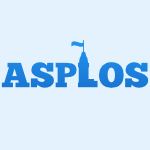 ASPLOS-2020-SriramanD #named
ASPLOS-2020-SriramanD #named- Accelerometer: Understanding Acceleration Opportunities for Data Center Overheads at Hyperscale (AS, AD), pp. 733–750.
 EDM-2019-NguyenWSM #component #game studies #learning #modelling #using
EDM-2019-NguyenWSM #component #game studies #learning #modelling #using- Using Knowledge Component Modeling to Increase Domain Understanding in a Digital Learning Game (HN, YW, JCS, BMM).
 ICPC-2019-BauerSPHA #matter #named #question
ICPC-2019-BauerSPHA #matter #named #question- Indentation: simply a matter of style or support for program comprehension? (JB, JS, NP, JCH, SA), pp. 154–164.
 ICPC-2019-FucciGNQL #lightweight #replication #using
ICPC-2019-FucciGNQL #lightweight #replication #using- A replication study on code comprehension and expertise using lightweight biometric sensors (DF, DG, NN, LQ, FL), pp. 311–322.
 ICPC-2019-LevyF #perspective #scalability
ICPC-2019-LevyF #perspective #scalability- Understanding large-scale software: a hierarchical view (OL, DGF), pp. 283–293.
 ICPC-2019-ZhouW0C0FHC #analysis #co-evolution #fine-grained
ICPC-2019-ZhouW0C0FHC #analysis #co-evolution #fine-grained- Understanding evolutionary coupling by fine-grained co-change relationship analysis (DZ, YW, LX0, YC, XP0, JF, LH, HC), pp. 271–282.
 ICSME-2019-AlOmar #developer #refactoring #towards
ICSME-2019-AlOmar #developer #refactoring #towards- Towards Better Understanding Developer Perception of Refactoring (EAA), pp. 624–628.
 ICSME-2019-Hanam0H #impact analysis #semantics
ICSME-2019-Hanam0H #impact analysis #semantics- Aiding Code Change Understanding with Semantic Change Impact Analysis (QH, AM0, RH), pp. 202–212.
 ICSME-2019-JohnsonLYAS #empirical #readability #source code
ICSME-2019-JohnsonLYAS #empirical #readability #source code- An Empirical Study Assessing Source Code Readability in Comprehension (JJ, SL, NY, JA, BS), pp. 513–523.
 ICSME-2019-YangW #identification
ICSME-2019-YangW #identification- Identifying the Within-Statement Changes to Facilitate Change Understanding (CY, JW), pp. 191–201.
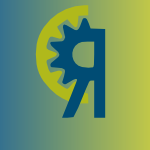 SANER-2019-GuoWWDYXZ #developer #mobile
SANER-2019-GuoWWDYXZ #developer #mobile- Systematic Comprehension for Developer Reply in Mobile System Forum (CG, WW, YW, ND, QY, JX0, SZ), pp. 242–252.
 SANER-2019-JbaraAAJY #interactive #named #visual notation
SANER-2019-JbaraAAJY #interactive #named #visual notation- ICSD: Interactive Visual Support for Understanding Code Control Structure (AJ, MA, AA, MJ, AY), pp. 644–648.
 SANER-2019-LuC00 #debugging #distributed
SANER-2019-LuC00 #debugging #distributed- Understanding Node Change Bugs for Distributed Systems (JL, LC, LL0, XF0), pp. 399–410.
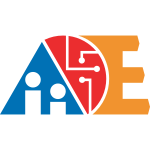 AIIDE-2019-KimRTS #natural language
AIIDE-2019-KimRTS #natural language- Cooperation and Codenames: Understanding Natural Language Processing via Codenames (AK, MR, AT, AS), pp. 160–166.
 CHI-PLAY-2019-HicksGDA #design #experience #game studies #visual notation
CHI-PLAY-2019-HicksGDA #design #experience #game studies #visual notation- Juicy Game Design: Understanding the Impact of Visual Embellishments on Player Experience (KH, KG, PD, VVA), pp. 185–197.
 CHI-PLAY-2019-WangLJRKM #case study #design #experience #towards
CHI-PLAY-2019-WangLJRKM #case study #design #experience #towards- Towards Understanding the Design of Playful Gustosonic Experiences with Ice Cream (YW, ZL, RSJ, AR, RAK, F'M), pp. 239–251.
 CHI-PLAY-2019-WohnJESSD #people #question #why
CHI-PLAY-2019-WohnJESSD #people #question #why- Understanding Digital Patronage: Why Do People Subscribe to Streamers on Twitch? (DYW, PJ, PE, JSSJ, MS, PD), pp. 99–110.
 CoG-2019-HicksGRPBD #gamification
CoG-2019-HicksGRPBD #gamification- Understanding the Effects of Gamification and Juiciness on Players (KH, KG, GR, TP, OB, PD), pp. 1–8.
 CoG-2019-TheodorouBB #game studies
CoG-2019-TheodorouBB #game studies- The Sustainability Game: AI Technology as an Intervention for Public Understanding of Cooperative Investment (AT, BBL, JJB), pp. 1–4.
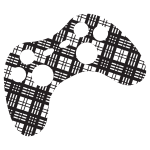 DiGRA-2019-HowellS #design #game studies
DiGRA-2019-HowellS #design #game studies- Epistemological Issues in Understanding Games Design, Play-Experience, and Reportage (PH, BS).
 DiGRA-2019-KordyakaJ0N #comparative #game studies #motivation #video
DiGRA-2019-KordyakaJ0N #comparative #game studies #motivation #video- The Comparative Self: Understanding the Motivation to Play and the Subsequent Video Game Use (BK, KJ, MM0, BN).
 FDG-2019-AcharyaW #collaboration #game studies
FDG-2019-AcharyaW #collaboration #game studies- Building worlds together: understanding collaborative co-creation of game worlds (DA, NWF), p. 5.
 FDG-2019-AndersonS #game studies #retrieval
FDG-2019-AndersonS #game studies #retrieval- Understanding user needs in videogame moment retrieval (BRA, AMS), p. 10.
 FDG-2019-OuelletteBC #analysis #design #education #game studies #using
FDG-2019-OuelletteBC #analysis #design #education #game studies #using- Using applied cognitive load theory and difficulty analysis for educational game design for understanding and transference of literacy skills in adults (MO, LB, CC), p. 11.
 ICGJ-2019-Kos #collaboration
ICGJ-2019-Kos #collaboration- Understanding Female-Focused Hackathon Participants' Collaboration Styles and Event Goals (BAK), p. 4.
 CIKM-2019-0009XWSWZG #behaviour #online
CIKM-2019-0009XWSWZG #behaviour #online- Understanding Default Behavior in Online Lending (YY0, YX, CW, YS, FW, YZ, MG), pp. 2043–2052.
 CIKM-2019-JonesWN #social #web
CIKM-2019-JonesWN #social #web- Social Cards Probably Provide For Better Understanding Of Web Archive Collections (SMJ, MCW, MLN), pp. 2023–2032.
 CIKM-2019-LiuQLZX #order
CIKM-2019-LiuQLZX #order- Machine Reading Comprehension: Matching and Orders (AL, LQ, JL, CZ, ZX), pp. 2057–2060.
 CIKM-2019-PaganelliSMI0
CIKM-2019-PaganelliSMI0 - Understanding Data in the Blink of an Eye (MP, PS, AM, MI, FG0), pp. 2885–2888.
 CIKM-2019-QianW0 #behaviour #modelling #named #process
CIKM-2019-QianW0 #behaviour #modelling #named #process- BePT: A Behavior-based Process Translator for Interpreting and Understanding Process Models (CQ, LW, AK0), pp. 1873–1882.
 CIKM-2019-XiaWY #learning #multi
CIKM-2019-XiaWY #learning #multi- Incorporating Relation Knowledge into Commonsense Reading Comprehension with Multi-task Learning (JX, CW, MY), pp. 2393–2396.
 CIKM-2019-ZhaoCY #e-commerce #learning #query
CIKM-2019-ZhaoCY #e-commerce #learning #query- A Dynamic Product-aware Learning Model for E-commerce Query Intent Understanding (JZ, HC, DY), pp. 1843–1852.
 ECIR-p1-2019-WangLT
ECIR-p1-2019-WangLT - Incorporating External Knowledge to Boost Machine Comprehension Based Question Answering (HW, WL, ZT), pp. 819–827.
 ICML-2019-AhmedR0S #optimisation #policy
ICML-2019-AhmedR0S #optimisation #policy- Understanding the Impact of Entropy on Policy Optimization (ZA, NLR, MN0, DS), pp. 151–160.
 ICML-2019-AllenH #towards #word
ICML-2019-AllenH #towards #word- Analogies Explained: Towards Understanding Word Embeddings (CA, TMH), pp. 223–231.
 ICML-2019-BrunetAAZ #bias #word
ICML-2019-BrunetAAZ #bias #word- Understanding the Origins of Bias in Word Embeddings (MEB, CAH, AA, RSZ), pp. 803–811.
 ICML-2019-ChenLCZ #network
ICML-2019-ChenLCZ #network- Understanding and Utilizing Deep Neural Networks Trained with Noisy Labels (PC, BL, GC, SZ), pp. 1062–1070.
 ICML-2019-GuanWZCH0 #modelling #towards
ICML-2019-GuanWZCH0 #modelling #towards- Towards a Deep and Unified Understanding of Deep Neural Models in NLP (CG, XW, QZ, RC, DH, XX0), pp. 2454–2463.
 ICML-2019-HavivRB #memory management #network
ICML-2019-HavivRB #memory management #network- Understanding and Controlling Memory in Recurrent Neural Networks (DH, AR, OB), pp. 2663–2671.
 ICML-2019-KayaHD #network
ICML-2019-KayaHD #network- Shallow-Deep Networks: Understanding and Mitigating Network Overthinking (YK, SH, TD), pp. 3301–3310.
 ICML-2019-LiuZ0
ICML-2019-LiuZ0 - Understanding MCMC Dynamics as Flows on the Wasserstein Space (CL0, JZ, JZ0), pp. 4093–4103.
 ICML-2019-LiuZCZ0
ICML-2019-LiuZCZ0 - Understanding and Accelerating Particle-Based Variational Inference (CL0, JZ, PC, RZ, JZ0), pp. 4082–4092.
 ICML-2019-MetzMNFS
ICML-2019-MetzMNFS - Understanding and correcting pathologies in the training of learned optimizers (LM, NM, JN, CDF, JSD), pp. 4556–4565.
 ICML-2019-PhuongL #towards
ICML-2019-PhuongL #towards- Towards Understanding Knowledge Distillation (MP, CL), pp. 5142–5151.
 ICML-2019-SinglaWFF #approximate #higher-order #learning
ICML-2019-SinglaWFF #approximate #higher-order #learning- Understanding Impacts of High-Order Loss Approximations and Features in Deep Learning Interpretation (SS0, EW, SF, SF), pp. 5848–5856.
 ICML-2019-VladimirovaVMA #network
ICML-2019-VladimirovaVMA #network- Understanding Priors in Bayesian Neural Networks at the Unit Level (MV, JV, PM, JA), pp. 6458–6467.
 ICML-2019-YeS #geometry
ICML-2019-YeS #geometry- Understanding Geometry of Encoder-Decoder CNNs (JCY, WKS), pp. 7064–7073.
 ICML-2019-ZhouLLLZZ #network #towards
ICML-2019-ZhouLLLZZ #network #towards- Toward Understanding the Importance of Noise in Training Neural Networks (MZ, TL, YL, DL, EZ, TZ), pp. 7594–7602.
 KDD-2019-Chien #learning #mining
KDD-2019-Chien #learning #mining- Deep Bayesian Mining, Learning and Understanding (JTC), pp. 3197–3198.
 KDD-2019-JiangSHHH #e-commerce
KDD-2019-JiangSHHH #e-commerce- Understanding the Role of Style in E-commerce Shopping (HJ, AS, AH, DH, LH), pp. 3112–3120.
 KDD-2019-LiuGNWXLLX #concept #documentation #mining #query
KDD-2019-LiuGNWXLLX #concept #documentation #mining #query- A User-Centered Concept Mining System for Query and Document Understanding at Tencent (BL, WG, DN, CW, SX, JL, KL, YX), pp. 1831–1841.
 KDD-2019-MaZXLCXWW #framework #scalability
KDD-2019-MaZXLCXWW #framework #scalability- Large-scale User Visits Understanding and Forecasting with Deep Spatial-Temporal Tensor Factorization Framework (XM, LZ, LX, ZL, GC, ZX, YW, ZW), pp. 2403–2411.
 KDD-2019-SpiliopoulouP #mining
KDD-2019-SpiliopoulouP #mining- Mining and Model Understanding on Medical Data (MS, PP), pp. 3223–3224.
 KDD-2019-ZhouMGBB #network #using
KDD-2019-ZhouMGBB #network #using- Understanding Consumer Journey using Attention based Recurrent Neural Networks (YZ, SM, JG, TB, NB), pp. 3102–3111.
 ASE-2019-CashinMWF #difference #invariant
ASE-2019-CashinMWF #difference #invariant- Understanding Automatically-Generated Patches Through Symbolic Invariant Differences (PC, CM, WW, SF), pp. 411–414.
 ASE-2019-ChenD0Q #debugging #scalability
ASE-2019-ChenD0Q #debugging #scalability- Understanding Exception-Related Bugs in Large-Scale Cloud Systems (HC, WD, YJ0, FQ), pp. 339–351.
 ASE-2019-Yu19a #crowdsourcing #debugging #generative
ASE-2019-Yu19a #crowdsourcing #debugging #generative- Crowdsourced Report Generation via Bug Screenshot Understanding (SY), pp. 1277–1279.
 ASE-2019-ZhouWLLS0 #fuzzing #interactive #named #visualisation
ASE-2019-ZhouWLLS0 #fuzzing #interactive #named #visualisation- VisFuzz: Understanding and Intervening Fuzzing with Interactive Visualization (CZ, MW, JL, ZL, CS, YJ0), pp. 1078–1081.
 ESEC-FSE-2019-DobrigkeitP #design #re-engineering
ESEC-FSE-2019-DobrigkeitP #design #re-engineering- Design thinking in practice: understanding manifestations of design thinking in software engineering (FD, DdP), pp. 1059–1069.
 ESEC-FSE-2019-EckPCB #developer #perspective #testing
ESEC-FSE-2019-EckPCB #developer #perspective #testing- Understanding flaky tests: the developer's perspective (ME, FP, MC, AB), pp. 830–840.
 ESEC-FSE-2019-He #scalability #source code
ESEC-FSE-2019-He #scalability #source code- Understanding source code comments at large-scale (HH), pp. 1217–1219.
 ESEC-FSE-2019-He19a #debugging #detection #fault #performance
ESEC-FSE-2019-He19a #debugging #detection #fault #performance- Tuning backfired? not (always) your fault: understanding and detecting configuration-related performance bugs (HH), pp. 1229–1231.
 ESEC-FSE-2019-KrugerCBLS #traceability
ESEC-FSE-2019-KrugerCBLS #traceability- Effects of explicit feature traceability on program comprehension (JK, GÇ, TB, TL, GS), pp. 338–349.
 ESEC-FSE-2019-RiggerMAM #tool support
ESEC-FSE-2019-RiggerMAM #tool support- Understanding GCC builtins to develop better tools (MR, SM, BA, HM), pp. 74–85.
 ESEC-FSE-2019-ZhangSYZPS #debugging #model checking
ESEC-FSE-2019-ZhangSYZPS #debugging #model checking- Finding and understanding bugs in software model checkers (CZ, TS, YY, FZ, GP, ZS), pp. 763–773.
- ICSE-2019-BaeLR #android #reasoning #towards
- Towards understanding and reasoning about Android interoperations (SB, SL, SR), pp. 223–233.
 ASPLOS-2019-TuLSZ #concurrent #debugging
ASPLOS-2019-TuLSZ #concurrent #debugging- Understanding Real-World Concurrency Bugs in Go (TT, XL, LS, YZ), pp. 865–878.
 CGO-2019-NelsonP #behaviour
CGO-2019-NelsonP #behaviour- Understanding RDMA Behavior in NUMA Systems (JN, RP), pp. 273–274.
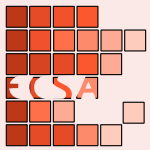 ECSA-2018-PowerW #architecture #case study #industrial
ECSA-2018-PowerW #architecture #case study #industrial- Understanding Architecture Decisions in Context - An Industry Case Study of Architects' Decision-Making Context (KP, RWB), pp. 284–299.
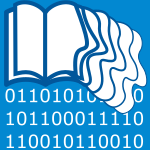 JCDL-2018-McKennaDO #library #linked data #open data #overview
JCDL-2018-McKennaDO #library #linked data #open data #overview- Understanding the Position of Information Professionals with regards to Linked Data: A Survey of Libraries, Archives and Museums (LM, CD, DO), pp. 7–16.
 EDM-2018-CruesBAPBS #what
EDM-2018-CruesBAPBS #what- Who they are and what they want: Understanding the reasons for MOOC enrollment (RWC, NB, CJA, MP, SB, NS).
 EDM-2018-NandaHWDG #modelling #online #topic #using
EDM-2018-NandaHWDG #modelling #online #topic #using- Understanding Learners' Opinion about Participation Certificates in Online Courses using Topic Modeling (GN, NMH, DRW, KAD, DG).
 EDM-2018-ParkYRBSW #modelling #student
EDM-2018-ParkYRBSW #modelling #student- Understanding Student Procrastination via Mixture Models (JP, RY, FR, RB, PS, MW).
 ICPC-2018-0001LYC #mobile #what
ICPC-2018-0001LYC #mobile #what- What's inside my app?: understanding feature redundancy in mobile apps (YG0, YL, ZY, XC), pp. 266–276.
 ICPC-2018-FengDJD #abstraction #execution
ICPC-2018-FengDJD #abstraction #execution- Hierarchical abstraction of execution traces for program comprehension (YF, KD, JAJ, AvD), pp. 86–96.
 ICPC-2018-Ko #challenge #mining
ICPC-2018-Ko #challenge #mining- Mining the mind, minding the mine: grand challenges in comprehension and mining (AJK0), p. 1.
 ICPC-2018-LiVLP #testing
ICPC-2018-LiVLP #testing- Aiding comprehension of unit test cases and test suites with stereotype-based tagging (BL, CV, MLV, DP), pp. 52–63.
 ICPC-2018-MoranBLP #development #effectiveness #mobile #towards
ICPC-2018-MoranBLP #development #effectiveness #mobile #towards- Overcoming language dichotomies: toward effective program comprehension for mobile app development (KM, CBC, MLV, DP), pp. 7–18.
 ICPC-2018-PorkolabB #framework
ICPC-2018-PorkolabB #framework- The codecompass comprehension framework (ZP, TB), pp. 393–396.
 ICPC-2018-PorkolabBKC #framework #industrial #named
ICPC-2018-PorkolabBKC #framework #industrial #named- Codecompass: an open software comprehension framework for industrial usage (ZP, TB, DK, MC), pp. 361–369.
 ICPC-2018-SchankinBHHRB #identifier #source code
ICPC-2018-SchankinBHHRB #identifier #source code- Descriptive compound identifier names improve source code comprehension (AS, AB, DVH, JCH, TR, MB), pp. 31–40.
 ICSME-2018-KochharSCSN #case study #development #industrial
ICSME-2018-KochharSCSN #case study #development #industrial- Understanding the Role of Reporting in Work Item Tracking Systems for Software Development: An Industrial Case Study (PSK, SS, TC, HS, MN), pp. 605–614.
 ICSME-2018-LebeufVHS #debugging #design #distributed #optimisation
ICSME-2018-LebeufVHS #debugging #design #distributed #optimisation- Understanding, Debugging, and Optimizing Distributed Software Builds: A Design Study (CL, EV, KH, MADS), pp. 496–507.
 ICSME-2018-Sulir #runtime #source code
ICSME-2018-Sulir #runtime #source code- Integrating Runtime Values with Source Code to Facilitate Program Comprehension (MS), pp. 743–748.
 MSR-2018-JinS #code completion #performance #recommendation
MSR-2018-JinS #code completion #performance #recommendation- The hidden cost of code completion: understanding the impact of the recommendation-list length on its efficiency (XJ, FS), pp. 70–73.
 MSR-2018-Ko #challenge #mining
MSR-2018-Ko #challenge #mining- Mining the mind, minding the mine: grand challenges in comprehension and mining (AJK0), p. 118.
 MSR-2018-Meloca0BMPWG
MSR-2018-Meloca0BMPWG - Understanding the usage, impact, and adoption of non-OSI approved licenses (RMM, GP0, LB, MM, IP, ISW, DMG), pp. 270–280.
 MSR-2018-Rahman #process #programming #question
MSR-2018-Rahman #process #programming #question- Comprehension effort and programming activities: related? or not related? (AR), pp. 66–69.
 SANER-2018-JiaLLLL #fault #named
SANER-2018-JiaLLLL #fault #named- SMARTLOG: Place error log statement by deep understanding of log intention (ZJ, SL, XL, XL, YL), pp. 61–71.
 AIIDE-2018-Ontanon #game studies #named #natural language #prototype
AIIDE-2018-Ontanon #game studies #named #natural language #prototype- SHRDLU: A Game Prototype Inspired by Winograd's Natural Language Understanding Work (SO), pp. 268–270.
 AIIDE-2018-ThueB #experience #towards
AIIDE-2018-ThueB #experience #towards- Toward a Unified Understanding of Experience Management (DT, VB), pp. 130–137.
 AIIDE-2018-ZhangV #modelling
AIIDE-2018-ZhangV #modelling- Modelling Player Understanding of Non-Player Character Paths (MXZ, CV), pp. 257–264.
 CHI-PLAY-2018-AndresHM #design #towards
CHI-PLAY-2018-AndresHM #design #towards- “I had super-powers when eBike riding” Towards Understanding the Design of Integrated Exertion (JA, JdH, F'M), pp. 19–31.
 CHI-PLAY-2018-MehtaKPM #case study #design #experience #named #towards
CHI-PLAY-2018-MehtaKPM #case study #design #experience #named #towards- Arm-A-Dine: Towards Understanding the Design of Playful Embodied Eating Experiences (YDM, RAK, RP, F'M), pp. 299–313.
 DiGRA-2018-Cumming #experience
DiGRA-2018-Cumming #experience- Understanding the experience of Australian eSports spectatorship (DC).
 DiGRA-2018-JahnM #towards
DiGRA-2018-JahnM #towards- An Inclusive Perspective on Gameplay: Towards a wide understanding of gameplay in theory and praxis (BJ, SM).
 FDG-2018-BalintAB #metric #similarity
FDG-2018-BalintAB #metric #similarity- Understanding everything NPCs can do: metrics for action similarity in non-player characters (JTB, JMA, RB), p. 10.
 VS-Games-2018-AndersonTRLWSTS #education
VS-Games-2018-AndersonTRLWSTS #education- Understanding Esports as a STEM Career Ready Curriculum in the Wild (CGA, AMT, JR, JSL, MW, HS, TT, CS), pp. 1–6.
 VS-Games-2018-OhmotoTN #using
VS-Games-2018-OhmotoTN #using- Improving Context Understanding Using Avatar's Affective Expressions Reflecting Operator's Mental States (YO, ST, TN), pp. 1–4.
 CIKM-2018-JiangGYGTL #evolution
CIKM-2018-JiangGYGTL #evolution- Mathematics Content Understanding for Cyberlearning via Formula Evolution Map (ZJ, LG, KY, ZG, ZT, XL), pp. 37–46.
 CIKM-2018-KimLCCK #learning #scheduling
CIKM-2018-KimLCCK #learning #scheduling- Learning User Preferences and Understanding Calendar Contexts for Event Scheduling (DK, JL, DC, JC, JK), pp. 337–346.
 CIKM-2018-KimLFL #web
CIKM-2018-KimLFL #web- Web Table Understanding by Collective Inference (SK, GL0, JF, KL), pp. 217–226.
 CIKM-2018-LiLMHZM
CIKM-2018-LiLMHZM - Understanding Reading Attention Distribution during Relevance Judgement (XL, YL, JM, ZH, MZ0, SM), pp. 733–742.
 CIKM-2018-LinLL
CIKM-2018-LinLL - An Option Gate Module for Sentence Inference on Machine Reading Comprehension (XL, RL, YL), pp. 1743–1746.
 CIKM-2018-MundraKSM #mining
CIKM-2018-MundraKSM #mining- Mining & Summarizing E-petitions for Enhanced Understanding of Public Opinion (SM, SK, MS, SM), pp. 1695–1698.
 CIKM-2018-NishidaSOAT #information retrieval #learning #multi #named
CIKM-2018-NishidaSOAT #information retrieval #learning #multi #named- Retrieve-and-Read: Multi-task Learning of Information Retrieval and Reading Comprehension (KN, IS, AO, HA, JT), pp. 647–656.
 CIKM-2018-NobariAHN #identification #query
CIKM-2018-NobariAHN #identification #query- Query Understanding via Entity Attribute Identification (ADN, AA, FH, MN), pp. 1759–1762.
 CIKM-2018-ScellsZ #named #query #visualisation
CIKM-2018-ScellsZ #named #query #visualisation- searchrefiner: A Query Visualisation and Understanding Tool for Systematic Reviews (HS, GZ), pp. 1939–1942.
 CIKM-2018-YangGC #e-commerce #perspective #query
CIKM-2018-YangGC #e-commerce #perspective #query- Query Tracking for E-commerce Conversational Search: A Machine Comprehension Perspective (YY, YG, XC), pp. 1755–1758.
 CIKM-2018-ZhaoX0ZLZ #approach #learning #on the #predict
CIKM-2018-ZhaoX0ZLZ #approach #learning #on the #predict- On Prediction of User Destination by Sub-Trajectory Understanding: A Deep Learning based Approach (JZ, JX, RZ0, PZ, CL, FZ), pp. 1413–1422.
 ECIR-2018-GarigliottiB #towards
ECIR-2018-GarigliottiB #towards- Towards an Understanding of Entity-Oriented Search Intents (DG, KB), pp. 644–650.
 ICML-2018-BenderKZVL #architecture
ICML-2018-BenderKZVL #architecture- Understanding and Simplifying One-Shot Architecture Search (GB, PJK, BZ, VV, QVL), pp. 549–558.
 ICML-2018-GreydanusKDF #visualisation
ICML-2018-GreydanusKDF #visualisation- Visualizing and Understanding Atari Agents (SG, AK, JD, AF), pp. 1787–1796.
 ICML-2018-LiangSLS #classification #network
ICML-2018-LiangSLS #classification #network- Understanding the Loss Surface of Neural Networks for Binary Classification (SL, RS, YL, RS), pp. 2840–2849.
 ICML-2018-MaBB #effectiveness #learning #power of
ICML-2018-MaBB #effectiveness #learning #power of- The Power of Interpolation: Understanding the Effectiveness of SGD in Modern Over-parametrized Learning (SM, RB, MB), pp. 3331–3340.
 ICML-2018-ZhouF #optimisation #performance
ICML-2018-ZhouF #optimisation #performance- Understanding Generalization and Optimization Performance of Deep CNNs (PZ, JF), pp. 5955–5964.
 ICPR-2018-VinayavekhinCMA #learning #using #what
ICPR-2018-VinayavekhinCMA #learning #using #what- Focusing on What is Relevant: Time-Series Learning and Understanding using Attention (PV, SC, AM, DJA, GDM, DK, RT), pp. 2624–2629.
 KDD-2018-LeeAVN #collaboration #learning #metric #video
KDD-2018-LeeAVN #collaboration #learning #metric #video- Collaborative Deep Metric Learning for Video Understanding (JL, SAEH, BV, AN), pp. 481–490.
 KDD-2018-RaoTL #framework #learning #multi #network #platform #query
KDD-2018-RaoTL #framework #learning #multi #network #platform #query- Multi-Task Learning with Neural Networks for Voice Query Understanding on an Entertainment Platform (JR, FT, JL), pp. 636–645.
 ECMFA-2018-LeroyBMCW #domain-specific language #execution
ECMFA-2018-LeroyBMCW #domain-specific language #execution- Trace Comprehension Operators for Executable DSLs (DL, EB, AM, BC, MW), pp. 293–310.
 OOPSLA-2018-OuD #cost analysis #towards
OOPSLA-2018-OuD #cost analysis #towards- Towards understanding the costs of avoiding out-of-thin-air results (PO, BD), p. 29.
 PLATEAU-2018-Lemay #git #java #mining #repository #usability
PLATEAU-2018-Lemay #git #java #mining #repository #usability- Understanding Java Usability by Mining GitHub Repositories (MJL), p. 9.
 ASE-2018-AcciolyBC #java #open source
ASE-2018-AcciolyBC #java #open source- Understanding Semi-structured merge conflict characteristics in open-source Java projects (journal-first abstract) (PRGA, PB, GC), p. 955.
 ASE-2018-He0WZLX #android #detection
ASE-2018-He0WZLX #android #detection- Understanding and detecting evolution-induced compatibility issues in Android apps (DH, LL0, LW, HZ, GL, JX), pp. 167–177.
 ASE-2018-HuangWLC #android #detection
ASE-2018-HuangWLC #android #detection- Understanding and detecting callback compatibility issues for Android applications (HH, LW, YL, SCC), pp. 532–542.
 ASE-2018-TangZPAM0Z #execution #named
ASE-2018-TangZPAM0Z #execution #named- Dual-force: understanding WebView malware via cross-language forced execution (ZT, JZ, MP, YA, SM, XZ0, JZ), pp. 714–725.
 ESEC-FSE-2018-Fakhoury #metric #towards
ESEC-FSE-2018-Fakhoury #metric #towards- Moving towards objective measures of program comprehension (SF), pp. 936–939.
 ESEC-FSE-2018-FedorovaMBRWMY #performance
ESEC-FSE-2018-FedorovaMBRWMY #performance- Performance comprehension at WiredTiger (AF, CM, IB, JR, AW, SM, LY), pp. 83–94.
 ESEC-FSE-2018-HenkelLLR #embedded #source code
ESEC-FSE-2018-HenkelLLR #embedded #source code- Code vectors: understanding programs through embedded abstracted symbolic traces (JH, SKL, BL, TWR), pp. 163–174.
- ICSE-2018-ArmalyRM #comparison
- A comparison of program comprehension strategies by blind and sighted programmers (AA, PR, CM), p. 788.
- ICSE-2018-LabunetsMPMO #assessment #comparison #empirical #risk management #security #visual notation
- Model comprehension for security risk assessment: an empirical comparison of tabular vs. graphical representations (KL, FM, FP, SM, FMdO), p. 395.
- ICSE-2018-PatraDP #javascript #library #named
- ConflictJS: finding and understanding conflicts between JavaScript libraries (JP, PND, MP), pp. 741–751.
- ICSE-2018-SawantADB #developer
- Understanding developers' needs on deprecation as a language feature (AAS, MFA, AvD, AB), pp. 561–571.
- ICSE-2018-WangCH #empirical #performance #stack
- Understanding the factors for fast answers in technical Q&A websites: an empirical study of four stack exchange websites (SW0, THC, AEH), p. 884.
- ICSE-2018-XiaBLXHL #case study #scalability
- Measuring program comprehension: a large-scale field study with professionals (XX0, LB, DL0, ZX, AEH, SL), p. 584.
 ASPLOS-2018-WangLHLSK
ASPLOS-2018-WangLHLSK - Understanding and Auto-Adjusting Performance-Sensitive Configurations (SW, CL, HH, SL, WS, AIK), pp. 154–168.
 CAV-2018-RabeTRS #incremental
CAV-2018-RabeTRS #incremental- Understanding and Extending Incremental Determinization for 2QBF (MNR, LT, CR, SAS), pp. 256–274.
 ICSA-2017-SantosPMGVS #architecture #empirical #php #security
ICSA-2017-SantosPMGVS #architecture #empirical #php #security- Understanding Software Vulnerabilities Related to Architectural Security Tactics: An Empirical Investigation of Chromium, PHP and Thunderbird (JCSS, AP, MM, MG, JVV, AS), pp. 69–78.
 JCDL-2017-SinghJSPMG
JCDL-2017-SinghJSPMG - Understanding the Impact of Early Citers on Long-Term Scientific Impact (MS0, AJ, PS, AP, AM0, PG), pp. 59–68.
 EDM-2017-BalyanMM #approach #machine learning #natural language
EDM-2017-BalyanMM #approach #machine learning #natural language- Combining Machine Learning and Natural Language Processing Approach to Assess Literary Text Comprehension (RB, KSM, DSM).
 EDM-2017-ParedesHH #behaviour #programming #student #using
EDM-2017-ParedesHH #behaviour #programming #student #using- Understanding Student's Reviewing and Reflection Behaviors Using Web-based Programming Grading Assistant (YVMP, PKH, SIHH).
 ICPC-2017-AvidanF #empirical
ICPC-2017-AvidanF #empirical- Effects of variable names on comprehension an empirical study (EA, DGF), pp. 55–65.
 ICPC-2017-AzadmaneshHV #data flow #independence #tool support
ICPC-2017-AzadmaneshHV #data flow #independence #tool support- Language-independent information flow tracking engine for program comprehension tools (MRA, MH, MLVdV), pp. 346–355.
 ICPC-2017-JansenH #empirical #spreadsheet
ICPC-2017-JansenH #empirical #spreadsheet- The effect of delocalized plans on spreadsheet comprehension: a controlled experiment (BJ, FH), pp. 286–296.
 ICPC-2017-SaboridoKAG #android #question
ICPC-2017-SaboridoKAG #android #question- Comprehension of ads-supported and paid Android applications: are they different? (RS, FK, GA, YGG), pp. 143–153.
 ICPC-2017-SchroterKSL
ICPC-2017-SchroterKSL - Comprehending studies on program comprehension (IS, JK, JS, TL), pp. 308–311.
 ICPC-2017-ValdecantosTMC #empirical #interactive #object-oriented
ICPC-2017-ValdecantosTMC #empirical #interactive #object-oriented- An empirical study on code comprehension: data context interaction compared to classical object oriented (HAV, KT, MM, JOC), pp. 275–285.
 ICSME-2017-CaiR #android #programming #security
ICSME-2017-CaiR #android #programming #security- Understanding Android Application Programming and Security: A Dynamic Study (HC, BGR), pp. 364–375.
 ICSME-2017-TreudeR #stack overflow
ICSME-2017-TreudeR #stack overflow- Understanding Stack Overflow Code Fragments (CT, MPR), pp. 509–513.
 ICSME-2017-Xu #evolution #spreadsheet
ICSME-2017-Xu #evolution #spreadsheet- Understanding Spreadsheet Evolution in Practice (LX), pp. 670–674.
 MSR-2017-GonzalezSPMN #maintenance #scalability #testing
MSR-2017-GonzalezSPMN #maintenance #scalability #testing- A large-scale study on the usage of testing patterns that address maintainability attributes: patterns for ease of modification, diagnoses, and comprehension (DG, JCSS, AP, MM, MN), pp. 391–401.
 MSR-2017-WatanabeAKSTSIS #metric #mobile #scalability
MSR-2017-WatanabeAKSTSIS #metric #mobile #scalability- Understanding the origins of mobile app vulnerabilities: a large-scale measurement study of free and paid apps (TW0, MA, FK, ES, YT, BS, YI, TS, TY, TM), pp. 14–24.
 SANER-2017-KandaGHM #analysis #open source #towards
SANER-2017-KandaGHM #analysis #open source #towards- Towards understanding an open-source bounty: Analysis of Bountysource (TK0, MG, HH, KiM), pp. 577–578.
 SANER-2017-Omori
SANER-2017-Omori - Lost comments support program comprehension (TO), pp. 567–568.
 CHI-PLAY-2017-BarinDT #analysis #game studies
CHI-PLAY-2017-BarinDT #analysis #game studies- Understanding Dangerous Play: A Grounded Theory Analysis of High-Performance Drone Racing Crashes (AB, ID, ZOT), pp. 485–496.
 CHI-PLAY-2017-HartIAOM #game studies #safety
CHI-PLAY-2017-HartIAOM #game studies #safety- Understanding Engagement within the Context of a Safety Critical Game (JH, II, AA, MO, MM), pp. 253–264.
 CHI-PLAY-2017-PatibandaMLD #design #game studies
CHI-PLAY-2017-PatibandaMLD #design #game studies- Life Tree: Understanding the Design of Breathing Exercise Games (RP, F'M, ML, JD), pp. 19–31.
 FDG-2017-MelcerI #game studies #research #towards
FDG-2017-MelcerI #game studies #research #towards- Toward understanding disciplinary divides within games research (EFM, KI), p. 4.
 FDG-2017-SummervilleMSOL #design #evaluation #metric #platform
FDG-2017-SummervilleMSOL #design #evaluation #metric #platform- Understanding mario: an evaluation of design metrics for platformers (AS, JRHM, SS, SO, LHSL), p. 10.
 VS-Games-2017-Philbin-Briscoe #game studies
VS-Games-2017-Philbin-Briscoe #game studies- A serious game for understanding ancient seafaring in the Mediterranean sea (OPB, BS, SPM, CP, SR, DB, FL, IK, SD, DS), pp. 1–5.
 CIKM-2017-CaoSCOC #named #predict
CIKM-2017-CaoSCOC #named #predict- DeepHawkes: Bridging the Gap between Prediction and Understanding of Information Cascades (QC, HS, KC, WO, XC), pp. 1149–1158.
 CIKM-2017-WangDYT #mobile #network #predict #social
CIKM-2017-WangDYT #mobile #network #predict #social- Understanding and Predicting Weight Loss with Mobile Social Networking Data (ZW, TD, DY, JT), pp. 1269–1278.
 CIKM-2017-WangXYZ0Z
CIKM-2017-WangXYZ0Z - Integrating Side Information for Boosting Machine Comprehension (YW, YX, MY0, ZZ, JX0, YZ), pp. 2355–2358.
 CIKM-2017-YanCYL #database #performance #web
CIKM-2017-YanCYL #database #performance #web- Understanding Database Performance Inefficiencies in Real-world Web Applications (CY, AC, JY, SL), pp. 1299–1308.
 CIKM-2017-ZhuangDT #behaviour
CIKM-2017-ZhuangDT #behaviour- Understanding Engagement through Search Behaviour (MZ, GD, EGT), pp. 1957–1966.
 ICML-2017-CzarneckiSJOVK #interface
ICML-2017-CzarneckiSJOVK #interface- Understanding Synthetic Gradients and Decoupled Neural Interfaces (WMC, GS, MJ, SO, OV, KK), pp. 904–912.
 ICML-2017-KohL #black box #predict
ICML-2017-KohL #black box #predict- Understanding Black-box Predictions via Influence Functions (PWK, PL), pp. 1885–1894.
 ICML-2017-NagamineM #case study #multi #recognition #representation #speech
ICML-2017-NagamineM #case study #multi #recognition #representation #speech- Understanding the Representation and Computation of Multilayer Perceptrons: A Case Study in Speech Recognition (TN, NM), pp. 2564–2573.
 KDD-2017-ChojnackiDFSWZA #approach
KDD-2017-ChojnackiDFSWZA #approach- A Data Science Approach to Understanding Residential Water Contamination in Flint (AC, CD, AF, GS, JW, DTZ, JDA, EMS), pp. 1407–1416.
 KDD-2017-ShenHGC #learning #named
KDD-2017-ShenHGC #learning #named- ReasoNet: Learning to Stop Reading in Machine Comprehension (YS, PSH, JG, WC), pp. 1047–1055.
 KDD-2017-YinCZ #design #named #network #sequence
KDD-2017-YinCZ #design #named #network #sequence- DeepProbe: Information Directed Sequence Understanding and Chatbot Design via Recurrent Neural Networks (ZY, KhC, RZ), pp. 2131–2139.
 OOPSLA-2017-MazinanianKTD #java #using
OOPSLA-2017-MazinanianKTD #java #using- Understanding the use of lambda expressions in Java (DM, AK, NT, DD), p. 31.
 ASE-2017-ChapmanWS #regular expression
ASE-2017-ChapmanWS #regular expression- Exploring regular expression comprehension (CC, PW, KTS), pp. 405–416.
 ASE-2017-PintoCCXL #parallel
ASE-2017-PintoCCXL #parallel- Understanding and overcoming parallelism bottlenecks in ForkJoin applications (GP0, AC, FC, G(X, YDL), pp. 765–775.
 ASE-2017-ShiCWLB #analysis #feature model #fuzzy
ASE-2017-ShiCWLB #analysis #feature model #fuzzy- Understanding feature requests by leveraging fuzzy method and linguistic analysis (LS, CC, QW0, SL, BWB), pp. 440–450.
 ESEC-FSE-2017-CedrimGMGSMFRC #refactoring #smell
ESEC-FSE-2017-CedrimGMGSMFRC #refactoring #smell- Understanding the impact of refactoring on smells: a longitudinal study of 23 software projects (DC, AG, MM, RG, LdSS, RMdM, BF, MR, AC), pp. 465–475.
 ESEC-FSE-2017-GarciaG #agile
ESEC-FSE-2017-GarciaG #agile- Improving understanding of dynamically typed software developed by agile practitioners (JG, KG), pp. 908–913.
 ESEC-FSE-2017-GopsteinIYDZYC #source code
ESEC-FSE-2017-GopsteinIYDZYC #source code- Understanding misunderstandings in source code (DG, JI, YY, LD, YZ, MKCY, JC), pp. 129–139.
 ESEC-FSE-2017-MartieHK #code search
ESEC-FSE-2017-MartieHK #code search- Understanding the impact of support for iteration on code search (LM, AvdH, TK), pp. 774–785.
 ESEC-FSE-2017-NunezMR #named
ESEC-FSE-2017-NunezMR #named- ARCC: assistant for repetitive code comprehension (WZN, VJM, CRR), pp. 999–1003.
 ESEC-FSE-2017-SiegmundPPAHKBB #performance
ESEC-FSE-2017-SiegmundPPAHKBB #performance- Measuring neural efficiency of program comprehension (JS, NP, CP, SA, JH, CK, AB, AB, AB), pp. 140–150.
- ICSE-2017-LeeCB #overview
- Understanding the impressions, motivations, and barriers of one time code contributors to FLOSS projects: a survey (AL, JCC, AB), pp. 187–197.
- ICSE-2017-XuCCLS #analysis #named #security #towards
- SPAIN: security patch analysis for binaries towards understanding the pain and pills (ZX, BC0, MC, YL0, FS), pp. 462–472.
 JCDL-2016-KhabsaWG #towards
JCDL-2016-KhabsaWG #towards- Towards Better Understanding of Academic Search (MK, ZW0, CLG), pp. 111–114.
 CSEET-2016-SrinivasanLY #diagrams #object-oriented #programming #sequence chart #using
CSEET-2016-SrinivasanLY #diagrams #object-oriented #programming #sequence chart #using- Enhancing Object-Oriented Programming Comprehension Using Optimized Sequence Diagram (MS, YL, JY), pp. 81–85.
 EDM-2016-BarmakiH #coordination #education #gesture #towards
EDM-2016-BarmakiH #coordination #education #gesture #towards- Towards the Understanding of Gestures and Vocalization Coordination in Teaching Context (RB, CEH), pp. 663–665.
 EDM-2016-LiB
EDM-2016-LiB - Understanding Engagement in MOOCs (QL, RB), pp. 605–606.
 ICPC-2016-PetrilloSKPFG #debugging #framework #interactive
ICPC-2016-PetrilloSKPFG #debugging #framework #interactive- Understanding interactive debugging with Swarm Debug Infrastructure (FP, ZS, FK, MSP, CMDSF, YGG), pp. 1–4.
 ICPC-2016-SinghPSK #case study #technical debt
ICPC-2016-SinghPSK #case study #technical debt- A case study of program comprehension effort and technical debt estimations (VS, LLP, WS, NAK), pp. 1–9.
 ICPC-2016-SrinivasanYL #case study #diagrams #sequence chart
ICPC-2016-SrinivasanYL #case study #diagrams #sequence chart- Case studies of optimized sequence diagram for program comprehension (MS, JY, YL), pp. 1–4.
 ICSME-2016-BorgesHV #git #repository
ICSME-2016-BorgesHV #git #repository- Understanding the Factors That Impact the Popularity of GitHub Repositories (HB, ACH, MTV), pp. 334–344.
 ICSME-2016-KhourySH #principle #using
ICSME-2016-KhourySH #principle #using- Key Elements Extraction and Traces Comprehension Using Gestalt Theory and the Helmholtz Principle (RK, LS, AHL), pp. 478–482.
 ICSME-2016-KirchmayrMNPT #analysis #integration #legacy #source code
ICSME-2016-KirchmayrMNPT #analysis #integration #legacy #source code- Integration of Static and Dynamic Code Analysis for Understanding Legacy Source Code (WK, MM, LN, JP, RT), pp. 543–552.
 ICSME-2016-LudemannASV #complexity #variability
ICSME-2016-LudemannASV #complexity #variability- Understanding Variable Code: Reducing the Complexity by Integrating Variability Information (DL, NA, KS, CV), pp. 312–322.
 MSR-2016-SenaCKB #empirical #exception #java #library
MSR-2016-SenaCKB #empirical #exception #java #library- Understanding the exception handling strategies of Java libraries: an empirical study (DS, RC, UK, RB), pp. 212–222.
 SANER-2016-HuZLG #architecture #comparison #semantics
SANER-2016-HuZLG #architecture #comparison #semantics- Cross-Architecture Binary Semantics Understanding via Similar Code Comparison (YH, YZ0, JL, DG), pp. 57–67.
 DiGRA-FDG-2016-Harrington
DiGRA-FDG-2016-Harrington - 4x Gamer as Myth: Understanding through Player Mythologies (JH).
 DiGRA-FDG-2016-MuscatGDH #design #experience
DiGRA-FDG-2016-MuscatGDH #design #experience- First-Person Walkers: Understanding the Walker Experience through Four Design Themes (AM, WG, JD, JH).
 VS-Games-2016-JiangCDJYZ #game studies #process #prototype #safety
VS-Games-2016-JiangCDJYZ #game studies #process #prototype #safety- Game Prototype for Understanding Safety Issues of Life Boat Launching Process (MJ0, JC, MD, JJ, HjY, JJZ0), pp. 1–8.
 CIKM-2016-LagunMN #mobile
CIKM-2016-LagunMN #mobile- Understanding Mobile Searcher Attention with Rich Ad Formats (DL, DM, VN), pp. 599–608.
 CIKM-2016-LinZC #probability #topic
CIKM-2016-LinZC #probability #topic- Understanding Sparse Topical Structure of Short Text via Stochastic Variational-Gibbs Inference (TL, SZ, HC), pp. 407–416.
 CIKM-2016-UfimtsevSMB #metric #network
CIKM-2016-UfimtsevSMB #metric #network- Understanding Stability of Noisy Networks through Centrality Measures and Local Connections (VU, SS, AM0, SB), pp. 2347–2352.
 ICML-2016-ShangSAL #linear #network
ICML-2016-ShangSAL #linear #network- Understanding and Improving Convolutional Neural Networks via Concatenated Rectified Linear Units (WS, KS, DA, HL), pp. 2217–2225.
 ICML-2016-ZahavyBM #black box
ICML-2016-ZahavyBM #black box- Graying the black box: Understanding DQNs (TZ, NBZ, SM), pp. 1899–1908.
 ICPR-2016-NahaW
ICPR-2016-NahaW - Beyond verbs: Understanding actions in videos with text (SN, YW0), pp. 1833–1838.
 ICPR-2016-SouzaSC #learning #semantics
ICPR-2016-SouzaSC #learning #semantics- Building semantic understanding beyond deep learning from sound and vision (FDMdS, SS, GCC), pp. 2097–2102.
 KDD-2016-LoFL #behaviour #case study
KDD-2016-LoFL #behaviour #case study- Understanding Behaviors that Lead to Purchasing: A Case Study of Pinterest (CL, DF, JL), pp. 531–540.
 ECMFA-2016-ZhangSAYON #concept #cyber-physical #nondeterminism
ECMFA-2016-ZhangSAYON #concept #cyber-physical #nondeterminism- Understanding Uncertainty in Cyber-Physical Systems: A Conceptual Model (MZ, BS, SA, TY, OO, RN), pp. 247–264.
 MoDELS-2016-SzvetitsZ #design #empirical #modelling #runtime #using
MoDELS-2016-SzvetitsZ #design #empirical #modelling #runtime #using- Controlled experiment on the comprehension of runtime phenomena using models created at design time (MS, UZ), pp. 151–161.
 ASE-2016-FengJCF #image #multi #using
ASE-2016-FengJCF #image #multi #using- Multi-objective test report prioritization using image understanding (YF, JAJ, ZC, CF), pp. 202–213.
 ASE-2016-HentschelHB16a #debugging #effectiveness #interactive #proving #verification
ASE-2016-HentschelHB16a #debugging #effectiveness #interactive #proving #verification- The interactive verification debugger: effective understanding of interactive proof attempts (MH, RH, RB), pp. 846–851.
 FSE-2016-Alimadadi #behaviour #javascript
FSE-2016-Alimadadi #behaviour #javascript- Understanding behavioural patterns in JavaScript (SA), pp. 1076–1078.
 FSE-2016-Hilton #integration
FSE-2016-Hilton #integration- Understanding and improving continuous integration (MH), pp. 1066–1067.
 FSE-2016-LiuCL #concurrent #debugging #generative #quality
FSE-2016-LiuCL #concurrent #debugging #generative #quality- Understanding and generating high quality patches for concurrency bugs (HL, YC, SL), pp. 715–726.
 FSE-2016-LiuXCT #android #detection
FSE-2016-LiuXCT #android #detection- Understanding and detecting wake lock misuses for Android applications (YL, CX0, SCC, VT), pp. 396–409.
- ICSE-2016-Alimadadi0P #interactive #javascript
- Understanding asynchronous interactions in full-stack JavaScript (SA, AM0, KP), pp. 1169–1180.
- ICSE-2016-SultanaMOH #fortran #multi
- Understanding and fixing multiple language interoperability issues: the C/Fortran case (NS, JM, JO, MH), pp. 772–783.
 CASE-2016-JinQH
CASE-2016-JinQH - Prescriptive analytics for understanding of out-of-plane deformation in additive manufacturing (YJ, SZJQ, QH), pp. 786–791.
 CASE-2016-QiuYLFW #segmentation #semantics
CASE-2016-QiuYLFW #segmentation #semantics- Semantic motion segmentation for urban dynamic scene understanding (FQ, YY0, HL, MF, SW), pp. 497–502.
 ICST-2016-ShinB #framework #testing
ICST-2016-ShinB #framework #testing- A Theoretical Framework for Understanding Mutation-Based Testing Methods (DS0, DHB), pp. 299–308.
 ECSA-2015-GalsterA #agile #architecture #development #using
ECSA-2015-GalsterA #agile #architecture #development #using- Understanding the Use of Reference Architectures in Agile Software Development Projects (MG, SA), pp. 268–276.
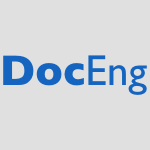 DocEng-2015-RastanPS #approach #named
DocEng-2015-RastanPS #approach #named- TEXUS: A Task-based Approach for Table Extraction and Understanding (RR, HYP, JS), pp. 25–34.
 HT-2015-GadirajuSFK #behaviour #categorisation
HT-2015-GadirajuSFK #behaviour #categorisation- Breaking Bad: Understanding Behavior of Crowd Workers in Categorization Microtasks (UG, PS, BF, RK), pp. 33–38.
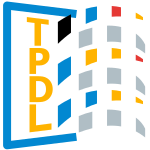 TPDL-2015-McKayBC #distance #library
TPDL-2015-McKayBC #distance #library- Tyranny of Distance: Understanding Academic Library Browsing by Refining the Neighbour Effect (DM, GB, SC), pp. 280–294.
 VLDB-2015-FanRMGW #consistency
VLDB-2015-FanRMGW #consistency- Understanding the Causes of Consistency Anomalies in Apache Cassandra (HF, AR, MM, WMG, BW), pp. 810–821.
 EDM-2015-BaikadiSA
EDM-2015-BaikadiSA - Understanding Revision Planning in Peer-Reviewed Writing (AB, CS, KDA), pp. 544–547.
 EDM-2015-BumbacherSWB #behaviour #concept #development #how #learning #physics
EDM-2015-BumbacherSWB #behaviour #concept #development #how #learning #physics- Learning Environments and Inquiry Behaviors in Science Inquiry Learning: How Their Interplay Affects the Development of Conceptual Understanding in Physics (EB, SS, MW, PB), pp. 61–68.
 EDM-2015-DoroudiHAB #how #induction #learning #refinement #robust #towards
EDM-2015-DoroudiHAB #how #induction #learning #refinement #robust #towards- Towards Understanding How to Leverage Sense-making, Induction/Refinement and Fluency to Improve Robust Learning (SD, KH, VA, EB), pp. 376–379.
 EDM-2015-Geryk #using #visual notation
EDM-2015-Geryk #using #visual notation- Using Visual Analytics Tool for Improving Data Comprehension (JG), pp. 327–334.
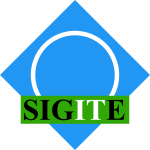 SIGITE-2015-ConnollyLMP #towards
SIGITE-2015-ConnollyLMP #towards- Towards a Better Understanding of the Different Computing Disciplines (RC, BL, JM, LMP), pp. 55–56.
 ICPC-2015-AvidanF #obfuscation
ICPC-2015-AvidanF #obfuscation- From obfuscation to comprehension (EA, DGF), pp. 178–181.
 ICPC-2015-CosmaM #component #using #visual notation #web
ICPC-2015-CosmaM #component #using #visual notation #web- Understanding web applications using component based visual patterns (DCC, PFM), pp. 281–284.
 ICPC-2015-FittkauFHW #visualisation
ICPC-2015-FittkauFHW #visualisation- Comparing trace visualizations for program comprehension through controlled experiments (FF, SF, WH, JW), pp. 266–276.
 ICPC-2015-Roehm #developer
ICPC-2015-Roehm #developer- Two user perspectives in program comprehension: end users and developer users (TR), pp. 129–139.
 MSR-2015-WangPWG #git #using #what
MSR-2015-WangPWG #git #using #what- What Is the Gist? Understanding the Use of Public Gists on GitHub (WW, GPC, EW, DMG), pp. 314–323.
 SANER-2015-BezemerPG #difference #graph #performance #using
SANER-2015-BezemerPG #difference #graph #performance #using- Understanding software performance regressions using differential flame graphs (CPB, JP, BG), pp. 535–539.
 SANER-2015-JiangSPLZ #developer #interactive #natural language #query
SANER-2015-JiangSPLZ #developer #interactive #natural language #query- Understanding developers’ natural language queries with interactive clarification (SJ, LS, XP, ZL, WZ), pp. 13–22.
 SCAM-2015-UddinGGR #eye tracking #on the #using #visualisation
SCAM-2015-UddinGGR #eye tracking #on the #using #visualisation- On the comprehension of code clone visualizations: A controlled study using eye tracking (MSU, VG, CG, CKR), pp. 161–170.
 ICALP-v1-2015-KunnemannM #approximate #heuristic #towards
ICALP-v1-2015-KunnemannM #approximate #heuristic #towards- Towards Understanding the Smoothed Approximation Ratio of the 2-Opt Heuristic (MK, BM), pp. 859–871.
 CHI-PLAY-2015-TondelloWTNC #game studies #towards
CHI-PLAY-2015-TondelloWTNC #game studies #towards- Understanding Player Attitudes Towards Digital Game Objects (GFT, RRW, ZOT, LEN, NKC), pp. 709–714.
 CHI-PLAY-2015-WehbeN #towards
CHI-PLAY-2015-WehbeN #towards- Towards Understanding the Importance of Co-Located Gameplay (RRW, LEN), pp. 733–738.
 CIG-2015-LimH #behaviour
CIG-2015-LimH #behaviour- Understanding players' identities and behavioral archetypes from avatar customization data (CUL, DFH), pp. 238–245.
 DiGRA-2015-MarczakSH #experience #matrix #similarity #using
DiGRA-2015-MarczakSH #experience #matrix #similarity #using- Understanding Player Experience Through the Use of Similarity Matrix (RM, GS, PH).
 FDG-2015-GraceJC #persuasion
FDG-2015-GraceJC #persuasion- Persuasive Content: Understanding In-Game Advertising Retention in Players and Onlookers (LG, DPJ, JRC).
 FDG-2015-MuellerKFKMSSG15a #collaboration #named
FDG-2015-MuellerKFKMSSG15a #collaboration #named- HeapCraft: Understanding and Improving Player Collaboration in Minecraft (SM0, MK, SF, SK, RPM, BS, RWS, MHG).
 FDG-2015-NguyenEC #game studies #named #problem #visualisation
FDG-2015-NguyenEC #game studies #named #problem #visualisation- Glyph: Visualization Tool for Understanding Problem Solving Strategies in Puzzle Games (THDN, MSEN, AC).
 FDG-2015-RoestB #game studies
FDG-2015-RoestB #game studies- Engaging Casual Games That Frustrate You: An Exploration on Understanding Engaging Frustrating Casual Games (MR, SB).
 FDG-2015-Sicart #design #game studies
FDG-2015-Sicart #design #game studies- Loops and Metagames: Understanding Game Design Structures (MS).
 FDG-2015-Thomas #algorithm #design #development #game studies #women
FDG-2015-Thomas #algorithm #design #development #game studies #women- Supporting Computational Algorithmic Thinking (SCAT): Understanding the Development of Computational Algorithmic Thinking Capabilities in African-American Middle-School Girls Through Game Design (JOT).
 CHI-2015-AminiRLHI #lens #visualisation
CHI-2015-AminiRLHI #lens #visualisation- Understanding Data Videos: Looking at Narrative Visualization through the Cinematography Lens (FA, NHR, BL, CH, PI), pp. 1459–1468.
 CHI-2015-AmmariS #social #social media
CHI-2015-AmmariS #social #social media- Understanding and Supporting Fathers and Fatherhood on Social Media Sites (TA, SYS), pp. 1905–1914.
 CHI-2015-ChangLKS #behaviour #gesture #mobile #scalability
CHI-2015-ChangLKS #behaviour #gesture #mobile #scalability- Understanding Users’ Touch Behavior on Large Mobile Touch-Screens and Assisted Targeting by Tilting Gesture (YC, SL, KK, JS), pp. 1499–1508.
 CHI-2015-ChengSSYD
CHI-2015-ChengSSYD - Gaze-Based Annotations for Reading Comprehension (SC, ZS, LS, KY, AKD), pp. 1569–1572.
 CHI-2015-ClarkSMK #image #privacy #quote
CHI-2015-ClarkSMK #image #privacy #quote- “I Saw Images I Didn’t Even Know I Had”: Understanding User Perceptions of Cloud Storage Privacy (JWC, PS, DM, CK), pp. 1641–1644.
 CHI-2015-FeltARCTBHG
CHI-2015-FeltARCTBHG - Improving SSL Warnings: Comprehension and Adherence (APF, AA, RWR, SC, ST, AB, HH, JG), pp. 2893–2902.
 CHI-2015-GadirajuKDD #behaviour #crowdsourcing #online #platform
CHI-2015-GadirajuKDD #behaviour #crowdsourcing #online #platform- Understanding Malicious Behavior in Crowdsourcing Platforms: The Case of Online Surveys (UG, RK, SD, GD), pp. 1631–1640.
 CHI-2015-GulottaSKF #how
CHI-2015-GulottaSKF #how- Curatorial Agents: How Systems Shape Our Understanding of Personal and Familial Digital Information (RG, AS, AK, JF), pp. 3453–3462.
 CHI-2015-KnavingWFB #design #motivation
CHI-2015-KnavingWFB #design #motivation- Flow is Not Enough: Understanding the Needs of Advanced Amateur Runners to Design Motivation Technology (KK, PW, MF, SB), pp. 2013–2022.
 CHI-2015-LucaHZH #authentication #exclamation #smarttech #towards
CHI-2015-LucaHZH #authentication #exclamation #smarttech #towards- I Feel Like I’m Taking Selfies All Day!: Towards Understanding Biometric Authentication on Smartphones (ADL, AH, EvZ, HH), pp. 1411–1414.
 CHI-2015-MasdenE #community #online
CHI-2015-MasdenE #community #online- Understanding the Role of Community in Online Dating (CAM, WKE), pp. 535–544.
 CHI-2015-MaurielloNF #automation #energy
CHI-2015-MaurielloNF #automation #energy- Understanding the Role of Thermography in Energy Auditing: Current Practices and the Potential for Automated Solutions (MLM, LN, JEF), pp. 1993–2002.
 CHI-2015-Odom #case study #experience #interactive
CHI-2015-Odom #case study #experience #interactive- Understanding Long-Term Interactions with a Slow Technology: an Investigation of Experiences with FutureMe (WO), pp. 575–584.
 CHI-2015-OLearyEKVRP #approach #design #health #trade-off
CHI-2015-OLearyEKVRP #approach #design #health #trade-off- Understanding Design Tradeoffs for Health Technologies: A Mixed-Methods Approach (KO, JE, LK, LMV, JDR, WP), pp. 4151–4160.
 CHI-2015-PaayKSLR #difference
CHI-2015-PaayKSLR #difference- Understanding Individual Differences for Tailored Smoking Cessation Apps (JP, JK, MBS, LL, SR), pp. 1699–1708.
 CHI-2015-RaderG #algorithm #facebook
CHI-2015-RaderG #algorithm #facebook- Understanding User Beliefs About Algorithmic Curation in the Facebook News Feed (ER, RG), pp. 173–182.
 CHI-2015-WarshawMWKBS #algorithm #people
CHI-2015-WarshawMWKBS #algorithm #people- Can an Algorithm Know the “Real You”?: Understanding People’s Reactions to Hyper-personal Analytics Systems (JW, TM, SW, CK, MNB, BAS), pp. 797–806.
 CSCW-2015-BakhshiKS #online #question
CSCW-2015-BakhshiKS #online #question- Understanding Online Reviews: Funny, Cool or Useful? (SB, PK, DAS), pp. 1270–1276.
 CSCW-2015-BiehlAD #communication
CSCW-2015-BiehlAD #communication- Not Really There: Understanding Embodied Communication Affordances in Team Perception and Participation (JTB, DA, AD), pp. 1567–1575.
 CSCW-2015-FieslerFB #community #online
CSCW-2015-FieslerFB #community #online- Understanding Copyright Law in Online Creative Communities (CF, JLF, ASB), pp. 116–129.
 CSCW-2015-HarburgHGG #self
CSCW-2015-HarburgHGG #self- Understanding the Effects of Crowdfunding on Entrepreneurial Self-Efficacy (EH, JH, MDG, EMG), pp. 3–16.
 CSCW-2015-KangLOKHS #facebook #process #relational #towards
CSCW-2015-KangLOKHS #facebook #process #relational #towards- Towards Understanding Relational Orientation: Attachment Theory and Facebook Activities (BK, SL, AO, SK, IH, JS), pp. 1404–1415.
 CSCW-2015-KimL #mobile
CSCW-2015-KimL #mobile- Dwelling Places in KakaoTalk: Understanding the Roles and Meanings of Chatrooms in Mobile Instant Messengers (DjK, YKL), pp. 775–784.
 CSCW-2015-LeeL #behaviour #health #multi #social
CSCW-2015-LeeL #behaviour #health #multi #social- Understanding the Roles and Influences of Mediators from Multiple Social Channels for Health Behavior Change (YL, YKL), pp. 1070–1079.
 CSCW-2015-LiuIP #how #maintenance #quote
CSCW-2015-LiuIP #how #maintenance #quote- “I’m Not Like My Friends”: Understanding How Children with a Chronic Illness Use Technology to Maintain Normalcy (LSL, KMI, WP), pp. 1527–1539.
 CSCW-2015-RaeVTM #design #framework
CSCW-2015-RaeVTM #design #framework- A Framework for Understanding and Designing Telepresence (IR, GV, JCT, DM), pp. 1552–1566.
 CSCW-2015-ZhengRSC #behaviour #motivation #student
CSCW-2015-ZhengRSC #behaviour #motivation #student- Understanding Student Motivation, Behaviors and Perceptions in MOOCs (SZ, MBR, PCS, JMC), pp. 1882–1895.
 CSCW-2015-ZyskowskiMBGK #challenge #people
CSCW-2015-ZyskowskiMBGK #challenge #people- Accessible Crowdwork?: Understanding the Value in and Challenge of Microtask Employment for People with Disabilities (KZ, MRM, JPB, MLG, SKK), pp. 1682–1693.
 DHM-HM-2015-KitajimaKMMMH #analysis #process
DHM-HM-2015-KitajimaKMMMH #analysis #process- Process Analysis of Manufacturing of Sewing Scissors by All Forging Process and Understanding of Its Sharpness (YK, KK, MM, KM, YM, HH), pp. 124–132.
 DUXU-IXD-2015-IslamI #interface #ontology #semantics #set #web
DUXU-IXD-2015-IslamI #interface #ontology #semantics #set #web- Understanding the Semantics of Web Interface Signs: A Set of Ontological Principals (MNI, AKMNI), pp. 46–53.
 DUXU-IXD-2015-Posetti #design #experience #user interface
DUXU-IXD-2015-Posetti #design #experience #user interface- Clicking Through Endless Seas: Understanding User Experience in the Design of Journalistic Websites (BP), pp. 82–93.
 DUXU-UI-2015-AlacamAH
DUXU-UI-2015-AlacamAH - Haptic Exploration Patterns in Virtual Line-Graph Comprehension (ÖA, CA, CH), pp. 403–414.
 DUXU-UI-2015-SoutoFS #approach #design #process #towards #women
DUXU-UI-2015-SoutoFS #approach #design #process #towards #women- The Creative Process in Digital Design: Towards an Understanding of Women’s Approach (VTS, PCLAF, FAdS), pp. 252–263.
 HCI-DE-2015-BhandariNC #mobile #perspective #quality #visual notation
HCI-DE-2015-BhandariNC #mobile #perspective #quality #visual notation- Understanding Visual Appeal and Quality Perceptions of Mobile Apps: An Emotional Perspective (UB, TN, KC), pp. 451–459.
 HIMI-IKC-2015-HoriguchiTH #concept #physics #problem #sequence #student
HIMI-IKC-2015-HoriguchiTH #concept #physics #problem #sequence #student- The Effect of Problem Sequence on Students’ Conceptual Understanding in Physics (TH, TT, TH), pp. 313–322.
 HIMI-IKC-2015-VorvoreanuMDM #research
HIMI-IKC-2015-VorvoreanuMDM #research- Dealing with Data Deluge at National Funding Agencies: An Investigation of User Needs for Understanding and Managing Research Investments (MV, AFM, ZD, KPCM), pp. 140–151.
 HIMI-IKD-2015-WongwichaiT #assembly
HIMI-IKD-2015-WongwichaiT #assembly- An Observation of Human Comprehension Through Wood Joints Assembly of a Cube Puzzle (TW, TT), pp. 668–677.
 LCT-2015-HasegawaSSHSO #gesture
LCT-2015-HasegawaSSHSO #gesture- The Effect of Metaphoric Gestures on Schematic Understanding of Instruction Performed by a Pedagogical Conversational Agent (DH, SS, NS, TH, HS, KO), pp. 361–371.
 LCT-2015-YildirimC #student
LCT-2015-YildirimC #student- Understanding Nomophobia: A Modern Age Phobia Among College Students (CY, APC), pp. 724–735.
 ICEIS-v3-2015-AgarwalS #development #game studies
ICEIS-v3-2015-AgarwalS #development #game studies- Understanding Game Modding through Phases of Mod Development (SA, PS), pp. 114–121.
 CIKM-2015-ArapakisLC #experience #user interface #web
CIKM-2015-ArapakisLC #experience #user interface #web- Know Your Onions: Understanding the User Experience with the Knowledge Module in Web Search (IA, LAL, BBC), pp. 1695–1698.
 CIKM-2015-ChengWWYC #semantics
CIKM-2015-ChengWWYC #semantics- Contextual Text Understanding in Distributional Semantic Space (JC0, ZW, JRW, JY0, ZC0), pp. 133–142.
 CIKM-2015-MoshfeghiOMJTLT
CIKM-2015-MoshfeghiOMJTLT - UCUI'15: The 1st International Workshop on Understanding the City with Urban Informatics (YM, IO, CM, JMJ, PT, ML, PT), pp. 1955–1956.
 CIKM-2015-TamineS #collaboration #information retrieval
CIKM-2015-TamineS #collaboration #information retrieval- Understanding the Impact of the Role Factor in Collaborative Information Retrieval (LT, LS), pp. 43–52.
 SEKE-2015-LessaCMA #matlab #visualisation
SEKE-2015-LessaCMA #matlab #visualisation- Scaffolding MATLAB and Octave Software Comprehension Through Visualization (IML, GdFC, MPM, FBeA), pp. 290–293.
 SEKE-2015-SchreiberMRM #named #object-oriented #source code
SEKE-2015-SchreiberMRM #named #object-oriented #source code- TAGGINGSENSE: Method Based On Sensemaking For Object-Oriented Source Code Comprehension (DS, ALAM, SSR, AM), pp. 278–283.
 SIGIR-2015-Hasanuzzaman0DF #query
SIGIR-2015-Hasanuzzaman0DF #query- Understanding Temporal Query Intent (MH, SS, GD, SF), pp. 823–826.
 SIGIR-2015-KraviAGKMP #web
SIGIR-2015-KraviAGKMP #web- Searcher in a Strange Land: Understanding Web Search from Familiar and Unfamiliar Locations (EK, EA, IG, YK, AM, DP), pp. 855–858.
 SIGIR-2015-LiuJG #education
SIGIR-2015-LiuJG #education- Scientific Information Understanding via Open Educational Resources (OER) (XL, ZJ, LG), pp. 645–654.
 SIGIR-2015-TrippasSSC #communication #summary #towards #web
SIGIR-2015-TrippasSSC #communication #summary #towards #web- Towards Understanding the Impact of Length in Web Search Result Summaries over a Speech-only Communication Channel (JRT, DS, MS, LC), pp. 991–994.
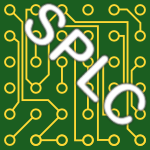 SPLC-2015-Santos #composition #hybrid #refactoring
SPLC-2015-Santos #composition #hybrid #refactoring- Understanding hybrid SPL composition impact on the refactoring into SPL (ARS), pp. 348–351.
 PLATEAU-2015-JacquesK
PLATEAU-2015-JacquesK - Understanding the effects of code presentation (JTJ, POK), pp. 27–30.
 ASE-2015-FloresA #collaboration #framework #named #platform
ASE-2015-FloresA #collaboration #framework #named #platform- DRIVER — A Platform for Collaborative Framework Understanding (NF, AA), pp. 783–788.
 ASE-2015-LvZLWZZ #api #code search #effectiveness #named
ASE-2015-LvZLWZZ #api #code search #effectiveness #named- CodeHow: Effective Code Search Based on API Understanding and Extended Boolean Model (E) (FL, HZ, JGL, SW, DZ, JZ), pp. 260–270.
 ASE-2015-Okur #c# #concurrent #refactoring
ASE-2015-Okur #c# #concurrent #refactoring- Understanding, Refactoring, and Fixing Concurrency in C# (SO), pp. 898–901.
 ESEC-FSE-2015-Vinayakarao
ESEC-FSE-2015-Vinayakarao - Spotting familiar code snippet structures for program comprehension (VV), pp. 1054–1056.
 ESEC-FSE-2015-XuJFZPT #exclamation
ESEC-FSE-2015-XuJFZPT #exclamation- Hey, you have given me too many knobs!: understanding and dealing with over-designed configuration in system software (TX, LJ, XF, YZ, SP, RT), pp. 307–319.
 ICSE-v2-2015-Accioly #collaboration #development
ICSE-v2-2015-Accioly #collaboration #development- Understanding Conflicts Arising from Collaborative Development (PRGA), pp. 775–777.
 ICSE-v2-2015-BenomarSP #framework
ICSE-v2-2015-BenomarSP #framework- A Unified Framework for the Comprehension of Software’s Time (OB, HAS, PP), pp. 603–606.
 ICSE-v2-2015-Inozemtseva #fault #process
ICSE-v2-2015-Inozemtseva #fault #process- Understanding the Software Fault Introduction Process (LI), pp. 843–846.
 ICSE-v2-2015-McCarthyRS #consistency #named
ICSE-v2-2015-McCarthyRS #consistency #named- Bixie: Finding and Understanding Inconsistent Code (TM, PR, MS), pp. 645–648.
 ICSE-v2-2015-Szabo #maintenance
ICSE-v2-2015-Szabo #maintenance- Novice Code Understanding Strategies during a Software Maintenance Assignment (CS), pp. 276–284.
 DAC-2015-ChoCSM #component #fault
DAC-2015-ChoCSM #component #fault- Understanding soft errors in uncore components (HC, CYC, TS, SM), p. 6.
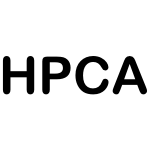 HPCA-2015-AroraMPJT #behaviour #benchmark #cpu #gpu #metric #power management
HPCA-2015-AroraMPJT #behaviour #benchmark #cpu #gpu #metric #power management- Understanding idle behavior and power gating mechanisms in the context of modern benchmarks on CPU-GPU Integrated systems (MA, SM, IP, NJ, DMT), pp. 366–377.
 HPCA-2015-HungerKRDVT #using
HPCA-2015-HungerKRDVT #using- Understanding contention-based channels and using them for defense (CH, MK, ASR, AGD, SV, MT), pp. 639–650.
 HPCA-2015-LiuLJCT #empirical
HPCA-2015-LiuLJCT #empirical- Understanding the virtualization “Tax” of scale-out pass-through GPUs in GaaS clouds: An empirical study (ML, TL, NJ, AC, VT), pp. 259–270.
 HPCA-2015-TiwariGRMRVOLDN #design #fault #gpu #scalability
HPCA-2015-TiwariGRMRVOLDN #design #fault #gpu #scalability- Understanding GPU errors on large-scale HPC systems and the implications for system design and operation (DT, SG, JHR, DM, PR, SSV, DAGdO, DL, ND, POAN, LC, ASB), pp. 331–342.
 HPDC-2015-YangC #behaviour #benchmark #graph #metric #robust
HPDC-2015-YangC #behaviour #benchmark #graph #metric #robust- Understanding Graph Computation Behavior to Enable Robust Benchmarking (FY, AAC), pp. 173–178.
 ISMM-2015-LinWBHN #behaviour
ISMM-2015-LinWBHN #behaviour- Stop and go: understanding yieldpoint behavior (YL, KW, SMB, ALH, MN), pp. 70–80.
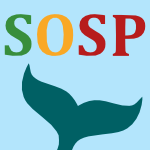 SOSP-2015-LuVAHSTKL #consistency #facebook
SOSP-2015-LuVAHSTKL #consistency #facebook- Existential consistency: measuring and understanding consistency at Facebook (HL, KV, PA, JH, YJS, WT, SK, WL), pp. 295–310.
 CSL-2015-Berardi #higher-order #induction
CSL-2015-Berardi #higher-order #induction- Classical and Intuitionistic Arithmetic with Higher Order Comprehension Coincide on Inductive Well-Foundedness (SB), pp. 343–358.
 ICLP-2015-AlrajehG #approach
ICLP-2015-AlrajehG #approach- A Logic-Based Approach to Understanding Lone-Actor Terrorism (DA, PG), pp. 166–178.
 ICST-2015-KochharTNZL #automation #developer #testing
ICST-2015-KochharTNZL #automation #developer #testing- Understanding the Test Automation Culture of App Developers (PSK, FT, NN, TZ, DL), pp. 1–10.
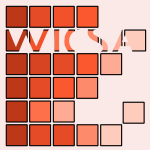 WICSA-2014-ChenB #agile #architecture #development #refactoring #towards
WICSA-2014-ChenB #agile #architecture #development #refactoring #towards- Towards an Evidence-Based Understanding of Emergence of Architecture through Continuous Refactoring in Agile Software Development (LC, MAB), pp. 195–204.
 WICSA-2014-JavedZ #architecture #traceability
WICSA-2014-JavedZ #architecture #traceability- The Supportive Effect of Traceability Links in Architecture-Level Software Understanding: Two Controlled Experiments (MAJ, UZ), pp. 215–224.
 DRR-2014-LiuWTLG #analysis #automation #image
DRR-2014-LiuWTLG #analysis #automation #image- Automatic comic page image understanding based on edge segment analysis (DL, YW, ZT, LL, LG), p. ?–12.
 HT-2014-CazabetT14a #visualisation
HT-2014-CazabetT14a #visualisation- Understanding mass cooperation through visualization (RC, HT), pp. 206–211.
 HT-2014-Hidalgo #big data #development #network #social #visualisation
HT-2014-Hidalgo #big data #development #network #social #visualisation- Big data visualization engines for understanding the development of countries, social networks, culture and cities (CAH), p. 3.
 HT-2014-NagulendraV #case study #interactive #user study #visualisation
HT-2014-NagulendraV #case study #interactive #user study #visualisation- Understanding and controlling the filter bubble through interactive visualization: a user study (SN, JV), pp. 107–115.
 JCDL-2014-DibieMS #approach #behaviour #education #online #predict #using
JCDL-2014-DibieMS #approach #behaviour #education #online #predict #using- A computational approach to understanding and predicting the behavior of educators using an online curriculum planning tool (OD, KEM, TS), pp. 487–488.
 EDM-2014-MintzSFDG #assessment #automation #student #summary
EDM-2014-MintzSFDG #assessment #automation #student #summary- Automatic assessment of student reading comprehension from short summaries (LM, DS, SF, SKD, ACG), pp. 333–334.
 EDM-2014-PeckhamM #education #framework #mining
EDM-2014-PeckhamM #education #framework #mining- Mining Reading Comprehension Within Educational Objective Frameworks (TP, GM), pp. 395–396.
 EDM-2014-RaffertyG #algebra
EDM-2014-RaffertyG #algebra- Diagnosing Algebra Understanding via Bayesian Inverse Planning (ANR, TLG), pp. 351–352.
 ITiCSE-2014-LakanenIL #difference #student
ITiCSE-2014-LakanenIL #difference #student- Understanding differences among coding club students (AJL, VI, VL), pp. 159–164.
 ITiCSE-2014-SmithGM #re-engineering #student
ITiCSE-2014-SmithGM #re-engineering #student- Understanding students’ preferences of software engineering projects (TS, SSG, RM), pp. 135–140.
 SIGITE-2014-Trabelsi #approach #education #network #security #using
SIGITE-2014-Trabelsi #approach #education #network #security #using- Enhancing the comprehension of network sniffing attack in information security education using a hands-on lab approach (ZT), pp. 39–44.
 CSMR-WCRE-2014-Goeminne #aspect-oriented #ecosystem #evolution #open source
CSMR-WCRE-2014-Goeminne #aspect-oriented #ecosystem #evolution #open source- Understanding the evolution of socio-technical aspects in open source ecosystems (MG), pp. 473–476.
 ICPC-2014-BinkleyHLO #analysis #source code
ICPC-2014-BinkleyHLO #analysis #source code- Understanding LDA in source code analysis (DB, DH, DJL, JO), pp. 26–36.
 ICPC-2014-JbaraF #on the
ICPC-2014-JbaraF #on the- On the effect of code regularity on comprehension (AJ, DGF), pp. 189–200.
 ICPC-2014-JbaraF14a #named #visual notation
ICPC-2014-JbaraF14a #named #visual notation- JCSD: visual support for understanding code control structure (AJ, DGF), pp. 300–303.
 ICPC-2014-KaulgudAMT #learning
ICPC-2014-KaulgudAMT #learning- Comprehension support during knowledge transitions: learning from field (VSK, KMA, JM, GT), pp. 205–206.
 ICPC-2014-MaruyamaOH #visualisation
ICPC-2014-MaruyamaOH #visualisation- A visualization tool recording historical data of program comprehension tasks (KM, TO, SH), pp. 207–211.
 ICPC-2014-NoughiMMC #behaviour #database #source code
ICPC-2014-NoughiMMC #behaviour #database #source code- Understanding the database manipulation behavior of programs (NN, MM, LM, AC), pp. 64–67.
 ICPC-2014-PerezA #approach
ICPC-2014-PerezA #approach- A diagnosis-based approach to software comprehension (AP, RA), pp. 37–47.
 ICPC-2014-ShahinLL #architecture #design
ICPC-2014-ShahinLL #architecture #design- Do architectural design decisions improve the understanding of software architecture? two controlled experiments (MS, PL, ZL), pp. 3–13.
 ICSME-2014-ShangNHJ #development #using
ICSME-2014-ShangNHJ #development #using- Understanding Log Lines Using Development Knowledge (WS, MN, AEH, ZMJ), pp. 21–30.
 ICSME-2014-YamauchiYHHK #clustering #commit #implementation
ICSME-2014-YamauchiYHHK #clustering #commit #implementation- Clustering Commits for Understanding the Intents of Implementation (KY, JY, KH, YH, SK), pp. 406–410.
 MSR-2014-BaldassariP #evolution #set
MSR-2014-BaldassariP #evolution #set- Understanding software evolution: the maisqual ant data set (BB, PP), pp. 424–427.
 MSR-2014-SheoranBKDE #git
MSR-2014-SheoranBKDE #git- Understanding “watchers” on GitHub (JS, KB, EK, DD, JE), pp. 336–339.
 CHI-PLAY-2014-GoldmanLZ #game studies #using #video
CHI-PLAY-2014-GoldmanLZ #game studies #using #video- Using video games to facilitate understanding of attention deficit hyperactivity disorder: a feasibility study (TAG, FJL, JZ), pp. 115–120.
 CHI-PLAY-2014-KouG #game studies
CHI-PLAY-2014-KouG #game studies- Playing with strangers: understanding temporary teams in league of legends (YK, XG), pp. 161–169.
 CHI-PLAY-2014-Mirza-BabaeiGCN #artificial reality #game studies #multi
CHI-PLAY-2014-Mirza-BabaeiGCN #artificial reality #game studies #multi- Understanding expectations with multiple controllers in an augmented reality videogame (PMB, NG, JPC, LEN, DMJ0), pp. 201–206.
 CHI-PLAY-2014-Wehbe #challenge
CHI-PLAY-2014-Wehbe #challenge- Understanding difficulty, your brain and challenge (RRW), pp. 303–306.
 CIG-2014-GreenwoodA #process #question
CIG-2014-GreenwoodA #process #question- Does the moran process hinder our understanding of cooperation in human populations? (GWG, PMA), pp. 1–6.
 DiGRA-2014-Marklund #game studies #learning
DiGRA-2014-Marklund #game studies #learning- Out of Context - Understanding the Practicalities of Learning Games (BM).
 DiGRA-2014-OlssonBD #concept #design #game studies
DiGRA-2014-OlssonBD #concept #design #game studies- The Conceptual Relationship Model: Understanding Patterns and Mechanics in Game Design (CMO, SB, SD).
 FDG-2014-GraceS #evolution #game studies
FDG-2014-GraceS #evolution #game studies- The psychology of play: Understanding digital game evolution through developmental psychology (LDG, BS).
 FDG-2014-TreanorM #representation #simulation
FDG-2014-TreanorM #representation #simulation- Understanding representation in playable simulations (MT, MM).
 CHI-2014-BalestriniBMZR #case study #community
CHI-2014-BalestriniBMZR #case study #community- Understanding sustained community engagement: a case study in heritage preservation in rural argentina (MB, JB, PM, AZ, YR), pp. 2675–2684.
 CHI-2014-ChoeLLPK
CHI-2014-ChoeLLPK - Understanding quantified-selfers’ practices in collecting and exploring personal data (EKC, NBL, BL, WP, JAK), pp. 1143–1152.
 CHI-2014-GouZY #automation #social #social media
CHI-2014-GouZY #automation #social #social media- KnowMe and ShareMe: understanding automatically discovered personality traits from social media and user sharing preferences (LG, MXZ, HY), pp. 955–964.
 CHI-2014-HamiltonW #interactive #named
CHI-2014-HamiltonW #interactive #named- Conductor: enabling and understanding cross-device interaction (PH, DJW), pp. 2773–2782.
 CHI-2014-HopeSP #social
CHI-2014-HopeSP #social- Understanding digital and material social communications for older adults (AH, TS, AMP), pp. 3903–3912.
 CHI-2014-HsiehCMN #what
CHI-2014-HsiehCMN #what- You read what you value: understanding personal values and reading interests (GH, JC, JM, JN), pp. 983–986.
 CHI-2014-KhotHM #3d #physics #process
CHI-2014-KhotHM #3d #physics #process- Understanding physical activity through 3D printed material artifacts (RAK, LH, F'M), pp. 3835–3844.
 CHI-2014-MazmanianE #constant
CHI-2014-MazmanianE #constant- The product of availability: understanding the economic underpinnings of constant connectivity (MM, IE), pp. 763–772.
 CHI-2014-MurerJSS
CHI-2014-MurerJSS - Taking things apart: reaching common ground and shared material understanding (MM, MJ, SS, PS), pp. 469–472.
 CHI-2014-SchulerGMRJ #coordination #social
CHI-2014-SchulerGMRJ #coordination #social- The doing of doing stuff: understanding the coordination of social group-activities (RPS, SAG, JMM, STR, QJ), pp. 119–128.
 CHI-2014-Smith #analysis #game studies #generative
CHI-2014-Smith #analysis #game studies #generative- Understanding procedural content generation: a design-centric analysis of the role of PCG in games (GS), pp. 917–926.
 CHI-2014-WacharamanothamTPB
CHI-2014-WacharamanothamTPB - Understanding finger input above desktop devices (CW, KT, MP, JOB), pp. 1083–1092.
 CHI-2014-WeigelMS #how #mobile #people
CHI-2014-WeigelMS #how #mobile #people- More than touch: understanding how people use skin as an input surface for mobile computing (MW, VM, JS), pp. 179–188.
 CHI-2014-WisniewskiXC #adaptation #facebook #timeline
CHI-2014-WisniewskiXC #adaptation #facebook #timeline- Understanding user adaptation strategies for the launching of facebook timeline (PJW, HX, YC), pp. 2421–2430.
 CHI-2014-ZhangH #modelling #multi
CHI-2014-ZhangH #modelling #multi- Understanding multitasking through parallelized strategy exploration and individualized cognitive modeling (YZ, AJH), pp. 3885–3894.
 CHI-2014-ZhaoL #social #social media
CHI-2014-ZhaoL #social #social media- Curation through use: understanding the personal value of social media (XZ, SEL), pp. 2431–2440.
 CHI-2014-ZhouSY #community #online
CHI-2014-ZhouSY #community #online- Sweet Home: understanding diabetes management via a chinese online community (XZ, SS, JY), pp. 3997–4006.
 CSCW-2014-ChenHMN #social #social media #word
CSCW-2014-ChenHMN #social #social media #word- Understanding individuals’ personal values from social media word use (JC, GH, JM, JN), pp. 405–414.
 CSCW-2014-CobbMPBCDS #collaboration #design #distributed #volunteer
CSCW-2014-CobbMPBCDS #collaboration #design #distributed #volunteer- Designing for the deluge: understanding & supporting the distributed, collaborative work of crisis volunteers (CC, TM, AP, AB, JC, BD, KS), pp. 888–899.
 CSCW-2014-DillahuntM #energy
CSCW-2014-DillahuntM #energy- Understanding factors of successful engagement around energy consumption between and among households (TD, JM), pp. 1246–1257.
 CSCW-2014-HuangWY #online #social
CSCW-2014-HuangWY #online #social- De-virtualizing social events: understanding the gap between online and offline participation for event invitations (AJH, HCW, CWY), pp. 436–448.
 CSCW-2014-HuiGG #community
CSCW-2014-HuiGG #community- Understanding the role of community in crowdfunding work (JH, MDG, EG), pp. 62–74.
 CSCW-2014-MejovaGWD #behaviour #email
CSCW-2014-MejovaGWD #behaviour #email- Giving is caring: understanding donation behavior through email (YM, VRKG, IW, MCD), pp. 1297–1307.
 CSCW-2014-ShamiYPDRRASSLGGF #enterprise #social #social media
CSCW-2014-ShamiYPDRRASSLGGF #enterprise #social #social media- Understanding employee social media chatter with enterprise social pulse (NSS, JY, LP, CD, TR, JCR, YA, TS, TS, SL, WG, IG, JF), pp. 379–392.
 DHM-2014-AbibBA #communication #process
DHM-2014-AbibBA #communication #process- Understanding and Facilitating the Communication Process among Healthcare Professionals (JCA, AOB, JCA), pp. 313–324.
 DUXU-DI-2014-AcarturkAH #graph
DUXU-DI-2014-AcarturkAH #graph- Developing a Verbal Assistance System for Line Graph Comprehension (CA, ÖA, CH), pp. 373–382.
 DUXU-ELAS-2014-ChenDCY #experience #user interface
DUXU-ELAS-2014-ChenDCY #experience #user interface- Enhance User Experience Moving in Campus through Understanding Human Spatial Cognition (SMC, YSD, SFC, HCY), pp. 265–272.
 DUXU-ELAS-2014-Chunpir0B #using
DUXU-ELAS-2014-Chunpir0B #using- Using Soft Systems Methodology (SSM) in Understanding Current User-Support Scenario in the Climate Science Domain of Cyber-Infrastructures (HIC, TL, AAB), pp. 495–506.
 DUXU-ELAS-2014-KnollVS #user interface
DUXU-ELAS-2014-KnollVS #user interface- Developing the HMI of Electric Vehicles — On the Necessity of a Broader Understanding of Automotive User Interface Engineering (CK, RV, IS), pp. 293–304.
 HCI-AIMT-2014-SunLF #memory management
HCI-AIMT-2014-SunLF #memory management- The Effects of Working Memory Load and Mental Imagery on Metaphoric Meaning Access in Metaphor Comprehension (XS, YL, XF), pp. 502–510.
 HCI-AS-2014-KhokaleA #documentation #information retrieval #interface #web
HCI-AS-2014-KhokaleA #documentation #information retrieval #interface #web- Intelligent Interface for Web Information Retrieval with Document Understanding (RSK, MA), pp. 21–31.
 HCI-AS-2014-OchoaMOHB #interactive #mobile
HCI-AS-2014-OchoaMOHB #interactive #mobile- Understanding the Interaction Support for Mobile Work in an Emergency Room (SFO, AM, NO, RH, JB), pp. 312–322.
 HCI-TMT-2014-LizanoS #developer #towards #usability
HCI-TMT-2014-LizanoS #developer #towards #usability- Improvement of Novice Software Developers’ Understanding about Usability: The Role of Empathy Toward Users as a Case of Emotional Contagion (FL, JS), pp. 207–218.
 HCI-TMT-2014-PereiraB #concept #design
HCI-TMT-2014-PereiraB #concept #design- Value Pie: A Culturally Informed Conceptual Scheme for Understanding Values in Design (RP, MCCB), pp. 122–133.
 HIMI-AS-2014-AlkhateebHH #using
HIMI-AS-2014-AlkhateebHH #using- The Effects of Using Kit-Build Method to Support Reading Comprehension of EFL (MA, YH, TH), pp. 3–11.
 HIMI-AS-2014-AraiKTKA #development #learning #source code
HIMI-AS-2014-AraiKTKA #development #learning #source code- Development of a Learning Support System for Source Code Reading Comprehension (TA, HK, TT, YK, TA), pp. 12–19.
 HIMI-AS-2014-NarumiOKTH #abstraction
HIMI-AS-2014-NarumiOKTH #abstraction- Switching the Level of Abstraction in Digital Exhibitions to Provide an Understanding of Mechanisms (TN, HO, RK, TT, MH), pp. 567–576.
 HIMI-DE-2014-BonacinRHPB #aspect-oriented #collaboration #social
HIMI-DE-2014-BonacinRHPB #aspect-oriented #collaboration #social- Understanding Pragmatic Aspects with Social Values in Web-Mediated Collaborative Systems (RB, JCdR, HHH, RP, MCCB), pp. 471–482.
 HIMI-DE-2014-TakahashiA #comparison #difference #mining #using
HIMI-DE-2014-TakahashiA #comparison #difference #mining #using- User Needs Search Using the Text Mining — From Commodity Comparison, Understanding the Difference of Users Awareness (YT, YA), pp. 461–467.
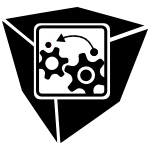 VISSOFT-2014-EnsRSHYI #co-evolution #named #visual notation
VISSOFT-2014-EnsRSHYI #co-evolution #named #visual notation- ChronoTwigger: A Visual Analytics Tool for Understanding Source and Test Co-evolution (BE, DJR, RS, HH, JEY, PI), pp. 117–126.
 EDOC-2014-Weber #how #modelling #process #towards
EDOC-2014-Weber #how #modelling #process #towards- Investigating the Process of Process Modeling: Towards an in-Depth Understanding of How Process Models Are Created (BW), p. 180.
 ICEIS-v2-2014-KhashabGAK #towards
ICEIS-v2-2014-KhashabGAK #towards- Scoping Customer Relationship Management Strategy in HEI — Understanding Steps towards Alignment of Customer and Management Needs (BK, SRG, AA, MK), pp. 267–274.
 ICEIS-v3-2014-CrickC
ICEIS-v3-2014-CrickC - Understanding the Role of Business — IT Alignment in Organisational Agility (CC, EC), pp. 459–464.
 ICEIS-v3-2014-RohlfsGP #architecture #concept #enterprise
ICEIS-v3-2014-RohlfsGP #architecture #concept #enterprise- Understanding Enterprise Architecture through Bodies of Knowledge — A Conceptual Model (CLdRR, GG, FSP), pp. 249–259.
 CIKM-2014-ArapakisLV #analysis #gesture
CIKM-2014-ArapakisLV #analysis #gesture- Understanding Within-Content Engagement through Pattern Analysis of Mouse Gestures (IA, ML, GV), pp. 1439–1448.
 CIKM-2014-JonesTMSS #consistency #evaluation #matter #nondeterminism
CIKM-2014-JonesTMSS #consistency #evaluation #matter #nondeterminism- Size and Source Matter: Understanding Inconsistencies in Test Collection-Based Evaluation (TJ, AT, SM, FS, MS), pp. 1843–1846.
 CIKM-2014-SongWCW #query
CIKM-2014-SongWCW #query- Transfer Understanding from Head Queries to Tail Queries (YS, HW, WC, SW), pp. 1299–1308.
 CIKM-2014-ZhangZZLM #constraints #matrix
CIKM-2014-ZhangZZLM #constraints #matrix- Understanding the Sparsity: Augmented Matrix Factorization with Sampled Constraints on Unobservables (YZ, MZ, YZ, YL, SM), pp. 1189–1198.
 ICML-c1-2014-TangMNMZ #analysis #modelling #topic
ICML-c1-2014-TangMNMZ #analysis #modelling #topic- Understanding the Limiting Factors of Topic Modeling via Posterior Contraction Analysis (JT, ZM, XN, QM, MZ), pp. 190–198.
 ICML-c2-2014-McGibbonRSKP #markov #modelling
ICML-c2-2014-McGibbonRSKP #markov #modelling- Understanding Protein Dynamics with L1-Regularized Reversible Hidden Markov Models (RM, BR, MS, GK, VSP), pp. 1197–1205.
 ICPR-2014-HooKPC #image #learning #random
ICPR-2014-HooKPC #image #learning #random- Enhanced Random Forest with Image/Patch-Level Learning for Image Understanding (WLH, TKK, YP, CSC), pp. 3434–3439.
 ICPR-2014-TamboBLHY #video
ICPR-2014-TamboBLHY #video- Integrated Model for Understanding Pollen Tube Growth in Video (ALT, BB, NL, GH, ZY), pp. 2727–2732.
 KR-2014-DiakidoyKM0 #approach #automation
KR-2014-DiakidoyKM0 #approach #automation- A Psychology-Inspired Approach to Automated Narrative Text Comprehension (IAD, ACK, LM, RM).
 SEKE-2014-NoorianBD #product line
SEKE-2014-NoorianBD #product line- From Intentions to Decisions: Understanding Stakeholders’ Objectives in Software Product Line Configuration (MN, EB, WD), pp. 671–677.
 SEKE-2014-XavierMM #git
SEKE-2014-XavierMM #git- Understanding the popularity of reporters and assignees in the Github (JX, AM, MdAM), pp. 484–489.
 SIGIR-2014-KoopmanZ #information retrieval #product line
SIGIR-2014-KoopmanZ #information retrieval #product line- Understanding negation and family history to improve clinical information retrieval (BK, GZ), pp. 971–974.
 MoDELS-2014-Storrle #diagrams #layout #matter #on the #quality #uml
MoDELS-2014-Storrle #diagrams #layout #matter #on the #quality #uml- On the Impact of Layout Quality to Understanding UML Diagrams: Size Matters (HS), pp. 518–534.
 ECOOP-2014-BiermanAT #typescript
ECOOP-2014-BiermanAT #typescript- Understanding TypeScript (GMB, MA, MT), pp. 257–281.
 OOPSLA-2014-PintoCL #behaviour #concurrent #energy #thread
OOPSLA-2014-PintoCL #behaviour #concurrent #energy #thread- Understanding energy behaviors of thread management constructs (GP, FC, YDL), pp. 345–360.
 ASE-2014-MarkerBG #heuristic #performance
ASE-2014-MarkerBG #heuristic #performance- Understanding performance stairs: elucidating heuristics (BM, DSB, RAvdG), pp. 301–312.
 ASE-2014-ZuddasJPMO #debugging #named
ASE-2014-ZuddasJPMO #debugging #named- MIMIC: locating and understanding bugs by analyzing mimicked executions (DZ, WJ, FP, LM, AO), pp. 815–826.
 FSE-2014-SalvaneschiAPM #empirical #programming
FSE-2014-SalvaneschiAPM #empirical #programming- An empirical study on program comprehension with reactive programming (GS, SA, SP, MM), pp. 564–575.
 ICSE-2014-AlimadadiSMP #interactive #javascript
ICSE-2014-AlimadadiSMP #interactive #javascript- Understanding JavaScript event-based interactions (SA, SS, AM, KP), pp. 367–377.
 ICSE-2014-PhillipsZB
ICSE-2014-PhillipsZB - Understanding and improving software build teams (SP, TZ, CB), pp. 735–744.
 ICSE-2014-SiegmundKAPBLSB #functional #source code
ICSE-2014-SiegmundKAPBLSB #functional #source code- Understanding understanding source code with functional magnetic resonance imaging (JS, CK, SA, CP, AB, TL, GS, AB), pp. 378–389.
 ICSE-2014-ZayanAC #empirical #using
ICSE-2014-ZayanAC #empirical #using- Effects of using examples on structural model comprehension: a controlled experiment (DZ, MA, KC), pp. 955–966.
 HPCA-2014-BalasubramanianS #execution #physics #reliability
HPCA-2014-BalasubramanianS #execution #physics #reliability- Understanding the impact of gate-level physical reliability effects on whole program execution (RB, KS), pp. 60–71.
 PDP-2014-LuoKZLL #architecture
PDP-2014-LuoKZLL #architecture- Understanding the Data Traffic of Uncore in Westmere NUMA Architecture (QL, CK, YZ, GL, CL), pp. 392–399.
 LICS-CSL-2014-Fisher #biology #logic
LICS-CSL-2014-Fisher #biology #logic- Understanding biology through logic (JF), p. 1.
 ECSA-2013-HaitzerZ #architecture #component #design #diagrams #empirical
ECSA-2013-HaitzerZ #architecture #component #design #diagrams #empirical- Controlled Experiment on the Supportive Effect of Architectural Component Diagrams for Design Understanding of Novice Architects (TH, UZ), pp. 54–71.
 DRR-2013-LiWTL #detection #image
DRR-2013-LiWTL #detection #image- Comic image understanding based on polygon detection (LL, YW, ZT, DL).
 ICDAR-2013-MilyaevBNKL #image
ICDAR-2013-MilyaevBNKL #image- Image Binarization for End-to-End Text Understanding in Natural Images (SM, OB, TN, PK, VSL), pp. 128–132.
 ICDAR-2013-SuDPL #documentation #novel #word
ICDAR-2013-SuDPL #documentation #novel #word- Cross-Language Sensitive Words Distribution Map: A Novel Recognition-Based Document Understanding Method for Uighur and Tibetan (BS, XD, LP, CL), pp. 255–259.
 VLDB-2013-HuaiMLO0 #clustering
VLDB-2013-HuaiMLO0 #clustering- Understanding Insights into the Basic Structure and Essential Issues of Table Placement Methods in Clusters (YH, SM, RL, OO, XZ), pp. 1750–1761.
 VLDB-2013-QardajiYL
VLDB-2013-QardajiYL - Understanding Hierarchical Methods for Differentially Private Histograms (WHQ, WY, NL), pp. 1954–1965.
 CSEET-2013-RochaS #collaboration #student
CSEET-2013-RochaS #collaboration #student- Understanding individual contribution and collaboration in student software teams (FR, ES), pp. 51–60.
 ITiCSE-2013-PorterGTZ #architecture #concept #student
ITiCSE-2013-PorterGTZ #architecture #concept #student- Evaluating student understanding of core concepts in computer architecture (LP, SG, HWT, DZ), pp. 279–284.
 ITiCSE-2013-Rodriguez-CerezoGS #compilation #concept #education #interactive #simulation
ITiCSE-2013-Rodriguez-CerezoGS #compilation #concept #education #interactive #simulation- Interactive educational simulations for promoting the comprehension of basic compiler construction concepts (DRC, MGA, JLSR), pp. 28–33.
 SIGITE-2013-UzokaCSKM #student
SIGITE-2013-UzokaCSKM #student- Computing is not a rock band: student understanding of the computing disciplines (FMEU, RC, MS, NK, JM), pp. 115–120.
 CSMR-2013-PonzanelliBL #development
CSMR-2013-PonzanelliBL #development- Leveraging Crowd Knowledge for Software Comprehension and Development (LP, AB, ML), pp. 57–66.
 CSMR-2013-ScannielloGT #diagrams #sequence chart #source code
CSMR-2013-ScannielloGT #diagrams #sequence chart #source code- An Early Investigation on the Contribution of Class and Sequence Diagrams in Source Code Comprehension (GS, CG, GT), pp. 367–370.
 CSMR-2013-WangLJ #case study #taxonomy
CSMR-2013-WangLJ #case study #taxonomy- Understanding Widespread Changes: A Taxonomic Study (SW, DL, LJ), pp. 5–14.
 ICPC-2013-AlyCM #towards
ICPC-2013-AlyCM #towards- Building extensions for applications: Towards the understanding of extension possibilities (MA, AC, MM), pp. 182–191.
 ICPC-2013-BeckMDR #performance #visual notation
ICPC-2013-BeckMDR #performance #visual notation- In situ understanding of performance bottlenecks through visually augmented code (FB, OM, SD, GDR), pp. 63–72.
 ICPC-2013-BernhartG #code review #on the #source code
ICPC-2013-BernhartG #code review #on the #source code- On the understanding of programs with continuous code reviews (MB, TG), pp. 192–198.
 ICPC-2013-MahmoudN #algorithm #clustering
ICPC-2013-MahmoudN #algorithm #clustering- Evaluating software clustering algorithms in the context of program comprehension (AM, NN), pp. 162–171.
 ICPC-2013-Myers
ICPC-2013-Myers - Improving program comprehension by answering questions (BAM), pp. 1–2.
 ICPC-2013-SharafiMSAG #empirical #performance #requirements #visual notation
ICPC-2013-SharafiMSAG #empirical #performance #requirements #visual notation- An empirical study on the efficiency of graphical vs. textual representations in requirements comprehension (ZS, AM, AS, GA, YGG), pp. 33–42.
 ICSM-2013-GobertMCW #database #evolution #re-engineering
ICSM-2013-GobertMCW #database #evolution #re-engineering- Understanding Schema Evolution as a Basis for Database Reengineering (MG, JM, AC, JW), pp. 472–475.
 ICSM-2013-MeqdadiACM #adaptation #scalability #towards #version control
ICSM-2013-MeqdadiACM #adaptation #scalability #towards #version control- Towards Understanding Large-Scale Adaptive Changes from Version Histories (OM, NA, MLC, JIM), pp. 416–419.
 ICSM-2013-NovaisNGM #evolution
ICSM-2013-NovaisNGM #evolution- SourceMiner Evolution: A Tool for Supporting Feature Evolution Comprehension (RLN, CN, AG, MGM), pp. 508–511.
 MSR-2013-FuLLDZX #analysis #behaviour
MSR-2013-FuLLDZX #analysis #behaviour- Contextual analysis of program logs for understanding system behaviors (QF, JGL, QL, RD, DZ, TX), pp. 397–400.
 MSR-2013-SahaRSP #case study #evolution
MSR-2013-SahaRSP #case study #evolution- Understanding the evolution of type-3 clones: an exploratory study (RKS, CKR, KAS, DEP), pp. 139–148.
 WCRE-2013-JiangZL #social
WCRE-2013-JiangZL #social- Understanding project dissemination on a social coding site (JJ, LZ, LL), pp. 132–141.
 WCRE-2013-SohKGA #developer #how #maintenance #process #towards
WCRE-2013-SohKGA #developer #how #maintenance #process #towards- Towards understanding how developers spend their effort during maintenance activities (ZS, FK, YGG, GA), pp. 152–161.
 ICALP-v1-2013-FilmusLMNV #bound #calculus #polynomial #towards
ICALP-v1-2013-FilmusLMNV #bound #calculus #polynomial #towards- Towards an Understanding of Polynomial Calculus: New Separations and Lower Bounds — (YF, ML, MM, JN, MV), pp. 437–448.
 Haskell-2013-BirdGMVS #traversal
Haskell-2013-BirdGMVS #traversal- Understanding idiomatic traversals backwards and forwards (RSB, JG, SM, JV, TS), pp. 25–36.
 AIIDE-2013-Garber-BarronS #adaptation
AIIDE-2013-Garber-BarronS #adaptation- Adaptive Storytelling Through User Understanding (MGB, MS).
 AIIDE-2013-NogueiraRON #case study #experience #game studies
AIIDE-2013-NogueiraRON #case study #experience #game studies- Guided Emotional State Regulation: Understanding and Shaping Players' Affective Experiences in Digital Games (PAN, RAR, ECO, LEN).
 DiGRA-2013-HuggardMGTCM #game studies
DiGRA-2013-HuggardMGTCM #game studies- Understanding a Socially Awkward Digital Play Journey (AH, ADM, JG, CT, ADC, FM0).
 DiGRA-2013-PereiraR #game studies
DiGRA-2013-PereiraR #game studies- Understanding the Videogame Medium through Perspectives of Participation (LLP, LR).
 DiGRA-2013-Schweizer #game studies
DiGRA-2013-Schweizer #game studies- Understanding Videogame Cities (BS).
 DiGRA-2013-Zagal #education #game studies
DiGRA-2013-Zagal #education #game studies- Understanding Japanese Games Education (JPZ).
 FDG-2013-Toprak #game studies
FDG-2013-Toprak #game studies- Understanding digital play in moving spaces (CT), pp. 496–498.
 VS-Games-2013-XuTBW #game studies #motivation
VS-Games-2013-XuTBW #game studies #motivation- Marketing Tourism via Electronic Games: Understanding the Motivation of Tourist Players (FX, FT, DB, JW), pp. 1–8.
 CHI-2013-GustafsonRB #interface #visual notation
CHI-2013-GustafsonRB #interface #visual notation- Understanding palm-based imaginary interfaces: the role of visual and tactile cues when browsing (SG, BR, PB), pp. 889–898.
 CHI-2013-MacveanR #behaviour #game studies #motivation #physics #process
CHI-2013-MacveanR #behaviour #game studies #motivation #physics #process- Understanding exergame users’ physical activity, motivation and behavior over time (APM, JR), pp. 1251–1260.
 CHI-2013-MarcuTCGRSDK #education #why
CHI-2013-MarcuTCGRSDK #education #why- Why do they still use paper?: understanding data collection and use in Autism education (GM, KT, QC, JG, GR, KJS, AKD, SBK), pp. 3177–3186.
 CHI-2013-OdomZFHMCLNLLKRSSM
CHI-2013-OdomZFHMCLNLLKRSSM - Fragmentation and transition: understanding perceptions of virtual possessions among young adults in Spain, South Korea and the United States (WO, JZ, JF, ALH, MM, JC, YKL, TJN, MHL, YL, DjK, YKR, JS, BS, HM), pp. 1833–1842.
 CHI-2013-PanjwaniSSJ #perspective #privacy #web
CHI-2013-PanjwaniSSJ #perspective #privacy #web- Understanding the privacy-personalization dilemma for web search: a user perspective (SP, NS, SS, SJ), pp. 3427–3430.
 CHI-2013-SpiliotopoulosO #facebook #metric #network #privacy
CHI-2013-SpiliotopoulosO #facebook #metric #network #privacy- Understanding motivations for facebook use: usage metrics, network structure, and privacy (TS, IO), pp. 3287–3296.
 CHI-2013-SunZDRX
CHI-2013-SunZDRX - Messaging to your doctors: understanding patient-provider communications via a portal system (SS, XZ, JCD, STR, HX), pp. 1739–1748.
 CHI-2013-WycheFS #facebook #online
CHI-2013-WycheFS #facebook #online- Hustling online: understanding consolidated facebook use in an informal settlement in Nairobi (SW, AF, SYS), pp. 2823–2832.
 CHI-2013-YamashitaKHK #product line
CHI-2013-YamashitaKHK #product line- Understanding the conflicting demands of family caregivers caring for depressed family members (NY, HK, KH, TK), pp. 2637–2646.
 CSCW-2013-ChenX #privacy
CSCW-2013-ChenX #privacy- Privacy management in dynamic groups: understanding information privacy in medical practices (YC, HX), pp. 541–552.
 CSCW-2013-ChoudhuryC #social #social media
CSCW-2013-ChoudhuryC #social #social media- Understanding affect in the workplace via social media (MDC, SC), pp. 303–316.
 CSCW-2013-KusunokiSZB #monitoring #visual notation
CSCW-2013-KusunokiSZB #monitoring #visual notation- Understanding visual attention of teams in dynamic medical settings through vital signs monitor use (DSK, AS, ZZ, RSB), pp. 527–540.
 CSCW-2013-PiperDH #documentation #education
CSCW-2013-PiperDH #documentation #education- Going digital: understanding paper and photo documentation practices in early childhood education (AMP, SD, JDH), pp. 1319–1328.
 CSCW-2013-TeevanH #communication #how
CSCW-2013-TeevanH #communication #how- Understanding how the projection of availability state impacts the reception incoming communication (JT, AH), pp. 753–758.
 CSCW-2013-YuanSCF #communication #multi
CSCW-2013-YuanSCF #communication #multi- Understanding informal communication in multilingual contexts (CWY, LDS, DC, SRF), pp. 909–922.
 DUXU-PMT-2013-SilvaSMP #agile #design #user interface
DUXU-PMT-2013-SilvaSMP #agile #design #user interface- Understanding the UX Designer’s Role within Agile Teams (TSdS, MSS, CdOM, LCP), pp. 599–609.
 DUXU-WM-2013-SpinilloS #usability
DUXU-WM-2013-SpinilloS #usability- Beyond Comprehension: A Usability Study on User Instruction Manual for Stove with Steam Function (CGS, KCASS), pp. 441–449.
 HCI-AMTE-2013-ErturanBTCYO #mobile #representation
HCI-AMTE-2013-ErturanBTCYO #mobile #representation- A Mobile Application Flow Representation for Mutual Understanding of IT and Healthcare Professionals (YNE, SB, GT, NEÇ, EY, EÖ), pp. 310–319.
 HCI-AMTE-2013-HashizumeK #approach #design #development #experience #user interface
HCI-AMTE-2013-HashizumeK #approach #design #development #experience #user interface- Understanding User Experience and Artifact Development through Qualitative Investigation: Ethnographic Approach for Human-Centered Design (AH, MK), pp. 68–76.
 HCI-AS-2013-HuaG #difference #evaluation #predict #protocol #safety #usability
HCI-AS-2013-HuaG #difference #evaluation #predict #protocol #safety #usability- Usability Evaluation of a Voluntary Patient Safety Reporting System: Understanding the Difference between Predicted and Observed Time Values by Retrospective Think-Aloud Protocols (LH, YG), pp. 94–100.
 HIMI-D-2013-LoiaconoL #congruence #image
HIMI-D-2013-LoiaconoL #congruence #image- Understanding the Impact Congruent Images and News Articles Have on Mood and Attitude (ETL, ML), pp. 628–634.
 HIMI-D-2013-ShengLD #eye tracking #using
HIMI-D-2013-ShengLD #eye tracking #using- Eyes Don’t Lie: Understanding Users’ First Impressions on Websites Using Eye Tracking (HS, NSL, SD), pp. 635–641.
 HIMI-LCCB-2013-LinL13b #assessment #evaluation #mobile #performance #usability
HIMI-LCCB-2013-LinL13b #assessment #evaluation #mobile #performance #usability- Usability Evaluation of Comprehension Performance and Subjective Assessment on Mobile Text Advertising (YLL, CHL), pp. 501–510.
 HIMI-LCCB-2013-TakadamaSHISHSY #interactive #multi #towards
HIMI-LCCB-2013-TakadamaSHISHSY #interactive #multi #towards- Towards Understanding of Relationship among Pareto Optimal Solutions in Multi-dimensional Space via Interactive System (KT, YS, TH, YI, KS, KH, HS, TY), pp. 137–146.
 HIMI-LCCB-2013-YoshidaOSNSH #assessment #concept #using
HIMI-LCCB-2013-YoshidaOSNSH #assessment #concept #using- Instantaneous Assessment of Learners’ Comprehension for Lecture by Using Kit-Build Concept Map System (KY, TO, KS, YN, MS, TH), pp. 175–181.
 OCSC-2013-KalwarHP13b #behaviour #internet
OCSC-2013-KalwarHP13b #behaviour #internet- Quantifying Cultural Attributes for Understanding Human Behavior on the Internet (SKK, KH, JP), pp. 40–49.
 OCSC-2013-ShiYH #matter #motivation #network #social
OCSC-2013-ShiYH #matter #motivation #network #social- Understanding Social Network Sites (SNSs) Preferences: Personality, Motivation, and Happiness Matters (YS, XY, JH), pp. 94–103.
 VISSOFT-2013-AbuthawabehZ #interactive #multi #named #visualisation
VISSOFT-2013-AbuthawabehZ #interactive #multi #named #visualisation- IMMV: An interactive multi-matrix visualization for program comprehension (AA, DZ), pp. 1–4.
 VISSOFT-2013-AlcocerBDD #evolution #performance
VISSOFT-2013-AlcocerBDD #evolution #performance- Performance evolution blueprint: Understanding the impact of software evolution on performance (JPSA, AB, SD, MD), pp. 1–9.
 VISSOFT-2013-SharifJAP #3d #empirical
VISSOFT-2013-SharifJAP #3d #empirical- An empirical study assessing the effect of seeit 3D on comprehension (BS, GJ, JA, EP), pp. 1–10.
 CAiSE-2013-PetruselM #process
CAiSE-2013-PetruselM #process- Eye-Tracking the Factors of Process Model Comprehension Tasks (RP, JM), pp. 224–239.
 CAiSE-2013-SuriadiWOHD #behaviour #case study #process #scalability
CAiSE-2013-SuriadiWOHD #behaviour #case study #process #scalability- Understanding Process Behaviours in a Large Insurance Company in Australia: A Case Study (SS, MTW, CO, AHMtH, NJvD), pp. 449–464.
 CIKM-2013-GuoZ #classification #empirical #graph #perspective
CIKM-2013-GuoZ #classification #empirical #graph #perspective- Understanding the roles of sub-graph features for graph classification: an empirical study perspective (TG, XZ), pp. 817–822.
 ECIR-2013-MoshfeghiPPJ
ECIR-2013-MoshfeghiPPJ - Understanding Relevance: An fMRI Study (YM, LRP, FEP, JMJ), pp. 14–25.
 KDD-2013-MorstatterKLM #twitter
KDD-2013-MorstatterKLM #twitter- Understanding Twitter data with TweetXplorer (FM, SK, HL, RM), pp. 1482–1485.
 KDD-2013-WangZR #evolution #generative #probability #research
KDD-2013-WangZR #evolution #generative #probability #research- Understanding evolution of research themes: a probabilistic generative model for citations (XW, CZ, DR), pp. 1115–1123.
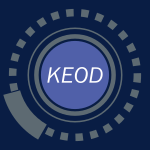 KEOD-2013-OimK #representation
KEOD-2013-OimK #representation- Event Representation in Text Understanding — Transfer of Meaning Structures (HÕ, MK), pp. 367–372.
 RecSys-2013-McAuleyL #overview #rating #topic
RecSys-2013-McAuleyL #overview #rating #topic- Hidden factors and hidden topics: understanding rating dimensions with review text (JJM, JL), pp. 165–172.
 RecSys-2013-PuF #matrix #recommendation #relational
RecSys-2013-PuF #matrix #recommendation #relational- Understanding and improving relational matrix factorization in recommender systems (LP, BF), pp. 41–48.
 SEKE-2013-DoranGD #online #social #social media
SEKE-2013-DoranGD #online #social #social media- Understanding Common Perceptions from Online Social Media (DD, SSG, AD), pp. 107–112.
 SEKE-2013-GomesPMFNO #education #network #profiling #social
SEKE-2013-GomesPMFNO #education #network #profiling #social- Group Profiling for Understanding Educational Social Networking (JG, RBCP, LM, AAF, ACAN, HO), pp. 101–106.
 SEKE-2013-LiLJJ #communication #concurrent #debugging #graph
SEKE-2013-LiLJJ #communication #concurrent #debugging #graph- Locating and Understanding Concurrency Bugs Based on Edge-labeled Communication Graphs (HL, ML, TJ, ZJ), pp. 525–530.
 SIGIR-2013-GaoCLC #query #towards
SIGIR-2013-GaoCLC #query #towards- Mapping queries to questions: towards understanding users’ information needs (YG, LC, RL, GC), pp. 977–980.
 SIGIR-2013-Limsopatham #framework #query
SIGIR-2013-Limsopatham #framework #query- A query and patient understanding framework for medical records search (NL), p. 1145.
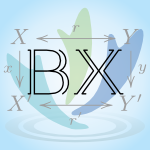 BX-2013-EramoB #bidirectional #graph grammar
BX-2013-EramoB #bidirectional #graph grammar- Understanding bidirectional transformations with TGGs and JTL (RE, AB), pp. 37–56.
 REFSQ-2013-HoffmannBL #development #process
REFSQ-2013-HoffmannBL #development #process- The Emergence of Mutual and Shared Understanding in the System Development Process (AH, EACB, JML), pp. 174–189.
 ESEC-FSE-2013-DuboisT #development #gamification
ESEC-FSE-2013-DuboisT #development #gamification- Understanding gamification mechanisms for software development (DJD, GT), pp. 659–662.
 ESEC-FSE-2013-SahaSP #case study #stack overflow #towards
ESEC-FSE-2013-SahaSP #case study #stack overflow #towards- Toward understanding the causes of unanswered questions in software information sites: a case study of stack overflow (RKS, AKS, DEP), pp. 663–666.
 ICSE-2013-Carvalho #concept #ontology #problem #tool support
ICSE-2013-Carvalho #concept #ontology #problem #tool support- An ontology toolkit for problem domain concept location in program comprehension (NRC), pp. 1415–1418.
 ICSE-2013-Guerrouj #normalisation #quality #source code
ICSE-2013-Guerrouj #normalisation #quality #source code- Normalizing source code vocabulary to support program comprehension and software quality (LG), pp. 1385–1388.
 ICSE-2013-Johnson04a #program analysis
ICSE-2013-Johnson04a #program analysis- Novice understanding of program analysis tool notifications (BJ), pp. 1432–1434.
 ICSE-2013-Lin #evolution #simulation
ICSE-2013-Lin #evolution #simulation- Understanding and simulating software evolution (ZL), pp. 1411–1414.
 ICSE-2013-NiuMCB #information management #requirements
ICSE-2013-NiuMCB #information management #requirements- Departures from optimality: understanding human analyst’s information foraging in assisted requirements tracing (NN, AM, ZC, GB), pp. 572–581.
 ICSE-2013-Park #concurrent #fault #source code
ICSE-2013-Park #concurrent #fault #source code- Fault comprehension for concurrent programs (SP), pp. 1444–1446.
 ICSE-2013-PhamSLFS #social #testing
ICSE-2013-PhamSLFS #social #testing- Creating a shared understanding of testing culture on a social coding site (RP, LS, OL, FMFF, KS), pp. 112–121.
 ICSE-2013-SukkerdBWZB
ICSE-2013-SukkerdBWZB - Understanding regression failures through test-passing and test-failing code changes (RS, IB, JW, SZ, YB), pp. 1177–1180.
 SAC-2013-VeeraragavanBMVNM #analysis #distributed #experience #interactive #metric #multi #quality
SAC-2013-VeeraragavanBMVNM #analysis #distributed #experience #interactive #metric #multi #quality- Understanding the quality of experience in modern distributed interactive multimedia applications in presence of failures: metrics and analysis (NRV, AB, LM, RV, NN, HM), pp. 439–446.
 DAC-2013-XuNMJX #design #memory management #multi #trade-off
DAC-2013-XuNMJX #design #memory management #multi #trade-off- Understanding the trade-offs in multi-level cell ReRAM memory design (CX, DN, NM, NPJ, YX), p. 6.
 DATE-2013-MalburgFF #analysis #data flow #design
DATE-2013-MalburgFF #analysis #data flow #design- Tuning dynamic data flow analysis to support design understanding (JM, AF, GF), pp. 1179–1184.
 PLOS-2013-TschudinRJLLM #linux #search-based
PLOS-2013-TschudinRJLLM #linux #search-based- Understanding the genetic makeup of Linux device drivers (PST, LR, LJ, DL, JLL, GM), p. 6.
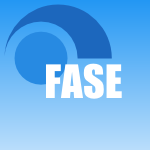 FASE-2013-BouchouchaSL #behaviour #modelling #probability #towards #using
FASE-2013-BouchouchaSL #behaviour #modelling #probability #towards #using- Towards Understanding the Behavior of Classes Using Probabilistic Models of Program Inputs (AB, HAS, PL), pp. 99–113.
 ICST-2013-Deak #social
ICST-2013-Deak #social- Understanding the Influence of Social and Technical Factors Testers in Software Organizations (AD), pp. 511–512.
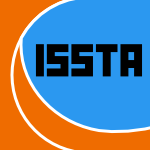 ISSTA-2013-ParkHV #concurrent #data access #debugging #named
ISSTA-2013-ParkHV #concurrent #data access #debugging #named- Griffin: grouping suspicious memory-access patterns to improve understanding of concurrency bugs (SP, MJH, RWV), pp. 134–144.
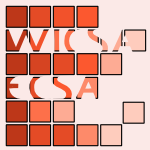 WICSA-ECSA-2012-BassN #architecture #evaluation
WICSA-ECSA-2012-BassN #architecture #evaluation- Understanding the Context of Architecture Evaluation Methods (LB, RLN), pp. 277–281.
 DocEng-2012-GabdulkhakovaH #documentation #visual notation
DocEng-2012-GabdulkhakovaH #documentation #visual notation- Document understanding of graphical content in natively digital PDF documents (AG, TH), pp. 137–140.
 DocEng-2012-GobelHOO #algorithm #documentation
DocEng-2012-GobelHOO #algorithm #documentation- A methodology for evaluating algorithms for table understanding in PDF documents (MCG, TH, EO, GO), pp. 45–48.
 HT-2012-ComarelaCAB #twitter
HT-2012-ComarelaCAB #twitter- Understanding factors that affect response rates in twitter (GC, MC, VA, FB), pp. 123–132.
 HT-2012-LipczakSJ #network #online #social
HT-2012-LipczakSJ #network #online #social- Understanding and leveraging tag-based relations in on-line social networks (ML, BS, AJ), pp. 229–238.
 SIGMOD-2012-NeophytouGHLBLMC #named #navigation #scalability
SIGMOD-2012-NeophytouGHLBLMC #named #navigation #scalability- AstroShelf: understanding the universe through scalable navigation of a galaxy of annotations (PN, RG, RH, TL, DB, AL, GEM, PKC), pp. 713–716.
 SIGMOD-2012-WuLWZ #named #probability #taxonomy
SIGMOD-2012-WuLWZ #named #probability #taxonomy- Probase: a probabilistic taxonomy for text understanding (WW, HL, HW, KQZ), pp. 481–492.
 VLDB-2012-PrakashF #graph #scalability
VLDB-2012-PrakashF #graph #scalability- Understanding and Managing Cascades on Large Graphs (BAP, CF), pp. 2024–2025.
 ITiCSE-2012-Sudol-DeLyserSC #learning #problem
ITiCSE-2012-Sudol-DeLyserSC #learning #problem- Code comprehension problems as learning events (LASD, MS, SC), pp. 81–86.
 CSMR-2012-BauerH #api #maintenance
CSMR-2012-BauerH #api #maintenance- Understanding API Usage to Support Informed Decision Making in Software Maintenance (VB, LH), pp. 435–440.
 CSMR-2012-Izquierdo-Cortazar #debugging #distributed #process
CSMR-2012-Izquierdo-Cortazar #debugging #distributed #process- Global and Geographically Distributed Work Teams: Understanding the Bug Fixing Process and Potentially Bug-prone Activity Patterns (DIC), pp. 505–508.
 CSMR-2012-TerceiroMCC #analysis #complexity #evolution
CSMR-2012-TerceiroMCC #analysis #complexity #evolution- Understanding Structural Complexity Evolution: A Quantitative Analysis (ASdAT, MGM, CC, DSC), pp. 85–94.
 ICPC-2012-FeigenspanS
ICPC-2012-FeigenspanS - Supporting comprehension experiments with human subjects (JF, NS), pp. 244–246.
 ICPC-2012-HauptmannJEJV #clone detection #detection #question
ICPC-2012-HauptmannJEJV #clone detection #detection #question- Can clone detection support test comprehension? (BH, MJ, SE, EJ, RV), pp. 209–218.
 ICPC-2012-NunezK #abstraction #case study #user study
ICPC-2012-NunezK #abstraction #case study #user study- Understanding registration-based abstractions: A quantitative user study (JJN, GK), pp. 93–102.
 ICPC-2012-RajlichW #concept
ICPC-2012-RajlichW #concept- A retrospective view on: The role of concepts in program comprehension: (MIP award) (VR, NW), pp. 12–13.
 ICPC-2012-RuizNAH #android #reuse
ICPC-2012-RuizNAH #android #reuse- Understanding reuse in the Android Market (IJMR, MN, BA, AEH), pp. 113–122.
 ICPC-2012-SohSPPGA #diagrams #empirical #uml
ICPC-2012-SohSPPGA #diagrams #empirical #uml- Professional status and expertise for UML class diagram comprehension: An empirical study (ZS, ZS, BVdP, GCP, YGG, GA), pp. 163–172.
 ICSM-2012-KehrerKOS #difference #evolution #semantics
ICSM-2012-KehrerKOS #difference #evolution #semantics- Understanding model evolution through semantically lifting model differences with SiLift (TK, UK, MO, TS), pp. 638–641.
 ICSM-2012-KuangMHGHJE #dependence #question #requirements #source code #traceability
ICSM-2012-KuangMHGHJE #dependence #question #requirements #source code #traceability- Do data dependencies in source code complement call dependencies for understanding requirements traceability? (HK, PM, HH, AG, LH, JL, AE), pp. 181–190.
 ICSM-2012-Weitzel #architecture #deployment #enterprise #towards
ICSM-2012-Weitzel #architecture #deployment #enterprise #towards- Understanding deployment costs of enterprise systems: Towards architecture support in deployment decisions (BW), pp. 677–680.
 SCAM-2012-KargenS #analysis #data flow #named
SCAM-2012-KargenS #analysis #data flow #named- InputTracer: A Data-Flow Analysis Tool for Manual Program Comprehension of x86 Binaries (UK, NS), pp. 138–143.
 WCRE-2012-EspinhaZG #runtime
WCRE-2012-EspinhaZG #runtime- Understanding the Runtime Topology of Service-Oriented Systems (TE, AZ, HGG), pp. 187–196.
 WCRE-2012-HanZFHWS #analysis #android #debugging #topic
WCRE-2012-HanZFHWS #analysis #android #debugging #topic- Understanding Android Fragmentation with Topic Analysis of Vendor-Specific Bugs (DH, CZ, XF, AH, KW, ES), pp. 83–92.
 IFM-2012-RochaBCN #bound #debugging #model checking #programming #using
IFM-2012-RochaBCN #bound #debugging #model checking #programming #using- Understanding Programming Bugs in ANSI-C Software Using Bounded Model Checking Counter-Examples (HR, RSB, LCC, ADN), pp. 128–142.
 AIIDE-2012-OrkinR #crowdsourcing #interactive #speech
AIIDE-2012-OrkinR #crowdsourcing #interactive #speech- Understanding Speech in Interactive Narratives with Crowdsourced Data (JO, DKR).
 FDG-2012-Brown #game studies
FDG-2012-Brown #game studies- Let's play: understanding the role and meaning of digital games in the lives of older adults (JAB), pp. 273–275.
 FDG-2012-Cardona-RiveraY #game studies
FDG-2012-Cardona-RiveraY #game studies- Characterizing gameplay in a player model of game story comprehension (RCR, RMY), pp. 204–211.
 CHI-2012-ChangM #authoring #named #reuse #web
CHI-2012-ChangM #authoring #named #reuse #web- WebCrystal: understanding and reusing examples in web authoring (KSPC, BAM), pp. 3205–3214.
 CHI-2012-ChettyBBDG
CHI-2012-ChettyBBDG - You’re capped: understanding the effects of bandwidth caps on broadband use in the home (MC, RB, AJBB, JD, REG), pp. 3021–3030.
 CHI-2012-LeeKYYK #case study #mobile
CHI-2012-LeeKYYK #case study #mobile- Understanding mobile Q&A usage: an exploratory study (UL, HK, EY, MY, JK), pp. 3215–3224.
 CHI-2012-LiaoWPF #twitter
CHI-2012-LiaoWPF #twitter- Understanding experts’ and novices’ expertise judgment of twitter users (QVL, CW, PP, WTF), pp. 2461–2464.
 CHI-2012-LichtschlagHKB #experience #named #user interface
CHI-2012-LichtschlagHKB #experience #named #user interface- Fly: studying recall, macrostructure understanding, and user experience of canvas presentations (LL, TH, TK, JOB), pp. 1307–1310.
 CHI-2012-MetoyerLRC #visualisation
CHI-2012-MetoyerLRC #visualisation- Understanding the verbal language and structure of end-user descriptions of data visualizations (RAM, BL, NHR, MC), pp. 1659–1662.
 CHI-2012-NicolauJ #type system #using
CHI-2012-NicolauJ #type system #using- Touch typing using thumbs: understanding the effect of mobility and hand posture (HN, JAJ), pp. 2683–2686.
 CHI-2012-OdomSHT #in the cloud
CHI-2012-OdomSHT #in the cloud- Lost in translation: understanding the possession of digital things in the cloud (WO, AS, RHRH, ET), pp. 781–790.
 CHI-2012-SambasivanC
CHI-2012-SambasivanC - Understanding negotiation in airtime sharing in low-income microenterprises (NS, EC), pp. 791–800.
 CHI-2012-SchildLM #3d #experience #game studies #user interface
CHI-2012-SchildLM #3d #experience #game studies #user interface- Understanding user experience in stereoscopic 3D games (JS, JJLJ, MM), pp. 89–98.
 CHI-2012-SlovakJF #towards
CHI-2012-SlovakJF #towards- Understanding heart rate sharing: towards unpacking physiosocial space (PS, JJ, GF), pp. 859–868.
 CHI-2012-TholanderNR #design #interactive
CHI-2012-TholanderNR #design #interactive- Understanding agency in interaction design materials (JT, MN, CR), pp. 2499–2508.
 CHI-2012-VoelkerSWB
CHI-2012-VoelkerSWB - Understanding flicking on curved surfaces (SV, CS, LW, JOB), pp. 189–198.
 CHI-2012-ZhuHL #online #social
CHI-2012-ZhuHL #online #social- To switch or not to switch: understanding social influence in online choices (HZ, BAH, YL), pp. 2257–2266.
 CSCW-2012-EiriksdottirKCMMXP #game studies #health #multi #pervasive
CSCW-2012-EiriksdottirKCMMXP #game studies #health #multi #pervasive- This is not a one-horse race: understanding player types in multiplayer pervasive health games for youth (EE, DK, RC, EDM, ADM, YX, ESP), pp. 843–852.
 CSCW-2012-MorrisCRHS #microblog #twitter
CSCW-2012-MorrisCRHS #microblog #twitter- Tweeting is believing?: understanding microblog credibility perceptions (MRM, SC, AR, AH, JS), pp. 441–450.
 CAiSE-2012-AbdullahSI #modelling #ontology
CAiSE-2012-AbdullahSI #modelling #ontology- A Compliance Management Ontology: Developing Shared Understanding through Models (NSA, SWS, MI), pp. 429–444.
 CAiSE-2012-DumasRMMRS #cost analysis #modelling #process
CAiSE-2012-DumasRMMRS #cost analysis #modelling #process- Understanding Business Process Models: The Costs and Benefits of Structuredness (MD, MLR, JM, RM, HAR, NS), pp. 31–46.
 ICEIS-v2-2012-MunozMJ
ICEIS-v2-2012-MunozMJ - Storm as a Model for Measuring Understanding of Electrical Field (MMM, JAGdM, MLJ), pp. 59–62.
 CIKM-2012-DiriyeWBD #predict #web
CIKM-2012-DiriyeWBD #predict #web- Leaving so soon?: understanding and predicting web search abandonment rationales (AD, RW, GB, STD), pp. 1025–1034.
 CIKM-2012-HerschelE #data transformation #debugging
CIKM-2012-HerschelE #data transformation #debugging- The nautilus analyzer: understanding and debugging data transformations (MH, HE), pp. 2731–2733.
 CIKM-2012-KimFC #behaviour #web
CIKM-2012-KimFC #behaviour #web- Understanding book search behavior on the web (JYK, HAF, MAC), pp. 744–753.
 KDD-2012-AgrawalCGKK
KDD-2012-AgrawalCGKK - Empowering authors to diagnose comprehension burden in textbooks (RA, SC, SG, AK, KK), pp. 967–975.
 KDD-2012-Davidson #clustering #constraints
KDD-2012-Davidson #clustering #constraints- Two approaches to understanding when constraints help clustering (ID), pp. 1312–1320.
 KDD-2012-Sun #evaluation
KDD-2012-Sun #evaluation- Understanding users’ satisfaction for search engine evaluation (GS), p. 1404.
 KDD-2012-TangLGS #evolution #named #online #trust
KDD-2012-TangLGS #evolution #named #online #trust- eTrust: understanding trust evolution in an online world (JT, HG, HL, ADS), pp. 253–261.
 SEKE-2012-VicenteDMM #execution #kernel #operating system
SEKE-2012-VicenteDMM #execution #kernel #operating system- Improving Program Comprehension in Operating System Kernels with Execution Trace Information (EV, GD, RM, MdAM), pp. 174–179.
 SIGIR-2012-AgichteinWDB #continuation #predict
SIGIR-2012-AgichteinWDB #continuation #predict- Search, interrupted: understanding and predicting search task continuation (EA, RWW, STD, PNB), pp. 315–324.
 SIGIR-2012-LiuADMS #web
SIGIR-2012-LiuADMS #web- When web search fails, searchers become askers: understanding the transition (QL, EA, GD, YM, IS), pp. 801–810.
 MoDELS-2012-GravinoRST #design pattern #developer #documentation #replication #source code
MoDELS-2012-GravinoRST #design pattern #developer #documentation #replication #source code- Do Professional Developers Benefit from Design Pattern Documentation? A Replication in the Context of Source Code Comprehension (CG, MR, GS, GT), pp. 185–201.
 OOPSLA-2012-KaliberaMJV #approach #black box #concurrent
OOPSLA-2012-KaliberaMJV #approach #black box #concurrent- A black-box approach to understanding concurrency in DaCapo (TK, MM, REJ, JV), pp. 335–354.
 OOPSLA-2012-TamayoABS #behaviour #database
OOPSLA-2012-TamayoABS #behaviour #database- Understanding the behavior of database operations under program control (JMT, AA, NGB, MS), pp. 983–996.
 TOOLS-EUROPE-2012-GreilerDZ #similarity #testing
TOOLS-EUROPE-2012-GreilerDZ #similarity #testing- Measuring Test Case Similarity to Support Test Suite Understanding (MG, AvD, AZ), pp. 91–107.
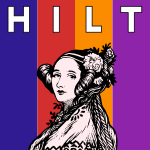 HILT-2012-Nilsen #java #memory management #overview #safety #tutorial
HILT-2012-Nilsen #java #memory management #overview #safety #tutorial- Tutorial overview: understanding dynamic memory management in safety critical java (KN), pp. 15–22.
 PLDI-2012-JinSSSL #debugging #detection #performance
PLDI-2012-JinSSSL #debugging #detection #performance- Understanding and detecting real-world performance bugs (GJ, LS, XS, JS, SL), pp. 77–88.
 FSE-2012-PintoSO #evolution #testing
FSE-2012-PintoSO #evolution #testing- Understanding myths and realities of test-suite evolution (LSP, SS, AO), p. 33.
 FSE-2012-SiegmundBAKLLS #functional #towards
FSE-2012-SiegmundBAKLLS #functional #towards- Toward measuring program comprehension with functional magnetic resonance imaging (JS, AB, SA, CK, JL, TL, GS), p. 24.
 ICSE-2012-DietzLRA #c #c++ #integer
ICSE-2012-DietzLRA #c #c++ #integer- Understanding integer overflow in C/C++ (WD, PL, JR, VSA), pp. 760–770.
 ICSE-2012-NovaisNLCDGM #evolution #industrial #interactive #on the #visualisation
ICSE-2012-NovaisNLCDGM #evolution #industrial #interactive #on the #visualisation- On the proactive and interactive visualization for feature evolution comprehension: An industrial investigation (RLN, CN, CANL, EC, FD, AG, MGM), pp. 1044–1053.
 ICSE-2012-SillittiSV #case study #developer #industrial #programming #scalability
ICSE-2012-SillittiSV #case study #developer #industrial #programming #scalability- Understanding the impact of Pair Programming on developers attention: A case study on a large industrial experimentation (AS, GS, JV), pp. 1094–1101.
 SAC-2012-DandamudiWH #animation #framework #source code
SAC-2012-DandamudiWH #animation #framework #source code- An animation framework for improving the comprehension of TinyOS programs (SD, SKW, JOH), pp. 1625–1631.
 ASPLOS-2012-HwangSS #design #fault
ASPLOS-2012-HwangSS #design #fault- Cosmic rays don’t strike twice: understanding the nature of DRAM errors and the implications for system design (AAH, IAS, BS), pp. 111–122.
 ASPLOS-2012-KadavS
ASPLOS-2012-KadavS - Understanding modern device drivers (AK, MMS), pp. 87–98.
 DAC-2012-LinK #logic #search-based #synthesis
DAC-2012-LinK #logic #search-based #synthesis- Application of logic synthesis to the understanding and cure of genetic diseases (PCKL, SPK), pp. 734–740.
 HPDC-2012-DinuN
HPDC-2012-DinuN - Understanding the effects and implications of compute node related failures in hadoop (FD, TSEN), pp. 187–198.
 ICST-2012-Nguyen #detection #performance #scalability #using
ICST-2012-Nguyen #detection #performance #scalability #using- Using Control Charts for Detecting and Understanding Performance Regressions in Large Software (THDN), pp. 491–494.
 ISSTA-2012-StaatsHKR #correctness #invariant
ISSTA-2012-StaatsHKR #correctness #invariant- Understanding user understanding: determining correctness of generated program invariants (MS, SH, MK, GR), pp. 188–198.
 SAT-2012-Bradley
SAT-2012-Bradley - Understanding IC3 (ARB), pp. 1–14.
 ICDAR-2011-BaeXE #documentation #scalability
ICDAR-2011-BaeXE #documentation #scalability- Facilitating Understanding of Large Document Collections (JHB, WX, ME), pp. 1334–1338.
 ICDAR-2011-DeckertSEG
ICDAR-2011-DeckertSEG - Table Content Understanding in SmartFIX (FD, BS, ME, MG), pp. 488–492.
 JCDL-2011-MaullSS #approach #library
JCDL-2011-MaullSS #approach #library- Understanding digital library adoption: a use diffusion approach (KEM, MGS, TS), pp. 259–268.
 TPDL-2011-AlhooriF #behaviour #research #social
TPDL-2011-AlhooriF #behaviour #research #social- Understanding the Dynamic Scholarly Research Needs and Behavior as Applied to Social Reference Management (HA, RF), pp. 169–178.
 TPDL-2011-ScifleetW #encoding #lessons learnt
TPDL-2011-ScifleetW #encoding #lessons learnt- Understanding Documentary Practice: Lessons Learnt from the Text Encoding Initiative (PS, SPW), pp. 272–283.
 CSEET-2011-RodriguesW #architecture
CSEET-2011-RodriguesW #architecture- Making the comprehension of software architecture attractive (CSCR, CMLW), pp. 416–420.
 ITiCSE-2011-DennyLTH #syntax
ITiCSE-2011-DennyLTH #syntax- Understanding the syntax barrier for novices (PD, ALR, EDT, JH), pp. 208–212.
 ITiCSE-2011-ShuhidanHD #learning
ITiCSE-2011-ShuhidanHD #learning- Understanding novice programmer difficulties via guided learning (SMS, MH, DJD), pp. 213–217.
 SCAM-J-2009-PhalpAJVK11 #case study #requirements
SCAM-J-2009-PhalpAJVK11 #case study #requirements- The role of comprehension in requirements and implications for use case descriptions (KP, AA, SJ, JV, JMK), pp. 461–486.
 CSMR-2011-AbbesKGA #empirical
CSMR-2011-AbbesKGA #empirical- An Empirical Study of the Impact of Two Antipatterns, Blob and Spaghetti Code, on Program Comprehension (MA, FK, YGG, GA), pp. 181–190.
 CSMR-2011-BacchelliLH
CSMR-2011-BacchelliLH - RTFM (Read the Factual Mails) — Augmenting Program Comprehension with Remail (AB, ML, VH), pp. 15–24.
 ICPC-2011-BegelQ #challenge #embedded #industrial
ICPC-2011-BegelQ #challenge #embedded #industrial- Industrial Program Comprehension Challenge 2011: Archeology and Anthropology of Embedded Control Systems (AB, JQ), pp. 227–229.
 ICPC-2011-EitanGHMW #on the #source code #visualisation
ICPC-2011-EitanGHMW #on the #source code #visualisation- On Visualization and Comprehension of Scenario-Based Programs (NE, MG, DH, AM, GW), pp. 189–192.
 ICPC-2011-GuzziHLPD
ICPC-2011-GuzziHLPD - Collective Code Bookmarks for Program Comprehension (AG, LH, ML, MP, AvD), pp. 101–110.
 ICPC-2011-HattoriDLL #evolution
ICPC-2011-HattoriDLL #evolution- Software Evolution Comprehension: Replay to the Rescue (LH, MD, ML, ML), pp. 161–170.
 ICPC-2011-Soh
ICPC-2011-Soh - Context and Vision: Studying Two Factors Impacting Program Comprehension (ZS), pp. 258–261.
 ICPC-2011-SyerAH #behaviour #case study #industrial
ICPC-2011-SyerAH #behaviour #case study #industrial- Industrial Case Study on Supporting the Comprehension of System Behaviour under Load (MDS, BA, AEH), pp. 215–216.
 ICSM-2011-HongKCB #developer #evolution #network #social
ICSM-2011-HongKCB #developer #evolution #network #social- Understanding a developer social network and its evolution (QH, SK, SCC, CB), pp. 323–332.
 ICSM-2011-NishizonoMVM #empirical #evolution #industrial #maintenance #metric #predict #source code
ICSM-2011-NishizonoMVM #empirical #evolution #industrial #maintenance #metric #predict #source code- Source code comprehension strategies and metrics to predict comprehension effort in software maintenance and evolution tasks — an empirical study with industry practitioners (KN, SM, RV, KiM), pp. 473–481.
 WCRE-2011-GravinoRST #design pattern #documentation #source code
WCRE-2011-GravinoRST #design pattern #documentation #source code- Does the Documentation of Design Pattern Instances Impact on Source Code Comprehension? Results from Two Controlled Experiments (CG, MR, GS, GT), pp. 67–76.
 WCRE-2011-OlszakJ #legacy
WCRE-2011-OlszakJ #legacy- Understanding Legacy Features with Featureous (AO, BNJ), pp. 435–436.
 DLT-J-2009-Zetzsche11 #capacity #generative #matrix #towards
DLT-J-2009-Zetzsche11 #capacity #generative #matrix #towards- Toward Understanding the Generative Capacity of Erasing Rules in Matrix Grammars (GZ), pp. 411–426.
 DiGRA-2011-Mirza-BabaeiLF #game studies #research
DiGRA-2011-Mirza-BabaeiLF #game studies #research- Understanding the Contribution of Biometrics to Games User Research (PMB, SL, EF).
 DiGRA-2011-SoppittM #analysis #experience #using
DiGRA-2011-SoppittM #analysis #experience #using- Understanding Player Experience using Sequential Analysis (MS, GM).
 DiGRA-2011-XuBRGM #design #game studies #social
DiGRA-2011-XuBRGM #design #game studies #social- Chores Are Fun: Understanding Social Play in Board Games for Digital Tabletop Game Design (YX0, EB, IR, MG, BM).
 FDG-2011-CheemaL #3d #experience #game studies #gesture #towards
FDG-2011-CheemaL #3d #experience #game studies #gesture #towards- Wizard of Wii: toward understanding player experience in first person games with 3D gestures (SC, JJLJ), pp. 265–267.
 CHI-2011-CheungH #game studies
CHI-2011-CheungH #game studies- Starcraft from the stands: understanding the game spectator (GC, JH), pp. 763–772.
 CHI-2011-GoodmanSW #design #interactive
CHI-2011-GoodmanSW #design #interactive- Understanding interaction design practices (EG, ES, RW), pp. 1061–1070.
 CHI-2011-GrandhiJM #gesture #interface
CHI-2011-GrandhiJM #gesture #interface- Understanding naturalness and intuitiveness in gesture production: insights for touchless gestural interfaces (SAG, GJ, IM), pp. 821–824.
 CHI-2011-HolzB
CHI-2011-HolzB - Understanding touch (CH, PB), pp. 2501–2510.
 CHI-2011-KaneWL #gesture #people #performance
CHI-2011-KaneWL #gesture #people #performance- Usable gestures for blind people: understanding preference and performance (SKK, JOW, REL), pp. 413–422.
 CHI-2011-LaheyGBV #flexibility #gesture #mobile #named #using
CHI-2011-LaheyGBV #flexibility #gesture #mobile #named #using- PaperPhone: understanding the use of bend gestures in mobile devices with flexible electronic paper displays (BL, AG, WB, RV), pp. 1303–1312.
 CHI-2011-MartinRB #delivery #interactive #modelling
CHI-2011-MartinRB #delivery #interactive #modelling- Client TouchPoint modeling: understanding client interactions in the context of service delivery (AMM, YAR, JB), pp. 979–982.
 CHI-2011-ScarrCGQ #user interface
CHI-2011-ScarrCGQ #user interface- Dips and ceilings: understanding and supporting transitions to expertise in user interfaces (JS, AC, CG, PQ), pp. 2741–2750.
 CHI-2011-SundstromTGWBL #towards
CHI-2011-SundstromTGWBL #towards- Inspirational bits: towards a shared understanding of the digital material (PS, AST, KG, NW, JSB, ML), pp. 1561–1570.
 CHI-2011-WeilenmannJ #interactive #people #using
CHI-2011-WeilenmannJ #interactive #people #using- Understanding people and animals: the use of a positioning system in ordinary human-canine interaction (AW, OJ), pp. 2631–2640.
 CSCW-2011-AmesGKS #social
CSCW-2011-AmesGKS #social- Understanding technology choices and values through social class (MGA, JG, JK, MS), pp. 55–64.
 CSCW-2011-XuCSHG #game studies #online #social
CSCW-2011-XuCSHG #game studies #online #social- Sociable killers: understanding social relationships in an online first-person shooter game (YX, XC, AS, RH, TG), pp. 197–206.
 DUXU-v2-2011-KaptanG11a #scalability
DUXU-v2-2011-KaptanG11a #scalability- Improving Code Reading and Comprehension on Large Displays (SNK, MG), pp. 128–134.
 HCD-2011-YajimaSY #problem #visualisation
HCD-2011-YajimaSY #problem #visualisation- Understanding the Business Realities: An Interview Technique Which Can Visualize the Job Problems (AY, YS, TY), pp. 449–457.
 HCI-UA-2011-AbrahamJ #perspective #why
HCI-UA-2011-AbrahamJ #perspective #why- An Enriched Understanding of Why the Environment and Individual Characteristics Are Important in Understanding Technology Utilization in Healthcare: An Evolutionary Psychology Perspective (CA, IAJ), pp. 141–150.
 HCI-UA-2011-HuangCLHYCCT
HCI-UA-2011-HuangCLHYCCT - Effects of Print-Storybooks and E-Storybooks with Reading Comprehension Strategies on Fifth Graders’ Reading Comprehension Ability (HSH, SLC, YML, HCH, CYY, YYC, CLC, YYT), pp. 570–579.
 HCI-UA-2011-JohnsonLTS #approach #monitoring #towards
HCI-UA-2011-JohnsonLTS #approach #monitoring #towards- Toward an Understanding of a Computerized Monitoring System Failure: An Interpretive Approach (NJ, YL, FT, SS), pp. 336–345.
 HCI-UA-2011-KimuraF #communication #design
HCI-UA-2011-KimuraF #communication #design- Design of Communication Field for Leading to Satisfied Understanding: Example of High-Level Radioactive Waste Disposal in Japan (HK, MF), pp. 354–359.
 HIMI-v2-2011-Otsuka #analysis #behaviour #multimodal #people
HIMI-v2-2011-Otsuka #analysis #behaviour #multimodal #people- Multimodal Conversation Scene Analysis for Understanding People’s Communicative Behaviors in Face-to-Face Meetings (KO), pp. 171–179.
 IDGD-2011-LiuL #complexity #performance #towards
IDGD-2011-LiuL #complexity #performance #towards- Toward Understanding the Relationship between Task Complexity and Task Performance (PL, ZL), pp. 192–200.
 IDGD-2011-OginoKIK #behaviour
IDGD-2011-OginoKIK #behaviour- Smart Store Understanding Consumer’s Preference through Behavior Logs (AO, TK, YI, TK), pp. 385–392.
 CAiSE-2011-MohanA #what
CAiSE-2011-MohanA #what- What Methodology Attributes Are Critical for Potential Users? Understanding the Effect of Human Needs (KM, FA), pp. 314–328.
 CAiSE-2011-SunLZLY
CAiSE-2011-SunLZLY - Understanding the Diversity of Services Based on Users’ Identities (JS, FL, HZ, LL, ESKY), pp. 612–626.
 ICEIS-J-2011-Shen #comparison #social #trust
ICEIS-J-2011-Shen #comparison #social #trust- Understanding User’s Acceptance of Social Shopping Websites: Effects of Social Comparison and Trust (JS), pp. 365–373.
 ICEIS-v4-2011-Jung #game studies #video
ICEIS-v4-2011-Jung #game studies #video- Understanding Media Violence from a Role-play Perspective — Effects of Various Types of Violent Video Games on Players’ Cognitive Aggression (YJ), pp. 261–266.
 ICEIS-v4-2011-ZhaoH #empirical #game studies #human-computer
ICEIS-v4-2011-ZhaoH #empirical #game studies #human-computer- Understanding HCI Issues of Browser Game Playing in China — An Empirical Study (FZ, QH), pp. 254–260.
 CIKM-2011-AkerG
CIKM-2011-AkerG - Understanding the types of information humans associate with geographic objects (AA, RJG), pp. 1929–1932.
 CIKM-2011-AwadallahRW #named #network #topic
CIKM-2011-AwadallahRW #named #network #topic- OpinioNetIt: understanding the opinions-people network for politically controversial topics (RA, MR, GW), pp. 2481–2484.
 CIKM-2011-LiuNSC #classification #query #transaction
CIKM-2011-LiuNSC #classification #query #transaction- Unsupervised transactional query classification based on webpage form understanding (YL, XN, JTS, ZC), pp. 57–66.
 ECIR-2011-NaveedSS #evolution #named #topic
ECIR-2011-NaveedSS #evolution #named #topic- ATTention: Understanding Authors and Topics in Context of Temporal Evolution (NN, SS, SS), pp. 733–737.
 ECIR-2011-ZhouH #learning #natural language #random
ECIR-2011-ZhouH #learning #natural language #random- Learning Conditional Random Fields from Unaligned Data for Natural Language Understanding (DZ, YH), pp. 283–288.
 KDD-2011-SimonLJV #image #using
KDD-2011-SimonLJV #image #using- Understanding atrophy trajectories in alzheimer’s disease using association rules on MRI images (GJS, PWL, CRJJ, PV), pp. 369–376.
 KDD-2011-ZhangCWY #behaviour #modelling #predict
KDD-2011-ZhangCWY #behaviour #modelling #predict- User-click modeling for understanding and predicting search-behavior (YZ, WC, DW, QY), pp. 1388–1396.
 KDIR-2011-CamelinDHQL #concept
KDIR-2011-CamelinDHQL #concept- Concept Discovery for Language Understanding in an Information-query Dialogue System (NC, BD, SH, DQ, FL), pp. 24–29.
 SIGIR-2011-ElsweilerHH #behaviour #email #interactive
SIGIR-2011-ElsweilerHH #behaviour #email #interactive- Understanding re-finding behavior in naturalistic email interaction logs (DE, MH, MH), pp. 35–44.
 SIGIR-2011-GuoWZAD #predict #why
SIGIR-2011-GuoWZAD #predict #why- Why searchers switch: understanding and predicting engine switching rationales (QG, RWW, YZ, BA, STD), pp. 335–344.
 SIGIR-2011-Wang #information management #recommendation #using
SIGIR-2011-Wang #information management #recommendation #using- Understanding and using contextual information in recommender systems (LW), pp. 1329–1330.
 MoDELS-2011-BavotaGOLTGC #diagrams #identification #uml
MoDELS-2011-BavotaGOLTGC #diagrams #identification #uml- Identifying the Weaknesses of UML Class Diagrams during Data Model Comprehension (GB, CG, RO, ADL, GT, MG, JACL), pp. 168–182.
 PLATEAU-2011-FreyGS #categorisation #category theory
PLATEAU-2011-FreyGS #categorisation #category theory- Categorization of concerns: a categorical program comprehension model (TF, MG, GS), pp. 73–82.
 PLDI-2011-LuciaWC #concurrent #execution #fault #using
PLDI-2011-LuciaWC #concurrent #execution #fault #using- Isolating and understanding concurrency errors using reconstructed execution fragments (BL, BPW, LC), pp. 378–388.
 PLDI-2011-SarkarSAMW #multi
PLDI-2011-SarkarSAMW #multi- Understanding POWER multiprocessors (SS, PS, JA, LM, DW), pp. 175–186.
 PLDI-2011-YangCER #c #compilation #debugging
PLDI-2011-YangCER #c #compilation #debugging- Finding and understanding bugs in C compilers (XY, YC, EE, JR), pp. 283–294.
 POPL-2011-SmaragdakisBL
POPL-2011-SmaragdakisBL - Pick your contexts well: understanding object-sensitivity (YS, MB, OL), pp. 17–30.
 RE-2011-VeerappaL #clustering #multi #problem
RE-2011-VeerappaL #clustering #multi #problem- Understanding clusters of optimal solutions in multi-objective decision problems (VV, EL), pp. 89–98.
 REFSQ-2011-MertenLB #enterprise #requirements #research #towards
REFSQ-2011-MertenLB #enterprise #requirements #research #towards- Towards a New Understanding of Small and Medium Sized Enterprises in Requirements Engineering Research (TM, KL, SB), pp. 60–65.
 ESEC-FSE-2011-Rossler
ESEC-FSE-2011-Rossler - Understanding failures through facts (JR), pp. 404–407.
 ICSE-2011-MatthijssenZ #ajax #detection #interactive #named
ICSE-2011-MatthijssenZ #ajax #detection #interactive #named- FireDetective: understanding ajax client/server interactions (NM, AZ), pp. 998–1000.
 ICSE-2011-RigbyS #open source #overview
ICSE-2011-RigbyS #open source #overview- Understanding broadcast based peer review on open source software projects (PCR, MADS), pp. 541–550.
 ICSE-2011-SillittiSV #towards
ICSE-2011-SillittiSV #towards- Toward a better understanding of tool usage (AS, GS, JV), pp. 832–835.
 SAC-2011-KontogiannisWM #clustering #reduction #runtime
SAC-2011-KontogiannisWM #clustering #reduction #runtime- Event clustering for log reduction and run time system understanding (KK, AW, SM), pp. 191–192.
 SAC-2011-SchneiderPB #wiki
SAC-2011-SchneiderPB #wiki- Understanding and improving Wikipedia article discussion spaces (JS, AP, JGB), pp. 808–813.
 SAC-2011-WajidMNG #documentation #enterprise #tool support
SAC-2011-WajidMNG #documentation #enterprise #tool support- Tool support for realising a common understanding of business documents in collaborating enterprises (UW, NM, AN, PG), pp. 331–333.
 DAC-2011-TsengGS #memory management
DAC-2011-TsengGS #memory management- Understanding the impact of power loss on flash memory (HWT, LMG, SS), pp. 35–40.
 DATE-2011-AgarwalWG
DATE-2011-AgarwalWG - Understanding the role of buildings in a smart microgrid (YA, TW, RKG), pp. 1224–1229.
 SOSP-2011-HarterDVAA #behaviour
SOSP-2011-HarterDVAA #behaviour- A file is not a file: understanding the I/O behavior of Apple desktop applications (TH, CD, MV, ACAD, RHAD), pp. 71–83.
 ECSA-2010-HeeschA #architecture #overview #process #reasoning #student
ECSA-2010-HeeschA #architecture #overview #process #reasoning #student- Naive Architecting — Understanding the Reasoning Process of Students — A Descriptive Survey (UvH, PA), pp. 24–37.
 ECDL-2010-Dumais #information management #named #people #web
ECDL-2010-Dumais #information management #named #people #web- Keynote: The Web Changes Everything: Understanding and Supporting People in Dynamic Information Environments (STD), p. 1.
 HT-2010-GouldingBA #hypermedia
HT-2010-GouldingBA #hypermedia- Hyperorders and transclusion: understanding dimensional hypertext (JG, TJB, HA), pp. 201–210.
 PODS-2010-FaginKLRV #database #query
PODS-2010-FaginKLRV #database #query- Understanding queries in a search database system (RF, BK, YL, SR, SV), pp. 273–284.
 PODS-2010-ReS #estimation #using
PODS-2010-ReS #estimation #using- Understanding cardinality estimation using entropy maximization (CR, DS), pp. 53–64.
 VLDB-2010-GlavicAMH #behaviour #named
VLDB-2010-GlavicAMH #behaviour #named- TRAMP: Understanding the Behavior of Schema Mappings through Provenance (BG, GA, RJM, LMH), pp. 1314–1325.
 EDM-2010-Pavlik #learning #reduction
EDM-2010-Pavlik #learning #reduction- Data Reduction Methods Applied to Understanding Complex Learning Hypotheses (PIPJ), pp. 311–312.
 ITiCSE-2010-ScholtzS #modelling #recursion #student
ITiCSE-2010-ScholtzS #modelling #recursion #student- Mental models of recursion: investigating students’ understanding of recursion (TLS, IDS), pp. 103–107.
 CSMR-2010-BritoGM10a #legacy
CSMR-2010-BritoGM10a #legacy- LIFT Revisited: Enhancing the Understanding of NATURAL/ADABAS Legacy Systems (KdSB, VCG, SRdLM), pp. 272–273.
 ICPC-2010-AmalfitanoFPT #ajax #named #web
ICPC-2010-AmalfitanoFPT #ajax #named #web- DynaRIA: A Tool for Ajax Web Application Comprehension (DA, ARF, AP, PT), pp. 46–47.
 ICPC-2010-Begel #people
ICPC-2010-Begel #people- From Program Comprehension to People Comprehension (AB), pp. 190–191.
 ICPC-2010-Berman #architecture #low level
ICPC-2010-Berman #architecture #low level- Sound as an Aid in Understanding Low-Level Program Architecture (LB), pp. 58–59.
 ICPC-2010-FeigenspanKFDA #product line #visual notation
ICPC-2010-FeigenspanKFDA #product line #visual notation- Visual Support for Understanding Product Lines (JF, CK, MF, RD, SA), pp. 34–35.
 ICPC-2010-GermanPD #open source
ICPC-2010-GermanPD #open source- Understanding and Auditing the Licensing of Open Source Software Distributions (DMG, MDP, JD), pp. 84–93.
 ICPC-2010-LammelP #domain-specific language
ICPC-2010-LammelP #domain-specific language- Vivisection of a Non-Executable, Domain-Specific Language — Understanding (the Usage of) the P3P Language (RL, EP), pp. 104–113.
 ICPC-2010-MatthijssenZSBD #ajax #interactive
ICPC-2010-MatthijssenZSBD #ajax #interactive- Connecting Traces: Understanding Client-Server Interactions in Ajax Applications (NM, AZ, MADS, RIB, AvD), pp. 216–225.
 ICPC-2010-OliveiraPCB #visualisation
ICPC-2010-OliveiraPCB #visualisation- Influence of Synchronized Domain Visualizations on Program Comprehension (NO, MJVP, DCdC, MMB), pp. 192–195.
 ICSM-2010-BurgstallerE #requirements
ICSM-2010-BurgstallerE #requirements- Understanding where requirements are implemented (BB, AE), pp. 1–5.
 ICSM-2010-HayashiSS #implementation #interactive #named
ICSM-2010-HayashiSS #implementation #interactive #named- iFL: An interactive environment for understanding feature implementations (SH, KS, MS), pp. 1–5.
 ICSM-2010-RountevVYS #dependence #java #source code
ICSM-2010-RountevVYS #dependence #java #source code- Understanding parallelism-inhibiting dependences in sequential Java programs (AR, KVV, DY, PS), pp. 1–9.
 ICSM-2010-SharifM #design pattern #eye tracking #layout
ICSM-2010-SharifM #design pattern #eye tracking #layout- An eye tracking study on the effects of layout in understanding the role of design patterns (BS, JIM), pp. 1–10.
 WCRE-2010-GreilerGD #perspective #plugin #testing
WCRE-2010-GreilerGD #perspective #plugin #testing- Understanding Plug-in Test Suites from an Extensibility Perspective (MG, HGG, AvD), pp. 67–76.
 WCRE-2010-MilanovaL #concurrent #java #source code #static analysis
WCRE-2010-MilanovaL #concurrent #java #source code #static analysis- Static Analysis for Understanding Shared Objects in Open Concurrent Java Programs (AM, YL), pp. 45–54.
 WCRE-2010-XueXJ #evolution #product line
WCRE-2010-XueXJ #evolution #product line- Understanding Feature Evolution in a Family of Product Variants (YX, ZX, SJ), pp. 109–118.
 CIG-2010-SyberfeldtS #game studies #optimisation
CIG-2010-SyberfeldtS #game studies #optimisation- A serious game for understanding artificial intelligence in production optimization (AS, SS), pp. 443–449.
 CHI-2010-BatemanMGGMB #visual notation
CHI-2010-BatemanMGGMB #visual notation- Useful junk?: the effects of visual embellishment on comprehension and memorability of charts (SB, RLM, CG, AG, DM, CAB), pp. 2573–2582.
 CHI-2010-BillingsW #online #using
CHI-2010-BillingsW #online #using- Understanding dispute resolution online: using text to reflect personal and substantive issues in conflict (MB, LAW), pp. 1447–1456.
 CHI-2010-BirnholtzJ #independence #interactive #privacy
CHI-2010-BirnholtzJ #independence #interactive #privacy- Independence and interaction: understanding seniors’ privacy and awareness needs for aging in place (JPB, MJR), pp. 143–152.
 CHI-2010-BragdonZRKCKCAL #interface #maintenance
CHI-2010-BragdonZRKCKCAL #interface #maintenance- Code bubbles: a working set-based interface for code understanding and maintenance (AB, RCZ, SPR, SK, WC, JK, CC, FA, JJLJ), pp. 2503–2512.
 CHI-2010-ChilanaWK #usability
CHI-2010-ChilanaWK #usability- Understanding usability practices in complex domains (PKC, JOW, AJK), pp. 2337–2346.
 CHI-2010-El-NasrAMELMM #game studies
CHI-2010-El-NasrAMELMM #game studies- Understanding and evaluating cooperative games (MSEN, BA, DM, ME, BL, HM, SM), pp. 253–262.
 CHI-2010-GrossmanF #named #video
CHI-2010-GrossmanF #named #video- ToolClips: an investigation of contextual video assistance for functionality understanding (TG, GWF), pp. 1515–1524.
 CHI-2010-HuhNS #reuse #using
CHI-2010-HuhNS #reuse #using- Finding the lost treasure: understanding reuse of used computing devices (JH, KN, NS), pp. 1875–1878.
 CHI-2010-KalnikaiteSWK #how #memory management
CHI-2010-KalnikaiteSWK #how #memory management- Now let me see where i was: understanding how lifelogs mediate memory (VK, AS, SW, DSK), pp. 2045–2054.
 CHI-2010-OdomHSKB #interactive #rest
CHI-2010-OdomHSKB #interactive #rest- Passing on & putting to rest: understanding bereavement in the context of interactive technologies (WO, RHRH, AS, DSK, RB), pp. 1831–1840.
 CHI-2010-PanJYPQ #automation #communication #quality #realtime
CHI-2010-PanJYPQ #automation #communication #quality #realtime- Effects of automated transcription quality on non-native speakers’ comprehension in real-time computer-mediated communication (YP, DJ, LY, MP, YQ), pp. 1725–1734.
 CHI-2010-ShiraziSASH
CHI-2010-ShiraziSASH - Understanding the impact of abstracted audio preview of SMS (ASS, AHS, FA, AS, JH), pp. 1735–1738.
 CHI-2010-YooZST #co-evolution #design #interactive
CHI-2010-YooZST #co-evolution #design #interactive- Understanding the space for co-design in riders’ interactions with a transit service (DY, JZ, AS, AT), pp. 1797–1806.
 CSCW-2010-CaoSBKED #communication #product line
CSCW-2010-CaoSBKED #communication #product line- Understanding family communication across time zones (XC, AS, AJBB, DSK, DE, XD), pp. 155–158.
 CSCW-2010-GilbertK
CSCW-2010-GilbertK - Understanding deja reviewers (EG, KK), pp. 225–228.
 CSCW-2010-PaulR #collaboration
CSCW-2010-PaulR #collaboration- Understanding together: sensemaking in collaborative information seeking (SAP, MCR), pp. 321–330.
 CSCW-2010-TangPIBTB #collaboration #communication #distributed
CSCW-2010-TangPIBTB #collaboration #communication #distributed- Three’s company: understanding communication channels in three-way distributed collaboration (AT, MP, KI, HB, JCT, BB), pp. 271–280.
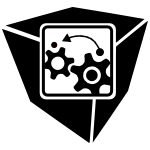 SOFTVIS-2010-AftandilianKGRSG #debugging #interactive #named #visualisation
SOFTVIS-2010-AftandilianKGRSG #debugging #interactive #named #visualisation- Heapviz: interactive heap visualization for program understanding and debugging (EA, SK, CG, NPR, SLS, SZG), pp. 53–62.
 SOFTVIS-2010-LinTOB #profiling #towards #using
SOFTVIS-2010-LinTOB #profiling #towards #using- Towards anomaly comprehension: using structural compression to navigate profiling call-trees (SL, FT, TCO, LJB), pp. 103–112.
 SOFTVIS-2010-ThorsenW #consistency #interactive #memory management #visualisation
SOFTVIS-2010-ThorsenW #consistency #interactive #memory management #visualisation- Understanding relaxed memory consistency through interactive visualization (ØT, CW), pp. 223–224.
 SOFTVIS-2010-TrumperBD #parallel #thread #using #visualisation
SOFTVIS-2010-TrumperBD #parallel #thread #using #visualisation- Understanding complex multithreaded software systems by using trace visualization (JT, JB, JD), pp. 133–142.
 ICEIS-ISAS-2010-DuarteL10a #framework
ICEIS-ISAS-2010-DuarteL10a #framework- Frameworks for Understanding the Changing Role of Informations Systems in Organizations (JCD, MLM), pp. 283–294.
 ICEIS-ISAS-2010-ZhangJ #challenge #data access #multi
ICEIS-ISAS-2010-ZhangJ #challenge #data access #multi- Understanding Access Control Challenges in Loosely-Coupled Multidomain Environments (YZ, JBDJ), pp. 356–361.
 CIKM-2010-HaLSL #embedded #mobile #named
CIKM-2010-HaLSL #embedded #mobile #named- EUI: an embedded engine for understanding user intents from mobile devices (JH, JHL, KSS, SL), pp. 1935–1936.
 CIKM-2010-YangGCTLZS #behaviour #network #social #twitter
CIKM-2010-YangGCTLZS #behaviour #network #social #twitter- Understanding retweeting behaviors in social networks (ZY, JG, KC, JT, JL, LZ, ZS), pp. 1633–1636.
 ICPR-2010-PuertasRFOE #forensics #performance #recognition #towards
ICPR-2010-PuertasRFOE #forensics #performance #recognition #towards- Towards a Better Understanding of the Performance of Latent Fingerprint Recognition in Realistic Forensic Conditions (MP, DR, JF, JOG, NE), pp. 1638–1641.
 KEOD-2010-KouOZKMIO #development #ontology
KEOD-2010-KouOZKMIO #development #ontology- Development of Fundamental Technologies for Better Understanding of Clinical Medical Ontologies (HK, MO, JZ, KK, RM, TI, KO), pp. 235–240.
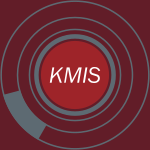 KMIS-2010-LiDFF #behaviour
KMIS-2010-LiDFF #behaviour- Understanding Behavioral Intention of e-Learning System Re-use (YL, YD, ZF, WF), pp. 218–223.
 KR-2010-BoellaGRT #logic
KR-2010-BoellaGRT #logic- A Logical Understanding of Legal Interpretation (GB, GG, AR, LWNvdT).
 KR-2010-Masolo #ontology
KR-2010-Masolo #ontology- Understanding Ontological Levels (CM).
 RecSys-2010-BollenKWG #recommendation
RecSys-2010-BollenKWG #recommendation- Understanding choice overload in recommender systems (DGFMB, BPK, MCW, MPG), pp. 63–70.
 RecSys-2010-MarxHM #algorithm #hybrid #recommendation
RecSys-2010-MarxHM #algorithm #hybrid #recommendation- Increasing consumers’ understanding of recommender results: a preference-based hybrid algorithm with strong explanatory power (PM, THT, AM), pp. 297–300.
 SIGIR-2010-LiuWD #analysis #behaviour #web
SIGIR-2010-LiuWD #analysis #behaviour #web- Understanding web browsing behaviors through Weibull analysis of dwell time (CL, RWW, STD), pp. 379–386.
 SIGIR-2010-WangDL #documentation #matrix #set
SIGIR-2010-WangDL #documentation #matrix #set- Feature subset non-negative matrix factorization and its applications to document understanding (DW, CHQD, TL), pp. 805–806.
 OOPSLA-2010-RinardHMS #analysis #statistics
OOPSLA-2010-RinardHMS #analysis #statistics- Patterns and statistical analysis for understanding reduced resource computing (MCR, HH, SM, SS), pp. 806–821.
 TOOLS-EUROPE-2010-NelsonPN #contract #design
TOOLS-EUROPE-2010-NelsonPN #contract #design- Understanding the Impact of Collection Contracts on Design (SN, DJP, JN), pp. 61–78.
 REFSQ-2010-WelshS #adaptation #nondeterminism
REFSQ-2010-WelshS #adaptation #nondeterminism- Understanding the Scope of Uncertainty in Dynamically Adaptive Systems (KW, PS), pp. 2–16.
 FSE-2010-DagenaisR #developer #documentation #evolution #open source
FSE-2010-DagenaisR #developer #documentation #evolution #open source- Creating and evolving developer documentation: understanding the decisions of open source contributors (BD, MPR), pp. 127–136.
 FSE-2010-Sanbonmatsu #biology #towards
FSE-2010-Sanbonmatsu #biology #towards- Supercomputing in biology: towards understanding living systems in atomic detail (KYS), pp. 1–2.
 ICSE-2010-HaiducAM #source code #summary
ICSE-2010-HaiducAM #source code #summary- Supporting program comprehension with source code summarization (SH, JA, AM), pp. 223–226.
 SAC-2010-GravinoTS #analysis #empirical #modelling #source code
SAC-2010-GravinoTS #analysis #empirical #modelling #source code- An empirical investigation on the relation between analysis models and source code comprehension (CG, GT, GS), pp. 2365–2366.
 SAC-2010-HadarKPRRS #case study #empirical #modelling #requirements
SAC-2010-HadarKPRRS #case study #empirical #modelling #requirements- An empirical study of requirements model understanding: Use Case vs. Tropos models (IH, TK, AP, IRB, FR, AS), pp. 2324–2329.
 SAC-2010-HayashiB
SAC-2010-HayashiB - Understanding meta-communication in an inclusive scenario (ECSH, MCCB), pp. 1213–1218.
 HPCA-2010-LiuJS #clustering #how #memory management #multi #performance
HPCA-2010-LiuJS #clustering #how #memory management #multi #performance- Understanding how off-chip memory bandwidth partitioning in Chip Multiprocessors affects system performance (FL, XJ, YS), pp. 1–12.
 ICDAR-2009-WangSY #online
ICDAR-2009-WangSY #online- The Understanding and Structure Analyzing for Online Handwritten Chemical Formulas (XW, GS, JY), pp. 1056–1060.
 EDM-2009-PrataBCRC #collaboration #detection #learning
EDM-2009-PrataBCRC #collaboration #detection #learning- Detecting and Understanding the Impact of Cognitive and Interpersonal Conflict in Computer Supported Collaborative Learning Environments (DP, RSJdB, EC, CPR, YC), pp. 131–140.
 CSMR-2009-Laitila #analysis #named
CSMR-2009-Laitila #analysis #named- SymAnalyzer: A Symbolic Analysis Tool for Program Comprehension (EL), pp. 325–326.
 CSMR-2009-MihanceaM
CSMR-2009-MihanceaM - Discovering Comprehension Pitfalls in Class Hierarchies (PFM, RM), pp. 7–16.
 ICPC-2009-CarneiroMM #approach #process #visual notation
ICPC-2009-CarneiroMM #approach #process #visual notation- Proposing a visual approach to support the characterization of software comprehension activities (GdFC, MGM, RCM), pp. 291–292.
 ICPC-2009-CornelissenZDR #empirical #visualisation
ICPC-2009-CornelissenZDR #empirical #visualisation- Trace visualization for program comprehension: A controlled experiment (BC, AZ, AvD, BVR), pp. 100–109.
 ICPC-2009-DekelH #api #documentation
ICPC-2009-DekelH #api #documentation- Reading the documentation of invoked API functions in program comprehension (UD, JDH), pp. 168–177.
 ICPC-2009-ForwardLB #analysis
ICPC-2009-ForwardLB #analysis- Improving program comprehension by enhancing program constructs: An analysis of the Umple language (AF, TCL, DB), pp. 311–312.
 ICPC-2009-GueheneucKM #using
ICPC-2009-GueheneucKM #using- Working session: Using eye-tracking to understand program comprehension (YGG, HHK, JIM), pp. 278–279.
 ICPC-2009-HanWYCZL #clustering #design pattern #open source #source code
ICPC-2009-HanWYCZL #clustering #design pattern #open source #source code- Design pattern directed clustering for understanding open source code (ZH, LW, LY, XC, JZ, XL), pp. 295–296.
 ICPC-2009-HusseinTBK #design #guidelines
ICPC-2009-HusseinTBK #design #guidelines- Sonification design guidelines to enhance program comprehension (KH, ET, IIB, SK), pp. 120–129.
 ICPC-2009-PortoMF #named #visualisation
ICPC-2009-PortoMF #named #visualisation- CRISTA: A tool to support code comprehension based on visualization and reading technique (DP, MGM, SCPFF), pp. 285–286.
 ICPC-2009-Rajlich
ICPC-2009-Rajlich - Intensions are a key to program comprehension (VR), pp. 1–9.
 ICPC-2009-SharifM #diagrams #empirical #uml
ICPC-2009-SharifM #diagrams #empirical #uml- An empirical study on the comprehension of stereotyped UML class diagram layouts (BS, JIM), pp. 268–272.
 ICPC-2009-SimRC #graph #question
ICPC-2009-SimRC #graph #question- Structure transition graphs: An ECG for program comprehension? (SES, SR, LC), pp. 303–304.
 ICPC-2009-TorchianoS #agile #developer #development #maintenance #testing
ICPC-2009-TorchianoS #agile #developer #development #maintenance #testing- TDD = too dumb developers? Implications of Test-Driven Development on maintainability and comprehension of software (MT, AS), pp. 280–282.
 ICSM-2009-DongG #hybrid #using
ICSM-2009-DongG #hybrid #using- Understanding source package organization using the hybrid model (XD, MWG), pp. 575–578.
 ICSM-2009-XieCN #empirical #evolution #open source #towards
ICSM-2009-XieCN #empirical #evolution #open source #towards- Towards a better understanding of software evolution: An empirical study on open source software (GX, JC, IN), pp. 51–60.
 WCRE-1999-Khomh99a #analysis #design #named #quality
WCRE-1999-Khomh99a #analysis #design #named #quality- SQUAD: Software Quality Understanding through the Analysis of Design (FK), pp. 303–306.
 DiGRA-2009-ChanET #3d #design
DiGRA-2009-ChanET #3d #design- Understanding Empathy in Children through 3D Character Design (KC, DE, AT).
 DiGRA-2009-CoppockCMCF #game studies #state of the art
DiGRA-2009-CoppockCMCF #game studies #state of the art- Understanding Play Practices: Contributions to the State of the Art [Panel Papers] (PJC, DC, AM, AC, GF0).
 DiGRA-2009-Gazzard #game studies
DiGRA-2009-Gazzard #game studies- Teleporters, Tunnels & Time: Understanding Warp Devices In Videogames (AG).
 DiGRA-2009-IhamakiT #bound #game studies #mobile
DiGRA-2009-IhamakiT #bound #game studies #mobile- Understanding 21st Century's Mobile Device-Based Games within Boundaries (PI, PT).
 DiGRA-2009-Jakobsson
DiGRA-2009-Jakobsson - The Achievement Machine: Understanding the Xbox Live Metagame [Abstract] (MJ).
 DiGRA-2009-KlastrupT
DiGRA-2009-KlastrupT - MMOGs and the Ecology of Fiction: Understanding LOTRO as Transmedial World [Abstract] (LK, ST).
 DiGRA-2009-RyanS #game studies #interactive #learning #using #video
DiGRA-2009-RyanS #game studies #interactive #learning #using #video- Evaluating Interactive Entertainment using Breakdown: Understanding Embodied Learning in Video Games (WR, MAS).
 FDG-2009-JhalaY #evaluation #modelling
FDG-2009-JhalaY #evaluation #modelling- Evaluation of intelligent camera control systems based on cognitive models of comprehension (AJ, RMY), pp. 327–328.
 FDG-2009-ZagalLJ #game studies
FDG-2009-ZagalLJ #game studies- Characterizing and understanding game reviews (JPZ, AL, TJ), pp. 215–222.
 VS-Games-2009-Gazzard
VS-Games-2009-Gazzard - The Avatar and the Player: Understanding the Relationship beyond the Screen (AG), pp. 190–193.
 CHI-2009-ChettyBMJ #power management
CHI-2009-ChettyBMJ #power management- It’s not easy being green: understanding home computer power management (MC, AJBB, BM, PJ), pp. 1033–1042.
 CHI-2009-HerringCKB #design #exclamation #how #why
CHI-2009-HerringCKB #design #exclamation #how #why- Getting inspired!: understanding how and why examples are used in creative design practice (SRH, CCC, JK, BPB), pp. 87–96.
 CHI-2009-KarlsonBS #mobile
CHI-2009-KarlsonBS #mobile- Can I borrow your phone?: understanding concerns when sharing mobile phones (AKK, AJBB, SES), pp. 1647–1650.
 CHI-2009-LawRHVK #approach #experience #overview #user interface
CHI-2009-LawRHVK #approach #experience #overview #user interface- Understanding, scoping and defining user experience: a survey approach (ELCL, VR, MH, APOSV, JK), pp. 719–728.
 CHI-2009-OdomPSB #design #interactive #why
CHI-2009-OdomPSB #design #interactive #why- Understanding why we preserve some things and discard others in the context of interaction design (WO, JP, ES, EB), pp. 1053–1062.
 CHI-2009-PanJPQ #realtime
CHI-2009-PanJPQ #realtime- Effects of real-time transcription on non-native speaker’s comprehension in computer-mediated communications (YP, DJ, MP, YQ), pp. 2353–2356.
 CHI-2009-PieperGD
CHI-2009-PieperGD - Team analytics: understanding teams in the global workplace (JP, JG, SD), pp. 83–86.
 CHI-2009-SellenMLTB #interactive #problem #prototype
CHI-2009-SellenMLTB #interactive #problem #prototype- The people-prototype problem: understanding the interaction between prototype format and user group (KMS, MM, DML, KNT, SAB), pp. 635–638.
 CHI-2009-SharminBCH #design #information management #process #reuse
CHI-2009-SharminBCH #design #information management #process #reuse- Understanding knowledge management practices for early design activity and its implications for reuse (MS, BPB, CC, KH), pp. 2367–2376.
 CHI-2009-YataniCJT #development #diagrams #how #open source #why
CHI-2009-YataniCJT #development #diagrams #how #open source #why- Understanding how and why open source contributors use diagrams in the development of Ubuntu (KY, EC, CJ, KNT), pp. 995–1004.
 DHM-2009-BaumannK
DHM-2009-BaumannK - A Comprehension Based Cognitive Model of Situation Awareness (MRKB, JFK), pp. 192–201.
 HCD-2009-MoranC #documentation #process
HCD-2009-MoranC #documentation #process- Understanding Activity Documentation Work in Remote Mobility Environments (ALM, RC), pp. 1023–1032.
 HCD-2009-Shima #design #image
HCD-2009-Shima #design #image- Common Understanding of Graphic Image Enhance “Emotional Design” (HS), pp. 548–551.
 HCD-2009-Wurdel #collaboration #towards
HCD-2009-Wurdel #collaboration #towards- Towards an Holistic Understanding of Tasks, Objects and Location in Collaborative Environments (MW), pp. 357–366.
 HCI-AUII-2009-OchoaAG #collaboration #mobile #requirements
HCI-AUII-2009-OchoaAG #collaboration #mobile #requirements- Understanding the Relationship between Requirements and Context Elements in Mobile Collaboration (SFO, RA, LAG), pp. 67–76.
 HCI-AUII-2009-Sixsmith
HCI-AUII-2009-Sixsmith - Understanding the Older User of Ambient Technologies (AS), pp. 511–519.
 HCI-VAD-2009-DogusoyC #eye tracking #learning #process
HCI-VAD-2009-DogusoyC #eye tracking #learning #process- An Innovative Way of Understanding Learning Processes: Eye Tracking (BD, KÇ), pp. 94–100.
 HCI-VAD-2009-ParkH #game studies #online
HCI-VAD-2009-ParkH #game studies #online- Understanding Online Game Addiction: Connection between Presence and Flow (SP, HSH), pp. 378–386.
 HIMI-II-2009-BaekPY #approach #mobile
HIMI-II-2009-BaekPY #approach #mobile- Understanding Key Attributes in Mobile Service: Kano Model Approach (SIB, SKP, WSY), pp. 355–364.
 HIMI-II-2009-KwonSB #communication
HIMI-II-2009-KwonSB #communication- Redefining Interoperability: Understanding Police Communication Task Environments (GHK, TLSJ, CWB), pp. 797–805.
 IDGD-2009-RizvanogluO #case study
IDGD-2009-RizvanogluO #case study- Cross-Cultural Understanding of the Dual Structure of Metaphorical Icons: An Explorative Study with French and Turkish Users on an E-Learning Site (KR, ÖÖ), pp. 89–98.
 OCSC-2009-Davis
OCSC-2009-Davis - The Whole Story: Retrieving Narratives for Cross-Cultural Understanding (AD), pp. 442–451.
 VISSOFT-2009-SharifM #diagrams #empirical #layout #uml
VISSOFT-2009-SharifM #diagrams #empirical #layout #uml- The effect of layout on the comprehension of UML class diagrams: A controlled experiment (BS, JIM), pp. 11–18.
 ICEIS-AIDSS-2009-TadeusiewiczOO #automation #information management
ICEIS-AIDSS-2009-TadeusiewiczOO #automation #information management- Automatic Information Processing and Understanding in Cognitive Business Systems (RT, MRO, LO), pp. 5–10.
 ICEIS-ISAS-2009-RochaN #communication #information management #named
ICEIS-ISAS-2009-RochaN #communication #information management #named- Semiotics — An Asset for Understanding Information Systems Communication (PAR, ÂLN), pp. 273–278.
 CIKM-2009-PattanasriMM #graph #named #random
CIKM-2009-PattanasriMM #graph #named #random- ComprehEnRank: estimating comprehension in classroom by absorbing random walks on a cognitive graph (NP, MM, MM), pp. 1769–1772.
 CIKM-2009-WangHLS #learning #query #semantics #web
CIKM-2009-WangHLS #learning #query #semantics #web- Semi-supervised learning of semantic classes for query understanding: from the web and for the web (YYW, RH, XL, JS), pp. 37–46.
 MLDM-2009-NikolopoulosPKP #framework #image #probability #semantics
MLDM-2009-NikolopoulosPKP #framework #image #probability #semantics- An Evidence-Driven Probabilistic Inference Framework for Semantic Image Understanding (SN, GTP, IK, IP), pp. 525–539.
 RecSys-2009-KnijnenburgW #adaptation #elicitation #recommendation #user satisfaction
RecSys-2009-KnijnenburgW #adaptation #elicitation #recommendation #user satisfaction- Understanding the effect of adaptive preference elicitation methods on user satisfaction of a recommender system (BPK, MCW), pp. 381–384.
 SEKE-2009-KumeS #concept #interactive #object-oriented
SEKE-2009-KumeS #concept #interactive #object-oriented- A Conceptual Model for Comprehension of Object-oriented Interactive Systems (IK, ES), pp. 376–381.
 SEKE-2009-PortoMF #using #visualisation
SEKE-2009-PortoMF #using #visualisation- The Use of Reading Technique and Visualization for Program Understanding (DP, MGM, SCPFF), pp. 386–391.
 OOPSLA-2009-Cook #abstraction #on the #revisited
OOPSLA-2009-Cook #abstraction #on the #revisited- On understanding data abstraction, revisited (WRC), pp. 557–572.
 RE-2009-LiuZPMSXB #requirements
RE-2009-LiuZPMSXB #requirements- Understanding Chinese Characteristics of Requirements Engineering (LL, HZ, FP, WM, YS, JX, TB), pp. 261–266.
 RE-2009-WnukRK #industrial #scalability #visualisation #what
RE-2009-WnukRK #industrial #scalability #visualisation #what- What Happened to Our Features? Visualization and Understanding of Scope Change Dynamics in a Large-Scale Industrial Setting (KW, BR, LK), pp. 89–98.
 ASE-2009-BoccuzzoG #automation
ASE-2009-BoccuzzoG #automation- Automated Comprehension Tasks in Software Exploration (SB, HCG), pp. 570–574.
 ASE-2009-GreenMWE #re-engineering
ASE-2009-GreenMWE #re-engineering- Understanding the Value of Software Engineering Technologies (PGI, TM, SW, OER), pp. 52–61.
 CASE-2009-SolisT #learning #towards
CASE-2009-SolisT #learning #towards- Towards enhancing the understanding of human motor learning (JS, AT), pp. 591–596.
 DATE-2009-JerrayaN #embedded #manycore #tutorial
DATE-2009-JerrayaN #embedded #manycore #tutorial- Embedded tutorial — Understanding multicore technologies (AAJ, GN), p. 1051.
 DATE-2009-KuhneGD #analysis #design
DATE-2009-KuhneGD #analysis #design- Property analysis and design understanding (UK, DG, RD), pp. 1246–1249.
 SAT-2009-CreignouDER
SAT-2009-CreignouDER - (1, 2)-QSAT: A Good Candidate for Understanding Phase Transitions Mechanisms (NC, HD, UE, RR), pp. 363–376.
 WICSA-2008-Eeles #architecture
WICSA-2008-Eeles #architecture- Understanding Architectural Assets (PE), pp. 267–270.
 HT-2008-ChiM #performance #social #using
HT-2008-ChiM #performance #social #using- Understanding the efficiency of social tagging systems using information theory (EHC, TM), pp. 81–88.
 JCDL-2008-AminOHN
JCDL-2008-AminOHN - Understanding cultural heritage experts’ information seeking needs (AKA, JvO, LH, AvN), pp. 39–47.
 SIGMOD-2008-AlexeCMPT #design #named
SIGMOD-2008-AlexeCMPT #design #named- Muse: a system for understanding and designing mappings (BA, LC, RJM, DP, WCT), pp. 1281–1284.
 ITiCSE-2008-GunawardenaBO
ITiCSE-2008-GunawardenaBO - A method for analyzing reading comprehension in computer science courses (AG, JB, AO), p. 348.
 SIGITE-2008-Al-KhalifaAA #towards
SIGITE-2008-Al-KhalifaAA #towards- Towards a better understanding of the it program at a female saudi university (HSAK, NSAG, MMAY), pp. 165–172.
 SIGITE-2008-RigbyDER #case study #concept
SIGITE-2008-RigbyDER #case study #concept- Measuring conceptual understanding: a case study (SR, MJD, JJE, MKR), pp. 11–16.
 CSMR-2008-Bernardi #aspect-oriented #assessment #evolution #reverse engineering #testing
CSMR-2008-Bernardi #aspect-oriented #assessment #evolution #reverse engineering #testing- Reverse Engineering of Aspect Oriented Systems to Support their Comprehension, Evolution, Testing and Assessment (MLB), pp. 290–293.
 CSMR-2008-CosmaM #dependence #distributed #object-oriented #using
CSMR-2008-CosmaM #dependence #distributed #object-oriented #using- Understanding the Impact of Distribution in Object-Oriented Distributed Systems Using Structural Program Dependencies (DCC, RM), pp. 103–112.
 ICPC-2008-BohnetVD #execution
ICPC-2008-BohnetVD #execution- Locating and Understanding Features of Complex Software Systems by Synchronizing Time-, Collaboration- and Code-Focused Views on Execution Traces (JB, SV, JD), pp. 268–271.
 ICPC-2008-DeanV #industrial
ICPC-2008-DeanV #industrial- Industrial Realities of Program Comprehension (IRPC 2008) (TRD, JV), pp. 283–284.
 ICPC-2008-FlemingKSDX #concurrent #maintenance
ICPC-2008-FlemingKSDX #concurrent #maintenance- Refining Existing Theories of Program Comprehension During Maintenance for Concurrent Software (SDF, EK, REKS, LKD, SX), pp. 23–32.
 ICPC-2008-Kothari #fault #scalability
ICPC-2008-Kothari #fault #scalability- Scalable Program Comprehension for Analyzing Complex Defects (SCK), pp. 3–4.
 ICPC-2008-LuciaGOT #comparison #diagrams #empirical #uml
ICPC-2008-LuciaGOT #comparison #diagrams #empirical #uml- Data Model Comprehension: An Empirical Comparison of ER and UML Class Diagrams (ADL, CG, RO, GT), pp. 93–102.
 ICPC-2008-McMeekinKCC #developer #taxonomy
ICPC-2008-McMeekinKCC #developer #taxonomy- Checklist Inspections and Modifications: Applying Bloom’s Taxonomy to Categorise Developer Comprehension (DAM, BRvK, EC, DJAC), pp. 224–229.
 ICPC-2008-PetrenkoRV #evolution #maintenance
ICPC-2008-PetrenkoRV #evolution #maintenance- Partial Domain Comprehension in Software Evolution and Maintenance (MP, VR, RV), pp. 13–22.
 ICPC-2008-PinzgerGKG #dependence #source code #visual notation
ICPC-2008-PinzgerGKG #dependence #source code #visual notation- A Tool for Visual Understanding of Source Code Dependencies (MP, KG, PK, HCG), pp. 254–259.
 ICPC-2008-Quante #empirical #graph #process
ICPC-2008-Quante #empirical #graph #process- Do Dynamic Object Process Graphs Support Program Understanding? — A Controlled Experiment (JQ), pp. 73–82.
 ICPC-2008-RobillardM #reuse
ICPC-2008-RobillardM #reuse- Reusing Program Investigation Knowledge for Code Understanding (MPR, PM), pp. 202–211.
 ICPC-2008-SatoST #execution #source code #user interface #visualisation
ICPC-2008-SatoST #execution #source code #user interface #visualisation- Support for Understanding GUI Programs by Visualizing Execution Traces Synchronized with Screen Transitions (TS, BS, JT), pp. 272–275.
 ICPC-2008-VerbaereGG #query
ICPC-2008-VerbaereGG #query- Query Technologies and Applications for Program Comprehension (QTAPC 2008) (MV, MWG, TG), pp. 285–288.
 ICSM-2008-MalikCTJH
ICSM-2008-MalikCTJH - Understanding the rationale for updating a function’s comment (HM, IC, HMT, ZMJ, AEH), pp. 167–176.
 ICSM-2008-Zhou #named #ontology
ICSM-2008-Zhou #named #ontology- COSS: Comprehension by ontologising software system (HZ), pp. 432–435.
 MSR-2008-SudakrishnanMWR #debugging
MSR-2008-SudakrishnanMWR #debugging- Understanding bug fix patterns in verilog (SS, JTM, EJWJ, JR), pp. 39–42.
 WCRE-2008-SchauerK
WCRE-2008-SchauerK - Integrative Levels of Program Comprehension (RS, RKK), pp. 145–154.
 WCRE-2008-SobreiraM #analysis #visual notation
WCRE-2008-SobreiraM #analysis #visual notation- A Visual Trace Analysis Tool for Understanding Feature Scattering (VS, MdAM), pp. 337–338.
 WCRE-2008-YuW #evolution #tool support
WCRE-2008-YuW #evolution #tool support- Graph-Centric Tools for Understanding the Evolution and Relationships of Software Structures (YY, MW), pp. 329–330.
 ICALP-A-2008-ChenTW #complexity #morphism
ICALP-A-2008-ChenTW #complexity #morphism- Understanding the Complexity of Induced Subgraph Isomorphisms (YC, MT, MW), pp. 587–596.
 CHI-2008-KamvarB #mobile #query
CHI-2008-KamvarB #mobile #query- Query suggestions for mobile search: understanding usage patterns (MK, SB), pp. 1013–1016.
 CHI-2008-OHara
CHI-2008-OHara - Understanding geocaching practices and motivations (KO), pp. 1177–1186.
 CHI-2008-OleksikFBS
CHI-2008-OleksikFBS - Sonic interventions: understanding and extending the domestic soundscape (GO, DF, LMB, AS), pp. 1419–1428.
 CSCW-2008-EvansC #social #towards
CSCW-2008-EvansC #social #towards- Towards a model of understanding social search (BME, EHC), pp. 485–494.
 CSCW-2008-NomuraBRLTG #collaboration #coordination #distributed #research
CSCW-2008-NomuraBRLTG #collaboration #coordination #distributed #research- Cutting into collaboration: understanding coordination in distributed and interdisciplinary medical research (SN, JPB, OR, GL, DT, GG), pp. 427–436.
 CSCW-2008-OHaraGR #game studies
CSCW-2008-OHaraGR #game studies- Understanding collective play in an urban screen game (KO, MG, SR), pp. 67–76.
 CSCW-2008-SzostekKEH #communication #social
CSCW-2008-SzostekKEH #communication #social- Understanding the implications of social translucence for systems supporting communication at work (AMS, EK, BE, MH), pp. 649–658.
 SOFTVIS-2008-CarneiroMM #paradigm #process #visualisation
SOFTVIS-2008-CarneiroMM #paradigm #process #visualisation- Combining software visualization paradigms to support software comprehension activities (GdFC, RCM, MGM), pp. 201–202.
 SOFTVIS-2008-ShahGH #exception #visualisation
SOFTVIS-2008-ShahGH #exception #visualisation- Visualization of exception handling constructs to support program understanding (HS, CG, MJH), pp. 19–28.
 SOFTVIS-2008-TheronGG #evolution
SOFTVIS-2008-TheronGG #evolution- Supporting the understanding of the evolution of software items (RT, AGT, FJGP), pp. 189–192.
 CAiSE-2008-YeNY
CAiSE-2008-YeNY - Understanding and Improving Collective Attention Economy for Expertise Sharing (YY, KN, YY), pp. 167–181.
 ICEIS-AIDSS-2008-ProdanRCP #image
ICEIS-AIDSS-2008-ProdanRCP #image- Artificial Intelligence for Wound Image Understanding (AP, MR, RC, RP), pp. 213–218.
 CIKM-2008-DowneyDLH #query
CIKM-2008-DowneyDLH #query- Understanding the relationship between searchers’ queries and information goals (DD, STD, DJL, EH), pp. 449–458.
 CIKM-2008-WangZLCG #clustering #documentation #multi #summary
CIKM-2008-WangZLCG #clustering #documentation #multi #summary- Integrating clustering and multi-document summarization to improve document understanding (DW, SZ, TL, YC, YG), pp. 1435–1436.
 CIKM-2008-XinLTL #random #using
CIKM-2008-XinLTL #random #using- Academic conference homepage understanding using constrained hierarchical conditional random fields (XX, JL, JT, QL), pp. 1301–1310.
 CIKM-2008-YangCNZW
CIKM-2008-YangCNZW - Closing the loop in webpage understanding (CY, YC, ZN, JZ, JRW), pp. 1397–1398.
 ICPR-2008-FerilliBBE #documentation #incremental #layout #machine learning
ICPR-2008-FerilliBBE #documentation #incremental #layout #machine learning- Incremental machine learning techniques for document layout understanding (SF, MB, TMAB, FE), pp. 1–4.
 ICPR-2008-ZhangD #visual notation
ICPR-2008-ZhangD #visual notation- Understanding visual dictionaries via Maximum Mutual Information curves (WZ, HD), pp. 1–4.
 ICPR-2008-ZhengBT #integration
ICPR-2008-ZhengBT #integration- Understanding vehicle motion via spatial integration of intensities (JYZ, YB, HTT), pp. 1–5.
 SEKE-2008-DuffyHM #c++ #evolution #interface #library #protocol #reverse engineering #scalability
SEKE-2008-DuffyHM #c++ #evolution #interface #library #protocol #reverse engineering #scalability- Reverse Engineering Interface Protocols for Comprehension of Large C++ Libraries during Code Evolution Tasks (EBD, JOH, BAM), pp. 303–308.
 SEKE-2008-TinkhamTP #assessment #java #reverse engineering #source code #testing #tool support
SEKE-2008-TinkhamTP #assessment #java #reverse engineering #source code #testing #tool support- A Qualitative Assessment of the Reverse Engineering Capabilities of Unit Testing Tools for Understanding Java Programs (AT, SRT, TP), pp. 111–116.
 SIGIR-2008-HuSL #documentation #feedback #summary
SIGIR-2008-HuSL #documentation #feedback #summary- Comments-oriented document summarization: understanding documents with readers’ feedback (MH, AS, EPL), pp. 291–298.
 SIGIR-2008-Shah #behaviour #collaboration #implementation
SIGIR-2008-Shah #behaviour #collaboration #implementation- Understanding system implementation and user behavior in a collaborative information seeking environment (CS), p. 896.
 MoDELS-2008-GeneroCCAIC #diagrams #empirical #sequence chart #uml
MoDELS-2008-GeneroCCAIC #diagrams #empirical #sequence chart #uml- Assessing the Influence of Stereotypes on the Comprehension of UML Sequence Diagrams: A Controlled Experiment (MG, JACL, DC, SMA, EI, JÁC), pp. 280–294.
 SPLC-2008-BotterweckTNAC #configuration management #product line #tool support #visual notation
SPLC-2008-BotterweckTNAC #configuration management #product line #tool support #visual notation- Visual Tool Support for Configuring and Understanding Software Product Lines (GB, ST, DN, SbA, CC), pp. 77–86.
 MoDELS-2008-GeneroCCAIC #diagrams #empirical #sequence chart #uml
MoDELS-2008-GeneroCCAIC #diagrams #empirical #sequence chart #uml- Assessing the Influence of Stereotypes on the Comprehension of UML Sequence Diagrams: A Controlled Experiment (MG, JACL, DC, SMA, EI, JÁC), pp. 280–294.
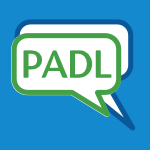 PADL-2008-EshkevariAC #analysis #aspect-oriented #declarative #dependence #reasoning #source code
PADL-2008-EshkevariAC #analysis #aspect-oriented #declarative #dependence #reasoning #source code- Comprehension and Dependency Analysis of Aspect-Oriented Programs through Declarative Reasoning (LME, VA, CC), pp. 35–52.
 SIGAda-2008-Safari-SharifabadiC #ada #dynamic analysis #metric #quality #source code
SIGAda-2008-Safari-SharifabadiC #ada #dynamic analysis #metric #quality #source code- Dynamic analysis of Ada programs for comprehension and quality measurement (ESS, CC), pp. 15–38.
 ASPLOS-2008-LiRSAAZ #design #fault
ASPLOS-2008-LiRSAAZ #design #fault- Understanding the propagation of hard errors to software and implications for resilient system design (MLL, PR, SKS, SVA, VSA, YZ), pp. 265–276.
 ASPLOS-2008-MysoreMAS #data flow #visualisation
ASPLOS-2008-MysoreMAS #data flow #visualisation- Understanding and visualizing full systems with data flow tomography (SM, BM, BA, TS), pp. 211–221.
 PDP-2008-GoumasKAKK #multi #performance
PDP-2008-GoumasKAKK #multi #performance- Understanding the Performance of Sparse Matrix-Vector Multiplication (GIG, KK, NA, VK, NK), pp. 283–292.
 QoSA-2007-VasconcelosW #architecture #evaluation #reuse
QoSA-2007-VasconcelosW #architecture #evaluation #reuse- Architecture Recovery and Evaluation Aiming at Program Understanding and Reuse (AV, CW), pp. 72–89.
 DocEng-2007-HuangT
DocEng-2007-HuangT - A system for understanding imaged infographics and its applications (WH, CLT), pp. 9–18.
 HT-2007-Al-KhalifaD #folksonomy #towards
HT-2007-Al-KhalifaD #folksonomy #towards- Towards better understanding of folksonomic patterns (HSAK, HCD), pp. 163–166.
 ICDAR-2007-GuoHLJ #automation
ICDAR-2007-GuoHLJ #automation- An Automatic Mathematical Expression Understanding System (YsG, LH, CpL, XJ), pp. 719–723.
 ICDAR-2007-HassanB #recognition
ICDAR-2007-HassanB #recognition- Table Recognition and Understanding from PDF Files (TH, RB), pp. 1143–1147.
 ICDAR-2007-HerouxBAT #analysis #automation #documentation #generative #image
ICDAR-2007-HerouxBAT #analysis #automation #documentation #generative #image- Automatic Ground-truth Generation for Document Image Analysis and Understanding (PH, EB, SA, ÉT), pp. 476–480.
 ICDAR-2007-Szwoch07a #recognition
ICDAR-2007-Szwoch07a #recognition- Recognition, Understanding and Aestheticization of Freehand Drawing Flowcharts (WS), pp. 1138–1142.
 ICDAR-2007-Vincent #documentation
ICDAR-2007-Vincent #documentation- Google Book Search: Document Understanding on a Massive Scale (LV), pp. 819–823.
 JCDL-2007-DownieLGJ #evaluation #library #music #similarity #towards
JCDL-2007-DownieLGJ #evaluation #library #music #similarity #towards- Toward an understanding of similarity judgments for music digital library evaluation (JSD, JHL, AAG, MCJ), pp. 307–308.
 ITiCSE-2007-BenayaZ #java #thread
ITiCSE-2007-BenayaZ #java #thread- Understanding threads in an advanced java course (TB, EZ), p. 323.
 ITiCSE-2007-Govender #assessment #performance #programming #student
ITiCSE-2007-Govender #assessment #performance #programming #student- Understanding students’ performance in programming assessment questions (IG), p. 326.
 CSMR-2007-CornelissenDMZ #visualisation
CSMR-2007-CornelissenDMZ #visualisation- Visualizing Testsuites to Aid in Software Understanding (BC, AvD, LM, AZ), pp. 213–222.
 CSMR-2007-Quante07a #graph #process #protocol
CSMR-2007-Quante07a #graph #process #protocol- Dynamic Object Process Graph Extraction for Program Understanding and Protocol Recovery (JQ), pp. 345–348.
 ICPC-2007-CornelissenHZMWD #execution #sequence #using
ICPC-2007-CornelissenHZMWD #execution #sequence #using- Understanding Execution Traces Using Massive Sequence and Circular Bundle Views (BC, DH, AZ, LM, JJvW, AvD), pp. 49–58.
 ICPC-2007-Harman #re-engineering
ICPC-2007-Harman #re-engineering- Search Based Software Engineering for Program Comprehension (MH), pp. 3–13.
 ICPC-2007-KothariDSM #convergence #evolution #implementation
ICPC-2007-KothariDSM #convergence #evolution #implementation- Reducing Program Comprehension Effort in Evolving Software by Recognizing Feature Implementation Convergence (JK, TD, AS, SM), pp. 17–26.
 ICPC-2007-LangeC #interactive #modelling #uml #validation
ICPC-2007-LangeC #interactive #modelling #uml #validation- Interactive Views to Improve the Comprehension of UML Models — An Experimental Validation (CFJL, MRVC), pp. 221–230.
 ICPC-2007-PentaSK #design #empirical
ICPC-2007-PentaSK #design #empirical- Designing your Next Empirical Study on Program Comprehension (MDP, REKS, EK), pp. 281–285.
 ICPC-2007-ReinikainenHLKS #query
ICPC-2007-ReinikainenHLKS #query- Software Comprehension through Concern-based Queries (TR, IH, JL, KK, TS), pp. 265–270.
 ICPC-2007-RobbesL #development
ICPC-2007-RobbesL #development- Characterizing and Understanding Development Sessions (RR, ML), pp. 155–166.
 ICPC-2007-Tilley
ICPC-2007-Tilley - 15 Years of Program Comprehension (SRT), pp. 279–280.
 ICPC-2007-WettelL
ICPC-2007-WettelL - Program Comprehension through Software Habitability (RW, ML), pp. 231–240.
 ICPC-2007-XieKS #concurrent #diagrams #empirical #evaluation #interactive #sequence chart #thread #uml
ICPC-2007-XieKS #concurrent #diagrams #empirical #evaluation #interactive #sequence chart #thread #uml- Empirical Evaluation of a UML Sequence Diagram with Adornments to Support Understanding of Thread Interactions (SX, EK, REKS), pp. 123–134.
 ICPC-2007-YusufKM #diagrams #eye tracking #uml
ICPC-2007-YusufKM #diagrams #eye tracking #uml- Assessing the Comprehension of UML Class Diagrams via Eye Tracking (SY, HHK, JIM), pp. 113–122.
 ICSM-2007-DucassePSAA #visual notation
ICSM-2007-DucassePSAA #visual notation- Package Surface Blueprints: Visually Supporting the Understanding of Package Relationships (SD, DP, MS, HA, IA), pp. 94–103.
 ICSM-2007-Meng #maintenance #ontology #process
ICSM-2007-Meng #maintenance #ontology #process- An Ontological Process Model for Software Maintenance and Comprehension (WJM), pp. 515–516.
 ICSM-2007-OezbekP #documentation #named #source code
ICSM-2007-OezbekP #documentation #named #source code- JTourBus: Simplifying Program Understanding by Documentation that Provides Tours Through the Source Code (CO, LP), pp. 64–73.
 ICSM-2007-Panchenko #concept
ICSM-2007-Panchenko #concept- Concept Location and Program Comprehension in Service-Oriented Software (OP), pp. 513–514.
 WCRE-2007-FarahL #modelling
WCRE-2007-FarahL #modelling- Temporal Exploration of Software Models: A Tool Feature to Enhance Software Understanding (HF, TCL), pp. 41–49.
 ILC-2007-ConnollyQ #image #lisp #named #open source
ILC-2007-ConnollyQ #image #lisp #named #open source- FREEDIUS: an open source Lisp-based image understanding environment (CC, LQ), p. 16.
 ILC-2007-Latendresse #compilation #lisp #performance
ILC-2007-Latendresse #compilation #lisp #performance- Simple and efficient compilation of list comprehension in common Lisp (ML), p. 12.
 DiGRA-2007-BjorkP #design pattern #game studies #pervasive
DiGRA-2007-BjorkP #design pattern #game studies #pervasive- Understanding Pervasive Games through Gameplay Design Patterns (SB, JP).
 CHI-2007-Baker #behaviour #modelling #student
CHI-2007-Baker #behaviour #modelling #student- Modeling and understanding students’ off-task behavior in intelligent tutoring systems (RSJdB), pp. 1059–1068.
 CHI-2007-BrushMTC #memory management
CHI-2007-BrushMTC #memory management- Understanding memory triggers for task tracking (AJBB, BM, DST, MC), pp. 947–950.
 CHI-2007-IqbalB #detection #interactive #modelling
CHI-2007-IqbalB #detection #interactive #modelling- Understanding and developing models for detecting and differentiating breakpoints during interactive tasks (STI, BPB), pp. 697–706.
 CHI-2007-KientzACHRPA #development
CHI-2007-KientzACHRPA #development- Grow and know: understanding record-keeping needs for tracking the development of young children (JAK, RIA, MC, GRH, JR, SNP, GDA), pp. 1351–1360.
 CHI-2007-KirkSHW
CHI-2007-KirkSHW - Understanding videowork (DSK, AS, RHRH, KRW), pp. 61–70.
 DHM-2007-OhS #behaviour #nondeterminism
DHM-2007-OhS #behaviour #nondeterminism- Understanding RUTH: Creating Believable Behaviors for a Virtual Human Under Uncertainty (IO, MS), pp. 443–452.
 HCI-AS-2007-KoJK #behaviour #internet #mobile
HCI-AS-2007-KoJK #behaviour #internet #mobile- Understanding Influence of Mobile Internet Services on Life Behavior of Mobile Users (SMK, YGJ, DK), pp. 944–953.
 HCI-AS-2007-LiuLS #behaviour #design #game studies #online #what
HCI-AS-2007-LiuLS #behaviour #design #game studies #online #what- What Makes Game Players Want to Play More? A Mathematical and Behavioral Understanding of Online Game Design (DL, XL, RS), pp. 284–293.
 HCI-IDU-2007-ChenA #design
HCI-IDU-2007-ChenA #design- Context-Centered Design: Bridging the Gap Between Understanding and Designing (YC, MEA), pp. 40–48.
 HCI-IDU-2007-DomingoHM #game studies #process
HCI-IDU-2007-DomingoHM #game studies #process- A Game to Promote Understanding About UCD Methods and Process (MGD, MAH, EM), pp. 446–452.
 HCI-IDU-2007-ZhouF #design #experience #quality #user interface
HCI-IDU-2007-ZhouF #design #experience #quality #user interface- Understanding, Measuring, and Designing User Experience: The Causal Relationship Between the Aesthetic Quality of Products and User Affect (HZ, XF), pp. 340–349.
 HCI-IPT-2007-KimC #behaviour
HCI-IPT-2007-KimC #behaviour- Understanding Camera Phone Imaging: Motivations, Behaviors and Meanings (GK, WC), pp. 374–383.
 HCI-IPT-2007-KimL07a #development #interactive #mobile
HCI-IPT-2007-KimL07a #development #interactive #mobile- Development of Interactive Logger for Understanding User’s Interaction with Mobile Phone (DK, KPL), pp. 394–400.
 HCI-MIE-2007-ParkC #social
HCI-MIE-2007-ParkC #social- Understanding the Social Relationship Between Humans and Virtual Humans (SP, RC), pp. 459–464.
 HCI-MIE-2007-RoibasS #how #interactive #mobile
HCI-MIE-2007-RoibasS #how #interactive #mobile- Beyond Mobile TV: Understanding How Mobile Interactive Systems Enable Users to Become Digital Producers (ACR, RS), pp. 801–810.
 HIMI-IIE-2007-Foley #collaboration
HIMI-IIE-2007-Foley #collaboration- Understanding a Sense of Place in Collaborative Environments (SF), pp. 863–872.
 HIMI-IIE-2007-ZhangWE #collaboration
HIMI-IIE-2007-ZhangWE #collaboration- Resolving Assumptions in Art-Technology Collaboration as a Means of Extending Shared Understanding (YZ, AW, EAE), pp. 204–211.
 HIMI-MTT-2007-ChienC #using
HIMI-MTT-2007-ChienC #using- The Use of Dynamic Display to Improve Reading Comprehension for the Small Screen of a Wrist Watch (YHC, CHC), pp. 814–823.
 HIMI-MTT-2007-HirasawaSK #requirements #ubiquitous
HIMI-MTT-2007-HirasawaSK #requirements #ubiquitous- Understanding Requirements of Ubiquitous Application in Context of Daily Life (NH, TS, HK), pp. 45–50.
 HIMI-MTT-2007-Jeong #using
HIMI-MTT-2007-Jeong #using- Suggestion of Methods for Understanding User’s Emotional Changes While Using a Product (SHJ), pp. 59–67.
 HIMI-MTT-2007-NagaiEK #process #using
HIMI-MTT-2007-NagaiEK #process #using- Measuring Brain Activities Related to Understanding Using Near-Infrared Spectroscopy (NIRS) (MN, NE, TK), pp. 884–893.
 HIMI-MTT-2007-PaddaSM #framework #towards #visualisation
HIMI-MTT-2007-PaddaSM #framework #towards #visualisation- Towards a Metrics-Based Framework for Assessing Comprehension of Software Visualization Systems (HKP, AS, SPM), pp. 335–344.
 VISSOFT-2007-BohnetD07a #compilation #graph
VISSOFT-2007-BohnetD07a #compilation #graph- CGA Call Graph Analyzer — Locating and Understanding Functionality within the Gnu Compiler Collection’s Million Lines of Code (JB, JD), pp. 161–162.
 CAiSE-2007-PijpersG #named
CAiSE-2007-PijpersG #named- e3forces: Understanding Strategies of Networked e 3 value Constellations by Analyzing Environmental Forces (VP, JG), pp. 188–202.
 KDD-2007-ZhuZNWH #approach
KDD-2007-ZhuZNWH #approach- Webpage understanding: an integrated approach (JZ, BZ, ZN, JRW, HWH), pp. 903–912.
 SIGIR-2007-LalmasBFFJ #community #information management
SIGIR-2007-LalmasBFFJ #community #information management- Bridging the digital divide: understanding information access practices in an indian village community (ML, RB, MF, DMF, MJ), pp. 741–742.
 SIGIR-2007-PhanBW #query
SIGIR-2007-PhanBW #query- Understanding the relationship of information need specificity to search query length (NP, PB, RW), pp. 709–710.
 POPL-2007-PolishchukLS #debugging #type inference
POPL-2007-PolishchukLS #debugging #type inference- Dynamic heap type inference for program understanding and debugging (MP, BL, CWS), pp. 39–46.
 RE-2007-GandhiL #assessment #certification #correlation #multi #requirements #risk management
RE-2007-GandhiL #assessment #certification #correlation #multi #requirements #risk management- Discovering and Understanding Multi-dimensional Correlations among Certification Requirements with application to Risk Assessment (RAG, SWL), pp. 231–240.
 ESEC-FSE-2007-LaTozaGHM
ESEC-FSE-2007-LaTozaGHM - Program comprehension as fact finding (TDL, DG, JDH, BAM), pp. 361–370.
 ICSE-2007-RiccaPTTC #experience #uml
ICSE-2007-RiccaPTTC #experience #uml- The Role of Experience and Ability in Comprehension Tasks Supported by UML Stereotypes (FR, MDP, MT, PT, MC), pp. 375–384.
 ICSE-2007-XieKS #concept #concurrent #design #diagrams #evaluation
ICSE-2007-XieKS #concept #concurrent #design #diagrams #evaluation- Design and Evaluation of a Diagrammatic Notation to Aid in the Understanding of Concurrency Concepts (SX, EK, REKS), pp. 727–731.
 CGO-2007-DiceS #memory management #trade-off #transaction
CGO-2007-DiceS #memory management #trade-off #transaction- Understanding Tradeoffs in Software Transactional Memory (DD, NS), pp. 21–33.
 DATE-2007-GuptaOJWB #distributed #multi #network #using
DATE-2007-GuptaOJWB #distributed #multi #network #using- Understanding voltage variations in chip multiprocessors using a distributed power-delivery network (MSG, JLO, RJ, GYW, DMB), pp. 624–629.
 HPCA-2007-GaneshJWJ #architecture #memory management #scalability
HPCA-2007-GaneshJWJ #architecture #memory management #scalability- Fully-Buffered DIMM Memory Architectures: Understanding Mechanisms, Overheads and Scaling (BG, AJ, DW, BLJ), pp. 109–120.
 ISSTA-2007-DufourRS #analysis #performance
ISSTA-2007-DufourRS #analysis #performance- Blended analysis for performance understanding of framework-based applications (BD, BGR, GS), pp. 118–128.
 SAT-2007-DershowitzHN #satisfiability #towards
SAT-2007-DershowitzHN #satisfiability #towards- Towards a Better Understanding of the Functionality of a Conflict-Driven SAT Solver (ND, ZH, AN), pp. 287–293.
 DRR-2006-LinCND #documentation #layout #version control
DRR-2006-LinCND #documentation #layout #version control- Active document versioning: from layout understanding to adjustment (XL, HC, GN, ED).
 DRR-2006-Vega-RiverosS #automation #design #documentation #segmentation
DRR-2006-Vega-RiverosS #automation #design #documentation #segmentation- Graphic design principles for automated document segmentation and understanding (JFVR, HJSV).
 HT-2006-WangR #authoring #framework #hypermedia #social
HT-2006-WangR #authoring #framework #hypermedia #social- A cognitive and social framework for shared understanding in cooperative hypermedia authoring (WW, JR), pp. 53–56.
 ITiCSE-2006-PerrenetK #abstraction #algorithm #concept #perspective #student
ITiCSE-2006-PerrenetK #abstraction #algorithm #concept #perspective #student- Levels of abstraction in students’ understanding of the concept of algorithm: the qualitative perspective (JP, EK), pp. 270–274.
 CSMR-2006-Zaidman #dynamic analysis #scalability
CSMR-2006-Zaidman #dynamic analysis #scalability- Scalability Solutions for Program Comprehension through Dynamic Analysis (AZ), pp. 327–330.
 ICPC-2006-Autor #evolution #legacy
ICPC-2006-Autor #evolution #legacy- Evolving a Legacy Application Portfolio at Sallie Mae: Program Comprehension and Beyond (RSA), p. xiii.
 ICPC-2006-BermanDGG #using
ICPC-2006-BermanDGG #using- The Sound of Software: Using Sonification to Aid Comprehension (LIB, SD, KBG, NG), pp. 225–229.
 ICPC-2006-Hamou-LhadjL #behaviour #scalability
ICPC-2006-Hamou-LhadjL #behaviour #scalability- Summarizing the Content of Large Traces to Facilitate the Understanding of the Behaviour of a Software System (AHL, TCL), pp. 181–190.
 ICPC-2006-KoskinenKS #approach #behaviour
ICPC-2006-KoskinenKS #approach #behaviour- Profile-Based Approach to Support Comprehension of Software Behavior (JK, MK, TS), pp. 212–224.
 ICPC-2006-LuccaP #challenge #roadmap
ICPC-2006-LuccaP #challenge #roadmap- Experimental Settings in Program Comprehension: Challenges and Open Issues (GADL, MDP), pp. 229–234.
 ICPC-2006-MadouPB #obfuscation
ICPC-2006-MadouPB #obfuscation- Understanding Obfuscated Code (MM, LVP, KDB), pp. 268–274.
 ICPC-2006-ParninG
ICPC-2006-ParninG - Building Usage Contexts During Program Comprehension (CP, CG), pp. 13–22.
 ICPC-2006-SmithOK #architecture #migration #web #web service
ICPC-2006-SmithOK #architecture #migration #web #web service- Working Session: Program Comprehension and Migration Strategies for Web Service and Service-Oriented Architectures (DBS, LO, KK), pp. 235–240.
 ICPC-2006-StefikFA #debugging #effectiveness #music #runtime #using
ICPC-2006-StefikFA #debugging #effectiveness #music #runtime #using- Layered Program Auralization: Using Music to Increase Runtime Program Comprehension and Debugging Effectiveness (AS, KF, RTA), pp. 89–93.
 ICPC-2006-VinzE #approach
ICPC-2006-VinzE #approach- A Synergistic Approach to Program Comprehension (BLV, LHE), pp. 69–73.
 ICPC-2006-ZaidmanBD #how #metric #mining
ICPC-2006-ZaidmanBD #how #metric #mining- How Webmining and Coupling Metrics Improve Early Program Comprehension (AZ, BDB, SD), pp. 74–78.
 ICSM-2006-FisherCZ #difference #using
ICSM-2006-FisherCZ #difference #using- Using Sex Differences to Link Spatial Cognition and Program Comprehension (MF, AC, LZ), pp. 289–298.
 ICSM-2006-JiangGSEW #industrial
ICSM-2006-JiangGSEW #industrial- Software Feature Understanding in an Industrial Setting (MJ, MG, SS, DE, NW), pp. 66–67.
 ICSM-2006-KontogiannisLW #maintenance #multi #scalability
ICSM-2006-KontogiannisLW #maintenance #multi #scalability- Comprehension and Maintenance of Large-Scale Multi-Language Software Applications (KK, PKL, KW), pp. 497–500.
 ICSM-2006-LiuT #approach #maintenance #validation
ICSM-2006-LiuT #approach #maintenance #validation- An Approach to Aid the Understanding and Maintenance of Input Validation (HL, HBKT), pp. 370–379.
 ICSM-2006-LuciaPOZ #named #traceability #using
ICSM-2006-LuciaPOZ #named #traceability #using- COCONUT: COde COmprehension Nurturant Using Traceability (ADL, MDP, RO, FZ), pp. 274–275.
 ICSM-2006-NeginhalK #c #graph #reduction
ICSM-2006-NeginhalK #c #graph #reduction- Event Views and Graph Reductions for Understanding System Level C Code (SN, SK), pp. 279–288.
 MSR-2006-GermanRS #using
MSR-2006-GermanRS #using- Using evolutionary annotations from change logs to enhance program comprehension (DMG, PCR, MADS), pp. 159–162.
 WCRE-2006-KnodelMN #architecture #empirical #visual notation #visualisation
WCRE-2006-KnodelMN #architecture #empirical #visual notation #visualisation- Understanding Software Architectures by Visualization — An Experiment with Graphical Elements (JK, DM, MN), pp. 39–50.
 WCRE-2006-ZaidmanGH #dynamic analysis
WCRE-2006-ZaidmanGH #dynamic analysis- Program COmprehension through Dynamic Analysis (AZ, OG, AHL), p. 315.
 CHI-2006-HawkeyI #privacy
CHI-2006-HawkeyI #privacy- Keeping up appearances: understanding the dimensions of incidental information privacy (KH, KMI), pp. 821–830.
 CHI-2006-KirkSRW
CHI-2006-KirkSRW - Understanding photowork (DSK, AS, CR, KRW), pp. 761–770.
 SOFTVIS-2006-ReedRKDH #comparison #visualisation
SOFTVIS-2006-ReedRKDH #comparison #visualisation- The effect of comparison cueing and exchange motion on comprehension of program visualizations (BR, PR, EK, ETD, KH), pp. 181–182.
 SOFTVIS-2006-RhodesKR #algorithm #animation #interactive
SOFTVIS-2006-RhodesKR #algorithm #animation #interactive- The importance of interactive questioning techniques in the comprehension of algorithm animations (PR, EK, BR), pp. 183–184.
 ICPR-v1-2006-RyooA #process #recursion #semantics
ICPR-v1-2006-RyooA #process #recursion #semantics- Semantic Understanding of Continued and Recursive Human Activities (MSR, JKA), pp. 379–382.
 ICPR-v2-2006-MizunoN #constraints #prototype
ICPR-v2-2006-MizunoN #constraints #prototype- Constraint-Based Prototyping for Understanding Three Orthographic Views (KM, SN), pp. 1090–1093.
 ICPR-v2-2006-TakiguchiOM #case study #fault #recognition
ICPR-v2-2006-TakiguchiOM #case study #fault #recognition- A Study on Character Recognition Error Correction at Higher Level Recognition Step for Mathematical Formulae Understanding (YT, MO, YM), pp. 966–969.
 OOPSLA-2006-BaxterFNRSVMT #java
OOPSLA-2006-BaxterFNRSVMT #java- Understanding the shape of Java software (GB, MRF, JN, MR, HS, MV, HM, EDT), pp. 397–412.
 RE-2006-GordijnPW #modelling #using
RE-2006-GordijnPW #modelling #using- Understanding Business Strategies of Networked Value Constellations Using Goal- and Value Modeling (JG, MP, RW), pp. 126–135.
 ICSE-2006-MartinX #analysis #interface #string
ICSE-2006-MartinX #analysis #interface #string- Understanding software application interfaces via string analysis (EM, TX), pp. 901–904.
 ICSE-2006-SongHMRNHG #case study #challenge #experience #requirements #workflow
ICSE-2006-SongHMRNHG #case study #challenge #experience #requirements #workflow- Understanding requirements for computer-aided healthcare workflows: experiences and challenges (XS, BH, GM, AR, CN, MH, AG), pp. 930–934.
 SAC-2006-ReynosoGPM #ocl #question
SAC-2006-ReynosoGPM #ocl #question- Does object coupling really affect the understanding and modifying of OCL expressions? (LR, MG, MP, MEM), pp. 1721–1727.
 ATEM-2006-RillingZMWHC #maintenance #ontology #process
ATEM-2006-RillingZMWHC #maintenance #ontology #process- A Unified Ontology-Based Process Model for Software Maintenance and Comprehension (JR, YZ, WJM, RW, VH, PC), pp. 56–65.
 ASPLOS-2006-ReddyRP #fault tolerance #predict #thread
ASPLOS-2006-ReddyRP #fault tolerance #predict #thread- Understanding prediction-based partial redundant threading for low-overhead, high- coverage fault tolerance (VKR, ER, SP), pp. 83–94.
 HPCA-2006-KimGS #interactive
HPCA-2006-KimGS #interactive- Understanding the performance-temperature interactions in disk I/O of server workloads (YK, SG, AS), pp. 176–186.
 ECDL-2005-SunHW #information management #using
ECDL-2005-SunHW #information management #using- Aiding Comprehension in Electronic Books Using Contextual Information (YS, DJH, SNKW), pp. 504–506.
 ICDAR-2005-CeciBM #documentation #image #learning #logic #relational #statistics
ICDAR-2005-CeciBM #documentation #image #learning #logic #relational #statistics- Relational Learning techniques for Document Image Understanding: Comparing Statistical and Logical approaches (MC, MB, DM), pp. 473–477.
 ICDAR-2005-HandleyNZ #context-free grammar #documentation #probability #using
ICDAR-2005-HandleyNZ #context-free grammar #documentation #probability #using- Document Understanding System Using Stochastic Context-Free Grammars (JCH, AMN, RZ), pp. 511–515.
 ICDAR-2005-HuangTL
ICDAR-2005-HuangTL - Associating Text and Graphics for Scientific Chart Understanding (WH, CLT, WKL), pp. 580–584.
 ICDAR-2005-LeeL #design
ICDAR-2005-LeeL #design- Design of a Chinese Name Card Understanding System (HJL, SHL), pp. 981–985.
 ICDAR-2005-TakiguchiOM #layout #recognition #semantics
ICDAR-2005-TakiguchiOM #layout #recognition #semantics- A Fundamental Study of Output Translation from Layout Recognition and Semantic Understanding System for Mathematical Formulae (YT, MO, YM), pp. 745–749.
 ICDAR-2005-TangK #education #text-to-text #video
ICDAR-2005-TangK #education #text-to-text #video- Educational Video Understanding: Mapping Handwritten Text to Textbook Chapters (LT, JRK), pp. 919–923.
 JCDL-2005-OngL #repository
JCDL-2005-OngL #repository- Collection understanding for OAI-PMH compliant repositories (TO, JJL), pp. 258–259.
 ITiCSE-2005-Jimenez-DiazGGG #behaviour #visualisation
ITiCSE-2005-Jimenez-DiazGGG #behaviour #visualisation- Software behaviour understanding Supported by dynamic visualization and role-play (GJD, MGA, MAGM, PAGC), pp. 54–58.
 ITiCSE-2005-LiccardiW #difference #effectiveness
ITiCSE-2005-LiccardiW #difference #effectiveness- Understanding disciplinary differences: an insight into selecting effective e-learning approaches (IL, SW), p. 411.
 ITiCSE-2005-PerrenetGK #abstraction #algorithm #concept #student
ITiCSE-2005-PerrenetGK #abstraction #algorithm #concept #student- Exploring students’ understanding of the concept of algorithm: levels of abstraction (JP, JFG, EK), pp. 64–68.
 CSMR-2005-BoisDV #question #reverse engineering
CSMR-2005-BoisDV #question #reverse engineering- Does the “Refactor to Understand” Reverse Engineering Pattern Improve Program Comprehension? (BDB, SD, JV), pp. 334–343.
 CSMR-2005-ZaidmanCDP #execution #mining #process
CSMR-2005-ZaidmanCDP #execution #mining #process- Applying Webmining Techniques to Execution Traces to Support the Program Comprehension Process (AZ, TC, SD, JP), pp. 134–142.
 ICSM-2005-EichbergHMS
ICSM-2005-EichbergHMS - Comprehensive Software Understanding with SEXTANT (ME, MH, MM, TS), pp. 315–324.
 ICSM-2005-Jurjens #implementation #security
ICSM-2005-Jurjens #implementation #security- Understanding Security Goals Provided by Crypto-Protocol Implementations (JJ), pp. 643–646.
 ICSM-IT-2005-VittekBM #c++ #java #plugin #refactoring
ICSM-IT-2005-VittekBM #c++ #java #plugin #refactoring- A collection of C, C++ and Java code understanding and refactoring plugins (MV, PB, PEM), pp. 61–64.
 IWPC-2005-AndersonZ #framework #platform
IWPC-2005-AndersonZ #framework #platform- The CodeSurfer Software Understanding Platform (PA, MZ), pp. 147–148.
 IWPC-2005-AndrewsSPG #component #off the shelf #process
IWPC-2005-AndrewsSPG #component #off the shelf #process- A COTS Component Comprehension Process (AAA, AS, NP, SG), pp. 135–144.
 IWPC-2005-BucknerBPR #incremental #named
IWPC-2005-BucknerBPR #incremental #named- JRipples: A Tool for Program Comprehension during Incremental Change (JB, JB, MP, VR), pp. 149–152.
 IWPC-2005-CoxC #source code
IWPC-2005-CoxC #source code- Working Session: Textual Views of Source Code to Support Comprehension (AC, MLC), pp. 109–112.
 IWPC-2005-GuiKM #named #web
IWPC-2005-GuiKM #named #web- REGoLive: Web Site Comprehension with Viewpoints (GG, HMK, HAM), pp. 161–164.
 IWPC-2005-HendricksonDT #approach #architecture
IWPC-2005-HendricksonDT #approach #architecture- An (Architecture-Centric) Approach for Tracing, Organizing, and Understanding Events in Event-Based Software Architectures (SAH, EMD, RNT), pp. 227–236.
 IWPC-2005-HogganvikS #on the #security
IWPC-2005-HogganvikS #on the #security- On the Comprehension of Security Risk Scenarios (IH, KS), pp. 115–124.
 IWPC-2005-LuciaFST #web
IWPC-2005-LuciaFST #web- Understanding Cloned Patterns in Web Applications (ADL, RF, GS, GT), pp. 333–336.
 IWPC-2005-MurrayL
IWPC-2005-MurrayL - Presenting Micro-Theories of Program Comprehension in Pattern Form (AM, TCL), pp. 45–54.
 IWPC-2005-RevelleBC #case study
IWPC-2005-RevelleBC #case study- Understanding Concerns in Software: Insights Gained from Two Case Studies (MR, TB, DC), pp. 23–32.
 IWPC-2005-Smith
IWPC-2005-Smith - Comprehension by Derivation (DRS), pp. 3–9.
 IWPC-2005-Storey #past present future #tool support
IWPC-2005-Storey #past present future #tool support- Theories, Methods and Tools in Program Comprehension: Past, Present and Future (MADS), pp. 181–191.
 IWPC-2005-SunW #diagrams #layout #on the #uml
IWPC-2005-SunW #diagrams #layout #on the #uml- On Evaluating the Layout of UML Class Diagrams for Program Comprehension (DS, KW), pp. 317–326.
 IWPC-2005-WalkinshawRW #behaviour #object-oriented #perspective #source code
IWPC-2005-WalkinshawRW #behaviour #object-oriented #perspective #source code- Understanding Object-Oriented Source Code from the Behavioural Perspective (NW, MR, MW), pp. 215–224.
 MSR-2005-GermanCS #development #framework #mining #tool support
MSR-2005-GermanCS #development #framework #mining #tool support- A framework for describing and understanding mining tools in software development (DMG, DC, MADS), pp. 31–35.
 MSR-2005-KimN #evolution #using
MSR-2005-KimN #evolution #using- Using a clone genealogy extractor for understanding and supporting evolution of code clones (MK, DN), pp. 1–5.
 MSR-2005-NeamtiuFH #abstract syntax tree #evolution #source code #syntax #using
MSR-2005-NeamtiuFH #abstract syntax tree #evolution #source code #syntax #using- Understanding source code evolution using abstract syntax tree matching (IN, JSF, MWH), pp. 81–85.
 SCAM-2005-CounsellST #empirical #object-oriented
SCAM-2005-CounsellST #empirical #object-oriented- Object-oriented cohesion as a surrogate of software comprehension: an empirical study (SC, SS, AT), pp. 161–172.
 WCRE-2005-MaltonH #architecture
WCRE-2005-MaltonH #architecture- Boxology of NBA and TA: A Basis for Understanding Software Architecture (AJM, RCH), pp. 187–195.
 AIIDE-2005-GorniakR #game studies #speech
AIIDE-2005-GorniakR #game studies #speech- Speaking with your Sidekick: Understanding Situated Speech in Computer Role Playing Games (PG, DR), pp. 57–62.
 DiGRA-2005-Chee #case study #experience #game studies #online
DiGRA-2005-Chee #case study #experience #game studies #online- Understanding Korean experiences of online game hype, identity, and the menace of the “Wang-tta” (FC).
 DiGRA-2005-Eaton #game studies #learning
DiGRA-2005-Eaton #game studies #learning- Narrative comprehension in computer games: Implications for literacy and learning (IE).
 CHI-2005-DabbishKFK #email #predict
CHI-2005-DabbishKFK #email #predict- Understanding email use: predicting action on a message (LAD, REK, SRF, SBK), pp. 691–700.
 CHI-2005-IqbalAZB #execution #towards
CHI-2005-IqbalAZB #execution #towards- Towards an index of opportunity: understanding changes in mental workload during task execution (STI, PDA, XSZ, BPB), pp. 311–320.
 SOFTVIS-2005-DeLineKCR #source code #towards
SOFTVIS-2005-DeLineKCR #source code #towards- Towards understanding programs through wear-based filtering (RD, AK, MC, GGR), pp. 183–192.
 VISSOFT-2005-CoxFM #visual notation
VISSOFT-2005-CoxFM #visual notation- User Perspectives on a Visual Aid to Program Comprehension (AC, MF, JM), pp. 70–75.
 VISSOFT-2005-DucasseLR #multi #using
VISSOFT-2005-DucasseLR #multi #using- Multi-level Method Understanding Using Microprints (SD, ML, RR), pp. 33–38.
 VISSOFT-2005-RillingN #3d #analysis #design pattern
VISSOFT-2005-RillingN #3d #analysis #design pattern- Applying Code Analysis and 3D Design Pattern Grouping to Facilitate Program Comprehension (JR, VLN), pp. 123–124.
 CAiSE-2005-BaidaGSAM #approach #elicitation #ontology
CAiSE-2005-BaidaGSAM #approach #elicitation #ontology- An Ontological Approach for Eliciting and Understanding Needs in e-Services (ZB, JG, HS, HA, AZM), pp. 400–414.
 CAiSE-2005-HoppenbrouwersPW #modelling #requirements
CAiSE-2005-HoppenbrouwersPW #modelling #requirements- Understanding the Requirements on Modelling Techniques (SH, HAP, TPvdW), pp. 262–276.
 ICEIS-v2-2005-Hakansson #problem
ICEIS-v2-2005-Hakansson #problem- Transferring Problem Solving Strategies from the Expert to the End Users — Supporting Understanding (AH), pp. 3–10.
 ICML-2005-GroisW #approach #learning
ICML-2005-GroisW #approach #learning- Learning strategies for story comprehension: a reinforcement learning approach (EG, DCW), pp. 257–264.
 MLDM-2005-SzepannekLW #classification
MLDM-2005-SzepannekLW #classification- Understanding Patterns with Different Subspace Classification (GS, KL, CW), pp. 110–119.
 SEKE-2005-JonssonW #empirical #impact analysis
SEKE-2005-JonssonW #empirical #impact analysis- Understanding Impact Analysis: An Empirical Study to Capture Knowledge on Different Organisational Level (PJ, CW), pp. 707–712.
 SAS-2005-Rival
SAS-2005-Rival - Understanding the Origin of Alarms in Astrée (XR), pp. 303–319.
 RE-2005-Ebert #requirements
RE-2005-Ebert #requirements- Requirements BEFORE the Requirements: Understanding the Upstream Impact (CE), pp. 117–124.
 ICSE-2005-Kuhne #metamodelling
ICSE-2005-Kuhne #metamodelling- Understanding metamodeling (TK), pp. 716–717.
 ICSE-2005-LanzaDGP #named #visualisation
ICSE-2005-LanzaDGP #named #visualisation- CodeCrawler: an information visualization tool for program comprehension (ML, SD, HG, MP), pp. 672–673.
 SAC-2005-ChinoVTT #data access #metric #named #visual notation
SAC-2005-ChinoVTT #data access #metric #named #visual notation- MAMView: a visual tool for exploring and understanding metric access methods (FJTC, MRV, AJMT, CTJ), pp. 1218–1223.
 SAC-2005-RimassaV #java #parametricity #strict
SAC-2005-RimassaV #java #parametricity #strict- Understanding access restriction of variant parametric types and Java wildcards (GR, MV), pp. 1390–1397.
 FASE-2005-JakobacEM #analysis #interactive #source code
FASE-2005-JakobacEM #analysis #interactive #source code- Improving System Understanding via Interactive, Tailorable, Source Code Analysis (VJ, AE, NM), pp. 253–268.
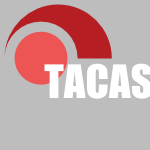 TACAS-2005-KomondoorRCF #dependent type
TACAS-2005-KomondoorRCF #dependent type- Dependent Types for Program Understanding (RK, GR, SC, JF), pp. 157–173.
 WICSA-2004-RoshandelSMGZ #architecture #modelling #trade-off
WICSA-2004-RoshandelSMGZ #architecture #modelling #trade-off- Understanding Tradeoffs among Different Architectural Modeling Approaches (RR, BRS, NM, DG, DZ), pp. 47–56.
 JCDL-2004-ChangLFKWBB
JCDL-2004-ChangLFKWBB - Collection understanding (MC, JJL, RF, AK, JPW, SAB, RGB), pp. 334–342.
 SIGMOD-2004-ZhangHC #interface #parsing #query #syntax #web
SIGMOD-2004-ZhangHC #interface #parsing #query #syntax #web- Understanding Web Query Interfaces: Best-Effort Parsing with Hidden Syntax (ZZ, BH, KCCC), pp. 107–118.
 CSEET-2004-MacNeil #education #re-engineering
CSEET-2004-MacNeil #education #re-engineering- Teaching for Understanding and Its Specialization to Software Engineering (PEM), pp. 24–29.
 CSMR-2004-CapiluppiML #evolution
CSMR-2004-CapiluppiML #evolution- Evolution of understanding in OSS projects (AC, MM, PL), pp. 58–68.
 CSMR-2004-Torchiano #approach #empirical #modelling
CSMR-2004-Torchiano #approach #empirical #modelling- Empirical Investigation of a Non-Intrusive Approach to Study Comprehension Cognitive Models (MT), pp. 184–194.
 ICSM-2004-MohanGL #approach #complexity #concept #using
ICSM-2004-MohanGL #approach #complexity #concept #using- An Approach to Understanding Program Comprehensibility Using Spatial Complexity, Concept Assignment and Typographical Style (AM, NG, PJL), p. 530.
 ICSM-2004-XingS #evolution #object-oriented
ICSM-2004-XingS #evolution #object-oriented- Understanding Phases and Styles of Object-Oriented Systems’ Evolution (ZX, ES), pp. 242–251.
 IWPC-2004-AntoniolPZ #dynamic analysis #web
IWPC-2004-AntoniolPZ #dynamic analysis #web- Understanding Web Applications through Dynamic Analysis (GA, MDP, MZ), pp. 120–131.
 IWPC-2004-Batory #challenge #generative #programming
IWPC-2004-Batory #challenge #generative #programming- Program Comprehension in Generative Programming: A History of Grand Challenges (DSB), pp. 2–13.
 IWPC-2004-GoldB #web #web service
IWPC-2004-GoldB #web #web service- Program Comprehension for Web Services (NG, KHB), pp. 151–161.
 IWPC-2004-KanellopoulosT #c++ #clustering #data mining #mining #source code
IWPC-2004-KanellopoulosT #c++ #clustering #data mining #mining #source code- Data Mining Source Code to Facilitate Program Comprehension: Experiments on Clustering Data Retrieved from C++ Programs (YK, CT), pp. 214–225.
 IWPC-2004-Kelsen #behaviour #source code
IWPC-2004-Kelsen #behaviour #source code- A Simple Static Model for Understanding the Dynamic Behavior of Programs (PK), pp. 46–51.
 IWPC-2004-KorelT #modelling
IWPC-2004-KorelT #modelling- Understanding Modifications in State-Based Models (BK, LHT), pp. 246–250.
 IWPC-2004-KuzniarzSW #empirical #modelling #uml #using
IWPC-2004-KuzniarzSW #empirical #modelling #uml #using- An Empirical Study on Using Stereotypes to Improve Understanding of UML Models (LK, MS, CW), pp. 14–23.
 IWPC-2004-OBrienS #architecture #web #web service
IWPC-2004-OBrienS #architecture #web #web service- Working Session: Program Comprehension Strategies for Web Service and Service-oriented Architectures (LO, DBS), pp. 260–263.
 IWPC-2004-SarmientoT #automation #case study #legacy
IWPC-2004-SarmientoT #automation #case study #legacy- Understanding CASE Generated Legacy Applications: A Case Study (CS, ST), pp. 111–119.
 IWPC-2004-Sneed #testing
IWPC-2004-Sneed #testing- Program Comprehension for the Purpose of Testing (HMS), pp. 162–171.
 IWPC-2004-XingS #evolution #object-oriented
IWPC-2004-XingS #evolution #object-oriented- Understanding Class Evolution in Object-Oriented Software (ZX, ES), pp. 34–45.
 WCRE-2004-MurrayL #summary
WCRE-2004-MurrayL #summary- A Brief Summary of Cognitive Patterns for Program Comprehension (AM, TCL), pp. 304–305.
 WCRE-2004-PacioneRW #novel #visualisation
WCRE-2004-PacioneRW #novel #visualisation- A Novel Software Visualisation Model to Support Software Comprehension (MJP, MR, MW), pp. 70–79.
 WCRE-2004-RocheC #hardware #reverse engineering
WCRE-2004-RocheC #hardware #reverse engineering- Combined Software and Hardware Comprehension in Reverse Engineering (PLR, AC), pp. 234–243.
 IFM-2004-Dunne
IFM-2004-Dunne - Understanding Object-Z Operations as Generalised Substitutions (SD), pp. 328–342.
 CHI-2004-LinLK #lifecycle #mobile
CHI-2004-LinLK #lifecycle #mobile- Understanding the micronote lifecycle: improving mobile support for informal note taking (ML, WGL, TSK), pp. 687–694.
 ICEIS-v1-2004-SammonAC #enterprise
ICEIS-v1-2004-SammonAC #enterprise- Understanding the ERP Post-Implementation Discourse (DS, FA, FC), pp. 466–472.
 ICPR-v1-2004-OnishiF #evaluation #image #using #video
ICPR-v1-2004-OnishiF #evaluation #image #using #video- Shooting the Lecture Scene Using Computer-controlled Cameras Based on Situation Understanding and Evaluation of Video Images (MO, KF), pp. 781–784.
 ICPR-v4-2004-HanafiahYNK #using
ICPR-v4-2004-HanafiahYNK #using- Understanding Inexplicit Utterances Using Vision for Helper Robots (ZMH, CY, AN, YK), pp. 925–928.
 SIGIR-2004-KellyB #feedback
SIGIR-2004-KellyB #feedback- Display time as implicit feedback: understanding task effects (DK, NJB), pp. 377–384.
 SIGIR-2004-Ogilvie #generative #information retrieval #modelling #probability #using
SIGIR-2004-Ogilvie #generative #information retrieval #modelling #probability #using- Understanding combination of evidence using generative probabilistic models for information retrieval (PO), p. 603.
 SIGIR-2004-Sun #representation
SIGIR-2004-Sun #representation- Discovering and representing the contextual and narrative structure of e-books to support reading and comprehension (YS), p. 603.
 SIGIR-2004-SunHW #design #user interface #visualisation
SIGIR-2004-SunHW #design #user interface #visualisation- Design of an e-book user interface and visualizations to support reading for comprehension (YS, DJH, SNKW), pp. 510–511.
 OOPSLA-2004-HauswirthSDH #behaviour #profiling
OOPSLA-2004-HauswirthSDH #behaviour #profiling- Vertical profiling: understanding the behavior of object-priented applications (MH, PFS, AD, MH), pp. 251–269.
 RE-2004-Gulla #enterprise #requirements
RE-2004-Gulla #enterprise #requirements- Understanding Requirements in Enterprise Systems Projects (JAG), pp. 176–185.
 ASE-2004-XuRS #aspect-oriented
ASE-2004-XuRS #aspect-oriented- Understanding Aspects via Implicit Invocation (JX, HR, KJS), pp. 332–335.
 ICSE-2004-Pacione #object-oriented #visualisation
ICSE-2004-Pacione #object-oriented #visualisation- Software Visualisation for Object-Oriented Program Comprehension (MJP), pp. 63–65.
 HPCA-2004-KimL #scheduling
HPCA-2004-KimL #scheduling- Understanding Scheduling Replay Schemes (IK, MHL), pp. 198–209.
 HPDC-2004-GuptaLD
HPDC-2004-GuptaLD - Measuring and Understanding User Comfort With Resource Borrowing (AG, BL, PAD), pp. 214–224.
 OSDI-2004-NagarajaOBMN #internet
OSDI-2004-NagarajaOBMN #internet- Understanding and Dealing with Operator Mistakes in Internet Services (KN, FO, RB, RPM, TDN), pp. 61–76.
 CAV-2004-GroceKL
CAV-2004-GroceKL - Understanding Counterexamples with explain (AG, DK, FL), pp. 453–456.
 ICDAR-2003-Dengel #challenge #documentation
ICDAR-2003-Dengel #challenge #documentation- Making Documents Work: Challenges for Document Understanding (AD), p. 1026–?.
 ICDAR-2003-GarainC #on the #online
ICDAR-2003-GarainC #on the #online- On Machine Understanding of Online Handwritten Mathematical Expressions (UG, BBC), pp. 349–353.
 ICDAR-2003-KleinAB #analysis #documentation #modelling
ICDAR-2003-KleinAB #analysis #documentation #modelling- Understanding Document Analysis and Understanding (through Modeling) (BK, SA, ADB), pp. 1218–1222.
 ICDAR-2003-MitraGCVP #automation
ICDAR-2003-MitraGCVP #automation- Automatic Understanding of Structures in Printed Mathematical Expressions (JM, UG, BBC, KSHV, TP), pp. 540–544.
 JCDL-2003-SumnerKRM #library #quality
JCDL-2003-SumnerKRM #library #quality- Understanding Educator Perceptions of “Quality” in Digital Libraries (TS, MK, MR, MM), pp. 269–279.
 ITiCSE-2003-HabermanLL #concept #education #research #student
ITiCSE-2003-HabermanLL #concept #education #research #student- Action research as a tool for promoting teacher awareness of students’ conceptual understanding (BH, EL, DL), pp. 144–148.
 ITiCSE-2003-Or-BachL #object-oriented #student
ITiCSE-2003-Or-BachL #object-oriented #student- Students’ understanding of object orientation (ROB, IL), p. 251.
 ICSM-2003-GoldM #concept #evolution #framework #source code
ICSM-2003-GoldM #concept #evolution #framework #source code- A Framework for Understanding Conceptual Changes in Evolving Source Code (NG, AM), pp. 431–439.
 ICSM-2003-LimpiyakornB #concept
ICSM-2003-LimpiyakornB #concept- Applying the Signature Concept to Plan-Based Program Understanding (YL, IB), p. 325–?.
 ICSM-2003-NikoraM #evolution
ICSM-2003-NikoraM #evolution- Understanding the Nature of Software Evolution (APN, JCM), p. 83–?.
 IWPC-2003-BiemanAY #object-oriented #visualisation
IWPC-2003-BiemanAY #object-oriented #visualisation- Understanding Change-Proneness in OO Software through Visualization (JMB, AAA, HJY), pp. 44–53.
 IWPC-2003-DeursenFKR #case study #education #evolution #experience
IWPC-2003-DeursenFKR #case study #education #evolution #experience- Experiences in Teaching Software Evolution and Program Comprehension (AvD, JMF, RK, JR), pp. 283–284.
 IWPC-2003-GschwindOP #runtime #using
IWPC-2003-GschwindOP #runtime #using- Using Run-Time Data for Program Comprehension (TG, JO, MP), pp. 245–250.
 IWPC-2003-HennessyMP #named #tool support #xml
IWPC-2003-HennessyMP #named #tool support #xml- gccXfront: Exploiting gcc as a Front End for Program Comprehension Tools via XML/XSLT (MH, BAM, JFP), p. 298–?.
 IWPC-2003-Klint #compilation #how #perspective
IWPC-2003-Klint #compilation #how #perspective- How Understanding and Restructuring Differ from Compiling — A Rewriting Perspective (PK), pp. 2–12.
 IWPC-2003-KoU #difference #programming
IWPC-2003-KoU #difference #programming- Individual Differences in Program Comprehension Strategies in Unfamiliar Programming Systems (AJK, BU), pp. 175–184.
 IWPC-2003-LinosCBO #dependence #multi
IWPC-2003-LinosCBO #dependence #multi- A Tool For Understanding Multi-Language Program Dependencies (PKL, ZHC, SB, BO), pp. 64–73.
 IWPC-2003-MarcusFM #3d #analysis #using #visualisation
IWPC-2003-MarcusFM #3d #analysis #using #visualisation- Comprehension of Software Analysis Data Using 3D Visualization (AM, LF, JIM), pp. 105–114.
 IWPC-2003-PinzgerOG #architecture #component
IWPC-2003-PinzgerOG #architecture #component- Analyzing and Understanding Architectural Characteristics of COM+ Components (MP, JO, HCG), pp. 54–63.
 IWPC-2003-RillingK #complexity #identification #metric #slicing #using
IWPC-2003-RillingK #complexity #identification #metric #slicing #using- Identifying Comprehension Bottlenecks Using Program Slicing and Cognitive Complexity Metric (JR, TK), pp. 115–124.
 IWPC-2003-TjortjisSL #mining #source code
IWPC-2003-TjortjisSL #mining #source code- Facilitating Program Comprehension by Mining Association Rules from Source Code (CT, LS, PJL), pp. 125–133.
 ICFP-2003-Wand #aspect-oriented
ICFP-2003-Wand #aspect-oriented- Understanding aspects: extended abstract (MW), pp. 299–300.
 DiGRA-2003-LankoskiHE #design #game studies #towards
DiGRA-2003-LankoskiHE #design #game studies #towards- Characters in Computer Games: Toward Understanding Interpretation and Design (PL, SH, IE).
 CHI-2003-VenoliaN #email #sequence #visualisation
CHI-2003-VenoliaN #email #sequence #visualisation- Understanding sequence and reply relationships within email conversations: a mixed-model visualization (GDV, CN), pp. 361–368.
 VISSOFT-2003-HassanH #dependence #graph #named
VISSOFT-2003-HassanH #dependence #graph #named- ADG: Annotated Dependency Graphs for Software Understanding (AEH, RCH), pp. 41–45.
 VISSOFT-2003-WheeldonCK #named #using
VISSOFT-2003-WheeldonCK #named #using- AutoCode: Using Memex-like Trails to Improve Program Comprehension (RW, SC, KK), pp. 48–52.
 VISSOFT-2003-WheeldonCK1 #named #using
VISSOFT-2003-WheeldonCK1 #named #using- AutoCode: Using Memex-like Trails to Improve Program Comprehension (RW, SC, KK), pp. 56–57.
 ICEIS-v1-2003-Al-Fawareh #approach #dependence #named #object-oriented #source code
ICEIS-v1-2003-Al-Fawareh #approach #dependence #named #object-oriented #source code- O2PDGS: An Approach for Understanding Object Oriented Programs (HJAF), pp. 450–455.
 ICEIS-v3-2003-PrikladnickiAE #development #distributed #towards
ICEIS-v3-2003-PrikladnickiAE #development #distributed #towards- Distributed Software Development: Toward an Understanding of the Relationship Between Project Team, Users and Customers (RP, JLNA, JRE), pp. 417–423.
 ICML-2003-Flach #geometry #machine learning #metric
ICML-2003-Flach #geometry #machine learning #metric- The Geometry of ROC Space: Understanding Machine Learning Metrics through ROC Isometrics (PAF), pp. 194–201.
 KDD-2003-CohenWM
KDD-2003-CohenWM - Understanding captions in biomedical publications (WWC, RCW, RFM), pp. 499–504.
 SEKE-2003-LimpiyakornB #knowledge-based
SEKE-2003-LimpiyakornB #knowledge-based- Integrating Signature Matching into Knowledge-Based Program Understanding (YL, IB), pp. 440–444.
 RE-2003-NiuAD #modelling #specification
RE-2003-NiuAD #modelling #specification- Understanding and Comparing Model-Based Specification Notations (JN, JMA, NAD), pp. 188–199.
 ASE-2003-ArevaloDN
ASE-2003-ArevaloDN - XRay Views: Understanding the Internals of Classes (GA, SD, ON), pp. 267–270.
 ASE-2003-HendricksonDT #approach #architecture
ASE-2003-HendricksonDT #approach #architecture- An Approach for Tracing and Understanding Asynchronous Architectures (SAH, EMD, RNT), pp. 318–322.
 ESEC-FSE-2003-Osterweil #process #re-engineering #research
ESEC-FSE-2003-Osterweil #process #re-engineering #research- Understanding process and the quest for deeper questions in software engineering research (LJO), pp. 6–14.
 ICSE-2003-MarburgerW #behaviour #tool support
ICSE-2003-MarburgerW #behaviour #tool support- Tools for Understanding the Behavior of Telecommunication Systems (AM, BW), pp. 430–443.
 ICSE-2003-MockusWZ #predict
ICSE-2003-MockusWZ #predict- Understanding and Predicting Effort in Software Projects (AM, DMW, PZ), pp. 274–284.
 ICSE-2003-YeK #developer #motivation #open source #towards
ICSE-2003-YeK #developer #motivation #open source #towards- Toward an Understanding of the Motivation of Open Source Software Developers (YY, KK), pp. 419–429.
 WICSA-2002-WesthuizenH
WICSA-2002-WesthuizenH - Understanding and Propagating Architecutural Changes (CvdW, AvdH), pp. 95–109.
 ECDL-2002-GreenbergBJDW #classification #education #library #student
ECDL-2002-GreenbergBJDW #classification #education #library #student- Student Comprehension of Classification Applications in a Science Education Digital Library (JG, KAB, MLJ, ED, PW), pp. 560–567.
 CSEET-2002-BernsteinKK02a #process #re-engineering #student #towards #tutorial
CSEET-2002-BernsteinKK02a #process #re-engineering #student #towards #tutorial- Tutorial 2: Measuring, Changing, and Measuring Changes in: Students’ Attitudes Toward and Understanding of Software Engineering Process (LB, DK, CK), p. 267.
 CSEET-2002-McCracken #bottom-up #design #education #modelling #re-engineering
CSEET-2002-McCracken #bottom-up #design #education #modelling #re-engineering- Models of Designing: Understanding Software Engineering Education from the Bottom Up (WMM), p. 55–?.
 ICSM-2002-AndrewsGC #component
ICSM-2002-AndrewsGC #component- A Model for Understanding Software Components (AAA, SG, EMC), pp. 359–368.
 ICSM-2002-Koschke #architecture #component #evolution
ICSM-2002-Koschke #architecture #component #evolution- Atomic Architectural Component Recovery for Program Understanding and Evolution (RK), pp. 478–481.
 ICSM-2002-YinK #visualisation
ICSM-2002-YinK #visualisation- Program Comprehension by Visualization in Contexts (RY, RKK), pp. 332–341.
 IWPC-2002-AversanoCLS #case study #evolution #reuse
IWPC-2002-AversanoCLS #case study #evolution #reuse- Evolving Ispell: A Case Study of Program Understanding for Reuse (LA, GC, ADL, SS), pp. 197–206.
 IWPC-2002-Binkley #difference #empirical #semantics
IWPC-2002-Binkley #difference #empirical #semantics- An Empirical Study of the Effect of Semantic Differences on Programmer Comprehension (DB), pp. 97–106.
 IWPC-2002-BurdOW #animation #diagrams #sequence chart #using
IWPC-2002-BurdOW #animation #diagrams #sequence chart #using- Evaluating Using Animation to Improve Understanding of Sequence Diagrams (EB, DO, AW), pp. 107–113.
 IWPC-2002-CounsellMS #empirical #object-oriented
IWPC-2002-CounsellMS #empirical #object-oriented- Comprehension of Object-Oriented Software Cohesion: The Empirical Quagmire (SC, EM, SS), pp. 33–42.
 IWPC-2002-DeursenV #combinator #tool support #using #visitor
IWPC-2002-DeursenV #combinator #tool support #using #visitor- Building Program Understanding Tools Using Visitor Combinators (AvD, JV), pp. 137–146.
 IWPC-2002-Exton
IWPC-2002-Exton - Constructivism and Program Comprehension Strategies (CE), pp. 281–284.
 IWPC-2002-KnightM #case study #experience
IWPC-2002-KnightM #case study #experience- Program Comprehension Experiences with GXL; Comprehension for Comprehension (CK, MM), pp. 147–156.
 IWPC-2002-RajlichW #concept
IWPC-2002-RajlichW #concept- The Role of Concepts in Program Comprehension (VR, NW), pp. 271–278.
 IWPC-2002-SomeL #modelling
IWPC-2002-SomeL #modelling- Enhancing Program Comprehension with Recovered State Models (SSS, TCL), pp. 85–93.
 IWPC-2002-TilleyH #industrial #on the #tool support #visualisation
IWPC-2002-TilleyH #industrial #on the #tool support #visualisation- On Selecting Software Visualization Tools for Program Understanding in an Industrial Context (SRT, SH), pp. 285–288.
 IWPC-2002-Walenstein #analysis #tool support
IWPC-2002-Walenstein #analysis #tool support- Theory-based Analysis of Cognitive Support in Software Comprehension Tools (AW), pp. 75–84.
 WCRE-2002-DengK #concept #using
WCRE-2002-DengK #concept #using- Using Conceptual Roles of Data for Enhanced Program Comprehension (YD, SCK), pp. 119–127.
 CSCW-2002-GrinterASTWH #how
CSCW-2002-GrinterASTWH #how- Revisiting the visit: : understanding how technology can shape the museum visit (REG, PMA, MHS, JDT, AW, AH), pp. 146–155.
 VISSOFT-2002-PurchaseCMC #collaboration #diagrams #empirical #syntax #uml
VISSOFT-2002-PurchaseCMC #collaboration #diagrams #empirical #syntax #uml- UML Collaboration Diagram Syntax: An Empirical Study of Comprehension (HCP, LC, MM, DAC), pp. 13–22.
 VISSOFT-2002-Sajaniemi #editing #independence #multi
VISSOFT-2002-Sajaniemi #editing #independence #multi- View Definitions for Language-Independent Multiple-View Program Comprehension and Editing (JS), pp. 3–12.
 CAiSE-2002-CostalST #analysis #modelling #object-oriented #uml
CAiSE-2002-CostalST #analysis #modelling #object-oriented #uml- Understanding Redundancy in UML Models for Object-Oriented Analysis (DC, MRS, ET), pp. 659–674.
 ICEIS-2002-LinyingSC #image #knowledge-based #rule-based #segmentation
ICEIS-2002-LinyingSC #image #knowledge-based #rule-based #segmentation- Knowledge-Based Image Understanding: A Rule-Based Production System for X-Ray Segmentation (SL, BS, CCC), pp. 530–533.
 ICPR-v1-2002-Ohta #pattern matching #pattern recognition #recognition #visual notation
ICPR-v1-2002-Ohta #pattern matching #pattern recognition #recognition #visual notation- Pattern Recognition and Understanding for Visual Information Media (YO), pp. 536–545.
 LSO-2002-NeuB #learning #process #simulation
LSO-2002-NeuB #learning #process #simulation- Learning and Understanding a Software Process through Simulation of Its Underlying Model (HN, UBK), pp. 81–93.
 SEKE-2002-SvahnbergWLM #architecture #quality
SEKE-2002-SvahnbergWLM #architecture #quality- A method for understanding quality attributes in software architecture structures (MS, CW, LL, MM), pp. 819–826.
 OOPSLA-2002-AldrichKC #alias
OOPSLA-2002-AldrichKC #alias- Alias annotations for program understanding (JA, VK, CC), pp. 311–330.
 ASPLOS-2002-LiJSVR #control flow #operating system #predict
ASPLOS-2002-LiJSVR #control flow #operating system #predict- Understanding and improving operating system effects in control flow prediction (TL, LKJ, AS, NV, JR), pp. 68–80.
 ISMM-2002-HirzelHDH
ISMM-2002-HirzelHDH - Understanding the connectivity of heap objects (MH, JH, AD, MH), pp. 143–156.
 ICDAR-2001-BourgeoisEB #documentation #probability #using
ICDAR-2001-BourgeoisEB #documentation #probability #using- Document Understanding Using Probabilistic Relaxation: Application on Tables of Contents of Periodicals (FL, HE, SSB), pp. 508–512.
 ICDAR-2001-MalerbaELA #automation #component #dependence #documentation #image #logic
ICDAR-2001-MalerbaELA #automation #component #dependence #documentation #image #logic- Automated Discovery of Dependencies Between Logical Components in Document Image Understanding (DM, FE, FAL, OA), pp. 174–178.
 ICDAR-2001-NatteeN #classification #documentation #geometry #machine learning #online #using
ICDAR-2001-NatteeN #classification #documentation #geometry #machine learning #online #using- Geometric Method for Document Understanding and Classification Using On-line Machine Learning (CN, MN), pp. 602–606.
 ICDAR-2001-RousselHI #documentation
ICDAR-2001-RousselHI #documentation- Web-based Cooperative Document Understanding (NR, OH, RI), pp. 368–373.
 VLDB-2001-CasatiDGS #exception #predict #process #quality
VLDB-2001-CasatiDGS #exception #predict #process #quality- Improving Business Process Quality through Exception Understanding, Prediction, and Prevention (DG, FC, UD, MCS), pp. 159–168.
 CSEET-2001-Monarch #re-engineering
CSEET-2001-Monarch #re-engineering- Understanding Software Engineering Failure as Part of the SWEBOK (IM), p. 191–?.
 ITiCSE-2001-CarnianiD #education #network
ITiCSE-2001-CarnianiD #education #network- The NetWire emulator: a tool for teaching and understanding networks (EC, RD), pp. 153–156.
 CSMR-2001-MarburgerH #legacy
CSMR-2001-MarburgerH #legacy- E-CARES Project: Understanding Complex Legacy Telecommunication Systems (AM, DH), pp. 139–147.
 ICSM-2001-BrizioliCLS #legacy
ICSM-2001-BrizioliCLS #legacy- Understanding Legacy Systems with OSK (AB, LC, ML, OS), p. 199.
 ICSM-2001-CaivanoLV #estimation #process #using
ICSM-2001-CaivanoLV #estimation #process #using- Software Renewal Process Comprehension using Dynamic Effort Estimation (DC, FL, GV), pp. 209–218.
 ICSM-2001-EisenbarthKS #analysis
ICSM-2001-EisenbarthKS #analysis- Aiding Program Comprehension by Static and Dynamic Feature Analysis (TE, RK, DS), pp. 602–611.
 IWPC-2001-AversanoCS #case study #maintenance #process
IWPC-2001-AversanoCS #case study #maintenance #process- Understanding and Improving the Maintenance Process: A Method and Two Case Studies (LA, GC, SS), pp. 199–208.
 IWPC-2001-Bennett #component #evolution
IWPC-2001-Bennett #component #evolution- Systems Evolution, Components and Services: Understanding the New Software Environment (KHB), pp. 3–6.
 IWPC-2001-EisenbarthKS #concept analysis #execution #using
IWPC-2001-EisenbarthKS #concept analysis #execution #using- Feature-Driven Program Understanding Using Concept Analysis of Execution Traces (TE, RK, DS), pp. 300–309.
 IWPC-2001-FoxDHH
IWPC-2001-FoxDHH - Backward Conditioning: A New Program Specialisation Technique and Its Application to Program Comprehension (CF, SD, MH, RMH), pp. 89–97.
 IWPC-2001-KnightM #visualisation
IWPC-2001-KnightM #visualisation- Mediating Diverse Visualisations for Comprehension (CK, MM), pp. 18–25.
 IWPC-2001-LangeWS #graph #relational #tool support
IWPC-2001-LangeWS #graph #relational #tool support- Comparing Graph-Based Program Comprehension Tools to Relational Database-Based Tools (CL, AW, HMS), pp. 209–218.
 IWPC-2001-LiY #concept #named
IWPC-2001-LiY #concept #named- Simplicity: A Key Engineering Concept for Program Understanding (YL, HY), pp. 98–107.
 IWPC-2001-LuccaFC #algebra #object-oriented #representation #thread
IWPC-2001-LuccaFC #algebra #object-oriented #representation #thread- An Algebraic Notation for Representing Threads in Object Oriented Software Comprehension (GADL, ARF, UdC), pp. 176–185.
 IWPC-2001-MoeC #distributed #execution
IWPC-2001-MoeC #distributed #execution- Understanding Distributed Systems via Execution Trace Data (JM, DAC), pp. 60–67.
 IWPC-2001-MosemannW #navigation #source code
IWPC-2001-MosemannW #navigation #source code- Navigation and Comprehension of Programs by Novice Programmers (RM, SW), pp. 79–88.
 IWPC-2001-OBrienB
IWPC-2001-OBrienB - Inference-Based and Expectation-Based Processing in Program Comprehension (MPO, JB), pp. 71–78.
 IWPC-2001-Perry #architecture
IWPC-2001-Perry #architecture- Software Architecture: Leverage for System/Program Comprehension (DEP), pp. 123–126.
 IWPC-2001-StrouliaS #behaviour
IWPC-2001-StrouliaS #behaviour- Structure-Behavior-Function Program Understanding (ES, TS), p. 120.
 IWPC-2001-TilleyD #case study
IWPC-2001-TilleyD #case study- Spreading Knowledge about Gnutella: A Case Study in Understanding Net-Centric Applications (SRT, MD), pp. 189–198.
 IWPC-2001-YuR #co-evolution #dependence
IWPC-2001-YuR #co-evolution #dependence- Hidden Dependencies in Program Comprehension and Change Propagation (ZY, VR), pp. 293–299.
 PASTE-2001-MockDCE #analysis #comparison #optimisation #points-to #set
PASTE-2001-MockDCE #analysis #comparison #optimisation #points-to #set- Dynamic points-to sets: a comparison with static analyses and potential applications in program understanding and optimization (MM, MD, CC, SJE), pp. 66–72.
 WCRE-2001-Deursen #programming #risk management
WCRE-2001-Deursen #programming #risk management- Program Comprehension Risks and Opportunities in Extreme Programming (AvD), p. 176–?.
 WCRE-2001-EmburyS #legacy #transaction
WCRE-2001-EmburyS #legacy #transaction- Assisting the Comprehension of Legacy Transactions (SME, JS), p. 345–?.
 WCRE-2001-KullbachR #approach #named
WCRE-2001-KullbachR #approach #named- Folding: An Approach to Enable Program Understanding of Preprocessed Languages (BK, VR), pp. 3–12.
 WCRE-2001-Rilling #functional
WCRE-2001-Rilling #functional- Maximizing Functional Cohesion of Comprehension Environments by Integrating User and Task Knowledge (JR), pp. 157–165.
 CHI-2001-Baldis #memory management
CHI-2001-Baldis #memory management- Effects of spatial audio on memory, comprehension, and preference during desktop conferences (JJB), pp. 166–173.
 CHI-2001-LaiCGT #on the #speech #web
CHI-2001-LaiCGT #on the #speech #web- On the road and on the Web?: comprehension of synthetic and human speech while driving (JL, KC, PAG, OT), pp. 206–212.
 SVIS-2001-KorhonenST #algorithm #testing #visualisation
SVIS-2001-KorhonenST #algorithm #testing #visualisation- Understanding Algorithms by Means of Visualized Path Testing (AK, ES, JT), pp. 256–268.
 UML-2001-Damm #uml
UML-2001-Damm #uml- Understanding UML — Pains and Rewards (WD), p. 240.
 ICSE-2001-MaleticM #semantics #using
ICSE-2001-MaleticM #semantics #using- Supporting Program Comprehension Using Semantic and Structural Information (JIM, AM), pp. 103–112.
 ICSE-2001-TilleyH #case study #reverse engineering #tool support #web
ICSE-2001-TilleyH #case study #reverse engineering #tool support #web- Evaluating the Reverse Engineering Capabilities of Web Tools for Understanding Site Content and Structure: A Case Study (SRT, SH), pp. 514–523.
 ICSE-2001-ZelkowitzR #safety
ICSE-2001-ZelkowitzR #safety- Understanding IV & V in a Safety Critical and Complex Evolutionary Environment: The NASA Space Shuttle Program (MVZ, IR), pp. 349–357.
 DATE-2001-LechnerRH #requirements #towards
DATE-2001-LechnerRH #requirements #towards- Towards a better understanding of failure modes and test requirements of ADCs (AL, AR, BH), p. 803.
 ICLP-2001-CastroC #memory management #prolog
ICLP-2001-CastroC #memory management #prolog- Understanding Memory Management in Prolog Systems (LFC, VSC), pp. 11–26.
- DL-2000-FeketeD #analysis #documentation #named #social #visualisation
- Compus: visualization and analysis of structured documents for understanding social life in the 16th century (JDF, ND), pp. 47–55.
 HT-2000-McEneaney #correlation #hypermedia
HT-2000-McEneaney #correlation #hypermedia- Navigational correlates of comprehension in hypertext (JEM), pp. 254–255.
 ITiCSE-2000-Exton #concurrent #execution #named #object-oriented
ITiCSE-2000-Exton #concurrent #execution #named #object-oriented- Elucidate: a tool to aid comprehension of concurrent object oriented execution (CE), pp. 33–36.
 WCRE-J-1997-StoreyWM00 #how #question #source code #tool support
WCRE-J-1997-StoreyWM00 #how #question #source code #tool support- How do program understanding tools affect how programmers understand programs? (MADS, KW, HAM), pp. 183–207.
 CSMR-2000-BojicV #architecture #re-engineering #reuse
CSMR-2000-BojicV #architecture #re-engineering #reuse- A Use-Case Driven Method of Architecture Recovery for Program Understanding and Reuse Reengineering (DB, DMV), pp. 23–32.
 ICSM-2000-RobitailleSK #design #navigation #tool support
ICSM-2000-RobitailleSK #design #navigation #tool support- Bridging Program Comprehension Tools by Design Navigation (SR, RS, RKK), pp. 22–32.
 IWPC-2000-BalmasWS
IWPC-2000-BalmasWS - Understanding Program Understanding (FB, HW, JS), p. 256.
 IWPC-2000-BinkleyRSH #empirical #slicing
IWPC-2000-BinkleyRSH #empirical #slicing- An Empirical Study of Amorphous Slicing as a Program Comprehension Support Tool (DB, LRR, CS, MH), pp. 161–170.
 IWPC-2000-BratthallW #architecture #aspect-oriented #design #modelling #quality
IWPC-2000-BratthallW #architecture #aspect-oriented #design #modelling #quality- Understanding Some Software Quality Aspects from Architecture and Design Models (LB, CW), pp. 27–34.
 IWPC-2000-Gallagher #tool support
IWPC-2000-Gallagher #tool support- Tools for Program Comprehension: Building a Comprehender’s Workbench (KBG), p. 255.
 IWPC-2000-Muller #migration
IWPC-2000-Muller #migration- Program Comprehension and Software Migration Strategies (HAM), p. 5–?.
 IWPC-2000-RifkinD #case study
IWPC-2000-RifkinD #case study- Program Comprehension Techniques Improve Software Inspections: A Case Study (SR, LED), pp. 131–138.
 IWPC-2000-Sajaniemi #multi
IWPC-2000-Sajaniemi #multi- Program Comprehension through Multiple Simultaneous Views: A Session with VinEd (JS), pp. 99–108.
 IWPC-2000-Sneed #animation
IWPC-2000-Sneed #animation- Source Animation as a Means of Program Comprehension (HMS), pp. 179–187.
 IWPC-2000-WohlinHO #approach #fault
IWPC-2000-WohlinHO #approach #fault- Understanding the Sources of Software Defects: A Filtering Approach (CW, MH, MCO), pp. 9–17.
 WCRE-2000-SimS #tool support
WCRE-2000-SimS #tool support- A Structured Demonstration of Program Comprehension Tools (SES, MADS), pp. 184–193.
 WCRE-2000-SimSW #lessons learnt #tool support
WCRE-2000-SimSW #lessons learnt #tool support- A Structured Demonstration of Five Program Comprehension Tools: Lessons Learnt (SES, MADS, AW), p. 210–?.
 WCRE-2000-Systa #behaviour #java #source code
WCRE-2000-Systa #behaviour #java #source code- Understanding the Behavior of Java Programs (TS), pp. 214–223.
 ICFP-2000-SerranoB #memory management #source code
ICFP-2000-SerranoB #memory management #source code- Understanding memory allocation of scheme programs (MS, HJB), pp. 245–256.
 ICEIS-2000-GortonT #enterprise #middleware
ICEIS-2000-GortonT #enterprise #middleware- Understanding Enterprise Middleware Technology (IG, PT), p. XXXIII-XXXVI.
 ICEIS-2000-LiY #enterprise #information management #nondeterminism #re-engineering #reasoning
ICEIS-2000-LiY #enterprise #information management #nondeterminism #re-engineering #reasoning- Code Understanding Through Context-Oriented Uncertainty Reasoning for Enterprise Information System Reengineering (YL, HY), pp. 163–170.
 ICEIS-2000-Wagner #enterprise #information management
ICEIS-2000-Wagner #enterprise #information management- Understanding the Enterprise Information System Technology (GW), p. XXXVII-XXXVIII.
 ICML-2000-WalkerWL #fault #identification #natural language #using
ICML-2000-WalkerWL #fault #identification #natural language #using- Using Natural Language Processing and discourse Features to Identify Understanding Errors (MAW, JHW, IL), pp. 1111–1118.
 ICPR-v3-2000-KobayashiK #multi
ICPR-v3-2000-KobayashiK #multi- Multi Contrast Based Texture Model for Understanding Human Subjectivity (YK, TK), pp. 3929–3934.
 OOPSLA-2000-RaysideC #object-oriented #programming
OOPSLA-2000-RaysideC #object-oriented #programming- An Aristotelian understanding of object-oriented programming (DR, GTC), pp. 337–353.
 TOOLS-PACIFIC-2000-JacksonBT #framework #visualisation
TOOLS-PACIFIC-2000-JacksonBT #framework #visualisation- Understanding Frameworks through Visualisation (KJ, RB, EDT), pp. 304–315.
 ASE-2000-Stewart #empirical
ASE-2000-Stewart #empirical- An Experiment in Scientific Program Understanding (MEMS), pp. 281–284.
 ICSE-2000-Picco
ICSE-2000-Picco - Understanding code mobility (GPP), p. 834.
 SAC-2000-Rowstron #optimisation
SAC-2000-Rowstron #optimisation- Optimising the Linda in Primitive: Understanding Tuple-Space Run-times (AITR), pp. 227–232.
 CADE-2000-Pulman #automation #deduction #named #natural language #tutorial
CADE-2000-Pulman #automation #deduction #named #natural language #tutorial- Tutorial: Automated Deduction and Natural Language Understanding (SGP), pp. 509–510.
 ADL-1999-KleinA #analysis #distributed #documentation #knowledge-based #parsing
ADL-1999-KleinA #analysis #distributed #documentation #knowledge-based #parsing- Distributed Knowledge-Based Parsing for Document Analysis and Understanding (BK, AA), pp. 6–15.
 ICDAR-1999-CesariniFGS #approach #documentation #multi
ICDAR-1999-CesariniFGS #approach #documentation #multi- A Two Level Knowledge Approach for Understanding Documents of a Multi-Class Domain (FC, EF, MG, GS), pp. 135–138.
 ICDAR-1999-CracknellD #agile #analysis #documentation #prototype #research
ICDAR-1999-CracknellD #agile #analysis #documentation #prototype #research- A Handwriting Understanding Environment (HUE) for Rapid Prototyping in Handwriting and Document Analysis Research (CC, ACD), pp. 362–365.
 CSMR-1999-KrikhaarFJM #architecture #tool support
CSMR-1999-KrikhaarFJM #architecture #tool support- Architecture Comprehension Tools for a PBX System (RLK, LMGF, RdJ, JM), pp. 31–41.
 ICSM-1999-MayrhauserWL #approach #architecture #experience #reverse engineering
ICSM-1999-MayrhauserWL #approach #architecture #experience #reverse engineering- Experience Paper: Experience with a Reverse Engineering Architecture Approach to Increase Understanding (AvM, JW, QL), pp. 131–138.
 ICSM-1999-MendoncaK #classification #component #distributed
ICSM-1999-MendoncaK #classification #component #distributed- Component Module Classification for Distributed Software Understanding (NCM, JK), p. 119–?.
 IWPC-1999-BurnsteinS #automation #fuzzy #reasoning
IWPC-1999-BurnsteinS #automation #fuzzy #reasoning- An Application of Fuzzy Reasoning to Support Automated Program Comprehension (IB, FS), pp. 66–73.
 IWPC-1999-DeursenM #cobol #using
IWPC-1999-DeursenM #cobol #using- Understanding COBOL Systems using Inferred Types (AvD, LM), pp. 74–81.
 IWPC-1999-FasolinoV #automation #dependence
IWPC-1999-FasolinoV #automation #dependence- Improving Software Comprehension through an Automated Dependency Tracer (ARF, GV), pp. 58–65.
 IWPC-1999-FrancelR #debugging #slicing
IWPC-1999-FrancelR #debugging #slicing- The Relationship of Slicing and Debugging to Program Understanding (MAF, SR), pp. 106–113.
 IWPC-1999-KesslerS #approach #automation #matrix
IWPC-1999-KesslerS #approach #automation #matrix- The SPARAMAT Approach to Automatic Comprehension of Sparse Matrix Computations (CWK, CS), pp. 200–207.
 IWPC-1999-KnightM #visualisation
IWPC-1999-KnightM #visualisation- Comprehension with[in] Virtual Environment Visualisations (CK, MM), pp. 4–11.
 IWPC-1999-Korel #black box #component #off the shelf
IWPC-1999-Korel #black box #component #off the shelf- Black-Box Understanding of COTS Components (BK), pp. 92–99.
 HCI-CCAD-1999-LinDF #data flow #diagrams #difference
HCI-CCAD-1999-LinDF #data flow #diagrams #difference- Strategy differences in data flow diagram comprehension between intermediates and novices (CJL, TCD, YMF), pp. 48–52.
 HCI-EI-1999-CrosbyC #multi #user interface
HCI-EI-1999-CrosbyC #multi #user interface- Investigating User Comprehension of Complex Multi-user Interfaces (MEC, DNC), pp. 856–860.
 HCI-EI-1999-Davies99b #generative #process #programming
HCI-EI-1999-Davies99b #generative #process #programming- Expertise in computer programming: Exploring commonalities between code comprehension and generation activities (SPD), pp. 1273–1277.
 HCI-EI-1999-KawanoK #animation
HCI-EI-1999-KawanoK #animation- The Effects of Facial Expression on Understanding Japanese Sign Language Animation (SK, TK), pp. 783–787.
 ICEIS-1999-LiHCHN #analysis #automation #documentation
ICEIS-1999-LiHCHN #analysis #automation #documentation- Automatic Document Analysis and Understanding System (XL, JH, ZC, DCDH, PAN), pp. 91–100.
 TOOLS-EUROPE-1999-Pour99a #component #java
TOOLS-EUROPE-1999-Pour99a #component #java- Understanding Software Component Technologies: JavaBeans and ActiveX (GP), p. 398.
 ICSM-1998-MayrhauserV #adaptation
ICSM-1998-MayrhauserV #adaptation- Program Understanding During Software Adaptation Tasks (AvM, AMV), pp. 316–325.
 IWPC-1998-DetienneBW #object-oriented #programming
IWPC-1998-DetienneBW #object-oriented #programming- The Effect of Object-Oriented Programming Expertise in Several Dimensions of Comprehension Strategies (FD, JMB, SW), pp. 82–89.
 IWPC-1998-DeursenK #agile #case study #cobol
IWPC-1998-DeursenK #agile #case study #cobol- Rapid System Understanding: Two COBOL Case Studies (AvD, TK), pp. 90–97.
 IWPC-1998-ErdosS #maintenance #source code
IWPC-1998-ErdosS #maintenance #source code- Partial Comprehension of Complex Programs (enough to perform maintenance) (KE, HMS), pp. 98–105.
 IWPC-1998-Kamp #approach #multi #repository #tool support
IWPC-1998-Kamp #approach #multi #repository #tool support- Managing a Multi-File, Multi-Language Software Repository for Program Comprehension Tools 3/4 A Generic Approach (MK), pp. 64–71.
 IWPC-1998-KorelR #scalability #slicing #source code
IWPC-1998-KorelR #scalability #slicing #source code- Program Slicing in Understanding of Large Programs (BK, JR), pp. 145–152.
 IWPC-1998-LagueLBMD #analysis #architecture #framework
IWPC-1998-LagueLBMD #analysis #architecture #framework- An Analysis Framework for Understanding Layered Software Architectures (BL, CL, ALB, EM, MD), pp. 37–44.
 IWPC-1998-MayrhauserV #adaptation #behaviour #scalability
IWPC-1998-MayrhauserV #adaptation #behaviour #scalability- Program Understanding Behavior During Adaptation of Large Scale Software (AvM, AMV), pp. 164–172.
 IWPC-1998-SchauerK #visualisation
IWPC-1998-SchauerK #visualisation- Pattern Visualization for Software Comprehension (RS, RKK), pp. 4–12.
 IWPC-1998-WoodsOLGQ #architecture #tool support
IWPC-1998-WoodsOLGQ #architecture #tool support- An Architecture for Interoperable Program Understanding Tools (SW, LO, TL, KG, AQ), pp. 54–63.
 PASTE-1998-Snelting #concept analysis #framework
PASTE-1998-Snelting #concept analysis #framework- Concept Analysis — A New Framework for Program Understanding (GS), pp. 1–10.
 WCRE-1998-BurdM #re-engineering
WCRE-1998-BurdM #re-engineering- Assisting Human Understanding to Aid the Targeting of Necessary Reengineering Work (EB, MM), pp. 2–9.
 WCRE-1998-KullbachWDE #multi
WCRE-1998-KullbachWDE #multi- Program Comprehension in Multi-Language Systems (BK, AW, PD, JE), pp. 135–143.
 WCRE-1998-LinO #flexibility #named
WCRE-1998-LinO #flexibility #named- FEPSS: A Flexible and Extensible Program Comprehension Support System (TL, LO), pp. 40–49.
 ICPR-1998-CracknellD #documentation #image #using
ICPR-1998-CracknellD #documentation #image #using- Document image understanding of handwritten forms using rule-trees (CC, ACD), pp. 936–938.
 ICPR-1998-FanYG #knowledge-based #named
ICPR-1998-FanYG #knowledge-based #named- KRUS: a knowledge-based road scene understanding system (CF, XY, WG), pp. 731–733.
 ASE-1998-ErdemJM
ASE-1998-ErdemJM - Task Oriented Software Understanding (AE, WLJ, SM), pp. 230–239.
 ASE-1998-Walenstein #design #modelling #tool support
ASE-1998-Walenstein #design #modelling #tool support- Developing the Designer’s Toolkit with Software Comprehension Models (AW), pp. 310–313.
- DL-1997-SchiffH #analysis #social
- Understanding Complex Information Environments: A Social Analysis of Watershed Planning (LRS, NAVH), pp. 161–168.
 ECDL-1997-SlaughterSM #recognition #video
ECDL-1997-SlaughterSM #recognition #video- Comprehension and Object Recognition Capabilities for Presentations of Simultaneous Video Key Frame Surrogates (LAS, BS, GM), pp. 41–54.
 ICDAR-1997-CesariniFGMSS97a
ICDAR-1997-CesariniFGMSS97a - Rectangle Labelling for an Invoice Understanding System (FC, EF, MG, SM, JS, GS), pp. 324–330.
 ICDAR-1997-CracknellDD97a #analysis #documentation #framework #image #named
ICDAR-1997-CracknellDD97a #analysis #documentation #framework #image #named- TABS — A New Software Framework for Document Image Processing, Analysis, and Understanding (CC, ACD, LD), pp. 1001–1005.
 ICDAR-1997-LiLRRZ #documentation #image #knowledge-based
ICDAR-1997-LiLRRZ #documentation #image #knowledge-based- A Knowledge-Based Image Understanding Environment for Document Processing (YL, ML, ER, JFR, CZ), pp. 979–983.
 ICDAR-1997-WatanabeH #automation #layout
ICDAR-1997-WatanabeH #automation #layout- Automatic Acquisition of Layout Knowledge for Understanding Business Cards (TW, XH), pp. 216–220.
 ICSM-1997-Abd-El-Hafiz #composition #knowledge-based
ICSM-1997-Abd-El-Hafiz #composition #knowledge-based- Effects of Decomposition Techniques on Knowledge-Based Program Understanding (SKAEH), p. 21–?.
 ICSM-1997-AntoniolFLTZM #maintenance
ICSM-1997-AntoniolFLTZM #maintenance- Program Understanding and Maintenance with the CANTO Environment (GA, RF, GL, PT, SZ, EM), p. 72–?.
 ICSM-1997-GirardK #architecture #component #towards
ICSM-1997-GirardK #architecture #component #towards- Finding Components in a Hierarchy of Modules: a Step towards Architectural Understanding (JFG, RK), pp. 58–65.
 ICSM-1997-Gupta #case study #experience #using
ICSM-1997-Gupta #case study #experience #using- Program Understanding Using Program Slivers — An Experience Report (AG), pp. 66–71.
 ICSM-1997-MayrhauserV #maintenance #process #scalability
ICSM-1997-MayrhauserV #maintenance #process #scalability- Hypothesis-Driven Understanding Processes During Corrective Maintenance of Large Scale Software (AvM, AMV), pp. 12–20.
 WCRE-1997-GirardKS #architecture #comparison #data type #detection #encapsulation
WCRE-1997-GirardKS #architecture #comparison #data type #detection #encapsulation- Comparison of Abstract Data Type and Abstract State Encapsulation Detection Techniques for Architectural Understanding (JFG, RK, GS), pp. 66–75.
 WCRE-1997-ReevesS #approach #named
WCRE-1997-ReevesS #approach #named- JACKAL: A Hierarchical Approach to Program Understanding (AAR, JDS), pp. 84–93.
 WCRE-1997-StoreyWM #how #question #source code #tool support
WCRE-1997-StoreyWM #how #question #source code #tool support- How Do Program Understanding Tools Affect How Programmers Understand Programs? (MADS, KW, HAM), p. 12–?.
 WPC-1997-BurdM #reuse
WPC-1997-BurdM #reuse- Enriching Program Comprehension for Software Reuse (EB, MM), pp. 130–137.
 WPC-1997-BurnsteinR #automation
WPC-1997-BurnsteinR #automation- Automated Chunking to Support Program Comprehension (IB, KR), pp. 40–49.
 WPC-1997-ChanM #named
WPC-1997-ChanM #named- PUI: A Tool to Support Program Understanding (PSC, MM), pp. 192–198.
 WPC-1997-ClaytonRTW #case study
WPC-1997-ClaytonRTW #case study- A Case Study of Domain-based Program Understanding (RC, SR, LT, LMW), pp. 102–110.
 WPC-1997-KloschWTs #component #state machine
WPC-1997-KloschWTs #component #state machine- Facilitating Program Comprehension via Generic Components for State Machines (RK, JW, GT, HCG), pp. 118–127.
 WPC-1997-KorelR #execution #slicing
WPC-1997-KorelR #execution #slicing- Dynamic Program Slicing in Understanding of Program Execution (BK, JR), pp. 80–89.
 WPC-1997-LangM #framework #research
WPC-1997-LangM #framework #research- Building a Research Infrastructure for Program Comprehension Observations (SL, AvM), pp. 165–169.
 WPC-1997-RajlichC #standard #towards
WPC-1997-RajlichC #standard #towards- Towards Standard for Experiments in Program Comprehension (VR, GSC), pp. 160–161.
 WPC-1997-Sayyad-ShirabadLL #towards
WPC-1997-Sayyad-ShirabadLL #towards- A Little Knowledge Can Go a Long Way Towards Program Understanding (JSS, TCL, SL), pp. 111–117.
 WPC-1997-TonellaAFM #analysis #points-to
WPC-1997-TonellaAFM #analysis #points-to- Points-to Analysis for Program Understanding (PT, GA, RF, EM), pp. 90–99.
 WPC-1997-YangLC #component #identification #program transformation #reuse
WPC-1997-YangLC #component #identification #program transformation #reuse- Code Understanding through Program Transformation for Reusable Component Identification (HY, PL, WCC), pp. 148–157.
 CHI-1997-RaderBL #programming #visual notation
CHI-1997-RaderBL #programming #visual notation- Degrees of Comprehension: Children’s Understanding of a Visual Programming Environment (CR, CB, CHL), pp. 351–358.
 CHI-1997-Vaughan
CHI-1997-Vaughan - Understanding Movement (LCV), pp. 548–549.
 HCI-SEC-1997-MacLeodMK #analysis #human-computer #requirements
HCI-SEC-1997-MacLeodMK #analysis #human-computer #requirements- Understanding HCI Requirements: Expertise and Assistance to Imagery Analysis (ISM, AJM, EK), pp. 559–562.
 HCI-SEC-1997-NordbottenC #difference
HCI-SEC-1997-NordbottenC #difference- Individual User Differences in Data Model Comprehension (JCN, MEC), pp. 663–666.
 ASE-1997-Ameur #program analysis #source code
ASE-1997-Ameur #program analysis #source code- A Contribution to Program Comprehension by Program Analysis: Application to Numerical Programs (YAA), pp. 134–142.
 ASE-1997-Gaugne #debugging #static analysis
ASE-1997-Gaugne #debugging #static analysis- A Static Analysis for Program Understanding and Debugging (RG), pp. 297–298.
 ASE-1997-Welty #abstract syntax tree #syntax
ASE-1997-Welty #abstract syntax tree #syntax- Augmenting Abstract Syntax Trees for Program Understanding (CAW), pp. 126–133.
 ICSE-1997-OCallahanJ #named #type inference
ICSE-1997-OCallahanJ #named #type inference- Lackwit: A Program Understanding Tool Based on Type Inference (RO, DJ), pp. 338–348.
 ICSE-1997-PorterSV #developer #process
ICSE-1997-PorterSV #developer #process- Understanding the Effects of Developer Activities on Inspection Interval (AAP, HPS, LGV), pp. 128–138.
 ICSE-1997-Rajlich #evolution #legacy
ICSE-1997-Rajlich #evolution #legacy- Comprehension and Evolution of Legacy Software (VR), pp. 669–670.
 ITiCSE-1996-WilsonAK #algorithm #animation #overview
ITiCSE-1996-WilsonAK #algorithm #animation #overview- Review of animation systems for algorithm understanding (JDW, RMA, IRK), pp. 75–77.
 ICSM-1996-Abd-El-Hafiz #approach #evaluation #knowledge-based
ICSM-1996-Abd-El-Hafiz #approach #evaluation #knowledge-based- Evaluation of a Knowledge-Based Approach to Program Understanding (SKAEH), p. 275–?.
 ICSM-1996-WildeC #experience
ICSM-1996-WildeC #experience- Early field experience with the Software Reconnaissance technique for program comprehension (NW, CC), pp. 312–318.
 WCRE-1996-Abd-El-Hafiz #approach #evaluation #knowledge-based
WCRE-1996-Abd-El-Hafiz #approach #evaluation #knowledge-based- Evaluation of a Knowledge-Based Approach to Program Understanding (SKAEH), p. 259–?.
 WCRE-1996-WildeC #experience
WCRE-1996-WildeC #experience- Early Field Experience with the Software Recounaissance Technique for Program Comprehension (NW, CC), pp. 270–276.
 WCRE-1996-WoodsQ #algorithm #how #recognition #towards
WCRE-1996-WoodsQ #algorithm #how #recognition #towards- Some Experiments Toward Understanding How Program Plan Recognition Algorithms Scale (SW, AQ), pp. 21–30.
 WPC-1996-AlencarCKL #approach #design pattern
WPC-1996-AlencarCKL #approach #design pattern- A Formal Architectural Design Patterns-Based Approach to Software Understanding (PSCA, DDC, TK, CJPdL), pp. 154–163.
 WPC-1996-BlazyF #analysis #interprocedural
WPC-1996-BlazyF #analysis #interprocedural- Interprocedural analysis for program comprehension by specialization (SB, PF), p. 133–?.
 WPC-1996-BoldyreffBHMY #maintenance #traceability
WPC-1996-BoldyreffBHMY #maintenance #traceability- Greater Understanding Through Maintainer Driven Traceability (CB, EB, RMH, MM, EJY), p. 100–?.
 WPC-1996-Bull #domain-specific language #safety #using
WPC-1996-Bull #domain-specific language #safety #using- Comprehension of Safety-Critical Systems Using Domain-Specific Languages (TB), pp. 108–122.
 WPC-1996-CanforaMT #maintenance
WPC-1996-CanforaMT #maintenance- A Workbench for Program Comprehension during Software Maintenance (GC, LM, MT), pp. 30–39.
 WPC-1996-CitrinSZ #interface #scalability
WPC-1996-CitrinSZ #interface #scalability- Scalable Interfaces to Support Program Comprehension (WC, CS, BGZ), pp. 123–132.
 WPC-1996-FioreLV #estimation
WPC-1996-FioreLV #estimation- Effort Estimation for Program Comprehension (PF, FL, GV), p. 78–?.
 WPC-1996-FiutemMAT #architecture
WPC-1996-FiutemMAT #architecture- Understanding the architecture of software systems (RF, EM, GA, PT), p. 187–?.
 WPC-1996-KloeschM
WPC-1996-KloeschM - Improving Program Understanding by Unfolding Layers of Interacting Patterns (RK, RM), pp. 208–217.
 WPC-1996-Kunz #automation #clustering #process
WPC-1996-Kunz #automation #clustering #process- Evaluating process clusters to support automatic program understanding (TK), pp. 198–207.
 WPC-1996-LuciaFM #behaviour #slicing
WPC-1996-LuciaFM #behaviour #slicing- Understanding Function Behaviors through Program Slicing (ADL, ARF, MM), pp. 9–10.
 WPC-1996-MayrhauserV #migration #on the #scalability
WPC-1996-MayrhauserV #migration #on the #scalability- On the Role of Hypotheses during Opportunistic Understanding While Porting Large Scale Code (AvM, AMV), pp. 68–77.
 WPC-1996-TilleySP #framework #towards
WPC-1996-TilleySP #framework #towards- Towards a Framework for Program Understanding (SRT, DBS, SP), p. 19–?.
 WPC-1996-WallnauCMK #approach #architecture
WPC-1996-WallnauCMK #approach #architecture- The Gadfly: An Approach to Architectural-Level System Comprehension (KCW, PCC, EJM, RK), pp. 178–186.
 WPC-1996-Wong #on the #process
WPC-1996-Wong #on the #process- On Inserting Program Understanding Technology into the Software Change Process (KW), pp. 90–99.
 ICPR-1996-BabaguchiDK #generative #image #sketching
ICPR-1996-BabaguchiDK #generative #image #sketching- Generation of sketch map image and its instructions to support the understanding of geographical information (NB, SD, TK), pp. 274–278.
 ICPR-1996-ErenshteynLFMS #approach #gesture #recognition
ICPR-1996-ErenshteynLFMS #approach #gesture #recognition- Recognition approach to gesture language understanding (RE, PL, RAF, LM, GS), pp. 431–435.
 ICPR-1996-FischerN #algorithm #image #parallel
ICPR-1996-FischerN #algorithm #image #parallel- A parallel any-time control algorithm for image understanding (VF, HN), pp. 141–145.
 ICPR-1996-LladosLM #documentation #graph #using
ICPR-1996-LladosLM #documentation #graph #using- Hand drawn document understanding using the straight line Hough transform and graph matching (JL, JLK, EM), pp. 497–501.
 ICPR-1996-RamelVE #documentation
ICPR-1996-RamelVE #documentation- Combining global and local vision for technical document understanding (JYR, NV, HE), pp. 773–777.
 ICPR-1996-RougonP
ICPR-1996-RougonP - Understanding the structure of diffusive scale-spaces (NR, FJP), pp. 844–848.
 SAS-1996-BorgiaDPLT #mobile #semantics
SAS-1996-BorgiaDPLT #mobile #semantics- Understanding Mobile Agents via a Non-Interleaving Semantics for Facile (RB, PD, CP, LL, BT), pp. 98–112.
 ICSE-1996-BasiliBCKMV #maintenance #predict #process
ICSE-1996-BasiliBCKMV #maintenance #predict #process- Understanding and Predicting the Process of Software Maintenance Release (VRB, LCB, SEC, YMK, WLM, JDV), pp. 464–474.
 ICSE-1996-WoodsY #analysis #approach #heuristic #problem
ICSE-1996-WoodsY #analysis #approach #heuristic #problem- The Program Understanding Problem: Analysis and a Heuristic Approach (SGW, QY), pp. 6–15.
 KBSE-1996-QuiliciYW #algorithm #recognition
KBSE-1996-QuiliciYW #algorithm #recognition- Applying Plan Recognition Algorithms to Program Understanding (AQ, QY, SW), p. 15.
 PDP-1996-AndelMHZ #knowledge-based #parallel
PDP-1996-AndelMHZ #knowledge-based #parallel- Program Comprehension Support for Knowledge-Based Parallelization (SA, BDM, JH, HPZ), pp. 455–461.
 ICDAR-v1-1995-FarrowXO #documentation
ICDAR-v1-1995-FarrowXO #documentation- Model matching in intelligent document understanding (GSDF, CSX, JPO), pp. 293–296.
 ICDAR-v1-1995-Ishitani #graph #image
ICDAR-v1-1995-Ishitani #graph #image- Model matching based on association graph for form image understanding (YI), pp. 287–292.
 ICDAR-v1-1995-LinLS #documentation #heuristic #interactive #using
ICDAR-v1-1995-LinLS #documentation #heuristic #interactive #using- Interactive acquisition of thematic information of Chinese verbs for judicial verdict document understanding using templates, syntactic clues, and heuristics (KHCL, RLL, VWS), pp. 297–300.
 ICDAR-v1-1995-LuOS #interactive #performance #recognition
ICDAR-v1-1995-LuOS #interactive #performance #recognition- A proposal of efficient interactive recognition system for understanding of map drawings (WL, TO, MS), pp. 520–523.
 ICDAR-v1-1995-SatohTK #automation #documentation #generative #image #library
ICDAR-v1-1995-SatohTK #automation #documentation #generative #image #library- An automated generation of an electronic library based on document image understanding (SS, AT, EK), pp. 163–166.
 ICDAR-v1-1995-WuLS #object-oriented
ICDAR-v1-1995-WuLS #object-oriented- An object-oriented model for drawing understanding and its ability of noise absorption (WW, WL, MS), pp. 261–264.
 ICDAR-v2-1995-WatanabeF #documentation #framework #image #validation
ICDAR-v2-1995-WatanabeF #documentation #framework #image #validation- A framework for validating recognized results in understanding table-form document images (TW, TF), pp. 536–539.
 ICDAR-v2-1995-YouCCC #approach #documentation #knowledge-based
ICDAR-v2-1995-YouCCC #approach #documentation #knowledge-based- A knowledge-based approach to Chinese archive document understanding (SSY, GHC, PCC, BSC), pp. 553–556.
 ICDAR-v2-1995-Yu #automation #diagrams
ICDAR-v2-1995-Yu #automation #diagrams- Automatic understanding of symbol-connected diagrams (BY), pp. 803–806.
 CSEE-1995-FranceL #requirements #specification
CSEE-1995-FranceL #requirements #specification- Understanding the Role of Formal Specification Techniques in Requirements Engineering (RBF, MMLP), pp. 207–221.
 CSEE-1995-Hefley #design #education #using #web
CSEE-1995-Hefley #design #education #using #web- Understanding, Using and Designing for Educational Uses of the World-Wide Web (WEH), pp. 431–432.
 FPLE-1995-JarvisPM #case study #education #experience #functional #programming #scalability
FPLE-1995-JarvisPM #case study #education #experience #functional #programming #scalability- Understanding LOLITA: Experiences in Teaching Large Scale Functional Programming (SAJ, SP, RGM), pp. 103–119.
 ICSM-1995-BoldyreffBHMMY #approach #case study
ICSM-1995-BoldyreffBHMMY #approach #case study- The AMES approach to application understanding: a case study (CB, EB, RMH, REM, MM, EJY), pp. 182–191.
 WCRE-1995-RugaberSW #problem
WCRE-1995-RugaberSW #problem- The Interleaving Problem in Program Understanding (SR, KS, LMW).
 TLCA-1995-Dowek #combinator #λ-calculus
TLCA-1995-Dowek #combinator #λ-calculus- λ-calculus, Combinators and the Comprehension Scheme (GD), pp. 154–170.
 CHI-1995-FurnasB #diagrams #interface #multi
CHI-1995-FurnasB #diagrams #interface #multi- Space-Scale Diagrams: Understanding Multiscale Interfaces (GWF, BBB), pp. 234–241.
 CAiSE-1995-KrogstieLS #quality #requirements #towards
CAiSE-1995-KrogstieLS #quality #requirements #towards- Towards a Deeper Understanding of Quality in Requirements Engineering (JK, OIL, GS), pp. 82–95.
 SEKE-1995-Balmas #source code
SEKE-1995-Balmas #source code- Classifying Programs: a Key For program Understanding (FB), pp. 342–349.
 OOPSLA-1995-LangeN #design pattern #framework #interactive #visualisation
OOPSLA-1995-LangeN #design pattern #framework #interactive #visualisation- Interactive Visualization of Design Patterns Can Help in Framework Understanding (DBL, YN), pp. 342–357.
 PLILP-1995-MasseyT #analysis #array
PLILP-1995-MasseyT #analysis #array- Modes of Comprehension: Mode Analysis of Arrays and Array Comprehensions (BCM, ET), pp. 207–222.
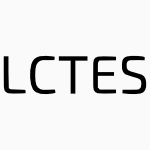 LCT-RTS-1995-Wilner #embedded #named #realtime #visualisation
LCT-RTS-1995-Wilner #embedded #named #realtime #visualisation- WindView: A Tool for Understanding Real-time Embedded Software Through System Visualization (DW), pp. 117–123.
 ICSM-1994-CowanGLS #readability #using
ICSM-1994-CowanGLS #readability #using- Enhancing Code for Readability and Comprehension Using SGML (DDC, DMG, CJPdL, AvS), pp. 181–190.
 ICSM-1994-JoinerTCSSG
ICSM-1994-JoinerTCSSG - Data-Centered Program Understanding (JKJ, WTT, KPC, SS, JS, HG), pp. 272–281.
 ICSM-1994-KinlochM #c #graph #representation #source code #using
ICSM-1994-KinlochM #c #graph #representation #source code #using- Understanding C Programs Using the Combined C Graph Representation (DAK, MM), pp. 172–180.
 ICML-1994-RachlinKSA #reasoning #towards
ICML-1994-RachlinKSA #reasoning #towards- Towards a Better Understanding of Memory-based Reasoning Systems (JR, SK, SS, DWA), pp. 242–250.
 SEKE-1994-Abd-El-HafizB #development
SEKE-1994-Abd-El-HafizB #development- A tool for assisting the understanding and formal development of software (SKAEH, VRB), pp. 36–45.
 ICSE-1994-MayrhauserV #maintenance #process #scalability
ICSE-1994-MayrhauserV #maintenance #process #scalability- Comprehension Processes During Large Scale Maintenance (AvM, AMV), pp. 39–48.
 ICSE-1994-YuM #analysis #design #modelling #process #why
ICSE-1994-YuM #analysis #design #modelling #process #why- Understanding “Why” in Software Process Modelling, Analysis, and Design (ESKY, JM), pp. 159–168.
 KBSE-1994-QuiliciC
KBSE-1994-QuiliciC - A Cooperative Program Understanding Environment (AQ, DNC), pp. 125–132.
 KBSE-1994-SelfridgeH #visual notation
KBSE-1994-SelfridgeH #visual notation- Graphical Support for Code-Level Software Understanding (PGS, GTH), pp. 117–124.
 ICDAR-1993-Bayer #analysis #documentation #modelling
ICDAR-1993-Bayer #analysis #documentation #modelling- Understanding structured text documents by a model based document analysis system (TAB), pp. 448–453.
 ICDAR-1993-Dengel93a #analysis #documentation #information management #multi
ICDAR-1993-Dengel93a #analysis #documentation #information management #multi- The role of document analysis and understanding in multi-media information systems (AD), pp. 385–390.
 ICDAR-1993-DeseillignyMS #algorithm #graph #network #re-engineering
ICDAR-1993-DeseillignyMS #algorithm #graph #network #re-engineering- Map understanding for GIS data capture: Algorithms for road network graph reconstruction (MPD, HLM, GS), pp. 676–679.
 ICDAR-1993-EspositoMS #automation #documentation
ICDAR-1993-EspositoMS #automation #documentation- Automated acquisition of rules for document understanding (FE, DM, GS), pp. 650–654.
 ICDAR-1993-KanaiNRN #documentation #metric #performance
ICDAR-1993-KanaiNRN #documentation #metric #performance- Performance metrics for document understanding systems (JK, TAN, SVR, GN), pp. 424–427.
 ICDAR-1993-LeeL #documentation
ICDAR-1993-LeeL #documentation- Understanding mathematical expressions in a printed document (HJL, MCL), pp. 502–505.
 ICDAR-1993-NakamuraFN #diagrams #natural language
ICDAR-1993-NakamuraFN #diagrams #natural language- Diagram understanding utilizing natural language text (YN, RF, MN), pp. 614–618.
 ICDAR-1993-SatohMS #image #learning
ICDAR-1993-SatohMS #image #learning- Drawing image understanding system with capability of rule learning (SS, HM, MS), pp. 119–124.
 ICDAR-1993-Srihari93a #documentation
ICDAR-1993-Srihari93a #documentation- Intelligent document understanding: Understanding photographs with captions (RKS), pp. 664–667.
 ICDAR-1993-TaylorLDW #documentation
ICDAR-1993-TaylorLDW #documentation- An intelligent document understanding system (SLT, ML, DAD, CW), pp. 107–110.
 ICDAR-1993-Wang #analysis #documentation #visualisation
ICDAR-1993-Wang #analysis #documentation #visualisation- Machine visualization, understanding and interpretation of polyhedral line-drawings in document analysis (PSPW), pp. 882–885.
 ICDAR-1993-WatanabeLS #documentation #framework #information management #representation #towards
ICDAR-1993-WatanabeLS #documentation #framework #information management #representation #towards- Toward a practical document understanding of table-form documents: its framework and knowledge representation (TW, QL, NS), pp. 510–515.
 ICDAR-1993-WuS #flexibility #framework #multi #object-oriented
ICDAR-1993-WuS #flexibility #framework #multi #object-oriented- A multipurpose drawing understanding system with flexible object-oriented framework (WW, MS), pp. 870–873.
 CSM-1993-LinosADHLT #c #named #re-engineering #source code
CSM-1993-LinosADHLT #c #named #re-engineering #source code- CARE: An Environment for Understanding and Re-Engineering C Programs (PKL, PA, LD, YH, PL, PT), pp. 130–139.
 WCRE-1993-BertelsVB #approach
WCRE-1993-BertelsVB #approach- A Cognitive Approach to Program Understanding (KB, PV, CDB), pp. 1–7.
 WCRE-1993-OlshefskiC #prototype #type system
WCRE-1993-OlshefskiC #prototype #type system- A Prototype System for static and Dynamic Program Understanding (DO, AC), pp. 93–106.
 HCI-SHI-1993-ChoMHM #algorithm #development #recognition
HCI-SHI-1993-ChoMHM #algorithm #development #recognition- A Pen-Based System to Input Correct Answers to Assist in the Development of Recognition and Understanding Algorithms of Ink Data (YC, TM, SH, SM), pp. 68–73.
 HCI-SHI-1993-Kakola #coordination #embedded
HCI-SHI-1993-Kakola #coordination #embedded- Doing by Understanding: Embedded Systems for Understanding Coordinated Work (TK), pp. 973–978.
 HCI-SHI-1993-PayneWC #hypermedia #synthesis
HCI-SHI-1993-PayneWC #hypermedia #synthesis- Cognitive Processing and Hypermedia Comprehension: A Preliminary Synthesis (DGP, MJW, MSC), pp. 633–638.
 HCI-SHI-1993-SaitoN #algebra #visual notation
HCI-SHI-1993-SaitoN #algebra #visual notation- An Algebraic System that Symbolic Expressions Can Interact with Graphical Representations for Understanding Mathematics (HS, MN), pp. 267–272.
 CAiSE-1993-BlazyF #fortran #partial evaluation #source code #symbolic computation
CAiSE-1993-BlazyF #fortran #partial evaluation #source code #symbolic computation- Partial Evaluation and Symbolic Computation for the Understanding of Fortran Programs (SB, PF), pp. 184–198.
 SEKE-1993-BlazyF #fortran #partial evaluation #source code
SEKE-1993-BlazyF #fortran #partial evaluation #source code- Partial Evaluation for the Understanding of FORTRAN Programs (SB, PF), pp. 517–525.
 TOOLS-USA-1993-AdarFKC
TOOLS-USA-1993-AdarFKC - The Objectworks Browsing Model — Understanding Complex Software (MA, RF, WPK, TC), pp. 123–132.
 ICSE-1993-BiggerstaffMW #concept #problem
ICSE-1993-BiggerstaffMW #concept #problem- The Concept Assignment Problem in Program Understanding (TJB, BGM, DEW), pp. 482–498.
 ICSE-1993-MukherjeaS #algorithm #animation #debugging
ICSE-1993-MukherjeaS #algorithm #animation #debugging- Applying Algorithm Animation Techniques for Program Tracing, Debugging, and Understanding (SM, JTS), pp. 456–465.
 SAC-1993-AthertonL #natural language #probability
SAC-1993-AthertonL #natural language #probability- A Probabilistic Model for Natural Language Understanding (MA, DAL), pp. 586–592.
 SOSP-1993-CheritonS #communication #order
SOSP-1993-CheritonS #communication #order- Understanding the Limitations of Causally and Totally Ordered Communication (DRC, DS), pp. 44–57.
 JICSLP-1992-BigotDM #abstract interpretation #analysis #using
JICSLP-1992-BigotDM #abstract interpretation #analysis #using- Understanding Finiteness Analysis Using Abstract Interpretation (PAB, SKD, KM), pp. 735–749.
 CHI-1991-Furnas #interface #modelling #reasoning #visual notation
CHI-1991-Furnas #interface #modelling #reasoning #visual notation- New graphical reasoning models for understanding graphical interfaces (GWF), pp. 71–78.
 CHI-1991-KoenemannR #problem
CHI-1991-KoenemannR #problem- Expert problem solving strategies for program comprehension (JK, SPR), pp. 125–130.
 CHI-1991-Lohse #graph
CHI-1991-Lohse #graph- A cognitive model for the perception and understanding of graphs (JL), pp. 137–144.
 CHI-1991-Ropa #design #interface #multi
CHI-1991-Ropa #design #interface #multi- Computers as communicators: designing a multimedia interface that facilitates cultural understanding among sixth graders (AR), pp. 429–430.
 ICSE-1991-Hartman #composition #source code #using
ICSE-1991-Hartman #composition #source code #using- Understanding Natural Programs Using Proper Decomposition (JH), pp. 62–73.
 KBSE-1991-KozaczynskiLN #approach #knowledge-based
KBSE-1991-KozaczynskiLN #approach #knowledge-based- A Knowledge-Based Approach to Software System Understanding (WK, SL, JQN), pp. 162–170.
 KBSE-1991-MajidiR #interface #knowledge-based
KBSE-1991-MajidiR #interface #knowledge-based- A Knowledge-Based Interface to Promote Software Understanding (MM, DFR), pp. 178–185.
 WAGA-1990-AlexinGHF #attribute grammar #interface #natural language #specification
WAGA-1990-AlexinGHF #attribute grammar #interface #natural language #specification- Attribute Grammar Specification for a Natural Language Understanding Interface (ZA, TG, TH, KF), pp. 313–326.
 CC-1990-HorvathAGF #interface #multi #natural language #towards
CC-1990-HorvathAGF #interface #multi #natural language #towards- Towards a Multilingual Natural Language Understanding Interface (TH, ZA, TG, KF), pp. 217–218.
 CHI-1989-Cole #reasoning #visual notation
CHI-1989-Cole #reasoning #visual notation- Understanding Bayesian reasoning via graphical displays (WGC), pp. 381–386.
 NACLP-1989-Bernth #logic
NACLP-1989-Bernth #logic- Discourse Understanding in Logic (AB), pp. 755–771.
 VDME-1988-BorzyszkowskiS #architecture #documentation #standard
VDME-1988-BorzyszkowskiS #architecture #documentation #standard- Understanding an informal Description: Office Documents Architecture, an ISO Standard (AMB, SS), pp. 48–63.
 CSCW-1988-TangL #design #framework #process
CSCW-1988-TangL #design #framework #process- A Framework for Understanding the Workspace Activity of Design Teams (JCT, LJL), pp. 244–249.
 SIGIR-1988-Case #how #retrieval #scalability #using
SIGIR-1988-Case #how #retrieval #scalability #using- How Do the Experts Do It? The Use of Ethnographic Methods as an Aid to Understanding the Cognitive Processing and Retrieval of Large Bodies of Text (DOC), pp. 127–133.
 OOPSLA-1988-KleynG #named #object-oriented #using
OOPSLA-1988-KleynG #named #object-oriented #using- GraphTrace — Understanding Object-Oriented Systems Using Concurrently Animated Views (MFK, PCG), pp. 191–205.
 HCI-CE-1987-Marcus #information management
HCI-CE-1987-Marcus #information management- Knowledge Acquisition Based on Knowledge Role Understanding (SM), pp. 499–506.
 HCI-CE-1987-Moser #debugging #design #using #visual notation
HCI-CE-1987-Moser #debugging #design #using #visual notation- Understanding Complex Software Systems Using GADD: A Tool for Graphical Animated Design and Debugging (MCM), pp. 449–456.
 VLDB-1985-MedeirosT #policy
VLDB-1985-MedeirosT #policy- Understanding the Implications of View Update Policies (CBM, FWT), pp. 316–323.
 ICSE-1985-Fukunaga #knowledge base #named
ICSE-1985-Fukunaga #knowledge base #named- PROMPTER: A Knowledge Based Support Tool for Code Understanding (KF), pp. 358–363.
 ICSE-1984-JohnsonS #knowledge-based #named
ICSE-1984-JohnsonS #knowledge-based #named- PROUST: Knowledge-Based Program Understanding (WLJ, ES), pp. 369–380.
 PODS-1983-KorthKNR #algorithm #concurrent #detection #distributed #framework
PODS-1983-KorthKNR #algorithm #concurrent #detection #distributed #framework- A Framework for Understanding Distributed (Deadlock Detection) Algorithms (HFK, RK, AN, JTR), pp. 192–202.
 GG-1982-Bunke #generative #graph grammar #image
GG-1982-Bunke #generative #graph grammar #image- Graph Grammars as a generative tool in image understanding (HB), pp. 8–19.
 ICSE-1982-Warren #named
ICSE-1982-Warren #named- MAP: A Tool for Understanding Software (SW), pp. 28–39.
 ICSE-1981-SheppardKC #specification
ICSE-1981-SheppardKC #specification- The Effects of Symbology and Spatial Arrangement on the Comprehension of Software Specifications (SBS, EK, BC), pp. 207–214.
 ICSE-1981-WoodfieldDS #composition
ICSE-1981-WoodfieldDS #composition- The Effect of Modularization and Comments on Program Comprehension (SNW, HED, VYS), pp. 215–223.
 VLDB-1979-Bubenko #concept #design #modelling #on the
VLDB-1979-Bubenko #concept #design #modelling #on the- On the Role of “Understanding Models” in Conceptual Schema Design (JABJ), pp. 129–139.
 ICSE-1978-Brooks #behaviour #re-engineering #using
ICSE-1978-Brooks #behaviour #re-engineering #using- Using a Behavioral Theory of Program Comprehension in Software Engineering (REB), pp. 196–201.
 SIGFIDET-1970-Earley #data type #towards
SIGFIDET-1970-Earley #data type #towards- Toward an Understanding of Data Structures (JE), pp. 1–40.
 ASPLOS-2020-SriramanD #named
ASPLOS-2020-SriramanD #named EDM-2019-NguyenWSM #component #game studies #learning #modelling #using
EDM-2019-NguyenWSM #component #game studies #learning #modelling #using ICPC-2019-BauerSPHA #matter #named #question
ICPC-2019-BauerSPHA #matter #named #question ICPC-2019-FucciGNQL #lightweight #replication #using
ICPC-2019-FucciGNQL #lightweight #replication #using ICPC-2019-LevyF #perspective #scalability
ICPC-2019-LevyF #perspective #scalability ICPC-2019-ZhouW0C0FHC #analysis #co-evolution #fine-grained
ICPC-2019-ZhouW0C0FHC #analysis #co-evolution #fine-grained ICSME-2019-AlOmar #developer #refactoring #towards
ICSME-2019-AlOmar #developer #refactoring #towards ICSME-2019-Hanam0H #impact analysis #semantics
ICSME-2019-Hanam0H #impact analysis #semantics ICSME-2019-JohnsonLYAS #empirical #readability #source code
ICSME-2019-JohnsonLYAS #empirical #readability #source code ICSME-2019-YangW #identification
ICSME-2019-YangW #identification SANER-2019-GuoWWDYXZ #developer #mobile
SANER-2019-GuoWWDYXZ #developer #mobile SANER-2019-JbaraAAJY #interactive #named #visual notation
SANER-2019-JbaraAAJY #interactive #named #visual notation SANER-2019-LuC00 #debugging #distributed
SANER-2019-LuC00 #debugging #distributed AIIDE-2019-KimRTS #natural language
AIIDE-2019-KimRTS #natural language CHI-PLAY-2019-HicksGDA #design #experience #game studies #visual notation
CHI-PLAY-2019-HicksGDA #design #experience #game studies #visual notation CHI-PLAY-2019-WangLJRKM #case study #design #experience #towards
CHI-PLAY-2019-WangLJRKM #case study #design #experience #towards CHI-PLAY-2019-WohnJESSD #people #question #why
CHI-PLAY-2019-WohnJESSD #people #question #why CoG-2019-HicksGRPBD #gamification
CoG-2019-HicksGRPBD #gamification CoG-2019-TheodorouBB #game studies
CoG-2019-TheodorouBB #game studies DiGRA-2019-HowellS #design #game studies
DiGRA-2019-HowellS #design #game studies DiGRA-2019-KordyakaJ0N #comparative #game studies #motivation #video
DiGRA-2019-KordyakaJ0N #comparative #game studies #motivation #video FDG-2019-AcharyaW #collaboration #game studies
FDG-2019-AcharyaW #collaboration #game studies FDG-2019-AndersonS #game studies #retrieval
FDG-2019-AndersonS #game studies #retrieval FDG-2019-OuelletteBC #analysis #design #education #game studies #using
FDG-2019-OuelletteBC #analysis #design #education #game studies #using ICGJ-2019-Kos #collaboration
ICGJ-2019-Kos #collaboration CIKM-2019-0009XWSWZG #behaviour #online
CIKM-2019-0009XWSWZG #behaviour #online CIKM-2019-JonesWN #social #web
CIKM-2019-JonesWN #social #web CIKM-2019-LiuQLZX #order
CIKM-2019-LiuQLZX #order CIKM-2019-PaganelliSMI0
CIKM-2019-PaganelliSMI0  CIKM-2019-QianW0 #behaviour #modelling #named #process
CIKM-2019-QianW0 #behaviour #modelling #named #process CIKM-2019-XiaWY #learning #multi
CIKM-2019-XiaWY #learning #multi CIKM-2019-ZhaoCY #e-commerce #learning #query
CIKM-2019-ZhaoCY #e-commerce #learning #query ECIR-p1-2019-WangLT
ECIR-p1-2019-WangLT  ICML-2019-AhmedR0S #optimisation #policy
ICML-2019-AhmedR0S #optimisation #policy ICML-2019-AllenH #towards #word
ICML-2019-AllenH #towards #word ICML-2019-BrunetAAZ #bias #word
ICML-2019-BrunetAAZ #bias #word ICML-2019-ChenLCZ #network
ICML-2019-ChenLCZ #network ICML-2019-GuanWZCH0 #modelling #towards
ICML-2019-GuanWZCH0 #modelling #towards ICML-2019-HavivRB #memory management #network
ICML-2019-HavivRB #memory management #network ICML-2019-KayaHD #network
ICML-2019-KayaHD #network ICML-2019-LiuZ0
ICML-2019-LiuZ0  ICML-2019-LiuZCZ0
ICML-2019-LiuZCZ0  ICML-2019-MetzMNFS
ICML-2019-MetzMNFS  ICML-2019-PhuongL #towards
ICML-2019-PhuongL #towards ICML-2019-SinglaWFF #approximate #higher-order #learning
ICML-2019-SinglaWFF #approximate #higher-order #learning ICML-2019-VladimirovaVMA #network
ICML-2019-VladimirovaVMA #network ICML-2019-YeS #geometry
ICML-2019-YeS #geometry ICML-2019-ZhouLLLZZ #network #towards
ICML-2019-ZhouLLLZZ #network #towards KDD-2019-Chien #learning #mining
KDD-2019-Chien #learning #mining KDD-2019-JiangSHHH #e-commerce
KDD-2019-JiangSHHH #e-commerce KDD-2019-LiuGNWXLLX #concept #documentation #mining #query
KDD-2019-LiuGNWXLLX #concept #documentation #mining #query KDD-2019-MaZXLCXWW #framework #scalability
KDD-2019-MaZXLCXWW #framework #scalability KDD-2019-SpiliopoulouP #mining
KDD-2019-SpiliopoulouP #mining KDD-2019-ZhouMGBB #network #using
KDD-2019-ZhouMGBB #network #using ASE-2019-CashinMWF #difference #invariant
ASE-2019-CashinMWF #difference #invariant ASE-2019-ChenD0Q #debugging #scalability
ASE-2019-ChenD0Q #debugging #scalability ASE-2019-Yu19a #crowdsourcing #debugging #generative
ASE-2019-Yu19a #crowdsourcing #debugging #generative ASE-2019-ZhouWLLS0 #fuzzing #interactive #named #visualisation
ASE-2019-ZhouWLLS0 #fuzzing #interactive #named #visualisation ESEC-FSE-2019-DobrigkeitP #design #re-engineering
ESEC-FSE-2019-DobrigkeitP #design #re-engineering ESEC-FSE-2019-EckPCB #developer #perspective #testing
ESEC-FSE-2019-EckPCB #developer #perspective #testing ESEC-FSE-2019-He #scalability #source code
ESEC-FSE-2019-He #scalability #source code ESEC-FSE-2019-He19a #debugging #detection #fault #performance
ESEC-FSE-2019-He19a #debugging #detection #fault #performance ESEC-FSE-2019-KrugerCBLS #traceability
ESEC-FSE-2019-KrugerCBLS #traceability ESEC-FSE-2019-RiggerMAM #tool support
ESEC-FSE-2019-RiggerMAM #tool support ESEC-FSE-2019-ZhangSYZPS #debugging #model checking
ESEC-FSE-2019-ZhangSYZPS #debugging #model checking ASPLOS-2019-TuLSZ #concurrent #debugging
ASPLOS-2019-TuLSZ #concurrent #debugging CGO-2019-NelsonP #behaviour
CGO-2019-NelsonP #behaviour ECSA-2018-PowerW #architecture #case study #industrial
ECSA-2018-PowerW #architecture #case study #industrial JCDL-2018-McKennaDO #library #linked data #open data #overview
JCDL-2018-McKennaDO #library #linked data #open data #overview EDM-2018-CruesBAPBS #what
EDM-2018-CruesBAPBS #what EDM-2018-NandaHWDG #modelling #online #topic #using
EDM-2018-NandaHWDG #modelling #online #topic #using EDM-2018-ParkYRBSW #modelling #student
EDM-2018-ParkYRBSW #modelling #student ICPC-2018-0001LYC #mobile #what
ICPC-2018-0001LYC #mobile #what ICPC-2018-FengDJD #abstraction #execution
ICPC-2018-FengDJD #abstraction #execution ICPC-2018-Ko #challenge #mining
ICPC-2018-Ko #challenge #mining ICPC-2018-LiVLP #testing
ICPC-2018-LiVLP #testing ICPC-2018-MoranBLP #development #effectiveness #mobile #towards
ICPC-2018-MoranBLP #development #effectiveness #mobile #towards ICPC-2018-PorkolabB #framework
ICPC-2018-PorkolabB #framework ICPC-2018-PorkolabBKC #framework #industrial #named
ICPC-2018-PorkolabBKC #framework #industrial #named ICPC-2018-SchankinBHHRB #identifier #source code
ICPC-2018-SchankinBHHRB #identifier #source code ICSME-2018-KochharSCSN #case study #development #industrial
ICSME-2018-KochharSCSN #case study #development #industrial ICSME-2018-LebeufVHS #debugging #design #distributed #optimisation
ICSME-2018-LebeufVHS #debugging #design #distributed #optimisation ICSME-2018-Sulir #runtime #source code
ICSME-2018-Sulir #runtime #source code MSR-2018-JinS #code completion #performance #recommendation
MSR-2018-JinS #code completion #performance #recommendation MSR-2018-Ko #challenge #mining
MSR-2018-Ko #challenge #mining MSR-2018-Meloca0BMPWG
MSR-2018-Meloca0BMPWG  MSR-2018-Rahman #process #programming #question
MSR-2018-Rahman #process #programming #question SANER-2018-JiaLLLL #fault #named
SANER-2018-JiaLLLL #fault #named AIIDE-2018-Ontanon #game studies #named #natural language #prototype
AIIDE-2018-Ontanon #game studies #named #natural language #prototype AIIDE-2018-ThueB #experience #towards
AIIDE-2018-ThueB #experience #towards AIIDE-2018-ZhangV #modelling
AIIDE-2018-ZhangV #modelling CHI-PLAY-2018-AndresHM #design #towards
CHI-PLAY-2018-AndresHM #design #towards CHI-PLAY-2018-MehtaKPM #case study #design #experience #named #towards
CHI-PLAY-2018-MehtaKPM #case study #design #experience #named #towards DiGRA-2018-Cumming #experience
DiGRA-2018-Cumming #experience DiGRA-2018-JahnM #towards
DiGRA-2018-JahnM #towards FDG-2018-BalintAB #metric #similarity
FDG-2018-BalintAB #metric #similarity VS-Games-2018-AndersonTRLWSTS #education
VS-Games-2018-AndersonTRLWSTS #education VS-Games-2018-OhmotoTN #using
VS-Games-2018-OhmotoTN #using CIKM-2018-JiangGYGTL #evolution
CIKM-2018-JiangGYGTL #evolution CIKM-2018-KimLCCK #learning #scheduling
CIKM-2018-KimLCCK #learning #scheduling CIKM-2018-KimLFL #web
CIKM-2018-KimLFL #web CIKM-2018-LiLMHZM
CIKM-2018-LiLMHZM  CIKM-2018-LinLL
CIKM-2018-LinLL  CIKM-2018-MundraKSM #mining
CIKM-2018-MundraKSM #mining CIKM-2018-NishidaSOAT #information retrieval #learning #multi #named
CIKM-2018-NishidaSOAT #information retrieval #learning #multi #named CIKM-2018-NobariAHN #identification #query
CIKM-2018-NobariAHN #identification #query CIKM-2018-ScellsZ #named #query #visualisation
CIKM-2018-ScellsZ #named #query #visualisation CIKM-2018-YangGC #e-commerce #perspective #query
CIKM-2018-YangGC #e-commerce #perspective #query CIKM-2018-ZhaoX0ZLZ #approach #learning #on the #predict
CIKM-2018-ZhaoX0ZLZ #approach #learning #on the #predict ECIR-2018-GarigliottiB #towards
ECIR-2018-GarigliottiB #towards ICML-2018-BenderKZVL #architecture
ICML-2018-BenderKZVL #architecture ICML-2018-GreydanusKDF #visualisation
ICML-2018-GreydanusKDF #visualisation ICML-2018-LiangSLS #classification #network
ICML-2018-LiangSLS #classification #network ICML-2018-MaBB #effectiveness #learning #power of
ICML-2018-MaBB #effectiveness #learning #power of ICML-2018-ZhouF #optimisation #performance
ICML-2018-ZhouF #optimisation #performance ICPR-2018-VinayavekhinCMA #learning #using #what
ICPR-2018-VinayavekhinCMA #learning #using #what KDD-2018-LeeAVN #collaboration #learning #metric #video
KDD-2018-LeeAVN #collaboration #learning #metric #video KDD-2018-RaoTL #framework #learning #multi #network #platform #query
KDD-2018-RaoTL #framework #learning #multi #network #platform #query ECMFA-2018-LeroyBMCW #domain-specific language #execution
ECMFA-2018-LeroyBMCW #domain-specific language #execution OOPSLA-2018-OuD #cost analysis #towards
OOPSLA-2018-OuD #cost analysis #towards PLATEAU-2018-Lemay #git #java #mining #repository #usability
PLATEAU-2018-Lemay #git #java #mining #repository #usability ASE-2018-AcciolyBC #java #open source
ASE-2018-AcciolyBC #java #open source ASE-2018-He0WZLX #android #detection
ASE-2018-He0WZLX #android #detection ASE-2018-HuangWLC #android #detection
ASE-2018-HuangWLC #android #detection ASE-2018-TangZPAM0Z #execution #named
ASE-2018-TangZPAM0Z #execution #named ESEC-FSE-2018-Fakhoury #metric #towards
ESEC-FSE-2018-Fakhoury #metric #towards ESEC-FSE-2018-FedorovaMBRWMY #performance
ESEC-FSE-2018-FedorovaMBRWMY #performance ESEC-FSE-2018-HenkelLLR #embedded #source code
ESEC-FSE-2018-HenkelLLR #embedded #source code ASPLOS-2018-WangLHLSK
ASPLOS-2018-WangLHLSK  CAV-2018-RabeTRS #incremental
CAV-2018-RabeTRS #incremental ICSA-2017-SantosPMGVS #architecture #empirical #php #security
ICSA-2017-SantosPMGVS #architecture #empirical #php #security JCDL-2017-SinghJSPMG
JCDL-2017-SinghJSPMG  EDM-2017-BalyanMM #approach #machine learning #natural language
EDM-2017-BalyanMM #approach #machine learning #natural language EDM-2017-ParedesHH #behaviour #programming #student #using
EDM-2017-ParedesHH #behaviour #programming #student #using ICPC-2017-AvidanF #empirical
ICPC-2017-AvidanF #empirical ICPC-2017-AzadmaneshHV #data flow #independence #tool support
ICPC-2017-AzadmaneshHV #data flow #independence #tool support ICPC-2017-JansenH #empirical #spreadsheet
ICPC-2017-JansenH #empirical #spreadsheet ICPC-2017-SaboridoKAG #android #question
ICPC-2017-SaboridoKAG #android #question ICPC-2017-SchroterKSL
ICPC-2017-SchroterKSL  ICPC-2017-ValdecantosTMC #empirical #interactive #object-oriented
ICPC-2017-ValdecantosTMC #empirical #interactive #object-oriented ICSME-2017-CaiR #android #programming #security
ICSME-2017-CaiR #android #programming #security ICSME-2017-TreudeR #stack overflow
ICSME-2017-TreudeR #stack overflow ICSME-2017-Xu #evolution #spreadsheet
ICSME-2017-Xu #evolution #spreadsheet MSR-2017-GonzalezSPMN #maintenance #scalability #testing
MSR-2017-GonzalezSPMN #maintenance #scalability #testing MSR-2017-WatanabeAKSTSIS #metric #mobile #scalability
MSR-2017-WatanabeAKSTSIS #metric #mobile #scalability SANER-2017-KandaGHM #analysis #open source #towards
SANER-2017-KandaGHM #analysis #open source #towards SANER-2017-Omori
SANER-2017-Omori  CHI-PLAY-2017-BarinDT #analysis #game studies
CHI-PLAY-2017-BarinDT #analysis #game studies CHI-PLAY-2017-HartIAOM #game studies #safety
CHI-PLAY-2017-HartIAOM #game studies #safety CHI-PLAY-2017-PatibandaMLD #design #game studies
CHI-PLAY-2017-PatibandaMLD #design #game studies FDG-2017-MelcerI #game studies #research #towards
FDG-2017-MelcerI #game studies #research #towards FDG-2017-SummervilleMSOL #design #evaluation #metric #platform
FDG-2017-SummervilleMSOL #design #evaluation #metric #platform VS-Games-2017-Philbin-Briscoe #game studies
VS-Games-2017-Philbin-Briscoe #game studies CIKM-2017-CaoSCOC #named #predict
CIKM-2017-CaoSCOC #named #predict CIKM-2017-WangDYT #mobile #network #predict #social
CIKM-2017-WangDYT #mobile #network #predict #social CIKM-2017-WangXYZ0Z
CIKM-2017-WangXYZ0Z  CIKM-2017-YanCYL #database #performance #web
CIKM-2017-YanCYL #database #performance #web CIKM-2017-ZhuangDT #behaviour
CIKM-2017-ZhuangDT #behaviour ICML-2017-CzarneckiSJOVK #interface
ICML-2017-CzarneckiSJOVK #interface ICML-2017-KohL #black box #predict
ICML-2017-KohL #black box #predict ICML-2017-NagamineM #case study #multi #recognition #representation #speech
ICML-2017-NagamineM #case study #multi #recognition #representation #speech KDD-2017-ChojnackiDFSWZA #approach
KDD-2017-ChojnackiDFSWZA #approach KDD-2017-ShenHGC #learning #named
KDD-2017-ShenHGC #learning #named KDD-2017-YinCZ #design #named #network #sequence
KDD-2017-YinCZ #design #named #network #sequence OOPSLA-2017-MazinanianKTD #java #using
OOPSLA-2017-MazinanianKTD #java #using ASE-2017-ChapmanWS #regular expression
ASE-2017-ChapmanWS #regular expression ASE-2017-PintoCCXL #parallel
ASE-2017-PintoCCXL #parallel ASE-2017-ShiCWLB #analysis #feature model #fuzzy
ASE-2017-ShiCWLB #analysis #feature model #fuzzy ESEC-FSE-2017-CedrimGMGSMFRC #refactoring #smell
ESEC-FSE-2017-CedrimGMGSMFRC #refactoring #smell ESEC-FSE-2017-GarciaG #agile
ESEC-FSE-2017-GarciaG #agile ESEC-FSE-2017-GopsteinIYDZYC #source code
ESEC-FSE-2017-GopsteinIYDZYC #source code ESEC-FSE-2017-MartieHK #code search
ESEC-FSE-2017-MartieHK #code search ESEC-FSE-2017-NunezMR #named
ESEC-FSE-2017-NunezMR #named ESEC-FSE-2017-SiegmundPPAHKBB #performance
ESEC-FSE-2017-SiegmundPPAHKBB #performance JCDL-2016-KhabsaWG #towards
JCDL-2016-KhabsaWG #towards CSEET-2016-SrinivasanLY #diagrams #object-oriented #programming #sequence chart #using
CSEET-2016-SrinivasanLY #diagrams #object-oriented #programming #sequence chart #using EDM-2016-BarmakiH #coordination #education #gesture #towards
EDM-2016-BarmakiH #coordination #education #gesture #towards EDM-2016-LiB
EDM-2016-LiB  ICPC-2016-PetrilloSKPFG #debugging #framework #interactive
ICPC-2016-PetrilloSKPFG #debugging #framework #interactive ICPC-2016-SinghPSK #case study #technical debt
ICPC-2016-SinghPSK #case study #technical debt ICPC-2016-SrinivasanYL #case study #diagrams #sequence chart
ICPC-2016-SrinivasanYL #case study #diagrams #sequence chart ICSME-2016-BorgesHV #git #repository
ICSME-2016-BorgesHV #git #repository ICSME-2016-KhourySH #principle #using
ICSME-2016-KhourySH #principle #using ICSME-2016-KirchmayrMNPT #analysis #integration #legacy #source code
ICSME-2016-KirchmayrMNPT #analysis #integration #legacy #source code ICSME-2016-LudemannASV #complexity #variability
ICSME-2016-LudemannASV #complexity #variability MSR-2016-SenaCKB #empirical #exception #java #library
MSR-2016-SenaCKB #empirical #exception #java #library SANER-2016-HuZLG #architecture #comparison #semantics
SANER-2016-HuZLG #architecture #comparison #semantics DiGRA-FDG-2016-Harrington
DiGRA-FDG-2016-Harrington  DiGRA-FDG-2016-MuscatGDH #design #experience
DiGRA-FDG-2016-MuscatGDH #design #experience VS-Games-2016-JiangCDJYZ #game studies #process #prototype #safety
VS-Games-2016-JiangCDJYZ #game studies #process #prototype #safety CIKM-2016-LagunMN #mobile
CIKM-2016-LagunMN #mobile CIKM-2016-LinZC #probability #topic
CIKM-2016-LinZC #probability #topic CIKM-2016-UfimtsevSMB #metric #network
CIKM-2016-UfimtsevSMB #metric #network ICML-2016-ShangSAL #linear #network
ICML-2016-ShangSAL #linear #network ICML-2016-ZahavyBM #black box
ICML-2016-ZahavyBM #black box ICPR-2016-NahaW
ICPR-2016-NahaW  ICPR-2016-SouzaSC #learning #semantics
ICPR-2016-SouzaSC #learning #semantics KDD-2016-LoFL #behaviour #case study
KDD-2016-LoFL #behaviour #case study ECMFA-2016-ZhangSAYON #concept #cyber-physical #nondeterminism
ECMFA-2016-ZhangSAYON #concept #cyber-physical #nondeterminism MoDELS-2016-SzvetitsZ #design #empirical #modelling #runtime #using
MoDELS-2016-SzvetitsZ #design #empirical #modelling #runtime #using ASE-2016-FengJCF #image #multi #using
ASE-2016-FengJCF #image #multi #using ASE-2016-HentschelHB16a #debugging #effectiveness #interactive #proving #verification
ASE-2016-HentschelHB16a #debugging #effectiveness #interactive #proving #verification FSE-2016-Alimadadi #behaviour #javascript
FSE-2016-Alimadadi #behaviour #javascript FSE-2016-Hilton #integration
FSE-2016-Hilton #integration FSE-2016-LiuCL #concurrent #debugging #generative #quality
FSE-2016-LiuCL #concurrent #debugging #generative #quality FSE-2016-LiuXCT #android #detection
FSE-2016-LiuXCT #android #detection CASE-2016-JinQH
CASE-2016-JinQH  CASE-2016-QiuYLFW #segmentation #semantics
CASE-2016-QiuYLFW #segmentation #semantics ICST-2016-ShinB #framework #testing
ICST-2016-ShinB #framework #testing ECSA-2015-GalsterA #agile #architecture #development #using
ECSA-2015-GalsterA #agile #architecture #development #using DocEng-2015-RastanPS #approach #named
DocEng-2015-RastanPS #approach #named HT-2015-GadirajuSFK #behaviour #categorisation
HT-2015-GadirajuSFK #behaviour #categorisation TPDL-2015-McKayBC #distance #library
TPDL-2015-McKayBC #distance #library VLDB-2015-FanRMGW #consistency
VLDB-2015-FanRMGW #consistency EDM-2015-BaikadiSA
EDM-2015-BaikadiSA  EDM-2015-BumbacherSWB #behaviour #concept #development #how #learning #physics
EDM-2015-BumbacherSWB #behaviour #concept #development #how #learning #physics EDM-2015-DoroudiHAB #how #induction #learning #refinement #robust #towards
EDM-2015-DoroudiHAB #how #induction #learning #refinement #robust #towards EDM-2015-Geryk #using #visual notation
EDM-2015-Geryk #using #visual notation SIGITE-2015-ConnollyLMP #towards
SIGITE-2015-ConnollyLMP #towards ICPC-2015-AvidanF #obfuscation
ICPC-2015-AvidanF #obfuscation ICPC-2015-CosmaM #component #using #visual notation #web
ICPC-2015-CosmaM #component #using #visual notation #web ICPC-2015-FittkauFHW #visualisation
ICPC-2015-FittkauFHW #visualisation ICPC-2015-Roehm #developer
ICPC-2015-Roehm #developer MSR-2015-WangPWG #git #using #what
MSR-2015-WangPWG #git #using #what SANER-2015-BezemerPG #difference #graph #performance #using
SANER-2015-BezemerPG #difference #graph #performance #using SANER-2015-JiangSPLZ #developer #interactive #natural language #query
SANER-2015-JiangSPLZ #developer #interactive #natural language #query SCAM-2015-UddinGGR #eye tracking #on the #using #visualisation
SCAM-2015-UddinGGR #eye tracking #on the #using #visualisation ICALP-v1-2015-KunnemannM #approximate #heuristic #towards
ICALP-v1-2015-KunnemannM #approximate #heuristic #towards CHI-PLAY-2015-TondelloWTNC #game studies #towards
CHI-PLAY-2015-TondelloWTNC #game studies #towards CHI-PLAY-2015-WehbeN #towards
CHI-PLAY-2015-WehbeN #towards CIG-2015-LimH #behaviour
CIG-2015-LimH #behaviour DiGRA-2015-MarczakSH #experience #matrix #similarity #using
DiGRA-2015-MarczakSH #experience #matrix #similarity #using FDG-2015-GraceJC #persuasion
FDG-2015-GraceJC #persuasion FDG-2015-MuellerKFKMSSG15a #collaboration #named
FDG-2015-MuellerKFKMSSG15a #collaboration #named FDG-2015-NguyenEC #game studies #named #problem #visualisation
FDG-2015-NguyenEC #game studies #named #problem #visualisation FDG-2015-RoestB #game studies
FDG-2015-RoestB #game studies FDG-2015-Sicart #design #game studies
FDG-2015-Sicart #design #game studies FDG-2015-Thomas #algorithm #design #development #game studies #women
FDG-2015-Thomas #algorithm #design #development #game studies #women CHI-2015-AminiRLHI #lens #visualisation
CHI-2015-AminiRLHI #lens #visualisation CHI-2015-AmmariS #social #social media
CHI-2015-AmmariS #social #social media CHI-2015-ChangLKS #behaviour #gesture #mobile #scalability
CHI-2015-ChangLKS #behaviour #gesture #mobile #scalability CHI-2015-ChengSSYD
CHI-2015-ChengSSYD  CHI-2015-ClarkSMK #image #privacy #quote
CHI-2015-ClarkSMK #image #privacy #quote CHI-2015-FeltARCTBHG
CHI-2015-FeltARCTBHG  CHI-2015-GadirajuKDD #behaviour #crowdsourcing #online #platform
CHI-2015-GadirajuKDD #behaviour #crowdsourcing #online #platform CHI-2015-GulottaSKF #how
CHI-2015-GulottaSKF #how CHI-2015-KnavingWFB #design #motivation
CHI-2015-KnavingWFB #design #motivation CHI-2015-LucaHZH #authentication #exclamation #smarttech #towards
CHI-2015-LucaHZH #authentication #exclamation #smarttech #towards CHI-2015-MasdenE #community #online
CHI-2015-MasdenE #community #online CHI-2015-MaurielloNF #automation #energy
CHI-2015-MaurielloNF #automation #energy CHI-2015-Odom #case study #experience #interactive
CHI-2015-Odom #case study #experience #interactive CHI-2015-OLearyEKVRP #approach #design #health #trade-off
CHI-2015-OLearyEKVRP #approach #design #health #trade-off CHI-2015-PaayKSLR #difference
CHI-2015-PaayKSLR #difference CHI-2015-RaderG #algorithm #facebook
CHI-2015-RaderG #algorithm #facebook CHI-2015-WarshawMWKBS #algorithm #people
CHI-2015-WarshawMWKBS #algorithm #people CSCW-2015-BakhshiKS #online #question
CSCW-2015-BakhshiKS #online #question CSCW-2015-BiehlAD #communication
CSCW-2015-BiehlAD #communication CSCW-2015-FieslerFB #community #online
CSCW-2015-FieslerFB #community #online CSCW-2015-HarburgHGG #self
CSCW-2015-HarburgHGG #self CSCW-2015-KangLOKHS #facebook #process #relational #towards
CSCW-2015-KangLOKHS #facebook #process #relational #towards CSCW-2015-KimL #mobile
CSCW-2015-KimL #mobile CSCW-2015-LeeL #behaviour #health #multi #social
CSCW-2015-LeeL #behaviour #health #multi #social CSCW-2015-LiuIP #how #maintenance #quote
CSCW-2015-LiuIP #how #maintenance #quote CSCW-2015-RaeVTM #design #framework
CSCW-2015-RaeVTM #design #framework CSCW-2015-ZhengRSC #behaviour #motivation #student
CSCW-2015-ZhengRSC #behaviour #motivation #student CSCW-2015-ZyskowskiMBGK #challenge #people
CSCW-2015-ZyskowskiMBGK #challenge #people DHM-HM-2015-KitajimaKMMMH #analysis #process
DHM-HM-2015-KitajimaKMMMH #analysis #process DUXU-IXD-2015-IslamI #interface #ontology #semantics #set #web
DUXU-IXD-2015-IslamI #interface #ontology #semantics #set #web DUXU-IXD-2015-Posetti #design #experience #user interface
DUXU-IXD-2015-Posetti #design #experience #user interface DUXU-UI-2015-AlacamAH
DUXU-UI-2015-AlacamAH  DUXU-UI-2015-SoutoFS #approach #design #process #towards #women
DUXU-UI-2015-SoutoFS #approach #design #process #towards #women HCI-DE-2015-BhandariNC #mobile #perspective #quality #visual notation
HCI-DE-2015-BhandariNC #mobile #perspective #quality #visual notation HIMI-IKC-2015-HoriguchiTH #concept #physics #problem #sequence #student
HIMI-IKC-2015-HoriguchiTH #concept #physics #problem #sequence #student HIMI-IKC-2015-VorvoreanuMDM #research
HIMI-IKC-2015-VorvoreanuMDM #research HIMI-IKD-2015-WongwichaiT #assembly
HIMI-IKD-2015-WongwichaiT #assembly LCT-2015-HasegawaSSHSO #gesture
LCT-2015-HasegawaSSHSO #gesture LCT-2015-YildirimC #student
LCT-2015-YildirimC #student ICEIS-v3-2015-AgarwalS #development #game studies
ICEIS-v3-2015-AgarwalS #development #game studies CIKM-2015-ArapakisLC #experience #user interface #web
CIKM-2015-ArapakisLC #experience #user interface #web CIKM-2015-ChengWWYC #semantics
CIKM-2015-ChengWWYC #semantics CIKM-2015-MoshfeghiOMJTLT
CIKM-2015-MoshfeghiOMJTLT  CIKM-2015-TamineS #collaboration #information retrieval
CIKM-2015-TamineS #collaboration #information retrieval SEKE-2015-LessaCMA #matlab #visualisation
SEKE-2015-LessaCMA #matlab #visualisation SEKE-2015-SchreiberMRM #named #object-oriented #source code
SEKE-2015-SchreiberMRM #named #object-oriented #source code SIGIR-2015-Hasanuzzaman0DF #query
SIGIR-2015-Hasanuzzaman0DF #query SIGIR-2015-KraviAGKMP #web
SIGIR-2015-KraviAGKMP #web SIGIR-2015-LiuJG #education
SIGIR-2015-LiuJG #education SIGIR-2015-TrippasSSC #communication #summary #towards #web
SIGIR-2015-TrippasSSC #communication #summary #towards #web SPLC-2015-Santos #composition #hybrid #refactoring
SPLC-2015-Santos #composition #hybrid #refactoring PLATEAU-2015-JacquesK
PLATEAU-2015-JacquesK  ASE-2015-FloresA #collaboration #framework #named #platform
ASE-2015-FloresA #collaboration #framework #named #platform ASE-2015-LvZLWZZ #api #code search #effectiveness #named
ASE-2015-LvZLWZZ #api #code search #effectiveness #named ASE-2015-Okur #c# #concurrent #refactoring
ASE-2015-Okur #c# #concurrent #refactoring ESEC-FSE-2015-Vinayakarao
ESEC-FSE-2015-Vinayakarao  ESEC-FSE-2015-XuJFZPT #exclamation
ESEC-FSE-2015-XuJFZPT #exclamation ICSE-v2-2015-Accioly #collaboration #development
ICSE-v2-2015-Accioly #collaboration #development ICSE-v2-2015-BenomarSP #framework
ICSE-v2-2015-BenomarSP #framework ICSE-v2-2015-Inozemtseva #fault #process
ICSE-v2-2015-Inozemtseva #fault #process ICSE-v2-2015-McCarthyRS #consistency #named
ICSE-v2-2015-McCarthyRS #consistency #named ICSE-v2-2015-Szabo #maintenance
ICSE-v2-2015-Szabo #maintenance DAC-2015-ChoCSM #component #fault
DAC-2015-ChoCSM #component #fault HPCA-2015-AroraMPJT #behaviour #benchmark #cpu #gpu #metric #power management
HPCA-2015-AroraMPJT #behaviour #benchmark #cpu #gpu #metric #power management HPCA-2015-HungerKRDVT #using
HPCA-2015-HungerKRDVT #using HPCA-2015-LiuLJCT #empirical
HPCA-2015-LiuLJCT #empirical HPCA-2015-TiwariGRMRVOLDN #design #fault #gpu #scalability
HPCA-2015-TiwariGRMRVOLDN #design #fault #gpu #scalability HPDC-2015-YangC #behaviour #benchmark #graph #metric #robust
HPDC-2015-YangC #behaviour #benchmark #graph #metric #robust ISMM-2015-LinWBHN #behaviour
ISMM-2015-LinWBHN #behaviour SOSP-2015-LuVAHSTKL #consistency #facebook
SOSP-2015-LuVAHSTKL #consistency #facebook CSL-2015-Berardi #higher-order #induction
CSL-2015-Berardi #higher-order #induction ICLP-2015-AlrajehG #approach
ICLP-2015-AlrajehG #approach ICST-2015-KochharTNZL #automation #developer #testing
ICST-2015-KochharTNZL #automation #developer #testing WICSA-2014-ChenB #agile #architecture #development #refactoring #towards
WICSA-2014-ChenB #agile #architecture #development #refactoring #towards WICSA-2014-JavedZ #architecture #traceability
WICSA-2014-JavedZ #architecture #traceability DRR-2014-LiuWTLG #analysis #automation #image
DRR-2014-LiuWTLG #analysis #automation #image HT-2014-CazabetT14a #visualisation
HT-2014-CazabetT14a #visualisation HT-2014-Hidalgo #big data #development #network #social #visualisation
HT-2014-Hidalgo #big data #development #network #social #visualisation HT-2014-NagulendraV #case study #interactive #user study #visualisation
HT-2014-NagulendraV #case study #interactive #user study #visualisation JCDL-2014-DibieMS #approach #behaviour #education #online #predict #using
JCDL-2014-DibieMS #approach #behaviour #education #online #predict #using EDM-2014-MintzSFDG #assessment #automation #student #summary
EDM-2014-MintzSFDG #assessment #automation #student #summary EDM-2014-PeckhamM #education #framework #mining
EDM-2014-PeckhamM #education #framework #mining EDM-2014-RaffertyG #algebra
EDM-2014-RaffertyG #algebra ITiCSE-2014-LakanenIL #difference #student
ITiCSE-2014-LakanenIL #difference #student ITiCSE-2014-SmithGM #re-engineering #student
ITiCSE-2014-SmithGM #re-engineering #student SIGITE-2014-Trabelsi #approach #education #network #security #using
SIGITE-2014-Trabelsi #approach #education #network #security #using CSMR-WCRE-2014-Goeminne #aspect-oriented #ecosystem #evolution #open source
CSMR-WCRE-2014-Goeminne #aspect-oriented #ecosystem #evolution #open source ICPC-2014-BinkleyHLO #analysis #source code
ICPC-2014-BinkleyHLO #analysis #source code ICPC-2014-JbaraF #on the
ICPC-2014-JbaraF #on the ICPC-2014-JbaraF14a #named #visual notation
ICPC-2014-JbaraF14a #named #visual notation ICPC-2014-KaulgudAMT #learning
ICPC-2014-KaulgudAMT #learning ICPC-2014-MaruyamaOH #visualisation
ICPC-2014-MaruyamaOH #visualisation ICPC-2014-NoughiMMC #behaviour #database #source code
ICPC-2014-NoughiMMC #behaviour #database #source code ICPC-2014-PerezA #approach
ICPC-2014-PerezA #approach ICPC-2014-ShahinLL #architecture #design
ICPC-2014-ShahinLL #architecture #design ICSME-2014-ShangNHJ #development #using
ICSME-2014-ShangNHJ #development #using ICSME-2014-YamauchiYHHK #clustering #commit #implementation
ICSME-2014-YamauchiYHHK #clustering #commit #implementation MSR-2014-BaldassariP #evolution #set
MSR-2014-BaldassariP #evolution #set MSR-2014-SheoranBKDE #git
MSR-2014-SheoranBKDE #git CHI-PLAY-2014-GoldmanLZ #game studies #using #video
CHI-PLAY-2014-GoldmanLZ #game studies #using #video CHI-PLAY-2014-KouG #game studies
CHI-PLAY-2014-KouG #game studies CHI-PLAY-2014-Mirza-BabaeiGCN #artificial reality #game studies #multi
CHI-PLAY-2014-Mirza-BabaeiGCN #artificial reality #game studies #multi CHI-PLAY-2014-Wehbe #challenge
CHI-PLAY-2014-Wehbe #challenge CIG-2014-GreenwoodA #process #question
CIG-2014-GreenwoodA #process #question DiGRA-2014-Marklund #game studies #learning
DiGRA-2014-Marklund #game studies #learning DiGRA-2014-OlssonBD #concept #design #game studies
DiGRA-2014-OlssonBD #concept #design #game studies FDG-2014-GraceS #evolution #game studies
FDG-2014-GraceS #evolution #game studies FDG-2014-TreanorM #representation #simulation
FDG-2014-TreanorM #representation #simulation CHI-2014-BalestriniBMZR #case study #community
CHI-2014-BalestriniBMZR #case study #community CHI-2014-ChoeLLPK
CHI-2014-ChoeLLPK  CHI-2014-GouZY #automation #social #social media
CHI-2014-GouZY #automation #social #social media CHI-2014-HamiltonW #interactive #named
CHI-2014-HamiltonW #interactive #named CHI-2014-HopeSP #social
CHI-2014-HopeSP #social CHI-2014-HsiehCMN #what
CHI-2014-HsiehCMN #what CHI-2014-KhotHM #3d #physics #process
CHI-2014-KhotHM #3d #physics #process CHI-2014-MazmanianE #constant
CHI-2014-MazmanianE #constant CHI-2014-MurerJSS
CHI-2014-MurerJSS  CHI-2014-SchulerGMRJ #coordination #social
CHI-2014-SchulerGMRJ #coordination #social CHI-2014-Smith #analysis #game studies #generative
CHI-2014-Smith #analysis #game studies #generative CHI-2014-WacharamanothamTPB
CHI-2014-WacharamanothamTPB  CHI-2014-WeigelMS #how #mobile #people
CHI-2014-WeigelMS #how #mobile #people CHI-2014-WisniewskiXC #adaptation #facebook #timeline
CHI-2014-WisniewskiXC #adaptation #facebook #timeline CHI-2014-ZhangH #modelling #multi
CHI-2014-ZhangH #modelling #multi CHI-2014-ZhaoL #social #social media
CHI-2014-ZhaoL #social #social media CHI-2014-ZhouSY #community #online
CHI-2014-ZhouSY #community #online CSCW-2014-ChenHMN #social #social media #word
CSCW-2014-ChenHMN #social #social media #word CSCW-2014-CobbMPBCDS #collaboration #design #distributed #volunteer
CSCW-2014-CobbMPBCDS #collaboration #design #distributed #volunteer CSCW-2014-DillahuntM #energy
CSCW-2014-DillahuntM #energy CSCW-2014-HuangWY #online #social
CSCW-2014-HuangWY #online #social CSCW-2014-HuiGG #community
CSCW-2014-HuiGG #community CSCW-2014-MejovaGWD #behaviour #email
CSCW-2014-MejovaGWD #behaviour #email CSCW-2014-ShamiYPDRRASSLGGF #enterprise #social #social media
CSCW-2014-ShamiYPDRRASSLGGF #enterprise #social #social media DHM-2014-AbibBA #communication #process
DHM-2014-AbibBA #communication #process DUXU-DI-2014-AcarturkAH #graph
DUXU-DI-2014-AcarturkAH #graph DUXU-ELAS-2014-ChenDCY #experience #user interface
DUXU-ELAS-2014-ChenDCY #experience #user interface DUXU-ELAS-2014-Chunpir0B #using
DUXU-ELAS-2014-Chunpir0B #using DUXU-ELAS-2014-KnollVS #user interface
DUXU-ELAS-2014-KnollVS #user interface HCI-AIMT-2014-SunLF #memory management
HCI-AIMT-2014-SunLF #memory management HCI-AS-2014-KhokaleA #documentation #information retrieval #interface #web
HCI-AS-2014-KhokaleA #documentation #information retrieval #interface #web HCI-AS-2014-OchoaMOHB #interactive #mobile
HCI-AS-2014-OchoaMOHB #interactive #mobile HCI-TMT-2014-LizanoS #developer #towards #usability
HCI-TMT-2014-LizanoS #developer #towards #usability HCI-TMT-2014-PereiraB #concept #design
HCI-TMT-2014-PereiraB #concept #design HIMI-AS-2014-AlkhateebHH #using
HIMI-AS-2014-AlkhateebHH #using HIMI-AS-2014-AraiKTKA #development #learning #source code
HIMI-AS-2014-AraiKTKA #development #learning #source code HIMI-AS-2014-NarumiOKTH #abstraction
HIMI-AS-2014-NarumiOKTH #abstraction HIMI-DE-2014-BonacinRHPB #aspect-oriented #collaboration #social
HIMI-DE-2014-BonacinRHPB #aspect-oriented #collaboration #social HIMI-DE-2014-TakahashiA #comparison #difference #mining #using
HIMI-DE-2014-TakahashiA #comparison #difference #mining #using VISSOFT-2014-EnsRSHYI #co-evolution #named #visual notation
VISSOFT-2014-EnsRSHYI #co-evolution #named #visual notation EDOC-2014-Weber #how #modelling #process #towards
EDOC-2014-Weber #how #modelling #process #towards ICEIS-v2-2014-KhashabGAK #towards
ICEIS-v2-2014-KhashabGAK #towards ICEIS-v3-2014-CrickC
ICEIS-v3-2014-CrickC  ICEIS-v3-2014-RohlfsGP #architecture #concept #enterprise
ICEIS-v3-2014-RohlfsGP #architecture #concept #enterprise CIKM-2014-ArapakisLV #analysis #gesture
CIKM-2014-ArapakisLV #analysis #gesture CIKM-2014-JonesTMSS #consistency #evaluation #matter #nondeterminism
CIKM-2014-JonesTMSS #consistency #evaluation #matter #nondeterminism CIKM-2014-SongWCW #query
CIKM-2014-SongWCW #query CIKM-2014-ZhangZZLM #constraints #matrix
CIKM-2014-ZhangZZLM #constraints #matrix ICML-c1-2014-TangMNMZ #analysis #modelling #topic
ICML-c1-2014-TangMNMZ #analysis #modelling #topic ICML-c2-2014-McGibbonRSKP #markov #modelling
ICML-c2-2014-McGibbonRSKP #markov #modelling ICPR-2014-HooKPC #image #learning #random
ICPR-2014-HooKPC #image #learning #random ICPR-2014-TamboBLHY #video
ICPR-2014-TamboBLHY #video KR-2014-DiakidoyKM0 #approach #automation
KR-2014-DiakidoyKM0 #approach #automation SEKE-2014-NoorianBD #product line
SEKE-2014-NoorianBD #product line SEKE-2014-XavierMM #git
SEKE-2014-XavierMM #git SIGIR-2014-KoopmanZ #information retrieval #product line
SIGIR-2014-KoopmanZ #information retrieval #product line MoDELS-2014-Storrle #diagrams #layout #matter #on the #quality #uml
MoDELS-2014-Storrle #diagrams #layout #matter #on the #quality #uml ECOOP-2014-BiermanAT #typescript
ECOOP-2014-BiermanAT #typescript OOPSLA-2014-PintoCL #behaviour #concurrent #energy #thread
OOPSLA-2014-PintoCL #behaviour #concurrent #energy #thread ASE-2014-MarkerBG #heuristic #performance
ASE-2014-MarkerBG #heuristic #performance ASE-2014-ZuddasJPMO #debugging #named
ASE-2014-ZuddasJPMO #debugging #named FSE-2014-SalvaneschiAPM #empirical #programming
FSE-2014-SalvaneschiAPM #empirical #programming ICSE-2014-AlimadadiSMP #interactive #javascript
ICSE-2014-AlimadadiSMP #interactive #javascript ICSE-2014-PhillipsZB
ICSE-2014-PhillipsZB  ICSE-2014-SiegmundKAPBLSB #functional #source code
ICSE-2014-SiegmundKAPBLSB #functional #source code ICSE-2014-ZayanAC #empirical #using
ICSE-2014-ZayanAC #empirical #using HPCA-2014-BalasubramanianS #execution #physics #reliability
HPCA-2014-BalasubramanianS #execution #physics #reliability PDP-2014-LuoKZLL #architecture
PDP-2014-LuoKZLL #architecture LICS-CSL-2014-Fisher #biology #logic
LICS-CSL-2014-Fisher #biology #logic ECSA-2013-HaitzerZ #architecture #component #design #diagrams #empirical
ECSA-2013-HaitzerZ #architecture #component #design #diagrams #empirical DRR-2013-LiWTL #detection #image
DRR-2013-LiWTL #detection #image ICDAR-2013-MilyaevBNKL #image
ICDAR-2013-MilyaevBNKL #image ICDAR-2013-SuDPL #documentation #novel #word
ICDAR-2013-SuDPL #documentation #novel #word VLDB-2013-HuaiMLO0 #clustering
VLDB-2013-HuaiMLO0 #clustering VLDB-2013-QardajiYL
VLDB-2013-QardajiYL  CSEET-2013-RochaS #collaboration #student
CSEET-2013-RochaS #collaboration #student ITiCSE-2013-PorterGTZ #architecture #concept #student
ITiCSE-2013-PorterGTZ #architecture #concept #student ITiCSE-2013-Rodriguez-CerezoGS #compilation #concept #education #interactive #simulation
ITiCSE-2013-Rodriguez-CerezoGS #compilation #concept #education #interactive #simulation SIGITE-2013-UzokaCSKM #student
SIGITE-2013-UzokaCSKM #student CSMR-2013-PonzanelliBL #development
CSMR-2013-PonzanelliBL #development CSMR-2013-ScannielloGT #diagrams #sequence chart #source code
CSMR-2013-ScannielloGT #diagrams #sequence chart #source code CSMR-2013-WangLJ #case study #taxonomy
CSMR-2013-WangLJ #case study #taxonomy ICPC-2013-AlyCM #towards
ICPC-2013-AlyCM #towards ICPC-2013-BeckMDR #performance #visual notation
ICPC-2013-BeckMDR #performance #visual notation ICPC-2013-BernhartG #code review #on the #source code
ICPC-2013-BernhartG #code review #on the #source code ICPC-2013-MahmoudN #algorithm #clustering
ICPC-2013-MahmoudN #algorithm #clustering ICPC-2013-Myers
ICPC-2013-Myers  ICPC-2013-SharafiMSAG #empirical #performance #requirements #visual notation
ICPC-2013-SharafiMSAG #empirical #performance #requirements #visual notation ICSM-2013-GobertMCW #database #evolution #re-engineering
ICSM-2013-GobertMCW #database #evolution #re-engineering ICSM-2013-MeqdadiACM #adaptation #scalability #towards #version control
ICSM-2013-MeqdadiACM #adaptation #scalability #towards #version control ICSM-2013-NovaisNGM #evolution
ICSM-2013-NovaisNGM #evolution MSR-2013-FuLLDZX #analysis #behaviour
MSR-2013-FuLLDZX #analysis #behaviour MSR-2013-SahaRSP #case study #evolution
MSR-2013-SahaRSP #case study #evolution WCRE-2013-JiangZL #social
WCRE-2013-JiangZL #social WCRE-2013-SohKGA #developer #how #maintenance #process #towards
WCRE-2013-SohKGA #developer #how #maintenance #process #towards ICALP-v1-2013-FilmusLMNV #bound #calculus #polynomial #towards
ICALP-v1-2013-FilmusLMNV #bound #calculus #polynomial #towards Haskell-2013-BirdGMVS #traversal
Haskell-2013-BirdGMVS #traversal AIIDE-2013-Garber-BarronS #adaptation
AIIDE-2013-Garber-BarronS #adaptation AIIDE-2013-NogueiraRON #case study #experience #game studies
AIIDE-2013-NogueiraRON #case study #experience #game studies DiGRA-2013-HuggardMGTCM #game studies
DiGRA-2013-HuggardMGTCM #game studies DiGRA-2013-PereiraR #game studies
DiGRA-2013-PereiraR #game studies DiGRA-2013-Schweizer #game studies
DiGRA-2013-Schweizer #game studies DiGRA-2013-Zagal #education #game studies
DiGRA-2013-Zagal #education #game studies FDG-2013-Toprak #game studies
FDG-2013-Toprak #game studies VS-Games-2013-XuTBW #game studies #motivation
VS-Games-2013-XuTBW #game studies #motivation CHI-2013-GustafsonRB #interface #visual notation
CHI-2013-GustafsonRB #interface #visual notation CHI-2013-MacveanR #behaviour #game studies #motivation #physics #process
CHI-2013-MacveanR #behaviour #game studies #motivation #physics #process CHI-2013-MarcuTCGRSDK #education #why
CHI-2013-MarcuTCGRSDK #education #why CHI-2013-OdomZFHMCLNLLKRSSM
CHI-2013-OdomZFHMCLNLLKRSSM  CHI-2013-PanjwaniSSJ #perspective #privacy #web
CHI-2013-PanjwaniSSJ #perspective #privacy #web CHI-2013-SpiliotopoulosO #facebook #metric #network #privacy
CHI-2013-SpiliotopoulosO #facebook #metric #network #privacy CHI-2013-SunZDRX
CHI-2013-SunZDRX  CHI-2013-WycheFS #facebook #online
CHI-2013-WycheFS #facebook #online CHI-2013-YamashitaKHK #product line
CHI-2013-YamashitaKHK #product line CSCW-2013-ChenX #privacy
CSCW-2013-ChenX #privacy CSCW-2013-ChoudhuryC #social #social media
CSCW-2013-ChoudhuryC #social #social media CSCW-2013-KusunokiSZB #monitoring #visual notation
CSCW-2013-KusunokiSZB #monitoring #visual notation CSCW-2013-PiperDH #documentation #education
CSCW-2013-PiperDH #documentation #education CSCW-2013-TeevanH #communication #how
CSCW-2013-TeevanH #communication #how CSCW-2013-YuanSCF #communication #multi
CSCW-2013-YuanSCF #communication #multi DUXU-PMT-2013-SilvaSMP #agile #design #user interface
DUXU-PMT-2013-SilvaSMP #agile #design #user interface DUXU-WM-2013-SpinilloS #usability
DUXU-WM-2013-SpinilloS #usability HCI-AMTE-2013-ErturanBTCYO #mobile #representation
HCI-AMTE-2013-ErturanBTCYO #mobile #representation HCI-AMTE-2013-HashizumeK #approach #design #development #experience #user interface
HCI-AMTE-2013-HashizumeK #approach #design #development #experience #user interface HCI-AS-2013-HuaG #difference #evaluation #predict #protocol #safety #usability
HCI-AS-2013-HuaG #difference #evaluation #predict #protocol #safety #usability HIMI-D-2013-LoiaconoL #congruence #image
HIMI-D-2013-LoiaconoL #congruence #image HIMI-D-2013-ShengLD #eye tracking #using
HIMI-D-2013-ShengLD #eye tracking #using HIMI-LCCB-2013-LinL13b #assessment #evaluation #mobile #performance #usability
HIMI-LCCB-2013-LinL13b #assessment #evaluation #mobile #performance #usability HIMI-LCCB-2013-TakadamaSHISHSY #interactive #multi #towards
HIMI-LCCB-2013-TakadamaSHISHSY #interactive #multi #towards HIMI-LCCB-2013-YoshidaOSNSH #assessment #concept #using
HIMI-LCCB-2013-YoshidaOSNSH #assessment #concept #using OCSC-2013-KalwarHP13b #behaviour #internet
OCSC-2013-KalwarHP13b #behaviour #internet OCSC-2013-ShiYH #matter #motivation #network #social
OCSC-2013-ShiYH #matter #motivation #network #social VISSOFT-2013-AbuthawabehZ #interactive #multi #named #visualisation
VISSOFT-2013-AbuthawabehZ #interactive #multi #named #visualisation VISSOFT-2013-AlcocerBDD #evolution #performance
VISSOFT-2013-AlcocerBDD #evolution #performance VISSOFT-2013-SharifJAP #3d #empirical
VISSOFT-2013-SharifJAP #3d #empirical CAiSE-2013-PetruselM #process
CAiSE-2013-PetruselM #process CAiSE-2013-SuriadiWOHD #behaviour #case study #process #scalability
CAiSE-2013-SuriadiWOHD #behaviour #case study #process #scalability CIKM-2013-GuoZ #classification #empirical #graph #perspective
CIKM-2013-GuoZ #classification #empirical #graph #perspective ECIR-2013-MoshfeghiPPJ
ECIR-2013-MoshfeghiPPJ  KDD-2013-MorstatterKLM #twitter
KDD-2013-MorstatterKLM #twitter KDD-2013-WangZR #evolution #generative #probability #research
KDD-2013-WangZR #evolution #generative #probability #research KEOD-2013-OimK #representation
KEOD-2013-OimK #representation RecSys-2013-McAuleyL #overview #rating #topic
RecSys-2013-McAuleyL #overview #rating #topic RecSys-2013-PuF #matrix #recommendation #relational
RecSys-2013-PuF #matrix #recommendation #relational SEKE-2013-DoranGD #online #social #social media
SEKE-2013-DoranGD #online #social #social media SEKE-2013-GomesPMFNO #education #network #profiling #social
SEKE-2013-GomesPMFNO #education #network #profiling #social SEKE-2013-LiLJJ #communication #concurrent #debugging #graph
SEKE-2013-LiLJJ #communication #concurrent #debugging #graph SIGIR-2013-GaoCLC #query #towards
SIGIR-2013-GaoCLC #query #towards SIGIR-2013-Limsopatham #framework #query
SIGIR-2013-Limsopatham #framework #query BX-2013-EramoB #bidirectional #graph grammar
BX-2013-EramoB #bidirectional #graph grammar REFSQ-2013-HoffmannBL #development #process
REFSQ-2013-HoffmannBL #development #process ESEC-FSE-2013-DuboisT #development #gamification
ESEC-FSE-2013-DuboisT #development #gamification ESEC-FSE-2013-SahaSP #case study #stack overflow #towards
ESEC-FSE-2013-SahaSP #case study #stack overflow #towards ICSE-2013-Carvalho #concept #ontology #problem #tool support
ICSE-2013-Carvalho #concept #ontology #problem #tool support ICSE-2013-Guerrouj #normalisation #quality #source code
ICSE-2013-Guerrouj #normalisation #quality #source code ICSE-2013-Johnson04a #program analysis
ICSE-2013-Johnson04a #program analysis ICSE-2013-Lin #evolution #simulation
ICSE-2013-Lin #evolution #simulation ICSE-2013-NiuMCB #information management #requirements
ICSE-2013-NiuMCB #information management #requirements ICSE-2013-Park #concurrent #fault #source code
ICSE-2013-Park #concurrent #fault #source code ICSE-2013-PhamSLFS #social #testing
ICSE-2013-PhamSLFS #social #testing ICSE-2013-SukkerdBWZB
ICSE-2013-SukkerdBWZB  SAC-2013-VeeraragavanBMVNM #analysis #distributed #experience #interactive #metric #multi #quality
SAC-2013-VeeraragavanBMVNM #analysis #distributed #experience #interactive #metric #multi #quality DAC-2013-XuNMJX #design #memory management #multi #trade-off
DAC-2013-XuNMJX #design #memory management #multi #trade-off DATE-2013-MalburgFF #analysis #data flow #design
DATE-2013-MalburgFF #analysis #data flow #design PLOS-2013-TschudinRJLLM #linux #search-based
PLOS-2013-TschudinRJLLM #linux #search-based FASE-2013-BouchouchaSL #behaviour #modelling #probability #towards #using
FASE-2013-BouchouchaSL #behaviour #modelling #probability #towards #using ICST-2013-Deak #social
ICST-2013-Deak #social ISSTA-2013-ParkHV #concurrent #data access #debugging #named
ISSTA-2013-ParkHV #concurrent #data access #debugging #named WICSA-ECSA-2012-BassN #architecture #evaluation
WICSA-ECSA-2012-BassN #architecture #evaluation DocEng-2012-GabdulkhakovaH #documentation #visual notation
DocEng-2012-GabdulkhakovaH #documentation #visual notation DocEng-2012-GobelHOO #algorithm #documentation
DocEng-2012-GobelHOO #algorithm #documentation HT-2012-ComarelaCAB #twitter
HT-2012-ComarelaCAB #twitter HT-2012-LipczakSJ #network #online #social
HT-2012-LipczakSJ #network #online #social SIGMOD-2012-NeophytouGHLBLMC #named #navigation #scalability
SIGMOD-2012-NeophytouGHLBLMC #named #navigation #scalability SIGMOD-2012-WuLWZ #named #probability #taxonomy
SIGMOD-2012-WuLWZ #named #probability #taxonomy VLDB-2012-PrakashF #graph #scalability
VLDB-2012-PrakashF #graph #scalability ITiCSE-2012-Sudol-DeLyserSC #learning #problem
ITiCSE-2012-Sudol-DeLyserSC #learning #problem CSMR-2012-BauerH #api #maintenance
CSMR-2012-BauerH #api #maintenance CSMR-2012-Izquierdo-Cortazar #debugging #distributed #process
CSMR-2012-Izquierdo-Cortazar #debugging #distributed #process CSMR-2012-TerceiroMCC #analysis #complexity #evolution
CSMR-2012-TerceiroMCC #analysis #complexity #evolution ICPC-2012-FeigenspanS
ICPC-2012-FeigenspanS  ICPC-2012-HauptmannJEJV #clone detection #detection #question
ICPC-2012-HauptmannJEJV #clone detection #detection #question ICPC-2012-NunezK #abstraction #case study #user study
ICPC-2012-NunezK #abstraction #case study #user study ICPC-2012-RajlichW #concept
ICPC-2012-RajlichW #concept ICPC-2012-RuizNAH #android #reuse
ICPC-2012-RuizNAH #android #reuse ICPC-2012-SohSPPGA #diagrams #empirical #uml
ICPC-2012-SohSPPGA #diagrams #empirical #uml ICSM-2012-KehrerKOS #difference #evolution #semantics
ICSM-2012-KehrerKOS #difference #evolution #semantics ICSM-2012-KuangMHGHJE #dependence #question #requirements #source code #traceability
ICSM-2012-KuangMHGHJE #dependence #question #requirements #source code #traceability ICSM-2012-Weitzel #architecture #deployment #enterprise #towards
ICSM-2012-Weitzel #architecture #deployment #enterprise #towards SCAM-2012-KargenS #analysis #data flow #named
SCAM-2012-KargenS #analysis #data flow #named WCRE-2012-EspinhaZG #runtime
WCRE-2012-EspinhaZG #runtime WCRE-2012-HanZFHWS #analysis #android #debugging #topic
WCRE-2012-HanZFHWS #analysis #android #debugging #topic IFM-2012-RochaBCN #bound #debugging #model checking #programming #using
IFM-2012-RochaBCN #bound #debugging #model checking #programming #using AIIDE-2012-OrkinR #crowdsourcing #interactive #speech
AIIDE-2012-OrkinR #crowdsourcing #interactive #speech FDG-2012-Brown #game studies
FDG-2012-Brown #game studies FDG-2012-Cardona-RiveraY #game studies
FDG-2012-Cardona-RiveraY #game studies CHI-2012-ChangM #authoring #named #reuse #web
CHI-2012-ChangM #authoring #named #reuse #web CHI-2012-ChettyBBDG
CHI-2012-ChettyBBDG  CHI-2012-LeeKYYK #case study #mobile
CHI-2012-LeeKYYK #case study #mobile CHI-2012-LiaoWPF #twitter
CHI-2012-LiaoWPF #twitter CHI-2012-LichtschlagHKB #experience #named #user interface
CHI-2012-LichtschlagHKB #experience #named #user interface CHI-2012-MetoyerLRC #visualisation
CHI-2012-MetoyerLRC #visualisation CHI-2012-NicolauJ #type system #using
CHI-2012-NicolauJ #type system #using CHI-2012-OdomSHT #in the cloud
CHI-2012-OdomSHT #in the cloud CHI-2012-SambasivanC
CHI-2012-SambasivanC  CHI-2012-SchildLM #3d #experience #game studies #user interface
CHI-2012-SchildLM #3d #experience #game studies #user interface CHI-2012-SlovakJF #towards
CHI-2012-SlovakJF #towards CHI-2012-TholanderNR #design #interactive
CHI-2012-TholanderNR #design #interactive CHI-2012-VoelkerSWB
CHI-2012-VoelkerSWB  CHI-2012-ZhuHL #online #social
CHI-2012-ZhuHL #online #social CSCW-2012-EiriksdottirKCMMXP #game studies #health #multi #pervasive
CSCW-2012-EiriksdottirKCMMXP #game studies #health #multi #pervasive CSCW-2012-MorrisCRHS #microblog #twitter
CSCW-2012-MorrisCRHS #microblog #twitter CAiSE-2012-AbdullahSI #modelling #ontology
CAiSE-2012-AbdullahSI #modelling #ontology CAiSE-2012-DumasRMMRS #cost analysis #modelling #process
CAiSE-2012-DumasRMMRS #cost analysis #modelling #process ICEIS-v2-2012-MunozMJ
ICEIS-v2-2012-MunozMJ  CIKM-2012-DiriyeWBD #predict #web
CIKM-2012-DiriyeWBD #predict #web CIKM-2012-HerschelE #data transformation #debugging
CIKM-2012-HerschelE #data transformation #debugging CIKM-2012-KimFC #behaviour #web
CIKM-2012-KimFC #behaviour #web KDD-2012-AgrawalCGKK
KDD-2012-AgrawalCGKK  KDD-2012-Davidson #clustering #constraints
KDD-2012-Davidson #clustering #constraints KDD-2012-Sun #evaluation
KDD-2012-Sun #evaluation KDD-2012-TangLGS #evolution #named #online #trust
KDD-2012-TangLGS #evolution #named #online #trust SEKE-2012-VicenteDMM #execution #kernel #operating system
SEKE-2012-VicenteDMM #execution #kernel #operating system SIGIR-2012-AgichteinWDB #continuation #predict
SIGIR-2012-AgichteinWDB #continuation #predict SIGIR-2012-LiuADMS #web
SIGIR-2012-LiuADMS #web MoDELS-2012-GravinoRST #design pattern #developer #documentation #replication #source code
MoDELS-2012-GravinoRST #design pattern #developer #documentation #replication #source code OOPSLA-2012-KaliberaMJV #approach #black box #concurrent
OOPSLA-2012-KaliberaMJV #approach #black box #concurrent OOPSLA-2012-TamayoABS #behaviour #database
OOPSLA-2012-TamayoABS #behaviour #database TOOLS-EUROPE-2012-GreilerDZ #similarity #testing
TOOLS-EUROPE-2012-GreilerDZ #similarity #testing HILT-2012-Nilsen #java #memory management #overview #safety #tutorial
HILT-2012-Nilsen #java #memory management #overview #safety #tutorial PLDI-2012-JinSSSL #debugging #detection #performance
PLDI-2012-JinSSSL #debugging #detection #performance FSE-2012-PintoSO #evolution #testing
FSE-2012-PintoSO #evolution #testing FSE-2012-SiegmundBAKLLS #functional #towards
FSE-2012-SiegmundBAKLLS #functional #towards ICSE-2012-DietzLRA #c #c++ #integer
ICSE-2012-DietzLRA #c #c++ #integer ICSE-2012-NovaisNLCDGM #evolution #industrial #interactive #on the #visualisation
ICSE-2012-NovaisNLCDGM #evolution #industrial #interactive #on the #visualisation ICSE-2012-SillittiSV #case study #developer #industrial #programming #scalability
ICSE-2012-SillittiSV #case study #developer #industrial #programming #scalability SAC-2012-DandamudiWH #animation #framework #source code
SAC-2012-DandamudiWH #animation #framework #source code ASPLOS-2012-HwangSS #design #fault
ASPLOS-2012-HwangSS #design #fault ASPLOS-2012-KadavS
ASPLOS-2012-KadavS  DAC-2012-LinK #logic #search-based #synthesis
DAC-2012-LinK #logic #search-based #synthesis HPDC-2012-DinuN
HPDC-2012-DinuN  ICST-2012-Nguyen #detection #performance #scalability #using
ICST-2012-Nguyen #detection #performance #scalability #using ISSTA-2012-StaatsHKR #correctness #invariant
ISSTA-2012-StaatsHKR #correctness #invariant SAT-2012-Bradley
SAT-2012-Bradley  ICDAR-2011-BaeXE #documentation #scalability
ICDAR-2011-BaeXE #documentation #scalability ICDAR-2011-DeckertSEG
ICDAR-2011-DeckertSEG  JCDL-2011-MaullSS #approach #library
JCDL-2011-MaullSS #approach #library TPDL-2011-AlhooriF #behaviour #research #social
TPDL-2011-AlhooriF #behaviour #research #social TPDL-2011-ScifleetW #encoding #lessons learnt
TPDL-2011-ScifleetW #encoding #lessons learnt CSEET-2011-RodriguesW #architecture
CSEET-2011-RodriguesW #architecture ITiCSE-2011-DennyLTH #syntax
ITiCSE-2011-DennyLTH #syntax ITiCSE-2011-ShuhidanHD #learning
ITiCSE-2011-ShuhidanHD #learning SCAM-J-2009-PhalpAJVK11 #case study #requirements
SCAM-J-2009-PhalpAJVK11 #case study #requirements CSMR-2011-AbbesKGA #empirical
CSMR-2011-AbbesKGA #empirical CSMR-2011-BacchelliLH
CSMR-2011-BacchelliLH  ICPC-2011-BegelQ #challenge #embedded #industrial
ICPC-2011-BegelQ #challenge #embedded #industrial ICPC-2011-EitanGHMW #on the #source code #visualisation
ICPC-2011-EitanGHMW #on the #source code #visualisation ICPC-2011-GuzziHLPD
ICPC-2011-GuzziHLPD  ICPC-2011-HattoriDLL #evolution
ICPC-2011-HattoriDLL #evolution ICPC-2011-Soh
ICPC-2011-Soh  ICPC-2011-SyerAH #behaviour #case study #industrial
ICPC-2011-SyerAH #behaviour #case study #industrial ICSM-2011-HongKCB #developer #evolution #network #social
ICSM-2011-HongKCB #developer #evolution #network #social ICSM-2011-NishizonoMVM #empirical #evolution #industrial #maintenance #metric #predict #source code
ICSM-2011-NishizonoMVM #empirical #evolution #industrial #maintenance #metric #predict #source code WCRE-2011-GravinoRST #design pattern #documentation #source code
WCRE-2011-GravinoRST #design pattern #documentation #source code WCRE-2011-OlszakJ #legacy
WCRE-2011-OlszakJ #legacy DLT-J-2009-Zetzsche11 #capacity #generative #matrix #towards
DLT-J-2009-Zetzsche11 #capacity #generative #matrix #towards DiGRA-2011-Mirza-BabaeiLF #game studies #research
DiGRA-2011-Mirza-BabaeiLF #game studies #research DiGRA-2011-SoppittM #analysis #experience #using
DiGRA-2011-SoppittM #analysis #experience #using DiGRA-2011-XuBRGM #design #game studies #social
DiGRA-2011-XuBRGM #design #game studies #social FDG-2011-CheemaL #3d #experience #game studies #gesture #towards
FDG-2011-CheemaL #3d #experience #game studies #gesture #towards CHI-2011-CheungH #game studies
CHI-2011-CheungH #game studies CHI-2011-GoodmanSW #design #interactive
CHI-2011-GoodmanSW #design #interactive CHI-2011-GrandhiJM #gesture #interface
CHI-2011-GrandhiJM #gesture #interface CHI-2011-HolzB
CHI-2011-HolzB  CHI-2011-KaneWL #gesture #people #performance
CHI-2011-KaneWL #gesture #people #performance CHI-2011-LaheyGBV #flexibility #gesture #mobile #named #using
CHI-2011-LaheyGBV #flexibility #gesture #mobile #named #using CHI-2011-MartinRB #delivery #interactive #modelling
CHI-2011-MartinRB #delivery #interactive #modelling CHI-2011-ScarrCGQ #user interface
CHI-2011-ScarrCGQ #user interface CHI-2011-SundstromTGWBL #towards
CHI-2011-SundstromTGWBL #towards CHI-2011-WeilenmannJ #interactive #people #using
CHI-2011-WeilenmannJ #interactive #people #using CSCW-2011-AmesGKS #social
CSCW-2011-AmesGKS #social CSCW-2011-XuCSHG #game studies #online #social
CSCW-2011-XuCSHG #game studies #online #social DUXU-v2-2011-KaptanG11a #scalability
DUXU-v2-2011-KaptanG11a #scalability HCD-2011-YajimaSY #problem #visualisation
HCD-2011-YajimaSY #problem #visualisation HCI-UA-2011-AbrahamJ #perspective #why
HCI-UA-2011-AbrahamJ #perspective #why HCI-UA-2011-HuangCLHYCCT
HCI-UA-2011-HuangCLHYCCT  HCI-UA-2011-JohnsonLTS #approach #monitoring #towards
HCI-UA-2011-JohnsonLTS #approach #monitoring #towards HCI-UA-2011-KimuraF #communication #design
HCI-UA-2011-KimuraF #communication #design HIMI-v2-2011-Otsuka #analysis #behaviour #multimodal #people
HIMI-v2-2011-Otsuka #analysis #behaviour #multimodal #people IDGD-2011-LiuL #complexity #performance #towards
IDGD-2011-LiuL #complexity #performance #towards IDGD-2011-OginoKIK #behaviour
IDGD-2011-OginoKIK #behaviour CAiSE-2011-MohanA #what
CAiSE-2011-MohanA #what CAiSE-2011-SunLZLY
CAiSE-2011-SunLZLY  ICEIS-J-2011-Shen #comparison #social #trust
ICEIS-J-2011-Shen #comparison #social #trust ICEIS-v4-2011-Jung #game studies #video
ICEIS-v4-2011-Jung #game studies #video ICEIS-v4-2011-ZhaoH #empirical #game studies #human-computer
ICEIS-v4-2011-ZhaoH #empirical #game studies #human-computer CIKM-2011-AkerG
CIKM-2011-AkerG  CIKM-2011-AwadallahRW #named #network #topic
CIKM-2011-AwadallahRW #named #network #topic CIKM-2011-LiuNSC #classification #query #transaction
CIKM-2011-LiuNSC #classification #query #transaction ECIR-2011-NaveedSS #evolution #named #topic
ECIR-2011-NaveedSS #evolution #named #topic ECIR-2011-ZhouH #learning #natural language #random
ECIR-2011-ZhouH #learning #natural language #random KDD-2011-SimonLJV #image #using
KDD-2011-SimonLJV #image #using KDD-2011-ZhangCWY #behaviour #modelling #predict
KDD-2011-ZhangCWY #behaviour #modelling #predict KDIR-2011-CamelinDHQL #concept
KDIR-2011-CamelinDHQL #concept SIGIR-2011-ElsweilerHH #behaviour #email #interactive
SIGIR-2011-ElsweilerHH #behaviour #email #interactive SIGIR-2011-GuoWZAD #predict #why
SIGIR-2011-GuoWZAD #predict #why SIGIR-2011-Wang #information management #recommendation #using
SIGIR-2011-Wang #information management #recommendation #using MoDELS-2011-BavotaGOLTGC #diagrams #identification #uml
MoDELS-2011-BavotaGOLTGC #diagrams #identification #uml PLATEAU-2011-FreyGS #categorisation #category theory
PLATEAU-2011-FreyGS #categorisation #category theory PLDI-2011-LuciaWC #concurrent #execution #fault #using
PLDI-2011-LuciaWC #concurrent #execution #fault #using PLDI-2011-SarkarSAMW #multi
PLDI-2011-SarkarSAMW #multi PLDI-2011-YangCER #c #compilation #debugging
PLDI-2011-YangCER #c #compilation #debugging POPL-2011-SmaragdakisBL
POPL-2011-SmaragdakisBL  RE-2011-VeerappaL #clustering #multi #problem
RE-2011-VeerappaL #clustering #multi #problem REFSQ-2011-MertenLB #enterprise #requirements #research #towards
REFSQ-2011-MertenLB #enterprise #requirements #research #towards ESEC-FSE-2011-Rossler
ESEC-FSE-2011-Rossler  ICSE-2011-MatthijssenZ #ajax #detection #interactive #named
ICSE-2011-MatthijssenZ #ajax #detection #interactive #named ICSE-2011-RigbyS #open source #overview
ICSE-2011-RigbyS #open source #overview ICSE-2011-SillittiSV #towards
ICSE-2011-SillittiSV #towards SAC-2011-KontogiannisWM #clustering #reduction #runtime
SAC-2011-KontogiannisWM #clustering #reduction #runtime SAC-2011-SchneiderPB #wiki
SAC-2011-SchneiderPB #wiki SAC-2011-WajidMNG #documentation #enterprise #tool support
SAC-2011-WajidMNG #documentation #enterprise #tool support DAC-2011-TsengGS #memory management
DAC-2011-TsengGS #memory management DATE-2011-AgarwalWG
DATE-2011-AgarwalWG  SOSP-2011-HarterDVAA #behaviour
SOSP-2011-HarterDVAA #behaviour ECSA-2010-HeeschA #architecture #overview #process #reasoning #student
ECSA-2010-HeeschA #architecture #overview #process #reasoning #student ECDL-2010-Dumais #information management #named #people #web
ECDL-2010-Dumais #information management #named #people #web HT-2010-GouldingBA #hypermedia
HT-2010-GouldingBA #hypermedia PODS-2010-FaginKLRV #database #query
PODS-2010-FaginKLRV #database #query PODS-2010-ReS #estimation #using
PODS-2010-ReS #estimation #using VLDB-2010-GlavicAMH #behaviour #named
VLDB-2010-GlavicAMH #behaviour #named EDM-2010-Pavlik #learning #reduction
EDM-2010-Pavlik #learning #reduction ITiCSE-2010-ScholtzS #modelling #recursion #student
ITiCSE-2010-ScholtzS #modelling #recursion #student CSMR-2010-BritoGM10a #legacy
CSMR-2010-BritoGM10a #legacy ICPC-2010-AmalfitanoFPT #ajax #named #web
ICPC-2010-AmalfitanoFPT #ajax #named #web ICPC-2010-Begel #people
ICPC-2010-Begel #people ICPC-2010-Berman #architecture #low level
ICPC-2010-Berman #architecture #low level ICPC-2010-FeigenspanKFDA #product line #visual notation
ICPC-2010-FeigenspanKFDA #product line #visual notation ICPC-2010-GermanPD #open source
ICPC-2010-GermanPD #open source ICPC-2010-LammelP #domain-specific language
ICPC-2010-LammelP #domain-specific language ICPC-2010-MatthijssenZSBD #ajax #interactive
ICPC-2010-MatthijssenZSBD #ajax #interactive ICPC-2010-OliveiraPCB #visualisation
ICPC-2010-OliveiraPCB #visualisation ICSM-2010-BurgstallerE #requirements
ICSM-2010-BurgstallerE #requirements ICSM-2010-HayashiSS #implementation #interactive #named
ICSM-2010-HayashiSS #implementation #interactive #named ICSM-2010-RountevVYS #dependence #java #source code
ICSM-2010-RountevVYS #dependence #java #source code ICSM-2010-SharifM #design pattern #eye tracking #layout
ICSM-2010-SharifM #design pattern #eye tracking #layout WCRE-2010-GreilerGD #perspective #plugin #testing
WCRE-2010-GreilerGD #perspective #plugin #testing WCRE-2010-MilanovaL #concurrent #java #source code #static analysis
WCRE-2010-MilanovaL #concurrent #java #source code #static analysis WCRE-2010-XueXJ #evolution #product line
WCRE-2010-XueXJ #evolution #product line CIG-2010-SyberfeldtS #game studies #optimisation
CIG-2010-SyberfeldtS #game studies #optimisation CHI-2010-BatemanMGGMB #visual notation
CHI-2010-BatemanMGGMB #visual notation CHI-2010-BillingsW #online #using
CHI-2010-BillingsW #online #using CHI-2010-BirnholtzJ #independence #interactive #privacy
CHI-2010-BirnholtzJ #independence #interactive #privacy CHI-2010-BragdonZRKCKCAL #interface #maintenance
CHI-2010-BragdonZRKCKCAL #interface #maintenance CHI-2010-ChilanaWK #usability
CHI-2010-ChilanaWK #usability CHI-2010-El-NasrAMELMM #game studies
CHI-2010-El-NasrAMELMM #game studies CHI-2010-GrossmanF #named #video
CHI-2010-GrossmanF #named #video CHI-2010-HuhNS #reuse #using
CHI-2010-HuhNS #reuse #using CHI-2010-KalnikaiteSWK #how #memory management
CHI-2010-KalnikaiteSWK #how #memory management CHI-2010-OdomHSKB #interactive #rest
CHI-2010-OdomHSKB #interactive #rest CHI-2010-PanJYPQ #automation #communication #quality #realtime
CHI-2010-PanJYPQ #automation #communication #quality #realtime CHI-2010-ShiraziSASH
CHI-2010-ShiraziSASH  CHI-2010-YooZST #co-evolution #design #interactive
CHI-2010-YooZST #co-evolution #design #interactive CSCW-2010-CaoSBKED #communication #product line
CSCW-2010-CaoSBKED #communication #product line CSCW-2010-GilbertK
CSCW-2010-GilbertK  CSCW-2010-PaulR #collaboration
CSCW-2010-PaulR #collaboration CSCW-2010-TangPIBTB #collaboration #communication #distributed
CSCW-2010-TangPIBTB #collaboration #communication #distributed SOFTVIS-2010-AftandilianKGRSG #debugging #interactive #named #visualisation
SOFTVIS-2010-AftandilianKGRSG #debugging #interactive #named #visualisation SOFTVIS-2010-LinTOB #profiling #towards #using
SOFTVIS-2010-LinTOB #profiling #towards #using SOFTVIS-2010-ThorsenW #consistency #interactive #memory management #visualisation
SOFTVIS-2010-ThorsenW #consistency #interactive #memory management #visualisation SOFTVIS-2010-TrumperBD #parallel #thread #using #visualisation
SOFTVIS-2010-TrumperBD #parallel #thread #using #visualisation ICEIS-ISAS-2010-DuarteL10a #framework
ICEIS-ISAS-2010-DuarteL10a #framework ICEIS-ISAS-2010-ZhangJ #challenge #data access #multi
ICEIS-ISAS-2010-ZhangJ #challenge #data access #multi CIKM-2010-HaLSL #embedded #mobile #named
CIKM-2010-HaLSL #embedded #mobile #named CIKM-2010-YangGCTLZS #behaviour #network #social #twitter
CIKM-2010-YangGCTLZS #behaviour #network #social #twitter ICPR-2010-PuertasRFOE #forensics #performance #recognition #towards
ICPR-2010-PuertasRFOE #forensics #performance #recognition #towards KEOD-2010-KouOZKMIO #development #ontology
KEOD-2010-KouOZKMIO #development #ontology KMIS-2010-LiDFF #behaviour
KMIS-2010-LiDFF #behaviour KR-2010-BoellaGRT #logic
KR-2010-BoellaGRT #logic KR-2010-Masolo #ontology
KR-2010-Masolo #ontology RecSys-2010-BollenKWG #recommendation
RecSys-2010-BollenKWG #recommendation RecSys-2010-MarxHM #algorithm #hybrid #recommendation
RecSys-2010-MarxHM #algorithm #hybrid #recommendation SIGIR-2010-LiuWD #analysis #behaviour #web
SIGIR-2010-LiuWD #analysis #behaviour #web SIGIR-2010-WangDL #documentation #matrix #set
SIGIR-2010-WangDL #documentation #matrix #set OOPSLA-2010-RinardHMS #analysis #statistics
OOPSLA-2010-RinardHMS #analysis #statistics TOOLS-EUROPE-2010-NelsonPN #contract #design
TOOLS-EUROPE-2010-NelsonPN #contract #design REFSQ-2010-WelshS #adaptation #nondeterminism
REFSQ-2010-WelshS #adaptation #nondeterminism FSE-2010-DagenaisR #developer #documentation #evolution #open source
FSE-2010-DagenaisR #developer #documentation #evolution #open source FSE-2010-Sanbonmatsu #biology #towards
FSE-2010-Sanbonmatsu #biology #towards ICSE-2010-HaiducAM #source code #summary
ICSE-2010-HaiducAM #source code #summary SAC-2010-GravinoTS #analysis #empirical #modelling #source code
SAC-2010-GravinoTS #analysis #empirical #modelling #source code SAC-2010-HadarKPRRS #case study #empirical #modelling #requirements
SAC-2010-HadarKPRRS #case study #empirical #modelling #requirements SAC-2010-HayashiB
SAC-2010-HayashiB  HPCA-2010-LiuJS #clustering #how #memory management #multi #performance
HPCA-2010-LiuJS #clustering #how #memory management #multi #performance ICDAR-2009-WangSY #online
ICDAR-2009-WangSY #online EDM-2009-PrataBCRC #collaboration #detection #learning
EDM-2009-PrataBCRC #collaboration #detection #learning CSMR-2009-Laitila #analysis #named
CSMR-2009-Laitila #analysis #named CSMR-2009-MihanceaM
CSMR-2009-MihanceaM  ICPC-2009-CarneiroMM #approach #process #visual notation
ICPC-2009-CarneiroMM #approach #process #visual notation ICPC-2009-CornelissenZDR #empirical #visualisation
ICPC-2009-CornelissenZDR #empirical #visualisation ICPC-2009-DekelH #api #documentation
ICPC-2009-DekelH #api #documentation ICPC-2009-ForwardLB #analysis
ICPC-2009-ForwardLB #analysis ICPC-2009-GueheneucKM #using
ICPC-2009-GueheneucKM #using ICPC-2009-HanWYCZL #clustering #design pattern #open source #source code
ICPC-2009-HanWYCZL #clustering #design pattern #open source #source code ICPC-2009-HusseinTBK #design #guidelines
ICPC-2009-HusseinTBK #design #guidelines ICPC-2009-PortoMF #named #visualisation
ICPC-2009-PortoMF #named #visualisation ICPC-2009-Rajlich
ICPC-2009-Rajlich  ICPC-2009-SharifM #diagrams #empirical #uml
ICPC-2009-SharifM #diagrams #empirical #uml ICPC-2009-SimRC #graph #question
ICPC-2009-SimRC #graph #question ICPC-2009-TorchianoS #agile #developer #development #maintenance #testing
ICPC-2009-TorchianoS #agile #developer #development #maintenance #testing ICSM-2009-DongG #hybrid #using
ICSM-2009-DongG #hybrid #using ICSM-2009-XieCN #empirical #evolution #open source #towards
ICSM-2009-XieCN #empirical #evolution #open source #towards WCRE-1999-Khomh99a #analysis #design #named #quality
WCRE-1999-Khomh99a #analysis #design #named #quality DiGRA-2009-ChanET #3d #design
DiGRA-2009-ChanET #3d #design DiGRA-2009-CoppockCMCF #game studies #state of the art
DiGRA-2009-CoppockCMCF #game studies #state of the art DiGRA-2009-Gazzard #game studies
DiGRA-2009-Gazzard #game studies DiGRA-2009-IhamakiT #bound #game studies #mobile
DiGRA-2009-IhamakiT #bound #game studies #mobile DiGRA-2009-Jakobsson
DiGRA-2009-Jakobsson  DiGRA-2009-KlastrupT
DiGRA-2009-KlastrupT  DiGRA-2009-RyanS #game studies #interactive #learning #using #video
DiGRA-2009-RyanS #game studies #interactive #learning #using #video FDG-2009-JhalaY #evaluation #modelling
FDG-2009-JhalaY #evaluation #modelling FDG-2009-ZagalLJ #game studies
FDG-2009-ZagalLJ #game studies VS-Games-2009-Gazzard
VS-Games-2009-Gazzard  CHI-2009-ChettyBMJ #power management
CHI-2009-ChettyBMJ #power management CHI-2009-HerringCKB #design #exclamation #how #why
CHI-2009-HerringCKB #design #exclamation #how #why CHI-2009-KarlsonBS #mobile
CHI-2009-KarlsonBS #mobile CHI-2009-LawRHVK #approach #experience #overview #user interface
CHI-2009-LawRHVK #approach #experience #overview #user interface CHI-2009-OdomPSB #design #interactive #why
CHI-2009-OdomPSB #design #interactive #why CHI-2009-PanJPQ #realtime
CHI-2009-PanJPQ #realtime CHI-2009-PieperGD
CHI-2009-PieperGD  CHI-2009-SellenMLTB #interactive #problem #prototype
CHI-2009-SellenMLTB #interactive #problem #prototype CHI-2009-SharminBCH #design #information management #process #reuse
CHI-2009-SharminBCH #design #information management #process #reuse CHI-2009-YataniCJT #development #diagrams #how #open source #why
CHI-2009-YataniCJT #development #diagrams #how #open source #why DHM-2009-BaumannK
DHM-2009-BaumannK  HCD-2009-MoranC #documentation #process
HCD-2009-MoranC #documentation #process HCD-2009-Shima #design #image
HCD-2009-Shima #design #image HCD-2009-Wurdel #collaboration #towards
HCD-2009-Wurdel #collaboration #towards HCI-AUII-2009-OchoaAG #collaboration #mobile #requirements
HCI-AUII-2009-OchoaAG #collaboration #mobile #requirements HCI-AUII-2009-Sixsmith
HCI-AUII-2009-Sixsmith  HCI-VAD-2009-DogusoyC #eye tracking #learning #process
HCI-VAD-2009-DogusoyC #eye tracking #learning #process HCI-VAD-2009-ParkH #game studies #online
HCI-VAD-2009-ParkH #game studies #online HIMI-II-2009-BaekPY #approach #mobile
HIMI-II-2009-BaekPY #approach #mobile HIMI-II-2009-KwonSB #communication
HIMI-II-2009-KwonSB #communication IDGD-2009-RizvanogluO #case study
IDGD-2009-RizvanogluO #case study OCSC-2009-Davis
OCSC-2009-Davis  VISSOFT-2009-SharifM #diagrams #empirical #layout #uml
VISSOFT-2009-SharifM #diagrams #empirical #layout #uml ICEIS-AIDSS-2009-TadeusiewiczOO #automation #information management
ICEIS-AIDSS-2009-TadeusiewiczOO #automation #information management ICEIS-ISAS-2009-RochaN #communication #information management #named
ICEIS-ISAS-2009-RochaN #communication #information management #named CIKM-2009-PattanasriMM #graph #named #random
CIKM-2009-PattanasriMM #graph #named #random CIKM-2009-WangHLS #learning #query #semantics #web
CIKM-2009-WangHLS #learning #query #semantics #web MLDM-2009-NikolopoulosPKP #framework #image #probability #semantics
MLDM-2009-NikolopoulosPKP #framework #image #probability #semantics RecSys-2009-KnijnenburgW #adaptation #elicitation #recommendation #user satisfaction
RecSys-2009-KnijnenburgW #adaptation #elicitation #recommendation #user satisfaction SEKE-2009-KumeS #concept #interactive #object-oriented
SEKE-2009-KumeS #concept #interactive #object-oriented SEKE-2009-PortoMF #using #visualisation
SEKE-2009-PortoMF #using #visualisation OOPSLA-2009-Cook #abstraction #on the #revisited
OOPSLA-2009-Cook #abstraction #on the #revisited RE-2009-LiuZPMSXB #requirements
RE-2009-LiuZPMSXB #requirements RE-2009-WnukRK #industrial #scalability #visualisation #what
RE-2009-WnukRK #industrial #scalability #visualisation #what ASE-2009-BoccuzzoG #automation
ASE-2009-BoccuzzoG #automation ASE-2009-GreenMWE #re-engineering
ASE-2009-GreenMWE #re-engineering CASE-2009-SolisT #learning #towards
CASE-2009-SolisT #learning #towards DATE-2009-JerrayaN #embedded #manycore #tutorial
DATE-2009-JerrayaN #embedded #manycore #tutorial DATE-2009-KuhneGD #analysis #design
DATE-2009-KuhneGD #analysis #design SAT-2009-CreignouDER
SAT-2009-CreignouDER  WICSA-2008-Eeles #architecture
WICSA-2008-Eeles #architecture HT-2008-ChiM #performance #social #using
HT-2008-ChiM #performance #social #using JCDL-2008-AminOHN
JCDL-2008-AminOHN  SIGMOD-2008-AlexeCMPT #design #named
SIGMOD-2008-AlexeCMPT #design #named ITiCSE-2008-GunawardenaBO
ITiCSE-2008-GunawardenaBO  SIGITE-2008-Al-KhalifaAA #towards
SIGITE-2008-Al-KhalifaAA #towards SIGITE-2008-RigbyDER #case study #concept
SIGITE-2008-RigbyDER #case study #concept CSMR-2008-Bernardi #aspect-oriented #assessment #evolution #reverse engineering #testing
CSMR-2008-Bernardi #aspect-oriented #assessment #evolution #reverse engineering #testing CSMR-2008-CosmaM #dependence #distributed #object-oriented #using
CSMR-2008-CosmaM #dependence #distributed #object-oriented #using ICPC-2008-BohnetVD #execution
ICPC-2008-BohnetVD #execution ICPC-2008-DeanV #industrial
ICPC-2008-DeanV #industrial ICPC-2008-FlemingKSDX #concurrent #maintenance
ICPC-2008-FlemingKSDX #concurrent #maintenance ICPC-2008-Kothari #fault #scalability
ICPC-2008-Kothari #fault #scalability ICPC-2008-LuciaGOT #comparison #diagrams #empirical #uml
ICPC-2008-LuciaGOT #comparison #diagrams #empirical #uml ICPC-2008-McMeekinKCC #developer #taxonomy
ICPC-2008-McMeekinKCC #developer #taxonomy ICPC-2008-PetrenkoRV #evolution #maintenance
ICPC-2008-PetrenkoRV #evolution #maintenance ICPC-2008-PinzgerGKG #dependence #source code #visual notation
ICPC-2008-PinzgerGKG #dependence #source code #visual notation ICPC-2008-Quante #empirical #graph #process
ICPC-2008-Quante #empirical #graph #process ICPC-2008-RobillardM #reuse
ICPC-2008-RobillardM #reuse ICPC-2008-SatoST #execution #source code #user interface #visualisation
ICPC-2008-SatoST #execution #source code #user interface #visualisation ICPC-2008-VerbaereGG #query
ICPC-2008-VerbaereGG #query ICSM-2008-MalikCTJH
ICSM-2008-MalikCTJH  ICSM-2008-Zhou #named #ontology
ICSM-2008-Zhou #named #ontology MSR-2008-SudakrishnanMWR #debugging
MSR-2008-SudakrishnanMWR #debugging WCRE-2008-SchauerK
WCRE-2008-SchauerK  WCRE-2008-SobreiraM #analysis #visual notation
WCRE-2008-SobreiraM #analysis #visual notation WCRE-2008-YuW #evolution #tool support
WCRE-2008-YuW #evolution #tool support ICALP-A-2008-ChenTW #complexity #morphism
ICALP-A-2008-ChenTW #complexity #morphism CHI-2008-KamvarB #mobile #query
CHI-2008-KamvarB #mobile #query CHI-2008-OHara
CHI-2008-OHara  CHI-2008-OleksikFBS
CHI-2008-OleksikFBS  CSCW-2008-EvansC #social #towards
CSCW-2008-EvansC #social #towards CSCW-2008-NomuraBRLTG #collaboration #coordination #distributed #research
CSCW-2008-NomuraBRLTG #collaboration #coordination #distributed #research CSCW-2008-OHaraGR #game studies
CSCW-2008-OHaraGR #game studies CSCW-2008-SzostekKEH #communication #social
CSCW-2008-SzostekKEH #communication #social SOFTVIS-2008-CarneiroMM #paradigm #process #visualisation
SOFTVIS-2008-CarneiroMM #paradigm #process #visualisation SOFTVIS-2008-ShahGH #exception #visualisation
SOFTVIS-2008-ShahGH #exception #visualisation SOFTVIS-2008-TheronGG #evolution
SOFTVIS-2008-TheronGG #evolution CAiSE-2008-YeNY
CAiSE-2008-YeNY  ICEIS-AIDSS-2008-ProdanRCP #image
ICEIS-AIDSS-2008-ProdanRCP #image CIKM-2008-DowneyDLH #query
CIKM-2008-DowneyDLH #query CIKM-2008-WangZLCG #clustering #documentation #multi #summary
CIKM-2008-WangZLCG #clustering #documentation #multi #summary CIKM-2008-XinLTL #random #using
CIKM-2008-XinLTL #random #using CIKM-2008-YangCNZW
CIKM-2008-YangCNZW  ICPR-2008-FerilliBBE #documentation #incremental #layout #machine learning
ICPR-2008-FerilliBBE #documentation #incremental #layout #machine learning ICPR-2008-ZhangD #visual notation
ICPR-2008-ZhangD #visual notation ICPR-2008-ZhengBT #integration
ICPR-2008-ZhengBT #integration SEKE-2008-DuffyHM #c++ #evolution #interface #library #protocol #reverse engineering #scalability
SEKE-2008-DuffyHM #c++ #evolution #interface #library #protocol #reverse engineering #scalability SEKE-2008-TinkhamTP #assessment #java #reverse engineering #source code #testing #tool support
SEKE-2008-TinkhamTP #assessment #java #reverse engineering #source code #testing #tool support SIGIR-2008-HuSL #documentation #feedback #summary
SIGIR-2008-HuSL #documentation #feedback #summary SIGIR-2008-Shah #behaviour #collaboration #implementation
SIGIR-2008-Shah #behaviour #collaboration #implementation MoDELS-2008-GeneroCCAIC #diagrams #empirical #sequence chart #uml
MoDELS-2008-GeneroCCAIC #diagrams #empirical #sequence chart #uml SPLC-2008-BotterweckTNAC #configuration management #product line #tool support #visual notation
SPLC-2008-BotterweckTNAC #configuration management #product line #tool support #visual notation MoDELS-2008-GeneroCCAIC #diagrams #empirical #sequence chart #uml
MoDELS-2008-GeneroCCAIC #diagrams #empirical #sequence chart #uml PADL-2008-EshkevariAC #analysis #aspect-oriented #declarative #dependence #reasoning #source code
PADL-2008-EshkevariAC #analysis #aspect-oriented #declarative #dependence #reasoning #source code SIGAda-2008-Safari-SharifabadiC #ada #dynamic analysis #metric #quality #source code
SIGAda-2008-Safari-SharifabadiC #ada #dynamic analysis #metric #quality #source code ASPLOS-2008-LiRSAAZ #design #fault
ASPLOS-2008-LiRSAAZ #design #fault ASPLOS-2008-MysoreMAS #data flow #visualisation
ASPLOS-2008-MysoreMAS #data flow #visualisation PDP-2008-GoumasKAKK #multi #performance
PDP-2008-GoumasKAKK #multi #performance QoSA-2007-VasconcelosW #architecture #evaluation #reuse
QoSA-2007-VasconcelosW #architecture #evaluation #reuse DocEng-2007-HuangT
DocEng-2007-HuangT  HT-2007-Al-KhalifaD #folksonomy #towards
HT-2007-Al-KhalifaD #folksonomy #towards ICDAR-2007-GuoHLJ #automation
ICDAR-2007-GuoHLJ #automation ICDAR-2007-HassanB #recognition
ICDAR-2007-HassanB #recognition ICDAR-2007-HerouxBAT #analysis #automation #documentation #generative #image
ICDAR-2007-HerouxBAT #analysis #automation #documentation #generative #image ICDAR-2007-Szwoch07a #recognition
ICDAR-2007-Szwoch07a #recognition ICDAR-2007-Vincent #documentation
ICDAR-2007-Vincent #documentation JCDL-2007-DownieLGJ #evaluation #library #music #similarity #towards
JCDL-2007-DownieLGJ #evaluation #library #music #similarity #towards ITiCSE-2007-BenayaZ #java #thread
ITiCSE-2007-BenayaZ #java #thread ITiCSE-2007-Govender #assessment #performance #programming #student
ITiCSE-2007-Govender #assessment #performance #programming #student CSMR-2007-CornelissenDMZ #visualisation
CSMR-2007-CornelissenDMZ #visualisation CSMR-2007-Quante07a #graph #process #protocol
CSMR-2007-Quante07a #graph #process #protocol ICPC-2007-CornelissenHZMWD #execution #sequence #using
ICPC-2007-CornelissenHZMWD #execution #sequence #using ICPC-2007-Harman #re-engineering
ICPC-2007-Harman #re-engineering ICPC-2007-KothariDSM #convergence #evolution #implementation
ICPC-2007-KothariDSM #convergence #evolution #implementation ICPC-2007-LangeC #interactive #modelling #uml #validation
ICPC-2007-LangeC #interactive #modelling #uml #validation ICPC-2007-PentaSK #design #empirical
ICPC-2007-PentaSK #design #empirical ICPC-2007-ReinikainenHLKS #query
ICPC-2007-ReinikainenHLKS #query ICPC-2007-RobbesL #development
ICPC-2007-RobbesL #development ICPC-2007-Tilley
ICPC-2007-Tilley  ICPC-2007-WettelL
ICPC-2007-WettelL  ICPC-2007-XieKS #concurrent #diagrams #empirical #evaluation #interactive #sequence chart #thread #uml
ICPC-2007-XieKS #concurrent #diagrams #empirical #evaluation #interactive #sequence chart #thread #uml ICPC-2007-YusufKM #diagrams #eye tracking #uml
ICPC-2007-YusufKM #diagrams #eye tracking #uml ICSM-2007-DucassePSAA #visual notation
ICSM-2007-DucassePSAA #visual notation ICSM-2007-Meng #maintenance #ontology #process
ICSM-2007-Meng #maintenance #ontology #process ICSM-2007-OezbekP #documentation #named #source code
ICSM-2007-OezbekP #documentation #named #source code ICSM-2007-Panchenko #concept
ICSM-2007-Panchenko #concept WCRE-2007-FarahL #modelling
WCRE-2007-FarahL #modelling ILC-2007-ConnollyQ #image #lisp #named #open source
ILC-2007-ConnollyQ #image #lisp #named #open source ILC-2007-Latendresse #compilation #lisp #performance
ILC-2007-Latendresse #compilation #lisp #performance DiGRA-2007-BjorkP #design pattern #game studies #pervasive
DiGRA-2007-BjorkP #design pattern #game studies #pervasive CHI-2007-Baker #behaviour #modelling #student
CHI-2007-Baker #behaviour #modelling #student CHI-2007-BrushMTC #memory management
CHI-2007-BrushMTC #memory management CHI-2007-IqbalB #detection #interactive #modelling
CHI-2007-IqbalB #detection #interactive #modelling CHI-2007-KientzACHRPA #development
CHI-2007-KientzACHRPA #development CHI-2007-KirkSHW
CHI-2007-KirkSHW  DHM-2007-OhS #behaviour #nondeterminism
DHM-2007-OhS #behaviour #nondeterminism HCI-AS-2007-KoJK #behaviour #internet #mobile
HCI-AS-2007-KoJK #behaviour #internet #mobile HCI-AS-2007-LiuLS #behaviour #design #game studies #online #what
HCI-AS-2007-LiuLS #behaviour #design #game studies #online #what HCI-IDU-2007-ChenA #design
HCI-IDU-2007-ChenA #design HCI-IDU-2007-DomingoHM #game studies #process
HCI-IDU-2007-DomingoHM #game studies #process HCI-IDU-2007-ZhouF #design #experience #quality #user interface
HCI-IDU-2007-ZhouF #design #experience #quality #user interface HCI-IPT-2007-KimC #behaviour
HCI-IPT-2007-KimC #behaviour HCI-IPT-2007-KimL07a #development #interactive #mobile
HCI-IPT-2007-KimL07a #development #interactive #mobile HCI-MIE-2007-ParkC #social
HCI-MIE-2007-ParkC #social HCI-MIE-2007-RoibasS #how #interactive #mobile
HCI-MIE-2007-RoibasS #how #interactive #mobile HIMI-IIE-2007-Foley #collaboration
HIMI-IIE-2007-Foley #collaboration HIMI-IIE-2007-ZhangWE #collaboration
HIMI-IIE-2007-ZhangWE #collaboration HIMI-MTT-2007-ChienC #using
HIMI-MTT-2007-ChienC #using HIMI-MTT-2007-HirasawaSK #requirements #ubiquitous
HIMI-MTT-2007-HirasawaSK #requirements #ubiquitous HIMI-MTT-2007-Jeong #using
HIMI-MTT-2007-Jeong #using HIMI-MTT-2007-NagaiEK #process #using
HIMI-MTT-2007-NagaiEK #process #using HIMI-MTT-2007-PaddaSM #framework #towards #visualisation
HIMI-MTT-2007-PaddaSM #framework #towards #visualisation VISSOFT-2007-BohnetD07a #compilation #graph
VISSOFT-2007-BohnetD07a #compilation #graph CAiSE-2007-PijpersG #named
CAiSE-2007-PijpersG #named KDD-2007-ZhuZNWH #approach
KDD-2007-ZhuZNWH #approach SIGIR-2007-LalmasBFFJ #community #information management
SIGIR-2007-LalmasBFFJ #community #information management SIGIR-2007-PhanBW #query
SIGIR-2007-PhanBW #query POPL-2007-PolishchukLS #debugging #type inference
POPL-2007-PolishchukLS #debugging #type inference RE-2007-GandhiL #assessment #certification #correlation #multi #requirements #risk management
RE-2007-GandhiL #assessment #certification #correlation #multi #requirements #risk management ESEC-FSE-2007-LaTozaGHM
ESEC-FSE-2007-LaTozaGHM  ICSE-2007-RiccaPTTC #experience #uml
ICSE-2007-RiccaPTTC #experience #uml ICSE-2007-XieKS #concept #concurrent #design #diagrams #evaluation
ICSE-2007-XieKS #concept #concurrent #design #diagrams #evaluation CGO-2007-DiceS #memory management #trade-off #transaction
CGO-2007-DiceS #memory management #trade-off #transaction DATE-2007-GuptaOJWB #distributed #multi #network #using
DATE-2007-GuptaOJWB #distributed #multi #network #using HPCA-2007-GaneshJWJ #architecture #memory management #scalability
HPCA-2007-GaneshJWJ #architecture #memory management #scalability ISSTA-2007-DufourRS #analysis #performance
ISSTA-2007-DufourRS #analysis #performance SAT-2007-DershowitzHN #satisfiability #towards
SAT-2007-DershowitzHN #satisfiability #towards DRR-2006-LinCND #documentation #layout #version control
DRR-2006-LinCND #documentation #layout #version control DRR-2006-Vega-RiverosS #automation #design #documentation #segmentation
DRR-2006-Vega-RiverosS #automation #design #documentation #segmentation HT-2006-WangR #authoring #framework #hypermedia #social
HT-2006-WangR #authoring #framework #hypermedia #social ITiCSE-2006-PerrenetK #abstraction #algorithm #concept #perspective #student
ITiCSE-2006-PerrenetK #abstraction #algorithm #concept #perspective #student CSMR-2006-Zaidman #dynamic analysis #scalability
CSMR-2006-Zaidman #dynamic analysis #scalability ICPC-2006-Autor #evolution #legacy
ICPC-2006-Autor #evolution #legacy ICPC-2006-BermanDGG #using
ICPC-2006-BermanDGG #using ICPC-2006-Hamou-LhadjL #behaviour #scalability
ICPC-2006-Hamou-LhadjL #behaviour #scalability ICPC-2006-KoskinenKS #approach #behaviour
ICPC-2006-KoskinenKS #approach #behaviour ICPC-2006-LuccaP #challenge #roadmap
ICPC-2006-LuccaP #challenge #roadmap ICPC-2006-MadouPB #obfuscation
ICPC-2006-MadouPB #obfuscation ICPC-2006-ParninG
ICPC-2006-ParninG  ICPC-2006-SmithOK #architecture #migration #web #web service
ICPC-2006-SmithOK #architecture #migration #web #web service ICPC-2006-StefikFA #debugging #effectiveness #music #runtime #using
ICPC-2006-StefikFA #debugging #effectiveness #music #runtime #using ICPC-2006-VinzE #approach
ICPC-2006-VinzE #approach ICPC-2006-ZaidmanBD #how #metric #mining
ICPC-2006-ZaidmanBD #how #metric #mining ICSM-2006-FisherCZ #difference #using
ICSM-2006-FisherCZ #difference #using ICSM-2006-JiangGSEW #industrial
ICSM-2006-JiangGSEW #industrial ICSM-2006-KontogiannisLW #maintenance #multi #scalability
ICSM-2006-KontogiannisLW #maintenance #multi #scalability ICSM-2006-LiuT #approach #maintenance #validation
ICSM-2006-LiuT #approach #maintenance #validation ICSM-2006-LuciaPOZ #named #traceability #using
ICSM-2006-LuciaPOZ #named #traceability #using ICSM-2006-NeginhalK #c #graph #reduction
ICSM-2006-NeginhalK #c #graph #reduction MSR-2006-GermanRS #using
MSR-2006-GermanRS #using WCRE-2006-KnodelMN #architecture #empirical #visual notation #visualisation
WCRE-2006-KnodelMN #architecture #empirical #visual notation #visualisation WCRE-2006-ZaidmanGH #dynamic analysis
WCRE-2006-ZaidmanGH #dynamic analysis CHI-2006-HawkeyI #privacy
CHI-2006-HawkeyI #privacy CHI-2006-KirkSRW
CHI-2006-KirkSRW  SOFTVIS-2006-ReedRKDH #comparison #visualisation
SOFTVIS-2006-ReedRKDH #comparison #visualisation SOFTVIS-2006-RhodesKR #algorithm #animation #interactive
SOFTVIS-2006-RhodesKR #algorithm #animation #interactive ICPR-v1-2006-RyooA #process #recursion #semantics
ICPR-v1-2006-RyooA #process #recursion #semantics ICPR-v2-2006-MizunoN #constraints #prototype
ICPR-v2-2006-MizunoN #constraints #prototype ICPR-v2-2006-TakiguchiOM #case study #fault #recognition
ICPR-v2-2006-TakiguchiOM #case study #fault #recognition OOPSLA-2006-BaxterFNRSVMT #java
OOPSLA-2006-BaxterFNRSVMT #java RE-2006-GordijnPW #modelling #using
RE-2006-GordijnPW #modelling #using ICSE-2006-MartinX #analysis #interface #string
ICSE-2006-MartinX #analysis #interface #string ICSE-2006-SongHMRNHG #case study #challenge #experience #requirements #workflow
ICSE-2006-SongHMRNHG #case study #challenge #experience #requirements #workflow SAC-2006-ReynosoGPM #ocl #question
SAC-2006-ReynosoGPM #ocl #question ATEM-2006-RillingZMWHC #maintenance #ontology #process
ATEM-2006-RillingZMWHC #maintenance #ontology #process ASPLOS-2006-ReddyRP #fault tolerance #predict #thread
ASPLOS-2006-ReddyRP #fault tolerance #predict #thread HPCA-2006-KimGS #interactive
HPCA-2006-KimGS #interactive ECDL-2005-SunHW #information management #using
ECDL-2005-SunHW #information management #using ICDAR-2005-CeciBM #documentation #image #learning #logic #relational #statistics
ICDAR-2005-CeciBM #documentation #image #learning #logic #relational #statistics ICDAR-2005-HandleyNZ #context-free grammar #documentation #probability #using
ICDAR-2005-HandleyNZ #context-free grammar #documentation #probability #using ICDAR-2005-HuangTL
ICDAR-2005-HuangTL  ICDAR-2005-LeeL #design
ICDAR-2005-LeeL #design ICDAR-2005-TakiguchiOM #layout #recognition #semantics
ICDAR-2005-TakiguchiOM #layout #recognition #semantics ICDAR-2005-TangK #education #text-to-text #video
ICDAR-2005-TangK #education #text-to-text #video JCDL-2005-OngL #repository
JCDL-2005-OngL #repository ITiCSE-2005-Jimenez-DiazGGG #behaviour #visualisation
ITiCSE-2005-Jimenez-DiazGGG #behaviour #visualisation ITiCSE-2005-LiccardiW #difference #effectiveness
ITiCSE-2005-LiccardiW #difference #effectiveness ITiCSE-2005-PerrenetGK #abstraction #algorithm #concept #student
ITiCSE-2005-PerrenetGK #abstraction #algorithm #concept #student CSMR-2005-BoisDV #question #reverse engineering
CSMR-2005-BoisDV #question #reverse engineering CSMR-2005-ZaidmanCDP #execution #mining #process
CSMR-2005-ZaidmanCDP #execution #mining #process ICSM-2005-EichbergHMS
ICSM-2005-EichbergHMS  ICSM-2005-Jurjens #implementation #security
ICSM-2005-Jurjens #implementation #security ICSM-IT-2005-VittekBM #c++ #java #plugin #refactoring
ICSM-IT-2005-VittekBM #c++ #java #plugin #refactoring IWPC-2005-AndersonZ #framework #platform
IWPC-2005-AndersonZ #framework #platform IWPC-2005-AndrewsSPG #component #off the shelf #process
IWPC-2005-AndrewsSPG #component #off the shelf #process IWPC-2005-BucknerBPR #incremental #named
IWPC-2005-BucknerBPR #incremental #named IWPC-2005-CoxC #source code
IWPC-2005-CoxC #source code IWPC-2005-GuiKM #named #web
IWPC-2005-GuiKM #named #web IWPC-2005-HendricksonDT #approach #architecture
IWPC-2005-HendricksonDT #approach #architecture IWPC-2005-HogganvikS #on the #security
IWPC-2005-HogganvikS #on the #security IWPC-2005-LuciaFST #web
IWPC-2005-LuciaFST #web IWPC-2005-MurrayL
IWPC-2005-MurrayL  IWPC-2005-RevelleBC #case study
IWPC-2005-RevelleBC #case study IWPC-2005-Smith
IWPC-2005-Smith  IWPC-2005-Storey #past present future #tool support
IWPC-2005-Storey #past present future #tool support IWPC-2005-SunW #diagrams #layout #on the #uml
IWPC-2005-SunW #diagrams #layout #on the #uml IWPC-2005-WalkinshawRW #behaviour #object-oriented #perspective #source code
IWPC-2005-WalkinshawRW #behaviour #object-oriented #perspective #source code MSR-2005-GermanCS #development #framework #mining #tool support
MSR-2005-GermanCS #development #framework #mining #tool support MSR-2005-KimN #evolution #using
MSR-2005-KimN #evolution #using MSR-2005-NeamtiuFH #abstract syntax tree #evolution #source code #syntax #using
MSR-2005-NeamtiuFH #abstract syntax tree #evolution #source code #syntax #using SCAM-2005-CounsellST #empirical #object-oriented
SCAM-2005-CounsellST #empirical #object-oriented WCRE-2005-MaltonH #architecture
WCRE-2005-MaltonH #architecture AIIDE-2005-GorniakR #game studies #speech
AIIDE-2005-GorniakR #game studies #speech DiGRA-2005-Chee #case study #experience #game studies #online
DiGRA-2005-Chee #case study #experience #game studies #online DiGRA-2005-Eaton #game studies #learning
DiGRA-2005-Eaton #game studies #learning CHI-2005-DabbishKFK #email #predict
CHI-2005-DabbishKFK #email #predict CHI-2005-IqbalAZB #execution #towards
CHI-2005-IqbalAZB #execution #towards SOFTVIS-2005-DeLineKCR #source code #towards
SOFTVIS-2005-DeLineKCR #source code #towards VISSOFT-2005-CoxFM #visual notation
VISSOFT-2005-CoxFM #visual notation VISSOFT-2005-DucasseLR #multi #using
VISSOFT-2005-DucasseLR #multi #using VISSOFT-2005-RillingN #3d #analysis #design pattern
VISSOFT-2005-RillingN #3d #analysis #design pattern CAiSE-2005-BaidaGSAM #approach #elicitation #ontology
CAiSE-2005-BaidaGSAM #approach #elicitation #ontology CAiSE-2005-HoppenbrouwersPW #modelling #requirements
CAiSE-2005-HoppenbrouwersPW #modelling #requirements ICEIS-v2-2005-Hakansson #problem
ICEIS-v2-2005-Hakansson #problem ICML-2005-GroisW #approach #learning
ICML-2005-GroisW #approach #learning MLDM-2005-SzepannekLW #classification
MLDM-2005-SzepannekLW #classification SEKE-2005-JonssonW #empirical #impact analysis
SEKE-2005-JonssonW #empirical #impact analysis SAS-2005-Rival
SAS-2005-Rival  RE-2005-Ebert #requirements
RE-2005-Ebert #requirements ICSE-2005-Kuhne #metamodelling
ICSE-2005-Kuhne #metamodelling ICSE-2005-LanzaDGP #named #visualisation
ICSE-2005-LanzaDGP #named #visualisation SAC-2005-ChinoVTT #data access #metric #named #visual notation
SAC-2005-ChinoVTT #data access #metric #named #visual notation SAC-2005-RimassaV #java #parametricity #strict
SAC-2005-RimassaV #java #parametricity #strict FASE-2005-JakobacEM #analysis #interactive #source code
FASE-2005-JakobacEM #analysis #interactive #source code TACAS-2005-KomondoorRCF #dependent type
TACAS-2005-KomondoorRCF #dependent type WICSA-2004-RoshandelSMGZ #architecture #modelling #trade-off
WICSA-2004-RoshandelSMGZ #architecture #modelling #trade-off JCDL-2004-ChangLFKWBB
JCDL-2004-ChangLFKWBB  SIGMOD-2004-ZhangHC #interface #parsing #query #syntax #web
SIGMOD-2004-ZhangHC #interface #parsing #query #syntax #web CSEET-2004-MacNeil #education #re-engineering
CSEET-2004-MacNeil #education #re-engineering CSMR-2004-CapiluppiML #evolution
CSMR-2004-CapiluppiML #evolution CSMR-2004-Torchiano #approach #empirical #modelling
CSMR-2004-Torchiano #approach #empirical #modelling ICSM-2004-MohanGL #approach #complexity #concept #using
ICSM-2004-MohanGL #approach #complexity #concept #using ICSM-2004-XingS #evolution #object-oriented
ICSM-2004-XingS #evolution #object-oriented IWPC-2004-AntoniolPZ #dynamic analysis #web
IWPC-2004-AntoniolPZ #dynamic analysis #web IWPC-2004-Batory #challenge #generative #programming
IWPC-2004-Batory #challenge #generative #programming IWPC-2004-GoldB #web #web service
IWPC-2004-GoldB #web #web service IWPC-2004-KanellopoulosT #c++ #clustering #data mining #mining #source code
IWPC-2004-KanellopoulosT #c++ #clustering #data mining #mining #source code IWPC-2004-Kelsen #behaviour #source code
IWPC-2004-Kelsen #behaviour #source code IWPC-2004-KorelT #modelling
IWPC-2004-KorelT #modelling IWPC-2004-KuzniarzSW #empirical #modelling #uml #using
IWPC-2004-KuzniarzSW #empirical #modelling #uml #using IWPC-2004-OBrienS #architecture #web #web service
IWPC-2004-OBrienS #architecture #web #web service IWPC-2004-SarmientoT #automation #case study #legacy
IWPC-2004-SarmientoT #automation #case study #legacy IWPC-2004-Sneed #testing
IWPC-2004-Sneed #testing IWPC-2004-XingS #evolution #object-oriented
IWPC-2004-XingS #evolution #object-oriented WCRE-2004-MurrayL #summary
WCRE-2004-MurrayL #summary WCRE-2004-PacioneRW #novel #visualisation
WCRE-2004-PacioneRW #novel #visualisation WCRE-2004-RocheC #hardware #reverse engineering
WCRE-2004-RocheC #hardware #reverse engineering IFM-2004-Dunne
IFM-2004-Dunne  CHI-2004-LinLK #lifecycle #mobile
CHI-2004-LinLK #lifecycle #mobile ICEIS-v1-2004-SammonAC #enterprise
ICEIS-v1-2004-SammonAC #enterprise ICPR-v1-2004-OnishiF #evaluation #image #using #video
ICPR-v1-2004-OnishiF #evaluation #image #using #video ICPR-v4-2004-HanafiahYNK #using
ICPR-v4-2004-HanafiahYNK #using SIGIR-2004-KellyB #feedback
SIGIR-2004-KellyB #feedback SIGIR-2004-Ogilvie #generative #information retrieval #modelling #probability #using
SIGIR-2004-Ogilvie #generative #information retrieval #modelling #probability #using SIGIR-2004-Sun #representation
SIGIR-2004-Sun #representation SIGIR-2004-SunHW #design #user interface #visualisation
SIGIR-2004-SunHW #design #user interface #visualisation OOPSLA-2004-HauswirthSDH #behaviour #profiling
OOPSLA-2004-HauswirthSDH #behaviour #profiling RE-2004-Gulla #enterprise #requirements
RE-2004-Gulla #enterprise #requirements ASE-2004-XuRS #aspect-oriented
ASE-2004-XuRS #aspect-oriented ICSE-2004-Pacione #object-oriented #visualisation
ICSE-2004-Pacione #object-oriented #visualisation HPCA-2004-KimL #scheduling
HPCA-2004-KimL #scheduling HPDC-2004-GuptaLD
HPDC-2004-GuptaLD  OSDI-2004-NagarajaOBMN #internet
OSDI-2004-NagarajaOBMN #internet CAV-2004-GroceKL
CAV-2004-GroceKL  ICDAR-2003-Dengel #challenge #documentation
ICDAR-2003-Dengel #challenge #documentation ICDAR-2003-GarainC #on the #online
ICDAR-2003-GarainC #on the #online ICDAR-2003-KleinAB #analysis #documentation #modelling
ICDAR-2003-KleinAB #analysis #documentation #modelling ICDAR-2003-MitraGCVP #automation
ICDAR-2003-MitraGCVP #automation JCDL-2003-SumnerKRM #library #quality
JCDL-2003-SumnerKRM #library #quality ITiCSE-2003-HabermanLL #concept #education #research #student
ITiCSE-2003-HabermanLL #concept #education #research #student ITiCSE-2003-Or-BachL #object-oriented #student
ITiCSE-2003-Or-BachL #object-oriented #student ICSM-2003-GoldM #concept #evolution #framework #source code
ICSM-2003-GoldM #concept #evolution #framework #source code ICSM-2003-LimpiyakornB #concept
ICSM-2003-LimpiyakornB #concept ICSM-2003-NikoraM #evolution
ICSM-2003-NikoraM #evolution IWPC-2003-BiemanAY #object-oriented #visualisation
IWPC-2003-BiemanAY #object-oriented #visualisation IWPC-2003-DeursenFKR #case study #education #evolution #experience
IWPC-2003-DeursenFKR #case study #education #evolution #experience IWPC-2003-GschwindOP #runtime #using
IWPC-2003-GschwindOP #runtime #using IWPC-2003-HennessyMP #named #tool support #xml
IWPC-2003-HennessyMP #named #tool support #xml IWPC-2003-Klint #compilation #how #perspective
IWPC-2003-Klint #compilation #how #perspective IWPC-2003-KoU #difference #programming
IWPC-2003-KoU #difference #programming IWPC-2003-LinosCBO #dependence #multi
IWPC-2003-LinosCBO #dependence #multi IWPC-2003-MarcusFM #3d #analysis #using #visualisation
IWPC-2003-MarcusFM #3d #analysis #using #visualisation IWPC-2003-PinzgerOG #architecture #component
IWPC-2003-PinzgerOG #architecture #component IWPC-2003-RillingK #complexity #identification #metric #slicing #using
IWPC-2003-RillingK #complexity #identification #metric #slicing #using IWPC-2003-TjortjisSL #mining #source code
IWPC-2003-TjortjisSL #mining #source code ICFP-2003-Wand #aspect-oriented
ICFP-2003-Wand #aspect-oriented DiGRA-2003-LankoskiHE #design #game studies #towards
DiGRA-2003-LankoskiHE #design #game studies #towards CHI-2003-VenoliaN #email #sequence #visualisation
CHI-2003-VenoliaN #email #sequence #visualisation VISSOFT-2003-HassanH #dependence #graph #named
VISSOFT-2003-HassanH #dependence #graph #named VISSOFT-2003-WheeldonCK #named #using
VISSOFT-2003-WheeldonCK #named #using VISSOFT-2003-WheeldonCK1 #named #using
VISSOFT-2003-WheeldonCK1 #named #using ICEIS-v1-2003-Al-Fawareh #approach #dependence #named #object-oriented #source code
ICEIS-v1-2003-Al-Fawareh #approach #dependence #named #object-oriented #source code ICEIS-v3-2003-PrikladnickiAE #development #distributed #towards
ICEIS-v3-2003-PrikladnickiAE #development #distributed #towards ICML-2003-Flach #geometry #machine learning #metric
ICML-2003-Flach #geometry #machine learning #metric KDD-2003-CohenWM
KDD-2003-CohenWM  SEKE-2003-LimpiyakornB #knowledge-based
SEKE-2003-LimpiyakornB #knowledge-based RE-2003-NiuAD #modelling #specification
RE-2003-NiuAD #modelling #specification ASE-2003-ArevaloDN
ASE-2003-ArevaloDN  ASE-2003-HendricksonDT #approach #architecture
ASE-2003-HendricksonDT #approach #architecture ESEC-FSE-2003-Osterweil #process #re-engineering #research
ESEC-FSE-2003-Osterweil #process #re-engineering #research ICSE-2003-MarburgerW #behaviour #tool support
ICSE-2003-MarburgerW #behaviour #tool support ICSE-2003-MockusWZ #predict
ICSE-2003-MockusWZ #predict ICSE-2003-YeK #developer #motivation #open source #towards
ICSE-2003-YeK #developer #motivation #open source #towards WICSA-2002-WesthuizenH
WICSA-2002-WesthuizenH  ECDL-2002-GreenbergBJDW #classification #education #library #student
ECDL-2002-GreenbergBJDW #classification #education #library #student CSEET-2002-BernsteinKK02a #process #re-engineering #student #towards #tutorial
CSEET-2002-BernsteinKK02a #process #re-engineering #student #towards #tutorial CSEET-2002-McCracken #bottom-up #design #education #modelling #re-engineering
CSEET-2002-McCracken #bottom-up #design #education #modelling #re-engineering ICSM-2002-AndrewsGC #component
ICSM-2002-AndrewsGC #component ICSM-2002-Koschke #architecture #component #evolution
ICSM-2002-Koschke #architecture #component #evolution ICSM-2002-YinK #visualisation
ICSM-2002-YinK #visualisation IWPC-2002-AversanoCLS #case study #evolution #reuse
IWPC-2002-AversanoCLS #case study #evolution #reuse IWPC-2002-Binkley #difference #empirical #semantics
IWPC-2002-Binkley #difference #empirical #semantics IWPC-2002-BurdOW #animation #diagrams #sequence chart #using
IWPC-2002-BurdOW #animation #diagrams #sequence chart #using IWPC-2002-CounsellMS #empirical #object-oriented
IWPC-2002-CounsellMS #empirical #object-oriented IWPC-2002-DeursenV #combinator #tool support #using #visitor
IWPC-2002-DeursenV #combinator #tool support #using #visitor IWPC-2002-Exton
IWPC-2002-Exton  IWPC-2002-KnightM #case study #experience
IWPC-2002-KnightM #case study #experience IWPC-2002-RajlichW #concept
IWPC-2002-RajlichW #concept IWPC-2002-SomeL #modelling
IWPC-2002-SomeL #modelling IWPC-2002-TilleyH #industrial #on the #tool support #visualisation
IWPC-2002-TilleyH #industrial #on the #tool support #visualisation IWPC-2002-Walenstein #analysis #tool support
IWPC-2002-Walenstein #analysis #tool support WCRE-2002-DengK #concept #using
WCRE-2002-DengK #concept #using CSCW-2002-GrinterASTWH #how
CSCW-2002-GrinterASTWH #how VISSOFT-2002-PurchaseCMC #collaboration #diagrams #empirical #syntax #uml
VISSOFT-2002-PurchaseCMC #collaboration #diagrams #empirical #syntax #uml VISSOFT-2002-Sajaniemi #editing #independence #multi
VISSOFT-2002-Sajaniemi #editing #independence #multi CAiSE-2002-CostalST #analysis #modelling #object-oriented #uml
CAiSE-2002-CostalST #analysis #modelling #object-oriented #uml ICEIS-2002-LinyingSC #image #knowledge-based #rule-based #segmentation
ICEIS-2002-LinyingSC #image #knowledge-based #rule-based #segmentation ICPR-v1-2002-Ohta #pattern matching #pattern recognition #recognition #visual notation
ICPR-v1-2002-Ohta #pattern matching #pattern recognition #recognition #visual notation LSO-2002-NeuB #learning #process #simulation
LSO-2002-NeuB #learning #process #simulation SEKE-2002-SvahnbergWLM #architecture #quality
SEKE-2002-SvahnbergWLM #architecture #quality OOPSLA-2002-AldrichKC #alias
OOPSLA-2002-AldrichKC #alias ASPLOS-2002-LiJSVR #control flow #operating system #predict
ASPLOS-2002-LiJSVR #control flow #operating system #predict ISMM-2002-HirzelHDH
ISMM-2002-HirzelHDH  ICDAR-2001-BourgeoisEB #documentation #probability #using
ICDAR-2001-BourgeoisEB #documentation #probability #using ICDAR-2001-MalerbaELA #automation #component #dependence #documentation #image #logic
ICDAR-2001-MalerbaELA #automation #component #dependence #documentation #image #logic ICDAR-2001-NatteeN #classification #documentation #geometry #machine learning #online #using
ICDAR-2001-NatteeN #classification #documentation #geometry #machine learning #online #using ICDAR-2001-RousselHI #documentation
ICDAR-2001-RousselHI #documentation VLDB-2001-CasatiDGS #exception #predict #process #quality
VLDB-2001-CasatiDGS #exception #predict #process #quality CSEET-2001-Monarch #re-engineering
CSEET-2001-Monarch #re-engineering ITiCSE-2001-CarnianiD #education #network
ITiCSE-2001-CarnianiD #education #network CSMR-2001-MarburgerH #legacy
CSMR-2001-MarburgerH #legacy ICSM-2001-BrizioliCLS #legacy
ICSM-2001-BrizioliCLS #legacy ICSM-2001-CaivanoLV #estimation #process #using
ICSM-2001-CaivanoLV #estimation #process #using ICSM-2001-EisenbarthKS #analysis
ICSM-2001-EisenbarthKS #analysis IWPC-2001-AversanoCS #case study #maintenance #process
IWPC-2001-AversanoCS #case study #maintenance #process IWPC-2001-Bennett #component #evolution
IWPC-2001-Bennett #component #evolution IWPC-2001-EisenbarthKS #concept analysis #execution #using
IWPC-2001-EisenbarthKS #concept analysis #execution #using IWPC-2001-FoxDHH
IWPC-2001-FoxDHH  IWPC-2001-KnightM #visualisation
IWPC-2001-KnightM #visualisation IWPC-2001-LangeWS #graph #relational #tool support
IWPC-2001-LangeWS #graph #relational #tool support IWPC-2001-LiY #concept #named
IWPC-2001-LiY #concept #named IWPC-2001-LuccaFC #algebra #object-oriented #representation #thread
IWPC-2001-LuccaFC #algebra #object-oriented #representation #thread IWPC-2001-MoeC #distributed #execution
IWPC-2001-MoeC #distributed #execution IWPC-2001-MosemannW #navigation #source code
IWPC-2001-MosemannW #navigation #source code IWPC-2001-OBrienB
IWPC-2001-OBrienB  IWPC-2001-Perry #architecture
IWPC-2001-Perry #architecture IWPC-2001-StrouliaS #behaviour
IWPC-2001-StrouliaS #behaviour IWPC-2001-TilleyD #case study
IWPC-2001-TilleyD #case study IWPC-2001-YuR #co-evolution #dependence
IWPC-2001-YuR #co-evolution #dependence PASTE-2001-MockDCE #analysis #comparison #optimisation #points-to #set
PASTE-2001-MockDCE #analysis #comparison #optimisation #points-to #set WCRE-2001-Deursen #programming #risk management
WCRE-2001-Deursen #programming #risk management WCRE-2001-EmburyS #legacy #transaction
WCRE-2001-EmburyS #legacy #transaction WCRE-2001-KullbachR #approach #named
WCRE-2001-KullbachR #approach #named WCRE-2001-Rilling #functional
WCRE-2001-Rilling #functional CHI-2001-Baldis #memory management
CHI-2001-Baldis #memory management CHI-2001-LaiCGT #on the #speech #web
CHI-2001-LaiCGT #on the #speech #web SVIS-2001-KorhonenST #algorithm #testing #visualisation
SVIS-2001-KorhonenST #algorithm #testing #visualisation UML-2001-Damm #uml
UML-2001-Damm #uml ICSE-2001-MaleticM #semantics #using
ICSE-2001-MaleticM #semantics #using ICSE-2001-TilleyH #case study #reverse engineering #tool support #web
ICSE-2001-TilleyH #case study #reverse engineering #tool support #web ICSE-2001-ZelkowitzR #safety
ICSE-2001-ZelkowitzR #safety DATE-2001-LechnerRH #requirements #towards
DATE-2001-LechnerRH #requirements #towards ICLP-2001-CastroC #memory management #prolog
ICLP-2001-CastroC #memory management #prolog HT-2000-McEneaney #correlation #hypermedia
HT-2000-McEneaney #correlation #hypermedia ITiCSE-2000-Exton #concurrent #execution #named #object-oriented
ITiCSE-2000-Exton #concurrent #execution #named #object-oriented WCRE-J-1997-StoreyWM00 #how #question #source code #tool support
WCRE-J-1997-StoreyWM00 #how #question #source code #tool support CSMR-2000-BojicV #architecture #re-engineering #reuse
CSMR-2000-BojicV #architecture #re-engineering #reuse ICSM-2000-RobitailleSK #design #navigation #tool support
ICSM-2000-RobitailleSK #design #navigation #tool support IWPC-2000-BalmasWS
IWPC-2000-BalmasWS  IWPC-2000-BinkleyRSH #empirical #slicing
IWPC-2000-BinkleyRSH #empirical #slicing IWPC-2000-BratthallW #architecture #aspect-oriented #design #modelling #quality
IWPC-2000-BratthallW #architecture #aspect-oriented #design #modelling #quality IWPC-2000-Gallagher #tool support
IWPC-2000-Gallagher #tool support IWPC-2000-Muller #migration
IWPC-2000-Muller #migration IWPC-2000-RifkinD #case study
IWPC-2000-RifkinD #case study IWPC-2000-Sajaniemi #multi
IWPC-2000-Sajaniemi #multi IWPC-2000-Sneed #animation
IWPC-2000-Sneed #animation IWPC-2000-WohlinHO #approach #fault
IWPC-2000-WohlinHO #approach #fault WCRE-2000-SimS #tool support
WCRE-2000-SimS #tool support WCRE-2000-SimSW #lessons learnt #tool support
WCRE-2000-SimSW #lessons learnt #tool support WCRE-2000-Systa #behaviour #java #source code
WCRE-2000-Systa #behaviour #java #source code ICFP-2000-SerranoB #memory management #source code
ICFP-2000-SerranoB #memory management #source code ICEIS-2000-GortonT #enterprise #middleware
ICEIS-2000-GortonT #enterprise #middleware ICEIS-2000-LiY #enterprise #information management #nondeterminism #re-engineering #reasoning
ICEIS-2000-LiY #enterprise #information management #nondeterminism #re-engineering #reasoning ICEIS-2000-Wagner #enterprise #information management
ICEIS-2000-Wagner #enterprise #information management ICML-2000-WalkerWL #fault #identification #natural language #using
ICML-2000-WalkerWL #fault #identification #natural language #using ICPR-v3-2000-KobayashiK #multi
ICPR-v3-2000-KobayashiK #multi OOPSLA-2000-RaysideC #object-oriented #programming
OOPSLA-2000-RaysideC #object-oriented #programming TOOLS-PACIFIC-2000-JacksonBT #framework #visualisation
TOOLS-PACIFIC-2000-JacksonBT #framework #visualisation ASE-2000-Stewart #empirical
ASE-2000-Stewart #empirical ICSE-2000-Picco
ICSE-2000-Picco  SAC-2000-Rowstron #optimisation
SAC-2000-Rowstron #optimisation CADE-2000-Pulman #automation #deduction #named #natural language #tutorial
CADE-2000-Pulman #automation #deduction #named #natural language #tutorial ADL-1999-KleinA #analysis #distributed #documentation #knowledge-based #parsing
ADL-1999-KleinA #analysis #distributed #documentation #knowledge-based #parsing ICDAR-1999-CesariniFGS #approach #documentation #multi
ICDAR-1999-CesariniFGS #approach #documentation #multi ICDAR-1999-CracknellD #agile #analysis #documentation #prototype #research
ICDAR-1999-CracknellD #agile #analysis #documentation #prototype #research CSMR-1999-KrikhaarFJM #architecture #tool support
CSMR-1999-KrikhaarFJM #architecture #tool support ICSM-1999-MayrhauserWL #approach #architecture #experience #reverse engineering
ICSM-1999-MayrhauserWL #approach #architecture #experience #reverse engineering ICSM-1999-MendoncaK #classification #component #distributed
ICSM-1999-MendoncaK #classification #component #distributed IWPC-1999-BurnsteinS #automation #fuzzy #reasoning
IWPC-1999-BurnsteinS #automation #fuzzy #reasoning IWPC-1999-DeursenM #cobol #using
IWPC-1999-DeursenM #cobol #using IWPC-1999-FasolinoV #automation #dependence
IWPC-1999-FasolinoV #automation #dependence IWPC-1999-FrancelR #debugging #slicing
IWPC-1999-FrancelR #debugging #slicing IWPC-1999-KesslerS #approach #automation #matrix
IWPC-1999-KesslerS #approach #automation #matrix IWPC-1999-KnightM #visualisation
IWPC-1999-KnightM #visualisation IWPC-1999-Korel #black box #component #off the shelf
IWPC-1999-Korel #black box #component #off the shelf HCI-CCAD-1999-LinDF #data flow #diagrams #difference
HCI-CCAD-1999-LinDF #data flow #diagrams #difference HCI-EI-1999-CrosbyC #multi #user interface
HCI-EI-1999-CrosbyC #multi #user interface HCI-EI-1999-Davies99b #generative #process #programming
HCI-EI-1999-Davies99b #generative #process #programming HCI-EI-1999-KawanoK #animation
HCI-EI-1999-KawanoK #animation ICEIS-1999-LiHCHN #analysis #automation #documentation
ICEIS-1999-LiHCHN #analysis #automation #documentation TOOLS-EUROPE-1999-Pour99a #component #java
TOOLS-EUROPE-1999-Pour99a #component #java ICSM-1998-MayrhauserV #adaptation
ICSM-1998-MayrhauserV #adaptation IWPC-1998-DetienneBW #object-oriented #programming
IWPC-1998-DetienneBW #object-oriented #programming IWPC-1998-DeursenK #agile #case study #cobol
IWPC-1998-DeursenK #agile #case study #cobol IWPC-1998-ErdosS #maintenance #source code
IWPC-1998-ErdosS #maintenance #source code IWPC-1998-Kamp #approach #multi #repository #tool support
IWPC-1998-Kamp #approach #multi #repository #tool support IWPC-1998-KorelR #scalability #slicing #source code
IWPC-1998-KorelR #scalability #slicing #source code IWPC-1998-LagueLBMD #analysis #architecture #framework
IWPC-1998-LagueLBMD #analysis #architecture #framework IWPC-1998-MayrhauserV #adaptation #behaviour #scalability
IWPC-1998-MayrhauserV #adaptation #behaviour #scalability IWPC-1998-SchauerK #visualisation
IWPC-1998-SchauerK #visualisation IWPC-1998-WoodsOLGQ #architecture #tool support
IWPC-1998-WoodsOLGQ #architecture #tool support PASTE-1998-Snelting #concept analysis #framework
PASTE-1998-Snelting #concept analysis #framework WCRE-1998-BurdM #re-engineering
WCRE-1998-BurdM #re-engineering WCRE-1998-KullbachWDE #multi
WCRE-1998-KullbachWDE #multi WCRE-1998-LinO #flexibility #named
WCRE-1998-LinO #flexibility #named ICPR-1998-CracknellD #documentation #image #using
ICPR-1998-CracknellD #documentation #image #using ICPR-1998-FanYG #knowledge-based #named
ICPR-1998-FanYG #knowledge-based #named ASE-1998-ErdemJM
ASE-1998-ErdemJM  ASE-1998-Walenstein #design #modelling #tool support
ASE-1998-Walenstein #design #modelling #tool support ECDL-1997-SlaughterSM #recognition #video
ECDL-1997-SlaughterSM #recognition #video ICDAR-1997-CesariniFGMSS97a
ICDAR-1997-CesariniFGMSS97a  ICDAR-1997-CracknellDD97a #analysis #documentation #framework #image #named
ICDAR-1997-CracknellDD97a #analysis #documentation #framework #image #named ICDAR-1997-LiLRRZ #documentation #image #knowledge-based
ICDAR-1997-LiLRRZ #documentation #image #knowledge-based ICDAR-1997-WatanabeH #automation #layout
ICDAR-1997-WatanabeH #automation #layout ICSM-1997-Abd-El-Hafiz #composition #knowledge-based
ICSM-1997-Abd-El-Hafiz #composition #knowledge-based ICSM-1997-AntoniolFLTZM #maintenance
ICSM-1997-AntoniolFLTZM #maintenance ICSM-1997-GirardK #architecture #component #towards
ICSM-1997-GirardK #architecture #component #towards ICSM-1997-Gupta #case study #experience #using
ICSM-1997-Gupta #case study #experience #using ICSM-1997-MayrhauserV #maintenance #process #scalability
ICSM-1997-MayrhauserV #maintenance #process #scalability WCRE-1997-GirardKS #architecture #comparison #data type #detection #encapsulation
WCRE-1997-GirardKS #architecture #comparison #data type #detection #encapsulation WCRE-1997-ReevesS #approach #named
WCRE-1997-ReevesS #approach #named WCRE-1997-StoreyWM #how #question #source code #tool support
WCRE-1997-StoreyWM #how #question #source code #tool support WPC-1997-BurdM #reuse
WPC-1997-BurdM #reuse WPC-1997-BurnsteinR #automation
WPC-1997-BurnsteinR #automation WPC-1997-ChanM #named
WPC-1997-ChanM #named WPC-1997-ClaytonRTW #case study
WPC-1997-ClaytonRTW #case study WPC-1997-KloschWTs #component #state machine
WPC-1997-KloschWTs #component #state machine WPC-1997-KorelR #execution #slicing
WPC-1997-KorelR #execution #slicing WPC-1997-LangM #framework #research
WPC-1997-LangM #framework #research WPC-1997-RajlichC #standard #towards
WPC-1997-RajlichC #standard #towards WPC-1997-Sayyad-ShirabadLL #towards
WPC-1997-Sayyad-ShirabadLL #towards WPC-1997-TonellaAFM #analysis #points-to
WPC-1997-TonellaAFM #analysis #points-to WPC-1997-YangLC #component #identification #program transformation #reuse
WPC-1997-YangLC #component #identification #program transformation #reuse CHI-1997-RaderBL #programming #visual notation
CHI-1997-RaderBL #programming #visual notation CHI-1997-Vaughan
CHI-1997-Vaughan  HCI-SEC-1997-MacLeodMK #analysis #human-computer #requirements
HCI-SEC-1997-MacLeodMK #analysis #human-computer #requirements HCI-SEC-1997-NordbottenC #difference
HCI-SEC-1997-NordbottenC #difference ASE-1997-Ameur #program analysis #source code
ASE-1997-Ameur #program analysis #source code ASE-1997-Gaugne #debugging #static analysis
ASE-1997-Gaugne #debugging #static analysis ASE-1997-Welty #abstract syntax tree #syntax
ASE-1997-Welty #abstract syntax tree #syntax ICSE-1997-OCallahanJ #named #type inference
ICSE-1997-OCallahanJ #named #type inference ICSE-1997-PorterSV #developer #process
ICSE-1997-PorterSV #developer #process ICSE-1997-Rajlich #evolution #legacy
ICSE-1997-Rajlich #evolution #legacy ITiCSE-1996-WilsonAK #algorithm #animation #overview
ITiCSE-1996-WilsonAK #algorithm #animation #overview ICSM-1996-Abd-El-Hafiz #approach #evaluation #knowledge-based
ICSM-1996-Abd-El-Hafiz #approach #evaluation #knowledge-based ICSM-1996-WildeC #experience
ICSM-1996-WildeC #experience WCRE-1996-Abd-El-Hafiz #approach #evaluation #knowledge-based
WCRE-1996-Abd-El-Hafiz #approach #evaluation #knowledge-based WCRE-1996-WildeC #experience
WCRE-1996-WildeC #experience WCRE-1996-WoodsQ #algorithm #how #recognition #towards
WCRE-1996-WoodsQ #algorithm #how #recognition #towards WPC-1996-AlencarCKL #approach #design pattern
WPC-1996-AlencarCKL #approach #design pattern WPC-1996-BlazyF #analysis #interprocedural
WPC-1996-BlazyF #analysis #interprocedural WPC-1996-BoldyreffBHMY #maintenance #traceability
WPC-1996-BoldyreffBHMY #maintenance #traceability WPC-1996-Bull #domain-specific language #safety #using
WPC-1996-Bull #domain-specific language #safety #using WPC-1996-CanforaMT #maintenance
WPC-1996-CanforaMT #maintenance WPC-1996-CitrinSZ #interface #scalability
WPC-1996-CitrinSZ #interface #scalability WPC-1996-FioreLV #estimation
WPC-1996-FioreLV #estimation WPC-1996-FiutemMAT #architecture
WPC-1996-FiutemMAT #architecture WPC-1996-KloeschM
WPC-1996-KloeschM  WPC-1996-Kunz #automation #clustering #process
WPC-1996-Kunz #automation #clustering #process WPC-1996-LuciaFM #behaviour #slicing
WPC-1996-LuciaFM #behaviour #slicing WPC-1996-MayrhauserV #migration #on the #scalability
WPC-1996-MayrhauserV #migration #on the #scalability WPC-1996-TilleySP #framework #towards
WPC-1996-TilleySP #framework #towards WPC-1996-WallnauCMK #approach #architecture
WPC-1996-WallnauCMK #approach #architecture WPC-1996-Wong #on the #process
WPC-1996-Wong #on the #process ICPR-1996-BabaguchiDK #generative #image #sketching
ICPR-1996-BabaguchiDK #generative #image #sketching ICPR-1996-ErenshteynLFMS #approach #gesture #recognition
ICPR-1996-ErenshteynLFMS #approach #gesture #recognition ICPR-1996-FischerN #algorithm #image #parallel
ICPR-1996-FischerN #algorithm #image #parallel ICPR-1996-LladosLM #documentation #graph #using
ICPR-1996-LladosLM #documentation #graph #using ICPR-1996-RamelVE #documentation
ICPR-1996-RamelVE #documentation ICPR-1996-RougonP
ICPR-1996-RougonP  SAS-1996-BorgiaDPLT #mobile #semantics
SAS-1996-BorgiaDPLT #mobile #semantics ICSE-1996-BasiliBCKMV #maintenance #predict #process
ICSE-1996-BasiliBCKMV #maintenance #predict #process ICSE-1996-WoodsY #analysis #approach #heuristic #problem
ICSE-1996-WoodsY #analysis #approach #heuristic #problem KBSE-1996-QuiliciYW #algorithm #recognition
KBSE-1996-QuiliciYW #algorithm #recognition PDP-1996-AndelMHZ #knowledge-based #parallel
PDP-1996-AndelMHZ #knowledge-based #parallel ICDAR-v1-1995-FarrowXO #documentation
ICDAR-v1-1995-FarrowXO #documentation ICDAR-v1-1995-Ishitani #graph #image
ICDAR-v1-1995-Ishitani #graph #image ICDAR-v1-1995-LinLS #documentation #heuristic #interactive #using
ICDAR-v1-1995-LinLS #documentation #heuristic #interactive #using ICDAR-v1-1995-LuOS #interactive #performance #recognition
ICDAR-v1-1995-LuOS #interactive #performance #recognition ICDAR-v1-1995-SatohTK #automation #documentation #generative #image #library
ICDAR-v1-1995-SatohTK #automation #documentation #generative #image #library ICDAR-v1-1995-WuLS #object-oriented
ICDAR-v1-1995-WuLS #object-oriented ICDAR-v2-1995-WatanabeF #documentation #framework #image #validation
ICDAR-v2-1995-WatanabeF #documentation #framework #image #validation ICDAR-v2-1995-YouCCC #approach #documentation #knowledge-based
ICDAR-v2-1995-YouCCC #approach #documentation #knowledge-based ICDAR-v2-1995-Yu #automation #diagrams
ICDAR-v2-1995-Yu #automation #diagrams CSEE-1995-FranceL #requirements #specification
CSEE-1995-FranceL #requirements #specification CSEE-1995-Hefley #design #education #using #web
CSEE-1995-Hefley #design #education #using #web FPLE-1995-JarvisPM #case study #education #experience #functional #programming #scalability
FPLE-1995-JarvisPM #case study #education #experience #functional #programming #scalability ICSM-1995-BoldyreffBHMMY #approach #case study
ICSM-1995-BoldyreffBHMMY #approach #case study WCRE-1995-RugaberSW #problem
WCRE-1995-RugaberSW #problem TLCA-1995-Dowek #combinator #λ-calculus
TLCA-1995-Dowek #combinator #λ-calculus CHI-1995-FurnasB #diagrams #interface #multi
CHI-1995-FurnasB #diagrams #interface #multi CAiSE-1995-KrogstieLS #quality #requirements #towards
CAiSE-1995-KrogstieLS #quality #requirements #towards SEKE-1995-Balmas #source code
SEKE-1995-Balmas #source code OOPSLA-1995-LangeN #design pattern #framework #interactive #visualisation
OOPSLA-1995-LangeN #design pattern #framework #interactive #visualisation PLILP-1995-MasseyT #analysis #array
PLILP-1995-MasseyT #analysis #array LCT-RTS-1995-Wilner #embedded #named #realtime #visualisation
LCT-RTS-1995-Wilner #embedded #named #realtime #visualisation ICSM-1994-CowanGLS #readability #using
ICSM-1994-CowanGLS #readability #using ICSM-1994-JoinerTCSSG
ICSM-1994-JoinerTCSSG  ICSM-1994-KinlochM #c #graph #representation #source code #using
ICSM-1994-KinlochM #c #graph #representation #source code #using ICML-1994-RachlinKSA #reasoning #towards
ICML-1994-RachlinKSA #reasoning #towards SEKE-1994-Abd-El-HafizB #development
SEKE-1994-Abd-El-HafizB #development ICSE-1994-MayrhauserV #maintenance #process #scalability
ICSE-1994-MayrhauserV #maintenance #process #scalability ICSE-1994-YuM #analysis #design #modelling #process #why
ICSE-1994-YuM #analysis #design #modelling #process #why KBSE-1994-QuiliciC
KBSE-1994-QuiliciC  KBSE-1994-SelfridgeH #visual notation
KBSE-1994-SelfridgeH #visual notation ICDAR-1993-Bayer #analysis #documentation #modelling
ICDAR-1993-Bayer #analysis #documentation #modelling ICDAR-1993-Dengel93a #analysis #documentation #information management #multi
ICDAR-1993-Dengel93a #analysis #documentation #information management #multi ICDAR-1993-DeseillignyMS #algorithm #graph #network #re-engineering
ICDAR-1993-DeseillignyMS #algorithm #graph #network #re-engineering ICDAR-1993-EspositoMS #automation #documentation
ICDAR-1993-EspositoMS #automation #documentation ICDAR-1993-KanaiNRN #documentation #metric #performance
ICDAR-1993-KanaiNRN #documentation #metric #performance ICDAR-1993-LeeL #documentation
ICDAR-1993-LeeL #documentation ICDAR-1993-NakamuraFN #diagrams #natural language
ICDAR-1993-NakamuraFN #diagrams #natural language ICDAR-1993-SatohMS #image #learning
ICDAR-1993-SatohMS #image #learning ICDAR-1993-Srihari93a #documentation
ICDAR-1993-Srihari93a #documentation ICDAR-1993-TaylorLDW #documentation
ICDAR-1993-TaylorLDW #documentation ICDAR-1993-Wang #analysis #documentation #visualisation
ICDAR-1993-Wang #analysis #documentation #visualisation ICDAR-1993-WatanabeLS #documentation #framework #information management #representation #towards
ICDAR-1993-WatanabeLS #documentation #framework #information management #representation #towards ICDAR-1993-WuS #flexibility #framework #multi #object-oriented
ICDAR-1993-WuS #flexibility #framework #multi #object-oriented CSM-1993-LinosADHLT #c #named #re-engineering #source code
CSM-1993-LinosADHLT #c #named #re-engineering #source code WCRE-1993-BertelsVB #approach
WCRE-1993-BertelsVB #approach WCRE-1993-OlshefskiC #prototype #type system
WCRE-1993-OlshefskiC #prototype #type system HCI-SHI-1993-ChoMHM #algorithm #development #recognition
HCI-SHI-1993-ChoMHM #algorithm #development #recognition HCI-SHI-1993-Kakola #coordination #embedded
HCI-SHI-1993-Kakola #coordination #embedded HCI-SHI-1993-PayneWC #hypermedia #synthesis
HCI-SHI-1993-PayneWC #hypermedia #synthesis HCI-SHI-1993-SaitoN #algebra #visual notation
HCI-SHI-1993-SaitoN #algebra #visual notation CAiSE-1993-BlazyF #fortran #partial evaluation #source code #symbolic computation
CAiSE-1993-BlazyF #fortran #partial evaluation #source code #symbolic computation SEKE-1993-BlazyF #fortran #partial evaluation #source code
SEKE-1993-BlazyF #fortran #partial evaluation #source code TOOLS-USA-1993-AdarFKC
TOOLS-USA-1993-AdarFKC  ICSE-1993-BiggerstaffMW #concept #problem
ICSE-1993-BiggerstaffMW #concept #problem ICSE-1993-MukherjeaS #algorithm #animation #debugging
ICSE-1993-MukherjeaS #algorithm #animation #debugging SAC-1993-AthertonL #natural language #probability
SAC-1993-AthertonL #natural language #probability SOSP-1993-CheritonS #communication #order
SOSP-1993-CheritonS #communication #order JICSLP-1992-BigotDM #abstract interpretation #analysis #using
JICSLP-1992-BigotDM #abstract interpretation #analysis #using CHI-1991-Furnas #interface #modelling #reasoning #visual notation
CHI-1991-Furnas #interface #modelling #reasoning #visual notation CHI-1991-KoenemannR #problem
CHI-1991-KoenemannR #problem CHI-1991-Lohse #graph
CHI-1991-Lohse #graph CHI-1991-Ropa #design #interface #multi
CHI-1991-Ropa #design #interface #multi ICSE-1991-Hartman #composition #source code #using
ICSE-1991-Hartman #composition #source code #using KBSE-1991-KozaczynskiLN #approach #knowledge-based
KBSE-1991-KozaczynskiLN #approach #knowledge-based KBSE-1991-MajidiR #interface #knowledge-based
KBSE-1991-MajidiR #interface #knowledge-based WAGA-1990-AlexinGHF #attribute grammar #interface #natural language #specification
WAGA-1990-AlexinGHF #attribute grammar #interface #natural language #specification CC-1990-HorvathAGF #interface #multi #natural language #towards
CC-1990-HorvathAGF #interface #multi #natural language #towards CHI-1989-Cole #reasoning #visual notation
CHI-1989-Cole #reasoning #visual notation NACLP-1989-Bernth #logic
NACLP-1989-Bernth #logic VDME-1988-BorzyszkowskiS #architecture #documentation #standard
VDME-1988-BorzyszkowskiS #architecture #documentation #standard CSCW-1988-TangL #design #framework #process
CSCW-1988-TangL #design #framework #process SIGIR-1988-Case #how #retrieval #scalability #using
SIGIR-1988-Case #how #retrieval #scalability #using OOPSLA-1988-KleynG #named #object-oriented #using
OOPSLA-1988-KleynG #named #object-oriented #using HCI-CE-1987-Marcus #information management
HCI-CE-1987-Marcus #information management HCI-CE-1987-Moser #debugging #design #using #visual notation
HCI-CE-1987-Moser #debugging #design #using #visual notation VLDB-1985-MedeirosT #policy
VLDB-1985-MedeirosT #policy ICSE-1985-Fukunaga #knowledge base #named
ICSE-1985-Fukunaga #knowledge base #named ICSE-1984-JohnsonS #knowledge-based #named
ICSE-1984-JohnsonS #knowledge-based #named PODS-1983-KorthKNR #algorithm #concurrent #detection #distributed #framework
PODS-1983-KorthKNR #algorithm #concurrent #detection #distributed #framework GG-1982-Bunke #generative #graph grammar #image
GG-1982-Bunke #generative #graph grammar #image ICSE-1982-Warren #named
ICSE-1982-Warren #named ICSE-1981-SheppardKC #specification
ICSE-1981-SheppardKC #specification ICSE-1981-WoodfieldDS #composition
ICSE-1981-WoodfieldDS #composition VLDB-1979-Bubenko #concept #design #modelling #on the
VLDB-1979-Bubenko #concept #design #modelling #on the ICSE-1978-Brooks #behaviour #re-engineering #using
ICSE-1978-Brooks #behaviour #re-engineering #using SIGFIDET-1970-Earley #data type #towards
SIGFIDET-1970-Earley #data type #towards











